MAKING THE ENERGY TRANSITION HAPPEN
MAKING THE ENERGY TRANSITION HAPPEN
Our electricity system is undergoing a rapid, fundamental change. The Elia Group has identified three key trends that are shaping the transition process: more renewable energy, more decentralised energy generation and consumption, and intensified international cooperation.
The Elia Group wants to act as a driving force in the energy transition.

To that end, we drew up a set of strategic priorities and goals in 2016. We seek to advance socio-economic progress and society’s interests in everything we do. We make decisions in consultation with our stakeholders. Safety remains a top priority for us.
As a regulated company, we not only invest in innovative infrastructure and digital systems, we also invest in people. We are open to new technologies and create opportunities for all market players.
By focusing on these areas, we can ensure a smooth transition to the electricity system of tomorrow – a system that is increasingly sustainable, while also remaining reliable and affordable.
MAKING THE ENERGY TRANSITION HAPPEN
ANNUAL REPORT 2016 Discover the online version on: http://annualreport.elia.be/2016
03 WE DEVELOP THE SYSTEM AND MARKETS WE ALIGN CULTURE WITH STRATEGY 04 WE COOPERATE TO STRENGTHEN OUR TSO POSITION 05 0106 WE ENSURE A SECURE, RELIABLE AND EFFICIENT GRID WE HAVE OUR EYES WIDE OPEN FOR INNOVATION & GROWTH OPPORTUNITIES WE DELIVER THE TRANSMISSION INFRASTRUCTURE FOR THE FUTURE 02 http://bit.ly/EliaStrategy2016 DISCOVER OUR VIDEO ON THE STRATEGY
OUR
“We lead the way in the energy revolution by developing diversified, sustainable and reliable power systems, spanning land and sea, with new possibilities.”
OUR MISSION
“We deliver the infrastructure of the future and innovate in services that enable the pathway to a reliable and sustainable power system, with the interest of the community at the heart of every decision. We will continue to keep the lights on and serve our customers in an efficient and non-discriminatory way, while protecting the safety of our personnel and subcontractors.”
OUR ACTIVITIES
OPERATING THE ELECTRICITY SYSTEM
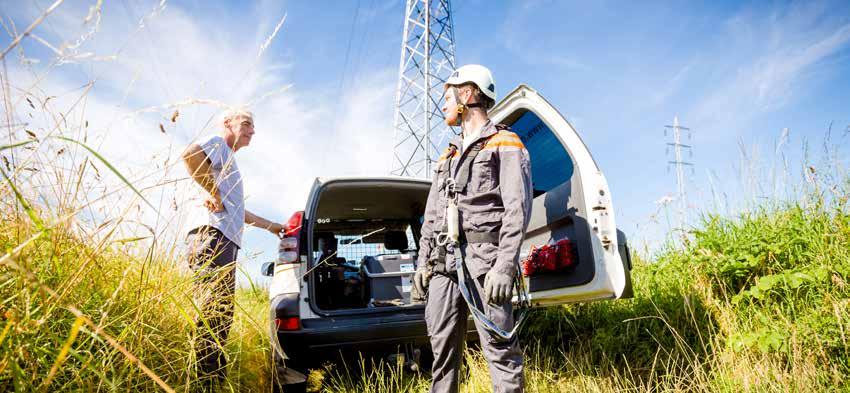
Electrical energy cannot be stored in large quantities. A balance must always be struck between supply and demand. In order to ensure a reliable power supply and efficient operational management of the medium- and high-voltage grid, Elia controls the electricity system in real time, which requires sophisticated tools and processes and a wealth of specialist knowledge. However, the sharp rise in renewable generation sources, the emergence of new market players and the trend towards greater supranational coordination all make managing the electricity system an increasingly complex task.
FACILITATING THE MARKET
The Elia Group makes its infrastructure available to all market players in a transparent, non-discriminatory way and develops new products and mechanisms to enable the market to trade through a variety of platforms. This promotes economic competitiveness and enhances the well-being of every player on the market.
MANAGING THE INFRASTRUCTURE
Elia maintains and develops its high-voltage infrastructure with society’s interests at heart. This infrastructure enables it to incorporate ever-greater quantities of renewable energy. Elia adopts innovative technologies to boost the efficiency and reliability of its electricity system. Any changes to the grid are made in consultation with all of the relevant stakeholders. Elia manages its infrastructure in a costefficient way, with an unremitting focus on safety.
ENERGY BALANCE (IN GWh
VISION
FACTS & FIGURES 2016 BELGIUM INSTALLED PRODUCTION 20,631 MW 2,292 wind 3,082 solar 1,136 biomass + incineration 122 hydroelectric power stations 5,926 nuclear 6,546 gas 1,308 pumped-storage power stations 219 others France 4,794.9 Luxembourg 0.7 Netherlands 9,854.4 Injection from ACHs 61,640.1 Production locally consumed 10,107.4 Injection from DSOs 1,120.3 TOTAL 72,867.8 France 5,235.9 Luxembourg 309.6 Netherlands 2,921.2 Direct clients 28,684.7 Distribution 48,980.9 TOTAL 77,665.6 IMPORTS NET PRODUCTION EXPORTS CONSUMPTION EVOLUTION OF THE CONSUMPTION PER MONTH 8.00 7.00 6.00 5.00 4.00 3.00 2.00 1.00 0.00 25 20 15 10 5 0 C° TWh/month Jan. Feb. Mar. April May June July Aug. Sept. Oct. Nov. Dec. Energy 2016 (TWh) Energy 2015 (TWh) 2016 (temp.°C) 2015 (temp.°C) Jan. Feb. March April May June July Aug. Sept. Oct. Nov. Dec. PHYSICAL EXCHANGES AT THE BORDERS Netherlands France Luxembourg Net Position 6,183.3 NET IMPORTS -2,000.00 -1,500.00 -1,000.00 -500.00 0.00 500.00 1,000.00 1,500.00
01 0402 0503 06
CONTENTS
FOREWORD BY THE CHAIRPERSON OF THE BOARD OF DIRECTORS* 2 INTERVIEW WITH THE CEO* 4 KEY FIGURES 2016 6
ELIA IN 2016 8 50HERTZ IN 2016 10 ABOUT THE ELIA GROUP* 12 ELIA GRID INTERNATIONAL 13 THE ENERGY TRANSITION 14
01 02 03 04 05 06
WE ENSURE A SECURE, RELIABLE AND EFFICIENT GRID* 16
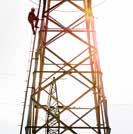

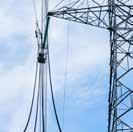
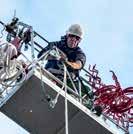
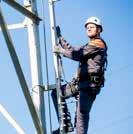
WE DELIVER THE TRANSMISSION INFRASTRUCTURE FOR THE FUTURE* 24
WE DEVELOP THE SYSTEM AND MARKETS* 32

WE COOPERATE TO STRENGTHEN OUR TSO POSITION* 38
WE ALIGN CULTURE WITH STRATEGY* 48
WE HAVE OUR EYES WIDE OPEN FOR INNOVATION & GROWTH OPPORTUNITIES* 54
CORPORATE GOVERNANCE STATEMENT* 60 Composition of the management bodies as at 31 December 2016 61 Remuneration report 68
Features of the internal control and risk management systems 72 Risks and uncertainties facing the company 75
THE ELIA SHARE IN 2016 80 MANAGEMENT DISCUSSION AND ANALYSIS OF THE 2016 RESULTS* 82
CONSOLIDATED FINANCIAL STATEMENTS* 86
Consolidated statement of profit or loss 86 Consolidated statement of profit or loss and comprehensive income 87
Consolidated statement of financial position* 88 Consolidated statement of changes in equity 89
Consolidated statement of cash flows* 90
REPORTING PARAMETERS 91 FACTS & FIGURES 2016 93
* These chapters form the annual report cf. article 119 of the Belgian company code.
1
FOREWORD BY THE CHAIRPERSON OF THE BOARD OF DIRECTORS
THE ENERGY SECTOR IS ON THE CUSP OF MAJOR CHANGES AND CHALLENGES. THE RISE OF DECENTRALISED ENERGY GENERATION, INCREASING DIGITISATION AND EMERGENT TECHNICAL INNOVATIONS ARE TRANSFORMING OUR SECTOR. WE, THE BOARD OF DIRECTORS, ARE FOLLOWING THESE DEVELOPMENTS CLOSELY.
In 2016, the fast-changing environment in which Elia conducts its activities as a transmission sys tem operator prompted us to devise a more tar geted strategy, while remaining fully committed to delivering a reliable, affordable, low-carbon elec tricity system. A number of interesting future sce narios were developed at both Elia in Belgium and 50Hertz in Germany.
If European climate targets are to be met, the meas ures taken will need to include the further electrifica tion of our society. This raises a lot of questions. For instance, what impact are changing transport trends having on the electricity grid and how are Elia and 50Hertz responding? How can a grid integrate mil lions of prosumers – customers who produce elec tricity, as well as consuming it? How can we guar antee security of supply at all times when a growing share of our energy mix is made up of intermittent renewable generation sources? By way of illustra tion, the share of renewables in the energy mix of our German subsidiary, 50Hertz, averaged as much as 50% in 2016 – a world record!
INCREASING COMPLEXITY AND GREATER DECENTRALISATION
“Increasing decen tralisation has put the transmission system operator in the per fect position to keep track of an ever more fragmented energy supply chain.”
European energy and climate regulations have trig gered a sharp rise in the share of renewable energy and decentralised energy generation. Due to the spread of digitisation and the emergence of new technologies and business models, end consumers – be they households, companies or industrial sites – are gradually taking on a more central role in energy supply.
Electricity transmission is evolving into a two-way flow, where both supply and, increasingly, demand can be controlled. As such, managing the distribu tion and transmission systems is now more complex than ever before.
Among the many new needs resulting from the energy transition is the requirement for even more flexibility. Custom digital platforms have been devel oped to allow new market players to offer flexible capacity, while Elia facilitates demand-side man agement and concentrates its efforts on the impact of digitisation on the energy system and energy markets.
INVESTING IN INFRASTRUCTURE AND INNOVATION
Electricity remains a physical business, where elec trons are sent through a cable. As long as this con nection with centralised and decentralised genera tion units remains, there will always be an important role for energy transmission.
There is also a clear need for additional intercon nections so that Elia can quickly access the cheap est renewable energy from throughout Europe and maintain security of supply. In so doing, Elia contrib utes to the competitiveness and sustainability of our economy.
These three aims – security of supply, afforda ble energy prices, and sustainable supply of lowcarbon electricity – are reflected in Elia’s broad investment programme, which includes new or upgraded on- and offshore interconnections between Belgium and the United Kingdom, Belgium and Germany and Belgium and the Netherlands.
50Hertz is undertaking an equally ambitious grid enhancement programme, which revolves around integrating large volumes of on- and offshore wind energy and upgrading north-south transmission connections.
At the same time, we are looking into ways to incor porate technical innovations like energy storage and thinking about data management solutions.
CLOSER COOPERATION AND COORDINATION
This past winter, power generation from nuclear sources in France hit a historic low, leaving the country especially vulnerable to cold spells. This situation served to highlight, once more, the vital importance of international cooperation. How can we work together to ensure that prices in the euro zone remain low and the lights stay on?
In recent years, Elia has made a substantial contri bution to developing advanced methods of optimis ing cross-border interconnection capacity. We can no longer view Belgium as an isolated country. This clear commitment to European cooperation is also reflected in our German subsidiary, 50Hertz. Thanks to the international dimension of our activities, com bined with our extremely ambitious investment pro gramme, we are working more closely than ever before with neighbouring countries and their system operators.
NEED FOR A POLICY THAT PROVIDES SOLUTIONS
In view of all the changes that are heading our way, we need a policy that provides optimal solutions to steer the energy transition in the right direction. How can everything be regulated? Who is going to man age the entire chain? Who will be responsible for data management and intellectual property?
In November 2016, the European Commission pub lished the Clean Energy for All Europeans package, in which it calls for a comprehensive shake-up of the energy market. Europe intends to adapt exist
ing regulations to the energy transition. As chal lenging as some of the Commission’s operational proposals may be, we fully support its pursuit of a European Energy Union. We are actively involved in these efforts and will follow future developments with interest.
The role of Elia and 50Hertz will doubtless change in future, but I see major opportunities for both compa nies. After all, the increasing decentralisation of the electricity market has put the transmission system operator in the perfect position to keep track of an ever more fragmented energy supply chain and pro actively contribute to an efficient, integrated energy market.
THANK YOU
As Chairperson of the Board of Directors, would like to offer my sincere thanks to the entire staff of Elia and 50Hertz for their unwavering commitment and their admirable professionalism. Thanks too, to my colleagues on the Board of Directors – including the two new directors who joined in 2016, Peter Vanvelthoven and Michel Allé – for their valuable support and their dedication.
Finally, the Elia Group would like to thank its cus tomers, its shareholders, the federal and regional regulators and the regional, federal and European authorities.
Sincerely, Miriam Maes Chairperson of the Board of Directors of the Elia Group
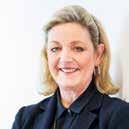
“Electricity transmission is evolving into a twoway flow, where both supply and demand can be controlled. The energy transition has created a need for additional flexibility.”
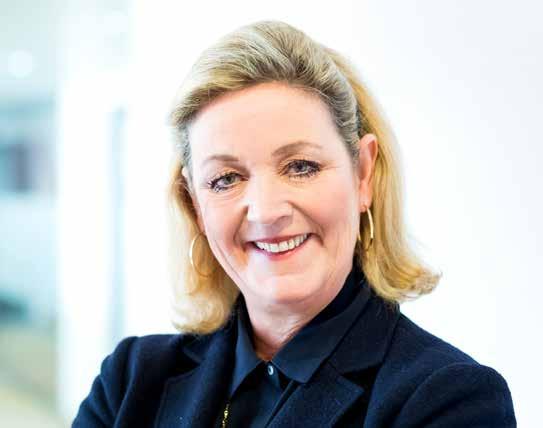 FOREWORD BY
Miriam Maes
Chairperson of the Board of Directors of the Elia Group
FOREWORD BY
Miriam Maes
Chairperson of the Board of Directors of the Elia Group
2 3 ANNUAL REPORT 2016
THE CHAIRPERSON OF THE BOARD OF DIRECTORS
INTERVIEW WITH CHRIS PEETERS CEO OF THE ELIA GROUP

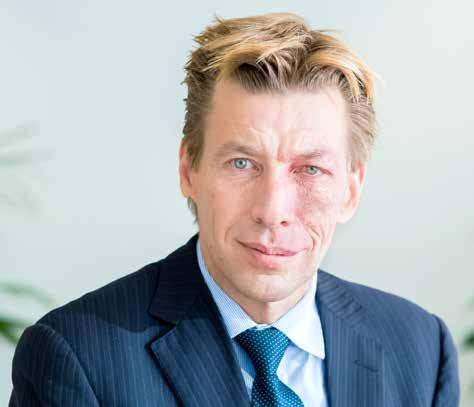
IN 2016 ELIA CLOSELY EXAMINED TRENDS AND DEVELOPMENTS IN THE ENERGY SECTOR, AS WELL AS THE STRATEGIC COURSE THE COMPANY WILL FOLLOW IN ORDER TO OPTIMALLY ANTICIPATE THE IMPACT OF THE ENERGY TRANSITION. IN A RAPIDLY CHANGING CONTEXT ELIA SEES A FUNDAMENTAL ROLE FOR THE TRANSMISSION SYSTEM OPERATOR IN DEVELOPING AND ENHANCING INFRASTRUCTURE, OPERATING THE ELECTRICITY SYSTEM AND FACILITATING AN EVOLVING MARKET.
WHAT DOES WORKING ON THE SOCIAL INTEREST LOOK LIKE IN PRACTICE?
Chris Peeters – Security of supply is a condition for a prosperous society. We are aiming for a reli able, sustainable and affordable energy system. Developing our grid infrastructure is critically impor tant to this goal.
WHAT OPPORTUNITIES CAN THE ENERGY TRANSITION OFFER?
“We ensure that every market player has transparent, nondiscriminatory access to the grid. In other words, we are not only shaping the infra structure, we are also developing the system of tomorrow.”
IN WHAT WAY HAS ELIA’S STRATEGIC COURSE BEEN ALTERED?
Chris Peeters, CEO Elia – We not only analysed market events, but we also examined our social role. As the transmission system operator we are at the heart of the transition. Our activities influence the country’s socio-economic prosperity. As a result, we made two important changes of emphasis to our mission: the social interest and safety. This is reflected in our new strategy structured around six domains.
WHAT ARE THE SIX DOMAINS?
Chris Peeters – The first three cover our core busi ness: operating the electricity system, maintaining and developing infrastructure, and market facilita tion. There is also an additional focus on coopera tion and dialogue in order to strengthen our position as a system operator. This involves, among other things, improved stakeholder management and better alignment and coordination with the vari ous market parties and system operators at both national and European level. Lastly, we are keeping an eye out for new innovations and developments that could influence the energy landscape in general and our role as system operator in particular. To suc cessfully deploy this strategy, we’ve defined new val ues to help steer a cultural shift within Elia.
How this development happens is something we will decide in alignment with our many stakeholders after a thorough analysis of needs. For instance, in 2016 Elia conducted an extensive study commis sioned by Federal Energy Minister Marie-Christine Marghem on the need for adequacy and flexibil ity in the Belgian electricity system 2017-2027. If we correctly anticipate trends, we can resolve the energy trilemma in one or two generations: plenty of affordable, sustainable energy for everyone. And that means Europe would not be dependent on the rest of the world for its energy supply.
WHAT IMPACT WILL THE ENERGY TRANSITION HAVE ON THE TRANSMISSION SYSTEM?
Chris Peeters – In the light of ongoing decentral isation, the rapid growth of renewable energy and rising supranational cooperation, we see a need for long-distance transmission and international inter connections. There is also a need for more flexible balancing products in order to improve the reliabil ity of the system. Elia is working towards a market platform that promotes competitiveness. We will continue to ensure that all market parties are able to take part and that they have transparent, non-dis criminatory access to the grid. In other words, we’re not only shaping the infrastructure, we are also developing the system of tomorrow. The mar ket coupling initiatives in the Central-West Europe region show that the transmission system operators are working constantly to facilitate market operation internationally too.
Chris Peeters – Our infrastructure enjoys a major benefit: Belgium lies at the crossroads between France, the Netherlands, Germany and the UK. For the Belgian market this offers opportunities in terms of security of supply and exports. As a crossroads in the heart of Western Europe we can attract invest ments in flexible electricity generation, provided we are able to continue enhancing our network, not only at border crossings but also within the country. The Elia grid is quite old, yet reliability requirements are continually rising.
WHAT CHANGES ARE WE SEEING IN ELIA’S INVESTMENT PROGRAMME?
Chris Peeters – Over the next five years, Elia Group will invest €5 billion in grid enhancements. Belgium saw major progress in 2016 with the Brabo project (phase 1) and the Boucle de l’Est project. The Stevin project is on track. Construction work began on the Nemo Link, Elia’s first DC interconnec tor with the UK. In addition, the first contracts were signed to build ALEGrO, the interconnector with Germany. Our colleagues at 50Hertz have also been deploying their ambitious investment plan year after year.
HOW DOES ELIA KEEP ALL THESE INVESTMENTS UNDER CONTROL?
Chris Peeters – That is why we launched the Infrastructure 3.0 project in 2016. Not only will it be a benchmark for managing infrastructure pro jects, it will also take a social approach that enables public acceptance of our investments. This kind of approach requires a different way of working. And let’s not forget the greater focus on safety. Everyone who works at or for Elia must be fully aware of just how important safety is. Working with high voltages is still a dangerous business.
MEANWHILE, HOW ARE THINGS GOING WITH ELIA GRID INTERNATIONAL (EGI), THE CONSULTANCY FIRM JOINTLY OWNED BY ELIA AND 50HERTZ?
Chris Peeters – With Elia Grid International we are very much continuing to capitalise on the renewable energy expertise we have amassed in Germany and our experience with cross-border electricity connec tions in Belgium. We have narrowed our focus to concentrate on consulting for other system oper ators in Europe, the Middle East and Asia. EGI is important for developing our talent. We give our top performers the chance to work in an international environment. They bring this expertise back and integrate it into Elia Group. After all, even consultants continue to learn.
LOOKING BACK AT 2016, WHAT COMES TO MIND?
Chris Peeters – I was yet again utterly delighted by the passion and expertise shown by our teams and how much the Elia Group is valued on the international energy market. Thanks to our thor ough market analysis and updated strategy am looking forward to the future with every confidence. We analysed our ideas with various market players via personal discussions and external events, such as the Users’ Group and our annual Stakeholders’ Day. Our partners are now more aware of what Elia stands for. We will continue this approach based on dialogue and solid cooperation in 2017.
“If we correctly anticipate trends, we can resolve the energy trilemma in one or two generations: plenty of affordable, sustainable energy for everyone. And that means Europe would not be depen dent on the rest of the world for its energy supply.”
INTERVIEW
Chris Peeters CEO of the Elia Group
4 5 ANNUAL REPORT 2016
WITH CHRIS PEETERS CEO OF THE ELIA GROUP
6 7 ANNUAL REPORT 2016 KEY FIGURES 2016 KEY FIGURES 2016 ELIA GROUP 168.0 Mio€ NORMALISED NET PROFIT 30,000,000 RESIDENTS COVERED 6 INTERCONNECTIONS 143,000 Km2 COVERED 18,400 Km HIGH-VOLTAGE LINES IN BELGIUM AND IN GERMANY 35,000 MW INSTALLED CAPACITY OF RENEWABLE ENERGY 2,100 EMPLOYEES 26 NATIONALITIES FINANCIAL OPERATIONAL 1.58 €/share DIVIDEND 3.2 % DIVIDEND YIELD (CLOSING PRICE 2016) 2,557.3 Mio€ NET DEBT 41 % GERMANY (50HERTZ) 59 % BELGIUM CONTRIBUTION TO NORMALISED RESULTS INVESTMENTS 440 MIO€ BELGIUM 737 MIO€ GERMANY (50HERTZ) CROSS BORDER EXCHANGES BELGIUM CROSS BORDER EXCHANGES 50HERTZ FRANCE LUXEMBOURG POLAND CZECH REPUBLIC NETHERLANDS DENMARK GERMANY 9.85 TWH 1.8 TWH 2.9 TWH 1.7 TWH 36.1 TWH 10.1 TWH 5.2 TWH 0.3 TWH 8.8 TWH 6.1 TWH 4.8 TWH 0 TWH 0.015 TWH 0.191 TWH
ELIA IN 2016
STUDY ON ADEQUACY AND THE NEED FOR FLEXIBILITY IN THE ELECTRICITY SYSTEM
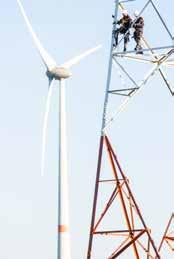
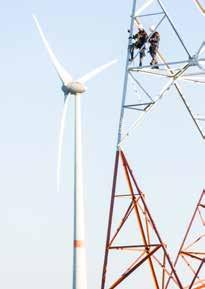
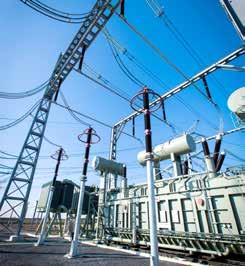
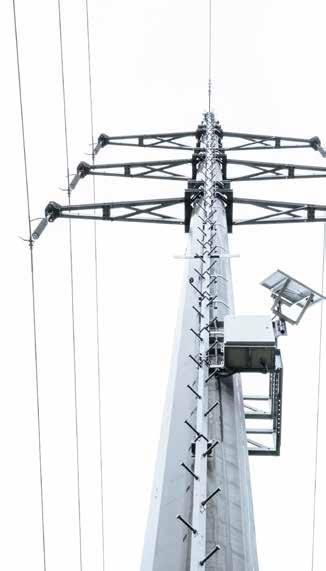
ALEG r O
CONTRACTS FOR THE ALEGRO PROJECT
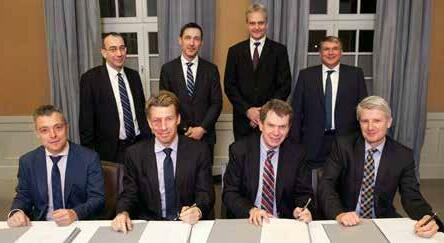
15 YEARS
ELIA CELEBRATES ITS 15 TH BIRTHDAY

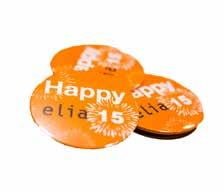
Elia was founded on 28 June 2001 and celebrated its 15th birthday in 2016.
VISIT BY KING PHILIPPE
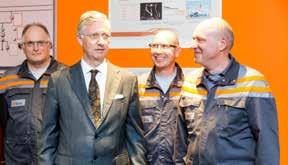
Period 2017-2027
In April, King Philippe visited Elia’s National Control Centre in Brussels. The Federal Minister of Energy, Marie-Christine Marghem, was also present.
APRIL 2016
At the request of the Minister of Energy, Elia carried out a study to assess the balance between power generation and power consumption, and it evaluated the need for flexibility in the electricity system. This study, which covers the period from 2017 to 2027, is essentially a quantitative assess ment of these considerations and examines Belgium within the wider context of the European market.
OFFICIAL INAUGURATION OF THE CRÉALYS SITE
On 23 May 2016, the European Commission’s DG Environment selected the LIFE Elia-RTE project as the win ner of the Natura 2000 Award in the ‘Reconciling interests/ perceptions’ category. The very next day, the LIFE EliaRTE project also picked up one of the two Sustainable Partnerships’ prizes awarded by The Shift, the one-stop shop for sustainable develop ment in Belgium.

Elia’s new Créalys site, near Namur, was officially inaugurated on 19 April with an event attended by the Walloon Minister of Energy Paul Furlan. The facilities housed by the new building include the Regional Control Centre. The new site was designed with a clear focus on being as envi ronmentally friendly as possible.
NEW STRATEGY, NEW VALUES
Elia’s CEO, Chris Peeters, unveiled Elia’s new strategy, mission and values in September. These were the result of in-depth discus sions and set out the company’s strategic choices and chosen path for the years to come.
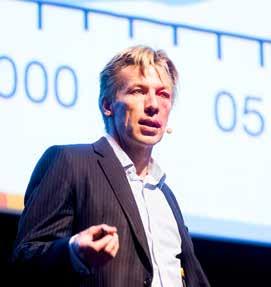
FIRST TRADES ON THE INTRADAY PLATFORM
The Belgian and Dutch intraday mar kets were successfully coupled to the German, French, Austrian and Swiss intraday markets on 5 October 2016.
BOUCLE DE L’EST
FIRST STAGE COMPLETE
On 6 December, Stage 1 of the Boucle de l’Est project was completed on schedule with the commissioning of the line linking Bévercé, Bütgenbach and Amel. In time, this upgrade project will enable the grid to accommodate the renewable energy pro duced in the region while also helping to boost the security of its electricity supply.
BRABO
PHASE 1 OF THE BRABO PROJECT COMPLETE
Elia completed Phase 1 of the Brabo pro ject in late October. This entailed upgrad ing the second high-voltage line between Doel and Zandvliet and commissioning an additional phase-shifting transformer on the Dutch border. The Brabo project aims to bolster Belgium’s security of supply.
On 29 September, Amprion and Elia signed a contract with Silec Cable for the delivery of the cable system for the ALEGrO project. The two system operators also concluded a contract with Siemens on 29 November, for the delivery of the two high-voltage direct-current (HVDC) converter stations for the first electricity interconnection between Germany and Belgium.
STUDY REGARDING THE ‘ADEQUACY’ AND FLEXIBILITY NEEDS OF THE BELGIAN POWER SYSTEM
8 9 ANNUAL REPORT 2016 ELIA IN 2016
TWO AWARDS FOR OUR LIFE PROJECT
50HERTZ IN 2016
COMMISSIONING OF THE FIRST FOUR PHASE-SHIFTING TRANSFORMERS ON THE GERMAN-POLISH BORDER

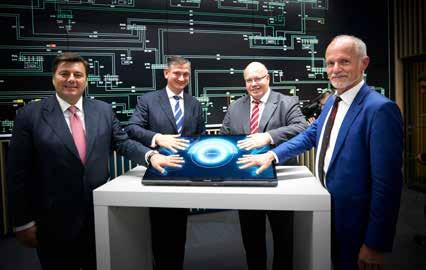
ENERGY TRANSITION OUTLOOK 2035
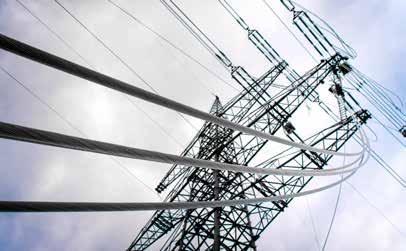
50Hertz took a look into the future with a study on the energy tran sition between now and 2035. The study sketched out five devel opment pathways in the form of long-term scenarios and analysed their impact on the electricity grid. The results clearly indicated that 50Hertz’s current grid expansion projects were necessary for practi cally all of the scenarios and sensitivities studied, and that they were therefore justified.
In June, Polish transmission system operator PSE success fully commissioned the first four phase-shifting transformers on the German-Polish border at Mikulowa substation. The northern interconnection between Vierraden and Krajnik was taken out of service at the same time. The line is due to be recommissioned by 2018.
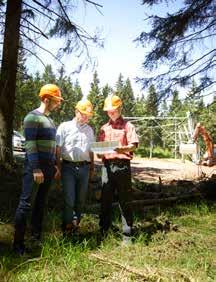
ANDALUCIA IN THE BALTIC SEA
The offshore substation for the Wikinger offshore wind farm was installed in the Baltic Sea in August. The platform, which was built in Spain and bears the name ‘Andalucía’, is intended for shared use by 50Hertz and Spanish energy group Iberdrola. It is located in the Baltic Sea, 35 kilometres from Sassnitz. Back on dry land, work on the Ostwind 1 offshore grid connection project continued to progress.
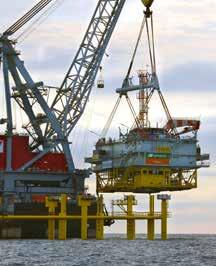
WIND POWER RECORD FOR 50HERTZ
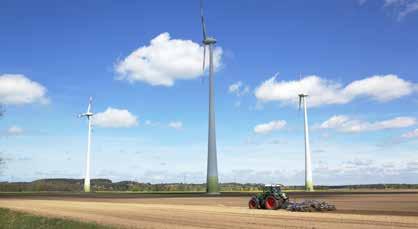
1 December saw transmission system operator 50Hertz feed some 13,212 megawatts (MW) of wind power into its grid, exceeding the 13,000 MW threshold for the very first time. The new record, which was made possible by Storm Theresa, was set at around 9.00 p.m. The previous record for the 50Hertz grid dated back to 21 December 2015, when the feed-in reached a height of 12,832 MW.
50HERTZ OBTAINS HIGH SUSTAINABLE DEVELOPMENT RATING

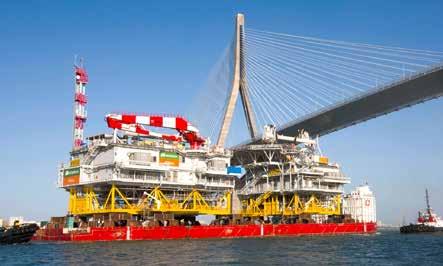
FROM VIGEO EIRIS
In November 2016, 50Hertz received a ‘robust’ Environment, Social and Corporate Governance (ESG) rating from Vigeo Eiris and is now placed in the upper-middle range in the ‘Electricity & Gas Utilities’ category. The company thus doubled its scores and entered the second-highest assessment category.
In September, 650 50Hertz employees moved into their offices at the company’s new headquarters in Berlin. The building’s open-plan office design was chosen by means of a participatory process conducted within the company. In October, the new headquarters received two awards in recog nition of its sustainability. DGNB (the German Sustainable Building Council) and LEED (Leadership in Energy and Environmental Design) each presented 50Hertz with gold sustainable development certificates for the new building.
 50HERTZ’S NEW HEADQUARTERS OPENS ITS DOORS
Since 6 October, transmission system operator 50Hertz has had a second control centre at its headquarters in central Berlin.
50HERTZ’S NEW HEADQUARTERS OPENS ITS DOORS
Since 6 October, transmission system operator 50Hertz has had a second control centre at its headquarters in central Berlin.
10 11 ANNUAL REPORT 2016
50HERTZ IN 2016
ABOUT THE ELIA GROUP ELIA GRID INTERNATIONAL
A CENTRAL POSITION IN THE EUROPEAN ELECTRICITY SYSTEM
The Elia Group is organised around two transmis sion system operators (TSOs): Elia in Belgium and 50Hertz (a joint venture with IFM Investors), one of four German transmission system operators, which is active in the north and east of Germany.
The Elia Group manages some 18,400 km of lines and cables, which carry electricity from pro ducers to distribution system operators and large industrial consumers. Elia and 50Hertz’s meshed transmission grid supplies power to 30 million end users, making the Elia Group one of Europe’s top five players and a real driving force behind the fur ther integration of the European electricity market through its development of interconnections, and its range of international market products for elec tricity trading.
In addition to its activities as a transmission system operator, the Elia Group has offered consultancy services to other system operators on the inter national energy market since 2014. This activity is conducted through Elia Grid International (EGI), a full subsidiary (50/50) of Elia and 50Hertz. See page 13.
POSITIVE IMPACT ON PEOPLE AND THE ENVIRONMENT
As regulated companies, Elia and 50Hertz have an important social task to perform. Electricity is a pre requisite for a prosperous society, and stimulates economic growth.
Through the increasing integration of renewable energy into its grid, the Elia Group makes a positive contribution to the environment and to achieving regional, federal and European climate targets. The Group is investing in the electricity grid of tomorrow and implements technological innovations in a bid to boost the efficiency and reliability of its system.
EGI has won a number of awards and is delivering multiple new projects linked to its TSO-based expertise for interna tional customers in countries including Cameroon, Rwanda, Turkey and Kosovo.
STRONG GROWTH
Elia Grid International (EGI) provides services in asset management, power system operations and security, system and market operations, owner’s engineering, and investment advisory not only to international clients in the power grid sector, but also to the Elia Group.
HUB IN DUBAI
The rapid development of activities in the Middle East led to the establishment of a hub in Dubai in 2015. Today, this hub enables EGI to establish a presence close to existing and potential customers and also to deliver projects more efficiently.
There are currently two major, multi-year TSO con sulting projects underway in the Middle East. One is a large project to enable a regional TSO to optimise its performance in sustainable asset management, while the other started in 2015 and focuses on streamlining and developing a TSO’s grid-planning activities.
In 2016, EGI developed a business game that simulates the effects of a state-of-the-art asset management system on the overall perfor mance of a TSO. The game aims to highlight, in an interactive way, the benefits of implementing “Technical Asset Management” (TAM) as a core activity.
HOLDS LICENCES FOR THE 380 KV TO 150 KV NATIONAL TRANSMISSION GRID IN BELGIUM, AS WELL AS FOR THE 70 KV TO 30 KV GRIDS IN BELGIUM’S THREE REGIONS.
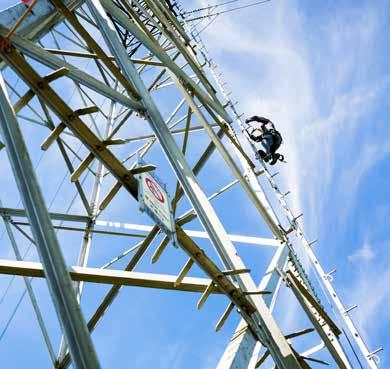
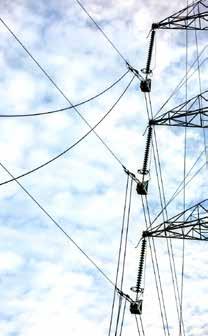
The Elia Group is constantly expanding its dia logue with stakeholders and keeps them informed throughout the entire duration of its projects. To minimise the impact of its facilities on the natural landscape, the Elia Group designs its new infra structure in consultation with bodies including envi ronmental agencies and forest management ser vices. Wherever possible, the Group builds its new high-voltage lines in existing corridors or bundles them with other infrastructure.
www.eliagroup.eu
ONE OF GERMANY’S FOUR TRANSMISSION SYSTEM OPERATORS, HAS ITS ACTIVITIES IN THE NORTH AND EAST OF THE COUNTRY. 50HERTZ IS JOINTLY OWNED BY ELIA (60%) AND INDUSTRY FUNDS MANAGEMENT (IFM) (40%).
IS A FULL SUBSIDIARY OF ELIA AND 50HERTZ. THE JOINT VENTURE WAS FOUNDED TO COMMERCIALISE THE ELIA GROUP’S EXPERTISE ON THE INTERNATIONAL ENERGY MARKET BY OFFERING CONSULTANCY SERVICES.
Elia System Operator is listed on the Brussels Stock Exchange and its core shareholder is the municipal holding company Publi-T.
MEMORANDUM OF UNDERSTANDING IN QATAR
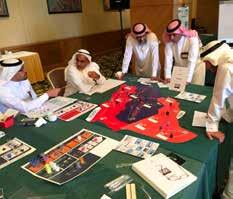
Initiated by EGI, the Elia Group signed a Memorandum of Understanding with the Qatar General Electricity and Water Corporation (KAHRAMAA) at the GCC Power Conference held in Doha, Qatar in November 2016. KAHRAMAA is the sole transmission and distribution system owner and operator for the electricity and water sector in the State of Qatar. The memorandum covers the general exchange of information on the electricity industry of each country, as well as the exchange of technology.
CONTRACTS IN BELGIUM & GERMANY
Another of EGI’s areas of expertise is the full range of owner’s engineering services. EGI is currently building new 380 kV/110 kV substations for 50Hertz and delivering multiple projects for grid customers in Belgium. The substations in Germany are needed to integrate the increasing level of wind-power capacity into 50Hertz’s control area. The first substation was successfully commissioned in December 2016 and has been fully operational since then. At the end of 2016, a new contract was concluded for the turnkey construction of a third substation, with work most likely beginning at the end of 2017.
ASSET MANAGEMENT BUSINESS GAME: A STRATEGIC TOOL FOR EGI
12 13 ANNUAL REPORT 2016 ABOUT THE ELIA GROUP ELIA GRID INTERNATIONAL
ELIA 50Hertz EGI
THE ENERGY TRANSITION
ELIA BELIEVES THAT THE TRANSMISSION SYSTEM OPERATOR HAS A FUNDAMENTAL ROLE TO PLAY IN THIS RAPIDLY CHANGING ENVIRONMENT. ELIA TAKES AN INNOVATIVE APPROACH TO SYSTEM MANAGEMENT AND DEVELOPS MARKET MECHANISMS AND PRODUCTS TO ENABLE OPTIMAL INTEGRATION OF RENEWABLE ENERGY AND DECENTRALISED GENERATION. ELIA IS EXPANDING AND ENHANCING ITS INFRASTRUCTURE, BOTH WITHIN BELGIUM AND INTERNATIONALLY. ELIA ASPIRES TO BE A CATALYST FOR THE ENERGY TRANSITION AND ULTIMATELY STRIVES TO PROVIDE A RELIABLE, SUSTAINABLE AND AFFORDABLE ENERGY SYSTEM.
TODAY
http://bit.ly/InnovationIntro
YESTERDAY
Centralised generation units running on fossil fuel are a stable, predictable energy source. Energy is chan nelled from centralised generation plants to decen tralised consumption centres through the trans mission and distribution grid. There is hardly any renewable energy. Consumers consume energy and play a passive role in the electricity system.
Electricity is evolving into a two-way flow. Generation facilities are changing. Renewable generation is gaining ground. Generation is becoming more decentralised. Gas-fired power stations are closing because they are not profitable. Consumers are becoming prosum ers thanks, among other things, to the advent of solar panels. Electric cars and heat pumps have come onto the scene. The energy world is undergoing a funda mental change, which brings new challenges with it. Balancing generation and demand is an increasingly complex task. New players and new technologies are emerging.
TOMORROW
The rise of decentralised energy generation, increasing digitisation and emer gent technical innovations are transforming our sector. Thanks to smart meters and new business models, consumers are increasingly active. They are gen erating more energy and storing some of it. Keeping the electricity system balanced is even more complex than before, but innovation and digital tech nologies ensure security of supply. The electricity system is increasingly being managed in an international context as there are more interconnections.
14 15 ANNUAL REPORT 2016 THE ENERGY TRANSITION
DISCOVER OUR VIDEO ON THE ENERGY TRANSITION
Elia has years of experience in managing its transmission grid and has built up indis putable technical expertise. However, the ever-changing backdrop of the energy transi tion, characterised by more volatile generation and the need for flexible balancing products, means that system management is an increasingly complex task.

At the same time, Elia is faced with an ageing infrastructure. With that in mind, a sophisticated asset management strategy has been put in place to monitor the functioning of critical infrastructure components and new working methods have been introduced for the efficient management of midlife retrofits. A balanced asset replacement policy needs to stagger investments so as to smooth out ‘peaks’ in expenditure and avoid the boom-or-bust scenar ios of the past (historical peak in investment follow ing the Second World War, connection of gas-fired and nuclear power stations, integration of renewable sources, and so on). Since working methods are evolving, staff need training to help them develop the requisite skills and techniques. Elia provides profes sional training courses for both its own staff and its contractors.
Safety is an absolute priority in Elia’s management of its grid, alongside the continuous pursuit of oper ational excellence. Elia is working towards a zero accident rate through the Go for Zero programme. We expect our staff and our subcontractors to work safely, healthily and carefully.
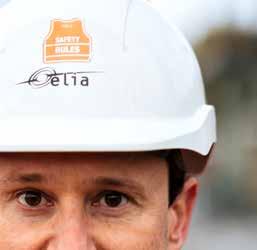
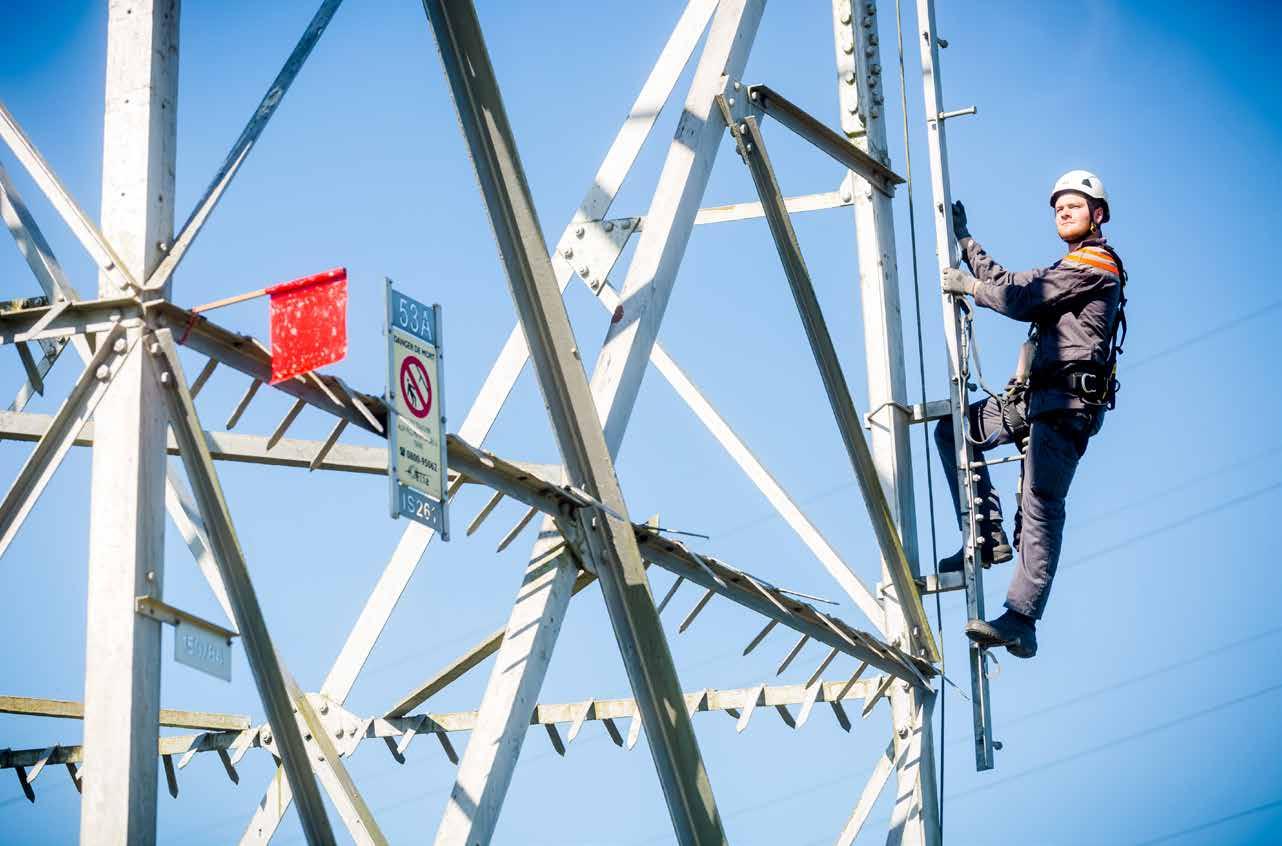
WE RESPOND TO THE RAPIDLY CHANGING ENERGY MIX AND CONSTANTLY ADAPT OUR TRANSMISSION GRID, THUS CONTRIBUTING FULLY TO MAINTAINING THE HIGH LEVEL OF THE SECURITY OF SUPPLY.
Frédéric Dunon Chief Assets Officer at Elia
“Our infrastructure is getting older. As a result, we are reviewing our maintenance policies and need appropriate working methods and decision-making processes.”
01 16 17 WE ENSURE A SECURE, RELIABLE AND EFFICIENT GRID http://bit.ly/InnovationBalance DISCOVER OUR VIDEO ON BALANCING THE SYSTEM
OPERATIONAL EXCELLENCE
IMPROVING ASSET MANAGEMENT

Asset Management Excellence (AMEX) is a threeyear programme that was launched in early 2016 with a view to enabling Elia to gain a better under standing of its assets and thus make the right deci sions regarding the management of these assets throughout their service lives (e.g. design, main tenance, decommissioning) while optimising risks and costs. This requires a radical change in deci sion-making processes and the information Elia has on its assets.
Through the AMEX project, Elia devises appropriate strategies for each category of assets depending on their age, their condition and their importance for the grid. These customised strategies help Elia to unlock potential savings, boost asset reliability and optimise the need for outages, whilst continuing to prioritise safety. The methodology revision programme has been divided into five ‘waves’, each of which lasts approximately five to six months.
ELIA INSTALLS MORE AMPACIMON TECHNOLOGY

Elia is continuing to roll out the use of Dynamic Line Rating, a concept developed in partnership with Ampacimon. Elia has fitted Ampacimon sensors on the most critical lines on its grid.
These metering devices, designed primarily for realtime use, enable a more accurate assessment of the transmission capacity of equipped lines on which they are fitted. The capacity actually available for use can then be optimised based on the weather con ditions. When the ambient temperature is low and there is wind, the overhead lines are cooler and can transmit more electricity.
“In 2016, three more 380 kV lines were equipped with Ampacimon devices: the new Doel–Zandvliet line that was commissioned in 2016, and the Zandvliet–Geertruidenberg (NL) and Zandvliet–Borsele (NL) cross-border lines.” Victor Le Maire, Operational Planning Manager at Elia
Though Ampacimon technology had only ever been used in real time before, Elia took things one step further in December 2016 by integrating Ampacimon forecasts into Day-2 and Day-1 operational pro cesses. If those forecasts allow, the capacity of eight critical lines could potentially be boosted by 5% over their seasonal limits. If there is a cold spell, Elia may even be able to increase the potential gain to 10%.
NEW INTERFACE FOR ELIA’S CONTROL CENTRES
On 30 November 2015, a brand new ABB Energy Management System (EMS) went operational in all of Elia’s control centres after a seven-year project.
EMS is the tool used to manage Elia’s high-voltage grid. It gives Elia’s control centres a real-time insight into the condition/safety of the grid and allows them to control grid components remotely (e.g. opening a circuit breaker).
Elia’s first year of using EMS has been positive: the crucial tools remained highly available and met all of Elia’s functional expectations.
In early October 2016, Elia commissioned a new simulator (FAST-DTS) based on EMS. FAST-DTS trains dispatchers by simulating unusual grid scenar ios, to which they must respond appropriately, in an environment similar to EMS.
RENOVATIONS AT THE NATIONAL CONTROL CENTRE
Renovations are currently underway at Elia’s National Control Centre in Brussels. Work began in mid-2016 and is scheduled to end this summer.
One of Elia’s key aims with the renovation project is to heighten the visibility of renewable energy data and international data so that all the tools it needs to overcome the day-to-day challenges faced by system operators will be at its fingertips. This infor mation is particularly important against the current backdrop of the energy transition.
“An equipment upgrade at the National Control Centre was crucial for enabling us to tackle the challenges arising from the energy transition.” Jelle Boeckling, System Engineer at Elia

PREPARING FOR A CRISIS
Elia regularly holds crisis drills simulating risk situa tions with the various stakeholders as preparation for managing real problems on the grid.
On 18 and 19 October 2016, Elia joined forces with the National Crisis Centre and FPS Economy for the Eclips crisis drill. The office of the Ministers of Energy and the Economy, the office of the Minister of the Interior and Synergrid were also actively involved.
Elia has an Emergency line which can be installed quickly after inci dents involving tower failure and downfall. In March 2016, Elia orga nized a drill session on this (emergency) line. The intension was to pre pare our teams on the installation and dismantling of this line.
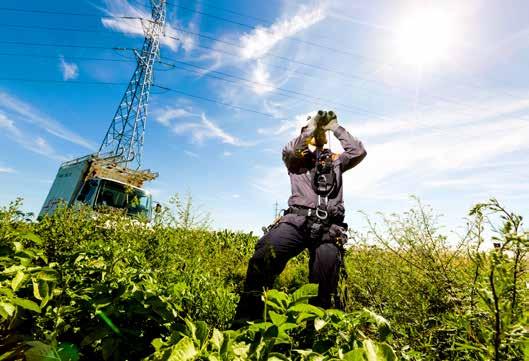
“Drills like this one have immense added value for our teams. Not long after the drill, the storms of 23 June 2016 brought down two pylons in Jodoigne. Our teams, assisted by Engie Fabricom, had no trouble studying, erecting and commissioning the backup line, which included four tempo rary pylons, in just 11 days.” Sam Roels, Project Leader at Elia
The scenario simulated the detection of a risk of a power shortage.
Elia held another drill on 24 November 2016. This time, its partners were Sibelga, the National Crisis Centre and FPS Economy and the drill simulated multiple incidents involving Elia’s infrastructure.
BLACK START SERVICE FOR COPING WITH BLACKOUTS
In the event of a total blackout on the grid, Elia needs to gradually restore the power supply in pre defined stages. If neighbouring electricity transmis sion grids are not available, Elia can rely on various generating units that are capable of performing a black start. These units can start without an external electricity supply, allowing the gradual restoration of power to the grid. This service is covered by a black start contract (black start being an ancillary service) between Elia and the power producers.
In 2016, Elia conducted two tests to ensure that this service was operating correctly. The first took place at Coo on 12 November and the second at Drogenbos power station on 3 December, and both were successful.
“On 13 April 2016, HM King Philippe of Belgium visited Elia to find out more about our work as the operator of the high-voltage elec tricity transmission system. During his visit, the King toured the National Control Centre in Brussels. The Federal Minister of Energy, Marie-Christine Marghem, was also present.” Filip Carton, National Control Centre Manager at Elia
HIS MAJESTY THE KING VISITS ELIA
“The first wave of the AMEX project, which focused on transformers and air insu lated substations, allowed us to release CAPEX investment gains and lower the workload in the field by assigning priority levels to activities.”
Stéphanie Hammer AMEX Manager at Elia
ORGANISING DRILLS WITH THE EMERGENCY LINE
18 19 01 ANNUAL REPORT 2016 WE ENSURE A SECURE, RELIABLE AND EFFICIENT GRID
ZERO TOLERANCE FOR ACCIDENTS
THE GO FOR ZERO SAFETY PROGRAMME
The safety of employees, contractors and project partners is an absolute priority for Elia. 2016 was very much characterised by a number of projects designed to enhance operational safety. Go for Zero is the name of an overarching programme, which comprises five safety improvement projects.

01 PEOPLE & TECHNICAL SKILLS
In an ever-changing world, everyone needs to hone their skills constantly and learn continuously. With that in mind, the People & Technical Skills pro ject aims to catalogue the technical skills within Elia then develop training paths to enhance the skills of Elia staff.
Bart De Jong Program Manager Go for Zero at Elia


“It is important for us that everyone returns home safe and sound. The risks inherent to our facilities and activities mean that safety and a target of zero accidents must be our top priority.”
SAFETY GOVERNANCE
GO FOR ZERO
OPERATIONAL & SAFETY EXCELLENCE
02
OPERATIONAL & SAFETY EXCELLENCE
Feedback, open dialogue and regular commu nication within and beyond teams are all absolutely vital if Elia’s ambitious targets on safety and oper ational quality are to be met. As such, this project has two pillars: operational dialogue and continuous improvement.
OPERATIONAL DIALOGUE entails implementing appropriate communication systems for ensuring that planned activities can be carried out safely, efficiently, punctually, and with the highest possible level of quality.
Julien Girs EEOperationalEE EEProject CoordinatorEE at Elia
MODERN WAY OF WORKING
SAFETY FOR CONTRACTORS
CONTINUOUS IMPROVEMENT on the other hand, entails researching and develop ing solutions to operational problems.
03
SAFETY FOR CONTRACTORS
Elia’s CAPEX investment plan will triple in the five years between 2015 and 2019. Currently, 500 to 800 subcontractor technicians are working on Elia projects to that end. Elia, in cooperation with its subcontractors, is striving to ensure that they too, have an optimal safe working environment and zero accidents. The pilot stage of Safety for Contractors ran in the second half of 2016, and analysis and general implementation are set to follow from 2017 onwards.
“My team’s safety is crucial. It is my responsibility. The site meetings organised within the framework of operational dialogue help us to understand the day-to-day activities of the other stakeholders at the substation.” Didier Deswert, Monnaie works supervisor
04 MODERN WAY OF WORKING
New technology also has a role to play in improving safety, quality and efficiency. The Modern Way of Working project, which launched in 2016, examined options for modernising work in the field through a series of pilot projects. After three proofs of concept, the decision was made to implement the solutions in early 2017. Among other things, the project studied the feasibility of giving field agents a 4G data connection so that they can access their documents and software from the field. It also tested new laptop types.
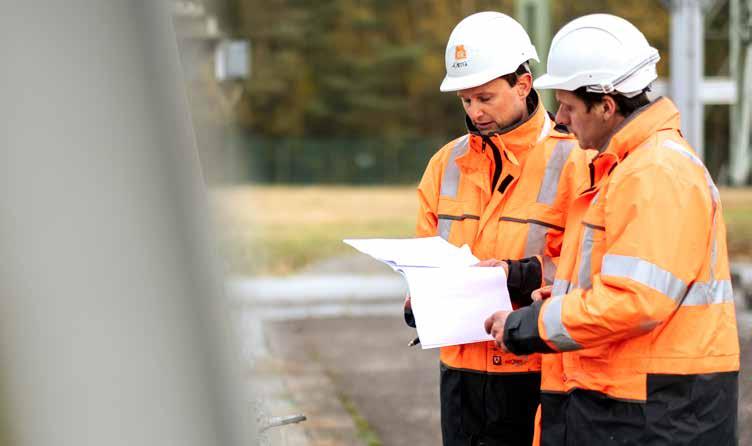
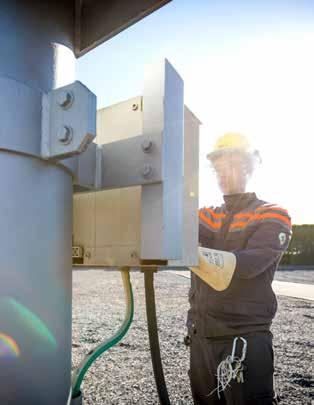
“I noticed that I was much more mobile thanks to the connectivity I got from the Modern Way of Working project. I did not need to go back to the office for anything – I could access everything I needed from where I was. The solution saves a lot of time and is a boon for safety too, since it means that many journeys can be avoided.”
05 QCM* & SAFETY GOVERNANCE
Elia is also working to improve its policies and working methods in terms of safety, quality and effi ciency. This involves revising certain procedures and methods (linked to safety) and using the Method, Training, Coaching, Review and Audit (MTCRA) approach to implement them.
*QCM = Quality, Competence & Methods
20 21 01
PEOPLE & TECHNICAL SKILLS 01
03
04 QCM &
05
02 ANNUAL REPORT 2016
WE ENSURE A SECURE, RELIABLE AND EFFICIENT GRID
SAFETY FIGURES FOR 2016
The safety of employees, staff working for external companies and, more broadly, the general public, is a priority for Elia. As before, our goal continues to be zero accidents or incidents.
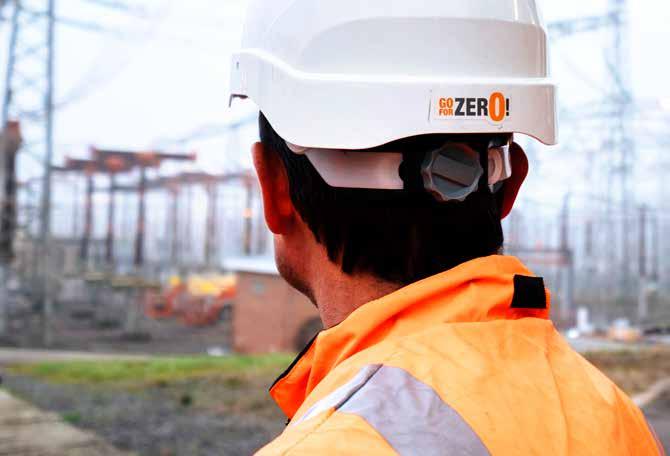
Elia’s safety results for 2016 are largely in line with the targets it set itself as a high-voltage electricity transmission system operator. In 2016, Elia recorded five accidents requiring time off work, leading to a total of 30 days off work due to incapacity. As such, the frequency rate was 2.7% and the severity rate was 0.02%.
However, one of Elia’s staff had an electricity-related accident, resulting in one day off work due to inca pacity. A fatal accident sadly claimed the life of one Elia employee on 24 February 2016: the victim was involved in a car accident.
Elia has been using the Total Recordable Injuries (TRI) rate as its reference indicator since 2016 in order to take account of all recorded accidents, whether or not they result in time off work. The TRI rate is a more comprehensive way of measuring events in relation to potential safety issues. It also counts accidents that do not result in time off work or require first aid.

In 2016, Elia’s TRI was 7, which is the best result it has achieved in the last 10 years.
SAFETY WEEK
Each year, Elia organises Safety Weeks for its staff in May and September in an effort to strengthen its staff’s safety culture and to raise their awareness about the importance of safety. The Safety Weeks focus on subjects such as strategic safety objectives and safety initiatives that have been adopted, like Go for Zero. The programme also includes exercises and brainstorming sessions, which are designed to ensure that participants have taken the messages on board.
In late 2016, Elia launched an awareness-raising cam paign targeting everyone who works near its electrical infrastructure.
“The number of incidents caused by these activities has almost doubled in the past two years. Contractors do not always seem to know how to report works near Elia’s instal lations. And yet it is their safety that is at stake. They must always contact Elia to find out what safety measures to take. A brochure on safety distances has been produced and is available on Elia’s website.” Danny Vanderhaeghen, Asset Support Manager at Elia

Safety is a priority for Elia
“Elia teams up with distribution system operators to enhance safety”

In2016, Elia endeavoured to make a broader public aware that safety is a priority: its staff, of course, through initiatives like operational dialogue (see page 21), but also contractors and its colleagues in the distribution sector.

After all, Elia shares a great many substations and, as such, a great many ‘workspaces’, with distribution system operators.
With that in mind, Elia teamed up with Ores and Eandis to enhance their joint safety. Although different approaches were adopted for each company, the overall aim remained the same, as did the three focal areas for cooperation: getting to know and understand one another; improving coordination and operational dialogue; and ensuring that roles and responsibilities were clearly defined for each substation.
“Eandis and Elia hope that intensifying our cooperation will enable us to continue improving the safety and professionalism of both companies’ employees. This is vital if we are to safely take our work as a system operator to another level whilst contending with the ever-greater complexity inherent in the energy transition.”
Wim Den Roover, Head of Grid Operations at Eandis

“Our companies have built up a close operational relationship, which enables us to go about our tasks with a better understanding of the situations and constraints each of us faces and, in turn, helps us to work more safely. Operational dialogue between our teams in a substation gives us a chance to carry out one last joint risk assessment before we begin our respective activities. Together, our companies have taken a major step in terms of safety.” Philippe Van Opdenbosch, Head of the Infrastructure Department at ORES
This operational cooperation with Eandis and Ores has created a positive dynamic between our companies and has brought real added value in terms of safety. Elia has adopted similar approaches for other Belgian distribution system operators and will continue to implement them in the coming years.
https://bit.ly/SafetyElia
Wim Den Roover Philippe Van Opdenbosch
22 23
ANNUAL REPORT 2016
DISCOVER OUR VIDEO ON SAFETY
AWARENESS-RAISING ABOUT WORK NEAR HIGH-VOLTAGE LINES FREQUENCY RATE (%) SEVERITY RATE (%) 2010 1.7 % 4.6 % 3.4 % 3.9 % 3.9 % 2.7 % 4.4 % 2011 2012 2013 2014 5 4 3 2 1 2015 2016 2010 0.01 % 0.02 % 0.26 % 0.06 % 0.04 % 2011 2012 2013 2014 0.30 0.25 0.20 0.15 0.10 0.05 0.00 2015 2016 0.06 % http://www.elia.be/en/safety-and-environment/ safety/keep-your-distance
Markus Berger Chief Infrastructure Officer at Elia

Elia is currently rolling out the biggest invest ment programme in its history. As well as covering replacements for existing facilities, the CAPEX programme mostly consists of investments intended to incorporate renew able energy into the grid and facilitate the further integration of the European energy market through interconnections.
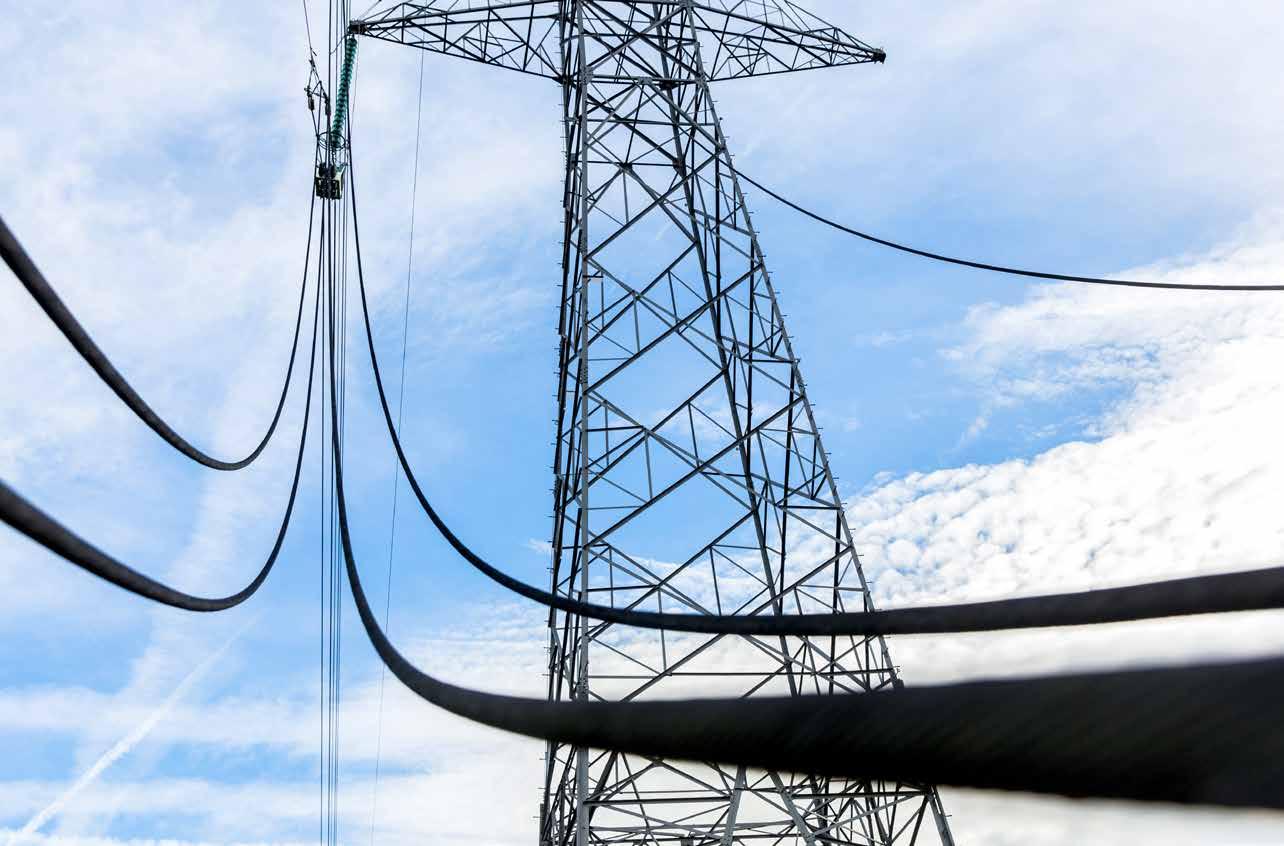
Elia uses specially tailored working methods and decision-making approaches, and closely monitors progress on its investment projects, thus ensuring compliance with the proposed budget, time and quality criteria.
At the same time, Elia is paying greater attention to the public acceptance of its infrastructure work. Its comprehensive stakeholder management scheme ensures that it has constructive, transparent con tact with all the relevant stakeholders throughout the decision-making process and during the implemen tation stage. Elia works with stakeholders wherever possible in order to bolster public support.
INFRASTRUCTURE 3.0
Elia’s ambitious investment plan, the complexity of its infrastructure projects and the regulatory context in which it operates were the three factors that drove Elia to reconsider its organisation and methods for infrastructure management.

“Optimum portfolio and project management is key to rolling out an ambitious investment policy.”
WE ENSURE THAT THE INVESTMENTS NEEDED FOR A PROGRESSIVE ENERGY TRANSITION ARE MADE ON TIME AND WITHIN BUDGET, LIVE UP TO THE APPLICABLE QUALITY STANDARDS AND CORRESPOND TO SOCIETY’S NEEDS AND CHOICES.
02 24 25
WE DELIVER THE TRANSMISSION INFRASTRUCTURE FOR THE FUTURE http://bit.ly/InfrastructureProjectsElia DISCOVER OUR VIDEO ON BELGIAN INFRASTRUCTURE PROJECTS
THE IMPORTANCE OF PUBLIC ACCEPTANCE
“Elia, as a regulated monopoly, receives its mandate from society. Putting society first in its decisions is thus essential for Elia to maintain its license to operate. In that respect, Elia consults its stakeholders at a very early stage before launching the realization of new infrastructure projects.” Ilse Tant, Chief Public Acceptance Officer at Elia
Elia has had a separate Public Acceptance Division within its management structure since 2016.
In order to unlock savings, the BOOST project thor oughly reviewed the conventional methods and pro cesses used to perform these activities by incorpo rating new approaches and ideas. BOOST ensured that purchases made mainly within the framework of projects are undertaken in a more efficient, less costly manner while maintaining equivalent levels of quality and safety.
“The initial results are very encouraging. In 2016, we saved over €10 million on the projects featured in the investment plan.” Elmo Van Thielen, Internal Consultant at Elia
STAGGERING REPLACEMENT NEEDS

The Infrastructure 3.0 project, which was rolled out in autumn 2016, was intended to help Elia become a benchmark for the management of infrastructure projects and implement a society-based approach to secure the general public’s acceptance – or even support – of our investments.
To that end, the roles and responsibilities and the overall structure of Elia’s organisation and jobs were completely overhauled. The new organisation is rooted in the company’s key strengths: the technical expertise of Elia’s staff, their perseverance, and their experience in project management.
Elia is also taking the opportunity to improve by intensifying its focus on results, enhancing its cross-functionality and cooperation, and establishing dialogue, from the very outset, with the internal and external stakeholders involved in our infrastructure projects.
LOWER COSTS FOR THE CAPEX PLAN
The BOOST project was devised in response to mounting investment costs, which arose from a growing need to integrate renewables into the grid, manage their impact on interconnection require ments and deal with the advancing age of facilities. The project, which launched in 2014, set out to cut costs for the 2016-2019 tariff period. BOOST was rolled out in three successive waves: underground engineering, IT activities, and overhead lines and substations.
The revision of asset replacement policies under the AMEX project (see page 18) aimed to extend assets’ service lives by implementing new maintenance pol icies and enacting large-scale overhauls, thus facili tating a substantial reduction in CAPEX.
CABLE INSTALLED BY HELICOPTER
When certain obstacles under a line so require, Elia can use a helicopter to install new high-voltage lines.
On 29 March, the helicopter was used to fit a new high-voltage line between Lixhe and Riemst as part of efforts to upgrade the connections forming the backbone of the Belgian electricity grid. The new line was for a 380 kV connection, the highest voltage used in Belgium. To perform the operation, one end of a cable is anchored to the ground. This first cable is made of nylon, which is lighter for the helicopter to carry than the final cable. The other part of the cable is attached to the helicopter. When the pilot gets close to the pylon, a technician positioned at the top takes the cable and places it on the pylon pulley. At the end of the operation, the nylon cable is attached to the final, steel cable, which is pulled into place by the pulleys at the top of the pylons. The steel cable weighs around 2.7 tonnes per km.
INFRASTRUCTURE PROJECTS
Our society, economy and environment are chang ing at a remarkably swift pace. These changes pose complex, but at the same time captivating chal lenges that demand innovative solutions and a longterm vision. In order to cope with these challenges, Elia created 5 Programme Clusters that function as ‘stories’ behind its grid development plan and infra structure projects.
01 FOR BETTER OPERATION OF THE ENERGY MARKET AND FOR ENHANCED SECURITY OF SUPPLY IN BELGIUM
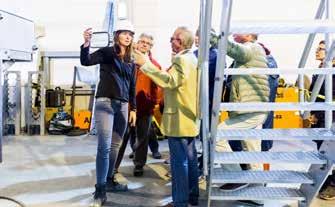
NEMO LINK
In February 2015, Elia and National Grid signed a joint-venture agreement to build the first subsea electricity connection between the United Kingdom and Belgium. When the project is complete, the resulting interconnection will have a capacity of 1,000 MW.
The Nemo Link project entails laying 140 km of subsea and underground cables to connect Richborough, on the Kent coast, and Herdersbrug, near Zeebrugge. Electricity will transit between the two countries in both directions.
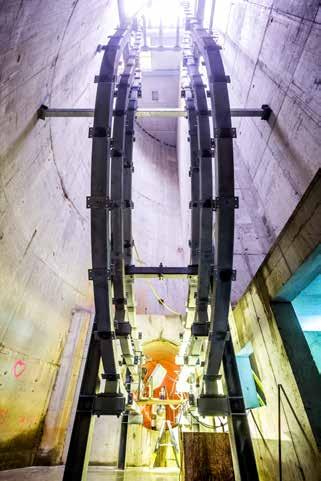
Work began in September 2016, with the construc tion of converter stations in Belgium and the UK. The tests performed on the cable were positive and good progress is being made on the manufacture of the first batch of subsea cables (2 x 59 km), which are due to be laid in July 2017.
“Brexit should not be a real threat to the project as National Grid has confirmed that it is committed to helping develop the European electricity market.”
Tim Schyvens, Nemo Link Project Manager at Elia
ALEG r O
The Aachen Liege Electrical Grid Overlay (ALEGrO) project will be the first interconnection built by Elia and Amprion. It will make a positive contribution to security of supply, integration of renewable sources of energy, and price convergence between the two markets.
PROGRAMME CLUSTERS
FOR CONNECTIONS TAILORED TO CUSTOMERS
“Elia’s investment plans are remarkably ambitious: moderni sing and developing grid infrastructure and building new international connections. All of this requires a project management approach that is both meticulous and flexible.
Infrastructure 3.0 is setting our organi sation on this course and preparing it for the future.”
Frank Wellens Project Manager Infrastructure 3.0 at Elia
FOR BETTER OPERATION OF THE ENERGY MARKET
FOR THE TECHNICAL AND TECHNOLOGICAL COMPLIANCE OF ELIA’S FACILITIES
FOR ENHANCED SECURITY OF SUPPLY IN BELGIUM
FOR BETTER INTEGRATION OF RENEWABLE ENERGY
26 27 02 ANNUAL REPORT 2016 WE DELIVER THE TRANSMISSION INFRASTRUCTURE FOR THE FUTURE
5
04 01 02 03 05
INFRASTRUCTURE PROJECTS
STEVIN HASSELT
 NEMO BRABO ALEGRO MERCATORHORTA
NEMO BRABO ALEGRO MERCATORHORTA
02 FOR BETTER INTEGRATION OF RENEWABLE ENERGY
STEVIN
The Stevin project is a vital link in the future of elec tricity supply in Belgium, particularly in the coun try’s coastal regions. The project aims to reinforce the Belgian high-voltage grid by laying a double, 380 kV high-voltage line between Zomergem and Zeebrugge, over a distance of 47 km. Elia is also building a new high-voltage substation in Zeebrugge and two new transition substations in Bruges and Damme.

The high-voltage connection will be able to transmit up to 1,000 MW of power, allowing a high degree of control over energy flows between Belgium and Germany. Measuring 90 km in total (of which 49 km is in Belgium), the connection will use direct-current technology and will run underground for the entirety of its route, which has been plotted alongside exist ing infrastructure like motorways, waterways and railway lines. Given its importance, the ALEGrO project was recognised by Europe as a Project of Common Interest (PCI).
Several important milestones were reached in 2016. In January, the Walloon Government published revised sector plans. In Q3, Elia and Amprion signed contracts with Silec Cable and Siemens for the cable system and two high-voltage direct-current converter stations, respectively, representing a total value of €400 million.
Special care is being taken to communicate with the local residents, municipalities, competent authorities and other stakeholders affected by the project. With that in mind, various information sessions have been organised to present the project to the public.
Work is scheduled to begin in early 2018, and the interconnection is due to commission in 2020.
“Elia genuinely wants to establish a partnership with local authorities. When a project is under study, every mayor who will be affected is personally noti fied. Throughout the implementation of an infrastruc ture project, right up until the connection is commis sioned, Elia’s teams do everything they can to apply a participatory approach and hold regular dialogue with local representatives.” Ilse Tant, Chief Public Acceptance Officer at Elia
“Interconnections will gradually reduce congestion on the European grid. The increase in power trades will improve the operation of the market and should bring about a drop in energy prices.”
BRABO
The Brabo project aims to shore up the high-voltage grid and consolidate security of supply in the Port of Antwerp and Belgium as a whole. The project con sists of three phases:
Brabo I (the Doel-Zandvliet connection and Zandvliet substation): the upgrade of the sec ond high-voltage line between Doel and Zandvliet is complete and the line was commissioned on 25 October 2016. The additional phase-shifting transformers at Zandvliet were commissioned in November 2015 and June 2016. This is a vital step towards greater security of supply during critical phases in the winter period.
Brabo II (the Zandvliet-Lillo-Liefkenshoek con nection): the existing 150 kV high-voltage line will be upgraded to a 380 kV connection on the right bank of the River Scheldt in the Antwerp district of Berendrecht-Zandvliet-Lillo and the municipality of Stabroek. The connection will follow the current route along the A12 between the high-voltage sub stations at Zandvliet (close to BASF) and Lillo (close to the Liefkenshoek tunnel). This connection will cross the River Scheldt to Beveren on the left bank, where it will be connected to the existing 380 kV connection (Doel-Mercator).

Brabo III (the Liefkenshoek–Mercator connection): from Liefkenshoek, the existing 150 kV connection will be upgraded to 380 kV. This line will run over a distance of 19 km from Liefkenshoek (municipality of Beveren), via the Kallo high-voltage substation (municipality of Beveren), to the Mercator highvoltage substation (municipality of Kruibeke).
Stevin will enable wind power to be brought from offshore wind farms to the mainland, from where it can be transmitted throughout the country. The pro ject also opens up the possibility of establishing an international connection with the United Kingdom, thus enhancing the capacity for import and export between the two countries. Such a connection will be built by the Nemo Link project.
Major progress was made on Stevin in 2016. Eighty new pylons were erected, cables measuring a little over 400 km were fitted and the passage under the Baudouin Canal was completed, as were the Van Maerlant, Gezelle and Stevin substations. Work began on the project in April 2015 and is due to wrap up in late 2017.
In addition to the information sessions, a very suc cessful tour of Stevin substation was organised in October 2016. It was attended by over 200 local residents.
BOUCLE DE L’EST
In June 2015, Elia began work on Boucle de l’Est. This project is intended to shore up the high-voltage line to enable it to handle renewable energy gener ated in the region.
Stage 1 of the Boucle de l’Est project, (the BévercéBütgenbach-Amel connection), was commissioned in early December 2016. This part of the project is currently in its finishing phase (removal of access roads, site restoration, painting of pylon frameworks, planting, and so on) and will be completed and closed in 2017.
The second stage of the project involves replac ing and upgrading the overhead line connecting the Bévercé (Malmédy), Bronrome, Trois-Ponts (Coo) and Brume sites located in the municipalities of Malmédy, Stoumont, Stavelot, Spa and Trois-Ponts. The work is scheduled for 2019-2021.
Mindful that the project’s impact on the surroun ding countryside is a major concern for local residents, Elia worked with the Belgian company Ronveaux to design a new type of high-per formance concrete pylon. The new technology combines structural strength with aesthetics to enable the new-style pylons to blend into their environment. Elia and Ronveaux were commended on their innovative development by the Belgian Precast Concrete Federation (FEBE).
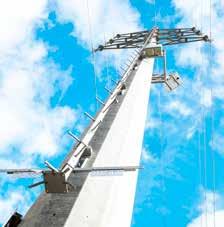 BOUCLE DE L’EST
BOUCLE DE L’EST
“A lot of progress was made on the Stevin project in 2016. Eighty new pylons were erected and cables meas uring a little over 400 km were fitted.”
Arianne Mertens Stevin Project Manager at Elia
Frank Vandenberghe Chief Customers, Market & System Officer at Elia
NAMUR
ARLON
BRUSSELS BOUCLE DE L’EST
28 29 02 ANNUAL REPORT 2016
WE DELIVER THE TRANSMISSION INFRASTRUCTURE FOR THE FUTURE ANTWERPBRUGES LIÈGE
PLANNING GRID OUTAGES TO FACILITATE INFRASTRUCTURE WORK
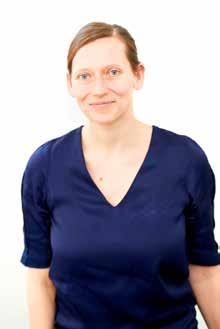
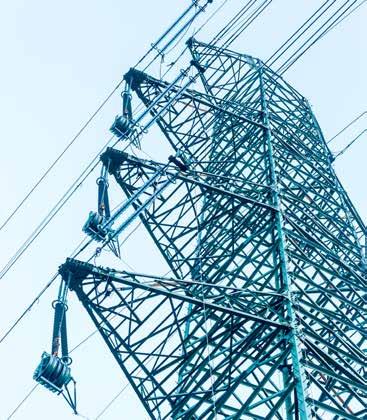
03 FOR CONNECTIONS TAILORED TO CUSTOMERS
HASSELT PROJECT
18 km of new nature area from Zutendaal to Maaseik
“Each year, at the National Control Centre, we plan the (380 kV and 220 kV) grid outages that are required for Elia’s infrastructure and main tenance work. Planning is becoming more and more complex owing, among other things, to Elia’s ambitious CAPEX plan and the increasing integration of renewable energy, which makes power flows more difficult to predict.” Cindy Bastiaensen, Head of Operational Planning at Elia.
The line connecting the Godsheide electrical substation in Hasselt and the substation on the Infrabel site near Hasselt station was built in the 1960s and had reached the end of its service life. It needed to be replaced so as to ensure the best possible conditions for guaranteeing security of supply and this supported Infrabel’s growing need for electricity in the region. Elia replaced a large section of the 70 kV line with an underground cable covering a distance of 5.5 km. The project was closed in May 2016.
In partnership with the local authorities, Elia implemented a raft of measures designed to limit the impact on mobility in this urban area.
04 FOR ENHANCED SECURITY OF SUPPLY IN BELGIUM
MERCATOR-HORTA
The Mercator-Horta connection is an overhead highvoltage line linking Kruibeke and Zomergem. It was built in the 1970s and crosses 12 municipalities over a distance of 49 km. Elia wants to upgrade the line to help it cope with the increasing integration of renewable generation units. Besides, upgrading the line will enable Elia to import more power from abroad.
On 18 November 2016, Elia submitted a permit application for the Mercator-Horta project to the Permit Coordination and Facilitation Committee (VCFC/CCFA) one-stop shop, the Belgian authority in charge of facilitating and coordinat ing permit procedures for projects of common interest. This meant that application processes for the planning permit, the declaration of public utility and the highway permit were all kicked off at the same time. The applications are now undergoing the usual procedure with each of the competent bodies.
“In time, the environmentally friendly connection and the more natural forest border will serve as a migration route and a living and breeding area for animals.”
Whereas
in the past, machines were used to keep the strip beneath the high-voltage line clear, Elia has come up with a sophisticated nature management scheme that will control the vegetation under the Limburg-based line in an environmentally friendly way. Elia’s efforts are supported by Flemish conservation agency Agentschap Natuur en Bos – and by 250 sheep, which will crop the vegetation under the power line.

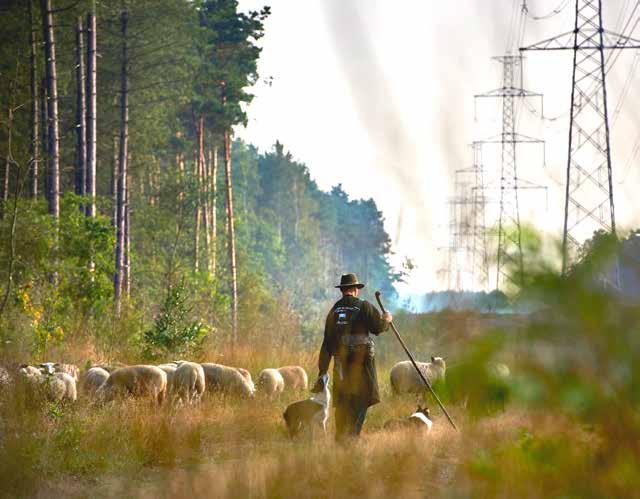
“A second cable was added to the 380 kV line between Zutendaal and Maaseik in 2015,” explains Joris Houben, Maintenance Manager at Elia. “When a conventional management method is used, heavy machines are brought in every so often to get rid of all the vegetation under the line. That leaves a bare strip of land with no added value, and makes for an abrupt transition to the surrounding forest. The idea of opting for a sustainable alternative emerged during the permit process.”
“We managed to turn a problem into an opportunity,” says Lise Hendrick from Agentschap Natuur en Bos “Instead of removing trees, we created new nature. The pylons are in the centre, and underneath is a 65-metre-wide strip that we want to keep as clear as possible for grass and heather. Then you can see a gradual transition to the forest alongside it.”
“The Public Acceptance Department and Raf Vandenboer had a lot of work on their hands when it came to convincing everyone, but we are happy that it worked out in the end. Elia wants to adopt a similar approach in future, whenever it is practicable to do so,” concludes Houben.
SHEEP KEEP VEGETATION IN CHECK

In 2016, Elia devised a one-of-a-kind manage ment plan for its upgraded 380 kV high-voltage line between Zutendaal and Maaseik. The project involves some 130 landowners and six municipalities.
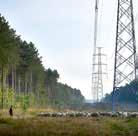 ELIA UNDERTAKES A UNIQUE BIODIVERSITY PROJECT
ELIA UNDERTAKES A UNIQUE BIODIVERSITY PROJECT
30 31 ANNUAL REPORT 2016
http://bit.ly/SheepsAtElia DISCOVER OUR VIDEO
250
Managing the electricity system is one of our core tasks: this entails keeping sup ply and demand balanced at all times. To achieve this, Elia ensures that every mar ket player has transparent, non-discrimi natory access to the grid.
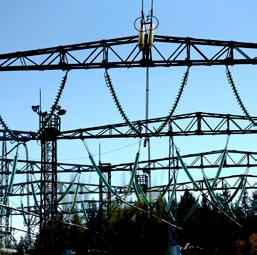
The rapid, profound changes associated with the energy transition – increasingly decentralised energy generation, more renewable energy sources and a greater degree of digitisation – are making this task more and more challenging.

By opening up the market to new players and new technologies, Elia hopes to obtain better security of supply and competitive market prices.
The development of these cross-border balancing mechanisms requires greater cooperation and coor dination at both national and supranational level, as well as an appropriate legislative framework.
REAL-TIME BALANCING ON A DAY-TO-DAY BASIS
At the National Control Centre, the operators who ensure that the grid runs smoothly 24 hours a day must be able to activate regulation tools. They have access to reserves to manage the electricity grid, commonly referred to as ‘ancillary services’. These reserves contribute to maintaining the frequency and voltage on the grid, managing congestion and bal ancing generation and consumption in real time.

Frank Vandenberghe Chief Customers, Market & System Officer at Elia
“Elia needs addi tional, flexible control mechanisms to keep the grid balanced and has embarked on an ambitious change programme to that end.”
ELIA WANTS TO FACILITATE MARKET COUPLING AT BOTH DISTRIBUTION LEVEL AND EUROPEAN LEVEL. WE OPEN UP OPPORTUNITIES FOR NEW PLAYERS AND NEW TECHNOLOGIES BY INNOVATING IN OUR SYSTEMS AND WITH NEW MARKET PRODUCTS.
03 32 33
WE DEVELOP THE SYSTEM AND MARKETS
http://bit.ly/ElectricityMarketElia DISCOVER OUR VIDEO ON THE EVOLUTION OF THE ELECTRICITY MARKET
3 RESERVES FOR KEEPING THE GRID BALANCED
There are three different services for keeping the grid balanced:
R1
PRIMARY RESERVE
activated automatically and on a continuous basis, almost instantly (within 0 to 30 seconds), and revised upwards or downwards as required to stabi lise the frequency of the European grid. In the event of a deviation, all of Europe’s transmission system operators work together, enabling them to provide enough power to cover two concurrent serious inci dents (e.g. the loss of two 1,500 MW generation units). This reserve is supplied by generation units or offtake sites.
R2
SECONDARY RESERVE
activated automatically and on a continuous basis, in a timeframe of 30 seconds to 15 minutes, and revised upwards or downwards as required to han dle sudden imbalances in the area managed by Elia. It is supplied by generation units.
R3
TERTIARY RESERVE
can be activated manually at Elia’s request. It can be used to address a major imbalance in the zone managed by Elia and/or deal with congestion prob lems. There are several types of tertiary reserve, and the reserve can be supplied by generation units or offtake sites.
The Control Centre coordinates energy flows on the grid, in close cooperation with international coordi nation centres like Coreso and transmission system operators in neighbouring countries. The reliability of the electricity grid and the country’s security of sup ply depend on their collaboration.

INTERNATIONAL COOPERATION ON THE PURCHASE OF PRIMARY RESERVES
On 2 August 2016, Elia announced the successful go-live of a common, weekly cross-border auc tion for the purchase of Frequency Containment Reserves (FCR), more commonly known as primary reserves (R1). The auction, which included Belgian demand for the first time ever, took place on 26 July 2016 for delivery in the first week of August. The countries taking part in the auction were Germany, the Netherlands, Switzerland, Austria and Belgium.
Now that Elia has joined the international coopera tion structure for the purchase of these reserves, Belgium’s total FCR obligation (73 MW in 2016) will now be auctioned on a weekly basis via both a national and a cross-border common auction (max imum weekly variable volume of 51 MW in 2016). The fact that auctions will take place weekly is also a new development, as purchases were previously conducted on a monthly basis.
FCR are vital for maintaining the balance between generation and consumption in the short term. The volume of FCR purchased by each transmission system operator is agreed at international level. Cooperation on FCR creates a more liquid market for the TSO and opens up new sales opportunities for the participating Balancing Service Providers (BSPs). The FCR common market should result in more efficient procurement of FCR and, at the same time, reduce the risk of FCR shortages for TSOs, thus enhancing the overall security of the system.
INTEGRATION OF NON-CIPU UNITS INTO THE SECONDARY RESERVE
Since mid-2016, Elia has been analysing the feasi bility of integrating units other than large, gas-fired generation units for the secondary reserve and opening participation to units of various sizes and technologies (e.g. biogas, cogeneration, pumped storage). The pilot project’s conclusions will be avail able by the end of 2017.
REDESIGN OF TERTIARY RESERVE PRODUCTS
In 2016, Elia produced a roadmap geared towards redesigning its tertiary reserve (R3) products over several stages. The aim is to make these prod ucts technologically neutral, thus allowing tertiary reserves to be supplied by any technology (central ised and decentralised generation units, offtake and storage sites). The roadmap also sets out to pre pare Elia for a European-level standardisation of the balancing reserves.
Elia implemented the first stage of the roadmap in 2016 by replacing the products R3 Generation (only open to centralised generation units – CIPU units) and R3DP (only open to smaller, decentralised gen eration units or offtake sites – non-CIPU units) with two new products, R3 Standard and R3 Flex. These two new products have the advantage of being technologically neutral, meaning they are open to both centralised and decentralised generation units and to offtake sites.
STRATEGIC RESERVE
The strategic reserve is a concept that was imple mented for the first time during the winter of 20142015. It is designed to address the structural short age of installed generation capacity in Belgium brought about by the temporary or permanent shut down of power stations (for either economic or tech nical reasons). It is intended to help maintain security of supply during the winter period, i.e. to ensure that demand for electricity can be covered by available generation capacity in Belgium and through imports, even during peak consumption periods.
Ahead of each winter period and on the instructions of the Energy Minister, Elia organises a call for ten ders for power stations that have announced that they will be shutting down and for demand-side response. The reserve capacity established may be activated during the period from 1 November to 31 March; it may not be used for any other purpose. Each year, strategic reserve need is assessed for the following winter.
The strategic reserve is activated when a ‘structural deficit’ is identified (considering economic or tech nical criteria) based on market forecasts or other information available to Elia the day before or several hours in advance.
BIDLADDER: ENABLING MARKET PLAYERS TO PUT AVAILABLE FLEXIBILITY ON THE MARKET
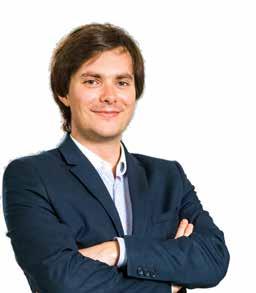
BidLadder is a market platform currently being developed by Elia. It aims, in time, to enable market players to offer all of their available flexibility to Elia, regardless of the voltage level they are connected to and the technology they use (generation or demandside management). As well as giving market players the chance to capitalise on their flexibility, BidLadder will afford Elia a clear overview to increase liquidity on the balancing market, thus guaranteeing optimal technical and economic operation of its balancing market.
THE STRATEGIC RESERVE FOR WINTER 2017-2018
“In late 2016, Elia conducted a probabilistic analysis of Belgium’s security of supply for winter 2017-2018, as required by the Electricity Act. On the basis of the analysis and an opinion from DG Energy, the Federal Minister of Energy instructed Elia to put together a reserve of 900 MW for the next three winters (subject to any plants returning to the market).
Elia began by drawing up a base case scenario and went on to carry out 15 sensitivity analyses to take account of a wide range of uncertainties. Elia also analysed a scenario based on the situation in early winter 2016 (simultaneous long-term unavailability of various nuclear reactors in France and Belgium). This last scenario was selected by the Minister with a view to planning the volume.” Rafael Feito-Kiczak, Scenarios, Market & Adequacy Analysis at Elia
34 35 03 ANNUAL REPORT 2016 WE DEVELOP THE SYSTEM AND MARKETS PRIMARY RESERVE SECONDARY RESERVE TERTIARY RESERVE R1 R2 R3
EE Patrik Buijs EE
 EE System Services EE
EE Product E Manager EE
EE System Services EE
EE Product E Manager EE

 EE at Elia EE
EE at Elia EE
“The concept of BidLadder was developed in line with a vision of a future where demandside management and decentralised generation make an ever-greater contribution to flexibility.”
At present, only access responsible parties with Coordination of the Injection of Production Units (CIPU) contracts can freely submit balancing bids to Elia. BidLadder is to be extended to major indus trial players and independent aggregators. Without BidLadder, grid users and aggregators can only offer flexibility solutions to market players and can not submit them to Elia directly. The opening of this market and the resulting increase in competitiveness will boost liquidity for Elia, which will have a positive impact on prices on the balancing market.
CHANGES TO CROSS-BORDER INTRADAY MARKET
On the 5th of October 2016, Elia successfully launched a mechanism for intraday trade between Belgium and France, on the one hand, and Belgium and the Netherlands, on the other. The change was effected in several stages.
“Coupling the Belgian and Dutch intraday markets to the French, German, Swiss and Austrian intra day markets is essential if trade between different market operators is to increase and become more flexible, especially in connection with the growth and effective use of renewable energy. Efficient cooper ation with the other transmission system operators was vital for developing these new mechanisms.”
Viviane Illegems, Program Manager Market Development at Elia
STAGE 1
ICS CAPACITY PLATFORM FOR INTERCONNECTIONS BETWEEN BELGIUM AND FRANCE
Thanks to the combined efforts of the operational teams at Elia and RTE (the French transmission sys tem operator), the first allocations of cross-border capacity for the Belgian-French bidding zone bor der have been carried out on the Intraday Capacity Service (ICS) platform. The platform has the advan tage of offering a similar service for several bidding zone borders. ICS has made it possible to explic itly allocate cross-border intraday capacity on the Belgian-French bidding zone border. The platform applies the first come, first served principle: now, the time at which the request was submitted is the only factor taken into account for automatic capacity allo cation in the requesting market operator’s balancing perimeter. The same platform has been used to allo cate cross border capacity on other bidding zone borders between France, Germany, Switzerland, the Netherlands and Western Denmark.
STAGE 2
M7 TRADING PLATFORM FOR THE BELGIAN INTRADAY MARKET
Since October 2016, Elia, RTE and TenneT have been offering cross-border intraday capacity for the Belgian-French and Belgian-Dutch borders through the M7 intraday trading platform via the ICS plat form. The new Belgian-French and Belgian-Dutch intraday solution enables implicit allocation of intra day capacity, thus making it possible to couple the Belgian and Dutch intraday markets to the French, German, Swiss and Austrian intraday markets.
The first trades on the M7 platform were com pleted in October 2016. The platform is now used for all EPEX SPOT continental intraday markets and replaces the Eurolight trading platform, which was previously used by EPEX SPOT for intraday markets and to manage cross-border intraday trading in the Netherlands and Belgium.
STAGE 3
LOOKING TOWARDS A SINGLE EUROPEAN PLATFORM
The XBID system (XB for cross-border, ID for intra day) is currently being developed jointly by trans mission system operators and power exchanges. The project, which has been recognised by the European Commission, aims to have all of Europe’s cross-border intraday capacity traded on a single platform. The initial go-live is scheduled for Q1 2018.
Cooperation between energymarket players:a real boon for flexibility
Managing
the electricity system is increasingly challenging and requires constant attention at all times, both day and night. Elia has a number of regulation tools, also known as reserves and ancillary services, for that purpose.
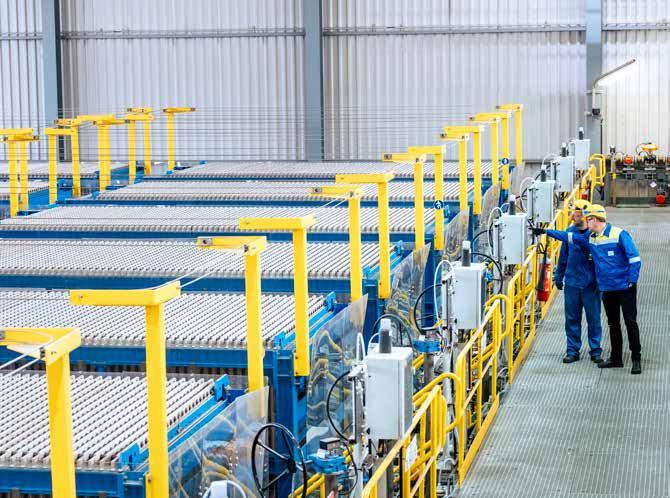
The Vynova site in Tessenderlo has contributed to Elia’s reserves for some years now.
“We contribute to Elia’s reserves through our electrolysis machines. They feed into both the primary reserve, which deals with frequency, and the tertiary reserve, through the interruptibility product Interruptible Contract Holder (ICH).” Michel Ceusters, Vynova Group
This kind of cooperation between Elia and industrial consumers is a real win-win, whether it is organised through an aggregator or not. It enables Elia to diversify the range of electricity market players and thus bring more flexibility to the market.
“Cooperating with Elia on reserves is worthwhile for Vynova because it helps us to reduce our energy bills. Since the Tessenderlo site is probably Belgium’s second-biggest consumer of energy, being able to participate in the energy market via reserves makes a real difference to us.” Michel Ceusters, Vynova Group
“Renewable generation means that Elia needs more flexibility to keep the grid balanced. However, when this form of generation is combined with computer intelligence and new market players (like aggregators), it can also provide new sources of flexibility. To that end, Elia has launched an ambitious programme to fundamentally redesign all the ancillary services markets with a view to opening them to all kinds of new technologies (such as batteries, or demandside management) and new market players (like aggregators) and integrating them at European level.” James Matthys-Donnadieu, Head of Market Development at Elia
http://bit.ly/VynovaElia
“Cooperating with Elia on reserves is worthwhile for us because it helps us to reduce our energy bills.”
“Since the Vynova site in Tessenderlo is probably Belgium’s second-biggest consumer of energy, being able to participate in the energy market via reserves makes a real difference to us.”
36 37 ANNUAL REPORT 2016
TO FIND OUT MORE, SEE INTERVIEW WITH VYNOVA GROUP
Pascale Fonck Chief External Relations Officer at Elia
“We are replacing one-way communication with dialogue and coalitions based on mutual respect and empathy.”
WE COOPERATE TO STRENGTHEN OUR TSO POSITION
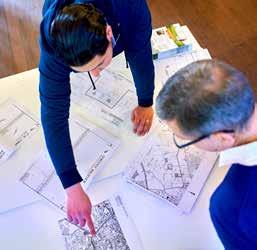
WE ARE COMMITTED TO IMPLEMENTING THE ENERGY TRANSITION IN COOPERATION WITH ALL MARKET PARTIES, THROUGH ENHANCED COORDINATION WITH OTHER SYSTEM OPERATORS AT NATIONAL AND EUROPEAN LEVEL.
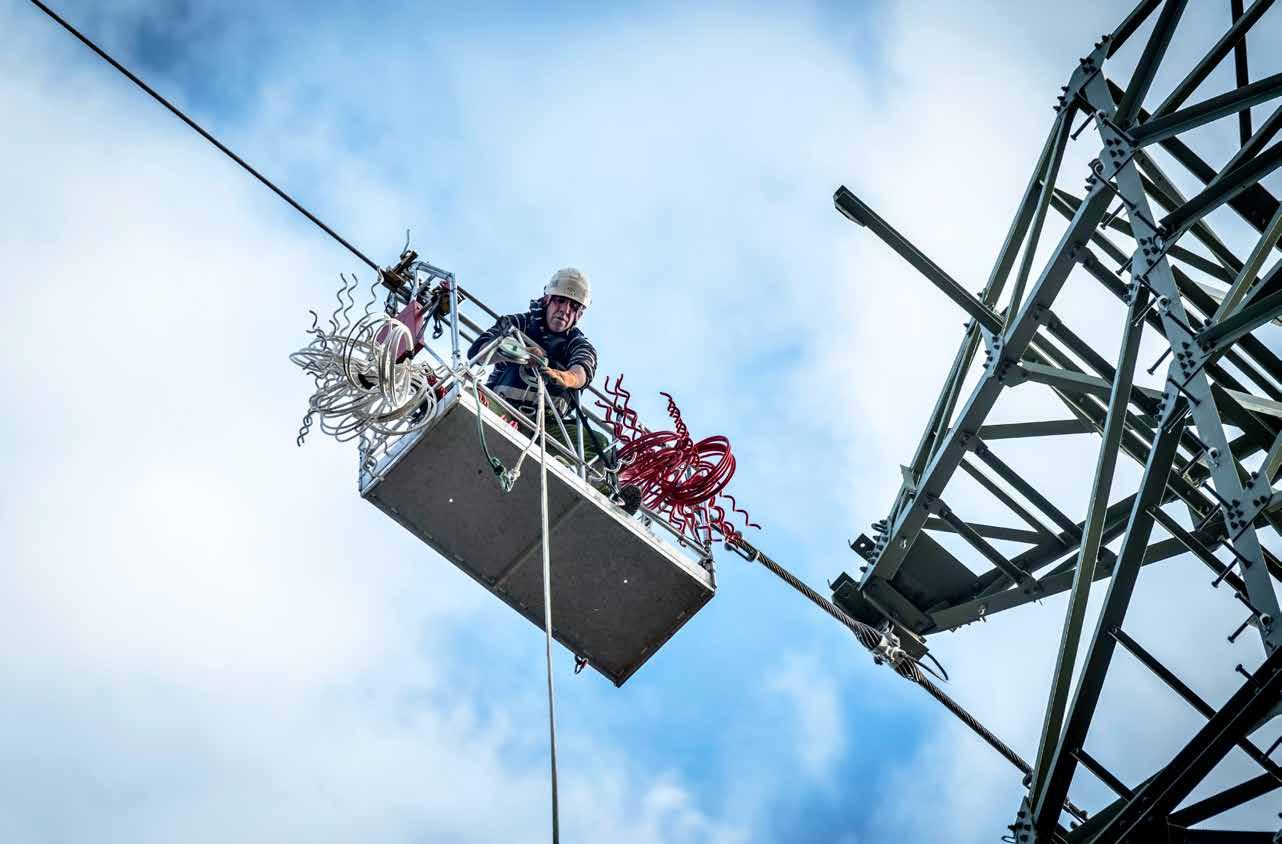
Our activities have an impact on the coun try’s socio-economic development. As a key player in the energy system, Elia is endeavouring to improve its alignment and coordination with the various market parties and system operators at both national and supranational level.
By implementing win-win projects and sharing our expertise and data, we ensure that society’s inter ests always come first. We understand what our customers and the market players need. We regu larly consult with them through a range of platforms.
Elia also serves society by conducting in-depth studies on the operation and needs of the electricity system.
PROACTIVE STAKEHOLDER MANAGEMENT
Inspired by our new strategy, which puts society’s interests first, Elia wants to pursue a more pro active policy in terms of stakeholder management and focus more on public acceptance of its infra structure projects. To that end, we have expanded our management team to include a Chief Public Acceptance Officer. See also page 26.

04 38 39
LOCAL RESIDENTS VISIT THE STEVIN PROJECT SITE
On Saturday, 1 October, Elia invited local residents to visit the Stevin high-voltage substation in Zeebrugge. Work on the project is set to continue until late 2017. Around 200 interested visitors were given a tour of the site. See also page 41.
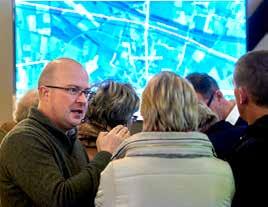
“I was amazed by how quickly work was progressing. Electricity is something we take for granted. I had no idea that renewable energy had such an impact on the system.” Alfons Van Hulle – visitor Stevin

“The Users’ Group was extremely active in 2016: considerable progress was made on the implemen tation of the European Network Codes and major steps were taken to develop more flexibility on the Elia grid. There were also extensive discussions on the adequacy and flexibility needs of the Belgian electricity system for 2017-2027.” James Matthys–Donnadieu – Market Development Manager
OUR EXPERTISE AT SOCIETY’S SERVICE
Elia is an active member of a number of national and European working groups and gladly makes its expertise available to help plan the transmission grid of the future. We regularly conduct in-depth studies to enable us to give sound advice about the electri city system’s needs.
STUDY ON ADEQUACY AND THE NEED FOR FLEXIBILITY IN THE BELGIAN ELECTRICITY SYSTEM
COOPERATION WITH THE REGULATORS
CREG
In late 2016, CREG approved a revision of all the levies that Elia receives in connection with its pub lic service obligations. The revised levies were applied from 1 January 2017. A revision of the levy for Walloon green certificates is currently under examination.
Furthermore, CREG approved the green certificate purchase contracts for the companies Rentel and Norther. Elia is required to conclude these contracts under the federal regulations to foster the develop ment of offshore energies.
CREG has devised a method setting out criteria for evaluating investments in electricity infrastructure and the greater risks to which they are subject. In its decision, CREG outlined how it would go about evaluating the investment risks linked to such projects.
In late June, CREG set the various targets that Elia will be encouraged to achieve in 2017 within the framework of the incentive programme created by the Tariff Methodology and left to CREG’s discretion. Among other things, the targets aim to promote a better match between supply and demand.
Following Elia’s tariff report, CREG adopted a deci sion on the tariff balances for 2015.
David Zenner Manager Customer Relations at Elia

“The Users’ Group has four permanent working groups, which focus on System Operation, European Market Design, Balancing, and the Elia grid and the associated mechanisms, services and products (Belgian Grid). And on top of that, ad hoc task forces are formed reg ularly to address spe cific issues. Dialogue and cooperation are essential for Elia!”
Elia wants to take account of society’s needs and expectations at every stage of its infrastructure pro jects. We approach our stakeholders with empathy and integrity and are always on the lookout for winwin solutions and partnerships.
Moreover, Elia is highly customer-oriented and sets up specialised working groups in order to gain a better insight into market players’ needs and requirements and to identify the best solutions.

USERS’ GROUP & CUSTOMER WORKSHOPS
The Users’ Group keeps Elia in constant contact with market players. This consultation body brings together representatives of various groups, such as major consumers, power producers, suppliers and distribution system operators, but also employers’ organisations, power exchanges, public author ities and many more. The Users’ Group is a forum for informing and consulting them about a range of specific areas connected to the operation of the electricity market. Moreover, positions on specific issues and recommendations are passed on to the relevant minister(s) and/or regulators through the Users’ Group.
As well as holding an annual Stakeholders’ Day, Elia organises workshops for specific target groups of customers, in which they can find out about sub jects such as the evolution of Elia’s products and services and are informed about Elia’s processes and its approach to safety.
At the request of the Minister of Energy, Elia carried out a study to assess the balance between energy generation and energy consumption, and on top of that, it evaluated the need for flexibility in the elec tricity system for the period from 2017 to 2027. The study, which was published in late April 2016, is essentially a quantitative assessment of these con siderations and examines Belgium within the wider context of the European market. It is available on Elia’s website.
In late September, Elia published an addendum to the study at the request of the Minister of Energy, following a public consultation on the initial report of 20 April 2016.
TEN-YEAR DEVELOPMENT PLAN FOR THE EUROPEAN NETWORK, IN COOPERATION WITH ENTSO-E Transmission system operators in 34 European countries, including Elia, cooperated with ENTSO-E, contributing their unique expertise to devise the TenYear Network Development Plan (TYNDP 2016). The plan, which was published in late June, sets out how the European electricity grid will be developed over the next 10 years.
Transmission system development projects have a key role to play in achieving European climate and energy targets linked to decarbonisation, competi tiveness and security of supply. These are vital if Europe is to attain an energy mix consisting of 27% renewables and reduce its CO2 emissions by 40% by 2030.
In the field of ancillary services, CREG granted Elia its approval for the method that it has developed to gauge the volumes of ancillary services that it will require to manage the electricity system safely and reliably. CREG also agreed that reserve prod ucts should be designed to be more technologic ally neutral. In a move away from distinguishing between products based on the resources used to provide reserve capacity (generation or demand-side management), the products’ characteristics have been adjusted so that reserves are now divided into Standard Reserves and Flexible Reserves, meaning they can be provided by generation or demand-side management as necessary (see page 34).
The rules on the operation of the balancing market have been amended to allow Belgian market play ers to promote their primary reserve offers within the European region and to allow Elia to source prod ucts to meet its needs within that same region.
VREG
In 2016, the Flemish Electricity and Gas Regulatory Body, VREG, was required to approve the changes made to the grid access contract as well as the con tracts for the access responsible parties. VREG also issued a favourable opinion about the Investment Plan that Elia prepared in order to develop the net
ELIA’S INFORMATION SESSIONS
Elia organises information sessions for all its major infrastructure projects in order to enhance public participation during the per mit process. For instance, information sessions have been held in Sleidingen and Lokeren. Elia intends to upgrade the high-voltage line between the Mercator substation in Kruibeke and the Horta substa tion in Zomergem. The project has been recognised as a Project of Common Interest (PCI) by the European Commission and will contri bute to the creation of an integrated European energy market.
04 40 41 ANNUAL REPORT 2016 WE COOPERATE TO STRENGTHEN OUR TSO POSITION
works it operates at voltage levels of 70 kV and below, having regard to the regulatory obligations incumbent upon it as a local transmission system operator in Flanders.
CWAPE
The Walloon Energy Commission, CWaPE, approved the different changes made to the grid access contract. It also approved the ‘Plan d’adap tation’ prepared by Elia for the development of the local transmission network in the Walloon Region. In addition, CWaPE and Elia exchanged information within the framework of the operation of the Walloon green certificates market and, more specifically, in the areas in which Elia has obligations.
BRUGEL
The Brussels Energy Regulator, Brugel, issued a favourable opinion on the Investment Plan prepared by Elia for the regional transmission network that Elia operates in the Brussels Region. The definitive deci sion of the Brussels Government is expected shortly.
INTERNATIONAL COOPERATION
Elia and 50Hertz are active members of various international organisations that work to promote the safety, sustainability and reliability of the world’s elec tricity grids.
COOPERATION BETWEEN EUROPEAN TRANSMISSION SYSTEM OPERATORS

Elia regularly works with other European trans mission system operators. One particularly good example of its activities in this regard is the suc cessful launch of the new intraday mechanism at the Belgian-French and Belgian-Dutch borders (see page 36).
Besides this, the flow-based method has been in place for one year now – since May 2015, to be pre cise (see page 36).
During winter 2017/2018, eight European transmis sion system operators, namely RTE (France), Elia (Belgium), REE (Spain), Amprion (Germany), TenneT (Netherlands), Swissgrid (Switzerland), Terna (Italy) and TransnetBW (Germany), intensified their cooper ation with a view to optimising power exchange capacities. The relevant procedures are managed by regional coordination centres (with the two main centres in Central Europe being CORESO and TSCNET). Enhanced cooperation between the oper ators will be particularly useful if one country is under pressure due to a shortfall in generation.
ENTSO-E
The European Network of Transmission System Operators for Electricity (ENTSO-E) represents all European Union operators and other trans mission system operators who are connected to the European electricity grid. ENTSO-E acts as a point of contact for bodies such as the European Commission and the Agency for the Cooperation of Energy Regulators (ACER) for matters connected with technical problems and market-related issues.
CORESO
The regional technical coordination centre ‘Coordination of Electricity System Operators’ (Coreso) brings together various European trans mission system operators with a view to enhancing the operational safety of the grids in Central-West Europe. The development of intraday markets has triggered a rise in cross-border electricity flows. Coreso also strives to improve the region’s integra tion of renewable energy generation by exchanging data and expertise.
EPEX SPOT SE
Elia has a minority stake (17%) in the hold ing HGRT1, which is a shareholder (49%) in the European Power Exchange SE. EPEX SPOT manages a number of electricity trading plat forms, mainly in the Central-West Europe region (i.e. Germany, France, the United Kingdom, the Netherlands, Belgium, Austria, Switzerland and Luxembourg). These markets account for 50% of Europe’s electricity consumption.
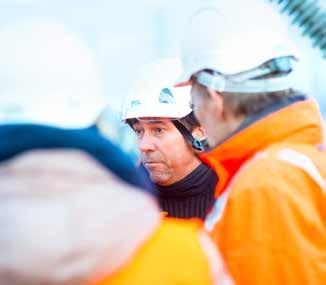
GO15
The Elia Group is a founding member of GO15, a voluntary initiative that brings together the world’s 19 largest transmission system operators. The organi sation represents 3.4 billion consumers on six con tinents and draws up joint action plans designed to improve the safety and reliability of the global electri city grid.
RENEWABLE GRID INITIATIVE
The Elia Group is an active member of the European Renewables Grid Initiative (RGI). RGI fosters the further integration of sustainable energy into the European electricity system. Alongside various European transmission system operators, RGI’s members include environmental organisations like WWF and Germanwatch.
WIN-WIN PROJECTS FOR A SUSTAINABLE GRID GREENPULSE: FOR STRUCTURED ENVIRONMENTAL MANAGEMENT
Elia implemented an environmental governance project, called Greenpulse, in 2016.
Elia implemented an environmental governance project, called Greenpulse, in 2016. The company wants to incorporate more environmental targets into its activities to make, as a company, a posi tive contribution to the energy transition, but also to develop its grid taking into account concerns of local stakeholders and create more biodiversity. Such approach will reducethe environmental impact of its infrastructure and better integrate them into the local landscape.
1. HGRT stands for Holding des Gestionnaires de Réseau de Transport, a holding company comprising Amprion, APG, Elia, RTE, Swissgrid and Tennet.
Jean-François Gahungu CEO of Coreso

“As a technical coordination centre for several Transmission System Operators, Coreso works with Elia every day, providing operational analysis and coordination services. Our overview, which covers an international scope, helps to improve the operational safety of the electricity grid.”
Key areas defined by Greenpulse include Elia’s environmental mission and responsibility, the environmental priorities, and the applicable poli cies and procedures. A three-year action plan was drafted in order to implement this. In time, the Greenpulse programme will enable Elia to estab lish an integrated environmental system within the company.
ELECTRIC AND MAGNETIC FIELDS
The electric and magnetic fields given off by high-voltage infrastructure have a very low frequency (50 Hz). Elia is very much aware of local residents’ concerns over the potential health risks posed by electromagnetic fields, and as such keeps them

42 43 04 ANNUAL REPORT 2016 WE COOPERATE TO STRENGTHEN OUR TSO POSITION
“As a nearby resident of the Stevin project, Elia and the association Houtland have offered to select trees that will help to reduce the visual impact of the new line. This is a constructive and pleasant approach.
We are looking forward to seeing the final result in spring, once the trees have grown.”
informed as fully as possible. Around 112 meas urements were performed in the field in 2016 at the request of local residents, and approximately thirty requests for information were handled.
Elia also supports scientific research into the impact of extremely-low-frequency magnetic fields. In this connection, Elia signed a cooperation agreement with various research centres belonging to the Belgian BioElectroMagnetic Group (BBEMG), guar anteeing them complete independence. In addition, Elia has access to the results of high-level inter national research in the field through the Electric Power Research Institute (EPRI) in the United States.
STRIPPING AND PAINTING OF PYLONS
As part of its facility maintenance activities, Elia regularly (every 15 years on average) strips and paints its pylons to protect them from corrosion. It subcontracts this work to companies specialised in painting.
Elia’s grid still features a number of black steel pylons coated with lead paint; after all, lead paint treatment was very common in the past. To pre vent lead dust or lead chips from spreading when the paint is stripped off the pylons, the pylons are wrapped up in tarpaulins before work begins. Once the pylons have been stripped, the tarpaulins are removed and the pylons are painted in the open air.
The paints used nowadays meet the highest environmental standards. When work is complete, Elia and its subcontractors jointly inspect the ground around the pylons to make sure that their activities have not polluted the surrounding area.
Elia put together a brochure on the subject in late 2016 with a view to informing local residents when similar work is due to be performed near them.
RENEWABLES GRID INITIATIVE
The Renewables Grid Initiative (RGI) is a coalition of environmental groups (such as the WWF and Birdlife) and system operators, including Elia and 50Hertz (members since 2011). Their shared aim is to generate consensus around the grid expansion needed to integrate renewables while respecting biodiversity and the environment.
Two new members joined RGI in 2016: the sys tem operators Amprion (Germany) and EirGrid (Ireland). RGI also initiated a long-term cooper ation with the European Network of Transmission System Operators for Electricity (ENTSO-E), which will further strengthen the actions taken to meet the European Union’s climate and environmental targets.
LIFE ELIA PROJECT
The LIFE Elia European project, conducted in partnership with RTE (France), was launched in September 2011 and is subsidised by the European Commission and the Walloon Region. It aims to cre ate green corridors beneath high-voltage lines in for ested areas.
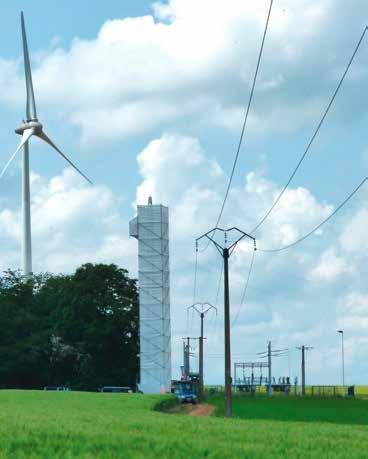
The project was supposed to conclude in August 2016, but in view of the work that had been done, the areas that still needed to be restored under over head lines, and the interest shown by other TSOs, Elia and RTE decided to extend the project until late 2017.
BEEHIVES INSTALLED ON SOME ELIA SITES
Elia’s Monnoyer site is home to two beehives. Once a year, the honey harvested from the hives is sold to staff and the proceeds are donated to a good cause. Elia is also planning to set up beehives at its Créalys (2017) and Merksem (2018) sites.


In addition, in late 2016 the company Beeodiversity teamed up with Elia and a number of other Brusselsbased companies to take an inventory of biodiversity and pollution in Brussels. To that end, Beeodiversity is analysing the pollen, nectar and water brought back to the hives on its partner companies’ prem ises. These samples will enable Beeodiversity to map the pesticides and heavy metals present in the city and measure plant diversity and its nutritional value for pollinators.
VEGETATION TO LIMIT THE VISUAL IMPACT OF OUR FACILITIES
Elia carried out a landscape study in the framework of its Stevin project. This entailed analysing the land scape in the region together with the project’s vis ual impact and identifying measures that could limit that impact, both on land owned by Elia and on the surrounding area. Elia then set up a fund for putting these measures into practice and is working with the associations Regionaal Landschap Houtland and Regionaal Landschap Meetjesland with a view to practical implementation.
More specifically, the two associations are planting trees, orchards and hedges etc. on the premises of any private householders, farmers or local author ities, which make a request. The plants are intended to hide the new high-voltage line from view. The landscape study determined the scope within which the two associations can plant vegetation using money from Elia’s fund. When planting new vegeta tion, the associations give precedence to local spe cies that are suited to the soil type and the climate.
ELIA’S PLANTING DRIVE IN FIGURES1 (2015-2016 PERIOD)
60
REQUESTS FOR PLANTS FROM PRIVATE HOUSEHOLDERS
TREES
POLLARDS 5.8 km
OF WOODED HEDGES AND VERGES
A TOTAL OF 13 KM OF VEGETATION TO MITIGATE THE VISUAL IMPACT OF THE NEW STEVIN LINE
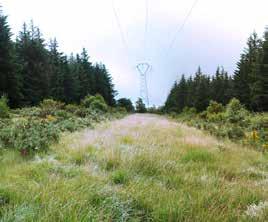
TWO AWARDS FOR THE LIFE PROJECT
On 23 May 2016, the LIFE Elia-RTE project won the Natura 2000 Award in the ‘Reconciling interests/perceptions’ category. The Award is conferred by the European Commission’s DG Environment, in partnership with the European network for biodiversity Natura 2000, and recognises the achievements of all the project’s partners: Elia, RTE, the Walloon Region, the LIFE project team and the nume rous stakeholders who have been involved in the field – forest owners, public authorities, natural parks, farmers, hunters, nature conservation associations, and many more. The very next day, the LIFE Elia-RTE project picked up one of the two Sustainable Partnerships’prizes awarded by The Shift, the one-stop shop for sustainable development in Belgium.
1. excluding Elia measures around the Stevin, Gezelle and Van Maerlant substations
Ian Wittevrongel a nearby resident of the Stevin project
44 45 04 ANNUAL REPORT 2016
over
343
13 km
513
WE COOPERATE TO STRENGTHEN OUR TSO POSITION
“Belgium has 5,700 km of high-voltage overhead lines. We estimate that around 170,000 birds collide with these lines each year. With that in mind, special ‘bird markers’ were fitted on a high-voltage line in Oudenaarde, reduc ing the number of collisions from 70 to 2 in just one month.”
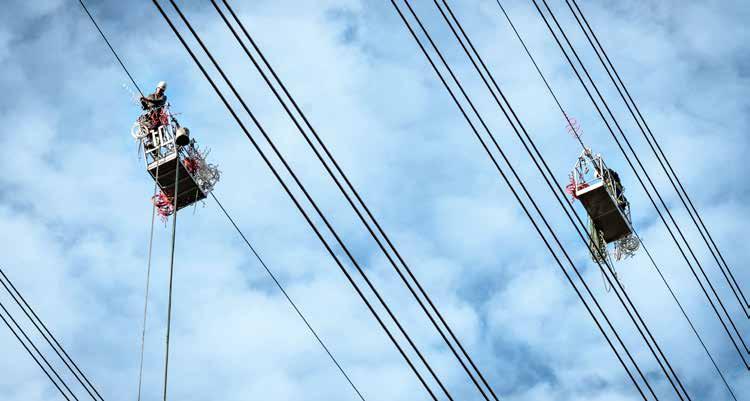
RISKS FOR BIRDS
A joint study by Natuurpunt, Natagora, Vogelbescherming Vlaanderen and the Flemish Institute for Nature and Forest Research (INBO) has shown that 3.4% of Elia’s network of overhead lines are hazardous to birds. Some high-voltage lines are practically invisible to flying birds. The most critical areas have been mapped and are being addressed gradually, in cooperation with Elia. Fitting markers to overhead lines significantly reduces the risk of collision. In late 2016, Elia began placing special ‘bird markers’ on a 9 km section of the new Stevin high-voltage line between Zeebrugge and Dudzele. Natuurpunt had identified this section as being par ticularly hazardous to birdlife.
CARBON ASSESSMENT
Energy transition is a vital step in the face of climate change. While Elia is already implementing projects to upgrade its grid and integrate a higher proportion of renewables into the energy mix, we also want to adopt an internal model which reflects and sup ports the energy transition. One way to do this is to reduce our emissions of greenhouse gases.
An action plan to reduce CO2 emissions from non-core activities is currently being implemented and should allow Elia to cut its current emissions (reducing energy consumption in buildings, increas ing the proportion of green energy consumed, improving the environmental performance of the Group’s vehicles and eco-driving, and so on). Elia began calculating carbon emissions from its core activities in 2016. The results will be finalised in early 2017 and an action plan will be drawn up.

Elia
Stakeholders’ Day
WHEN ELIA AND THE SECTOR COME FACE TO FACE
Elia’s
fourth Stakeholders’ Day, held in November 2016, continued our tradition of meeting our most important customers and contacts in mid-November each year. The topics discussed included trends and developments in the energy sector and how these would affect the electricity system, while the guest speaker was best-selling American author Jeremy Rifkin. The event was well-attended, confirming once more that Elia’s Stakeholders’ Day has become an unmissable networking opportunity for the sector.
Belgium’s energy policy is somewhat fragmented, and it is not so easy to manage. I think that Elia, as the national system operator, has a role to play in bringing together the interests of both power producers and distribution system operators. Annemie Vermeylen – Belgian Offshore Grid
Elia’s network of stakeholders is a major asset for the company. To me, the very fact of gathering stakeholders for an event is just as valuable as the actual speeches.
Ronnie Belmans – EnergyVille
Our energy market is undergoing a transition, which makes the situation especially volatile. Interests are changing and maps are being redrawn. It is important that Elia stays on course and keeps going –no steps backward.
Pieter-Jan Mermans – REstore
The Stakeholders’ Day is clear evidence that Elia wants to play a key role in society. Elia is positioning itself as a kind of custodian that watches over the system.
Wim Verrelst – CD&V consultancy Ceder


Elia’s annual Stakeholders’ Day demonstrates its desire to get closer to its customers and take them into account. By organising this event, Elia shows that it listens to its customers and tries to give them what they want. Luc Sterckx - President Febeliec http://bit.ly/2m0ISxW



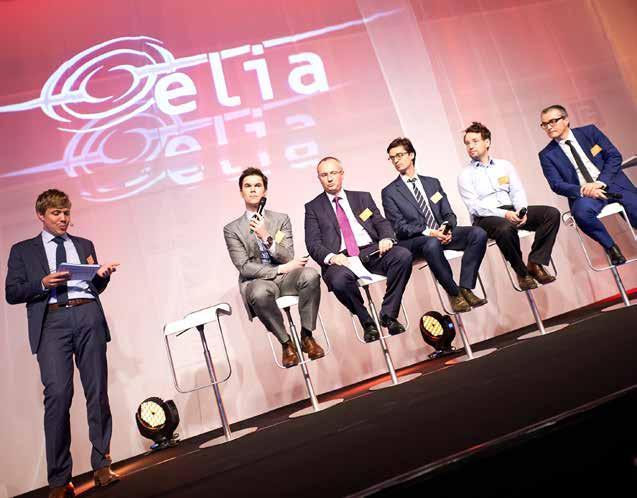 Dominique Verbelen Natuurpunt Research Department
Dominique Verbelen Natuurpunt Research Department
46 47 ANNUAL REPORT 2016
DISCOVER THE VIDEO REPORT ABOUT THE ELIA STAKEHOLDERS’ DAY (18 NOVEMBER 2016)
WE ALIGN CULTURE WITH STRATEGY


ELIA NEEDS A CORPORATE CULTURE THAT SUPPORTS ITS STRATEGIC PRIORITIES AND GOALS. CHANGE IS NECESSARY. WE HAVE DEFINED THREE CORE VALUES AND FOUR ASPIRATIONAL VALUES TO POINT OUR EMPLOYEES IN THE RIGHT DIRECTION AND HELP GUARANTEE THE SUCCESS OF THE TRANSITION AND OUR STRATEGY.
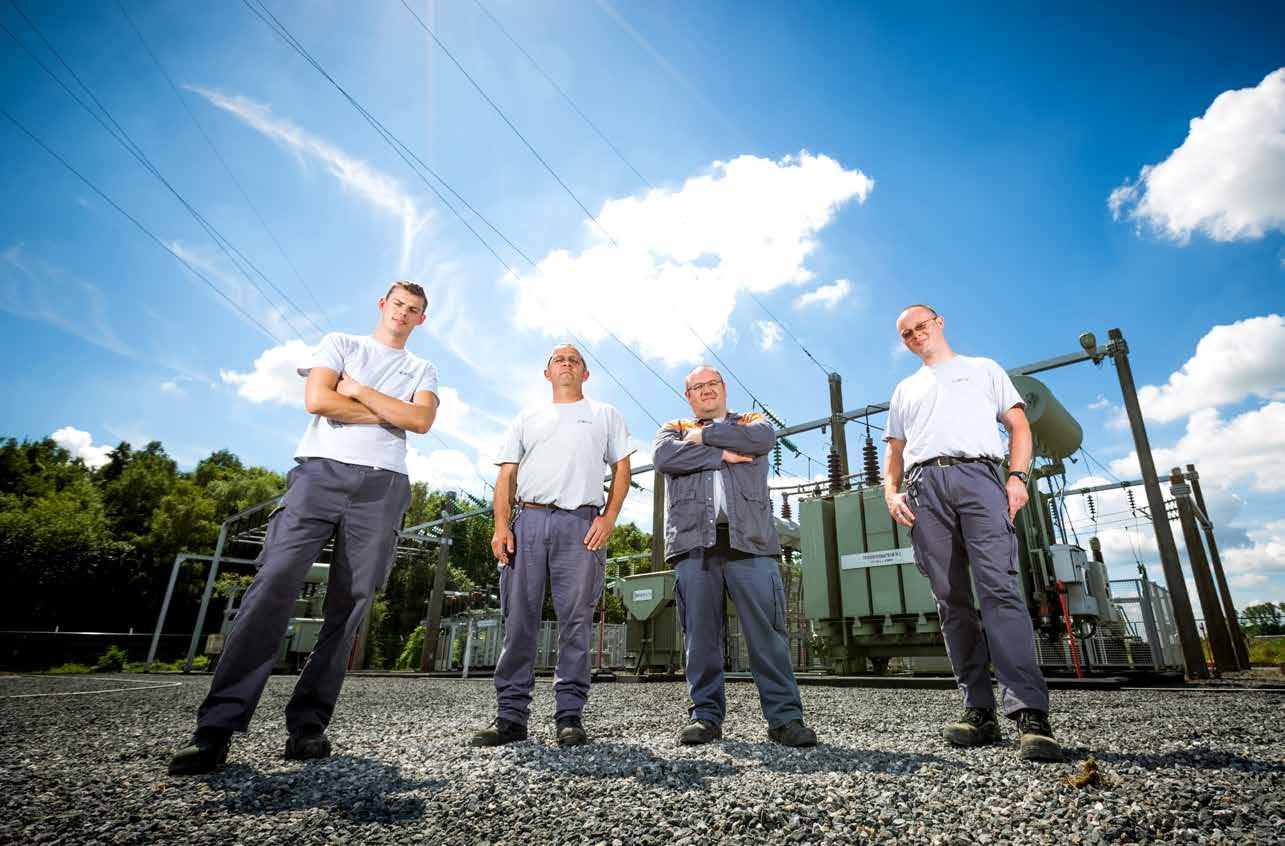
In 2016, Elia’s management undertook a series of in-depth discussions with a view to determining the company’s strategic choices and direction for the years to come. It soon became apparent that a change of culture would be required if the strategy was to be implemented successfully.
To that end, the three core and four aspirational values were selected in cooperation with represent atives from various Elia departments. These are an extension of Elia’s previous values and build on the company’s strengths. They form the basis of Elia’s new culture and constitute the starting point for all our activities.
Ilse Tant Chief HR & Internal Communication Officer at Elia
“In order to realize our strategy and respond to the challenges of the energy transition, we also have to change our culture.”
05 48 49
3 CORE VALUES
Our three core values reflect fundamental principles that are deeply rooted within Elia.
01 SAFETY ALWAYS COMES FIRST
Safety always comes first, everywhere and for everyone! As a company, we constantly invest in safety and expect our staff (both in the field and on administra tive sites), our subcontractors, our colleagues the distri bution system operators, and all others to work safely and responsibly at all times.
02
SERVING THE COMMUNITY
Elia wants to play its central role in the sector to the full and create value for society as a whole. Its staff keep that aim in mind in everything they do, constantly asking themselves what society wants and how it will gain.
03 TARGETING PERFORMANCE
Elia’s staff strive for maximum efficiency and quality so as to attain or, better yet, surpass their targets. They are results-oriented and deliver projects and services on time.
4 ASPIRATIONAL VALUES
In a changing energy sector, four ‘revamped’ aspira tional values are key to achieving Elia’s strategy. They are reflected in the behaviour and attitude of our staff.
01 WE ARE ENTREPRENEURIAL
Our staff work proactively and take initiatives with a view to improving how they work and exploring new ways of doing things.
02 WE COLLABORATE
Elia values collaboration, both within the company and with external partners. Our staff share their expertise and their information, question each other and thus ena ble their ideas to mature. They seek fruitful collaborations and win-win partnerships.

03 WE ARE ACCOUNTABLE
All of our staff take full responsibility for their pro jects and tasks. They achieve their motivating, ambitious targets and work hard on their projects until they are completed.

04 WE ARE AGILE
In a world of constant change, our staff embrace new developments, are proactive and persevere.
The CEO unveiled the new core and aspirational values to all of Elia’s staff at a number of meetings, including the information meeting for executives, on various Elia sites in autumn 2016. A large-scale internal communi cation campaign was run to support the launch of the company’s new culture and explain all the ins and outs to staff. Elia will continue its efforts to change its culture in 2017, with actions targeting individuals, teams and the company as a whole. A toolkit has been developed to help employees and managers get to grips with these new values and incorporate them into their day-to-day activities.
OFFICIAL OPENING OF THE NEW TRAINING CENTER
Elia’s Training Center in Brussels officially reopened on 20 January 2016, following renovation work designed to tailor it to the needs of a new generation of employees and make it more suitable for new forms of learning. The Training Center provides high-quality training to Elia employees and contractors to assist and support them as they seek to maintain and enhance the technical and safety skills they need to prepare and perform their tasks per fectly, without compromising their safety.
“Our employees need to train throughout their careers so that they can keep up with the latest developments in the sector and work safely at all times. The new centre offers a pleasant, modern setting for their continued professional development.” Frédéric Dunon, Chief Assets Officer at Elia
MALE/FEMALE RATIO
TRAINING
TRAINING PROGRAMMES FOR THE ASSETS AND INFRASTRUCTURE DIVISIONS
In 2016, HR continued to roll out its new training pro gramme for supervisors and operational managers in the Assets Division. The programme consists of four interac tive, practical modules and is part of Elia’s Operational & Safety Excellence project, which aims to enhance oper ational quality and safety.
Two further training programmes were developed in connection with the restructuring of the Infrastructure Division:
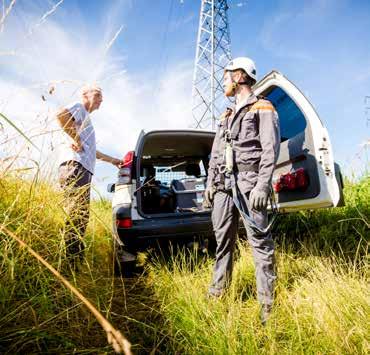
• the “relationship-based project management” pro gramme, which seeks to boost the impact of project managers within a matrix structure;
• a special training programme dedicated to project management, enabling project managers and program managers to train at the Project Management Institute (PMI) and receive Project Management Professional (PMP) certification.
50 51 05 ANNUAL REPORT 2016 WE ALIGN CULTURE WITH STRATEGY 81.63 % MALE 18.37 % FEMALE
1,225 NUMBER OF ELIA STAFF 14 NATIONALITIES 41 years & 3.78 months AVERAGE AGE 37.20 h AVERAGE HOURS OF TRAINING RECEIVED BY EACH EMPLOYEE http://bit.ly/EliaValues DISCOVER OUR VIDEO ON OUR VALUES
Elia regularly gives its staff opportunities to take part in sporting events, including the ‘20 km of Brussels’ race. The race puts staff’s spirit of com petition to the test in the name of a good cause: Elia uses its involvement in the event to raise money for Les Îles de Paix (Islands of Peace), an association working to foster the development of disadvantaged rural areas.

CARE4ENERGY: PROMOTING WELL-BEING AT WORK
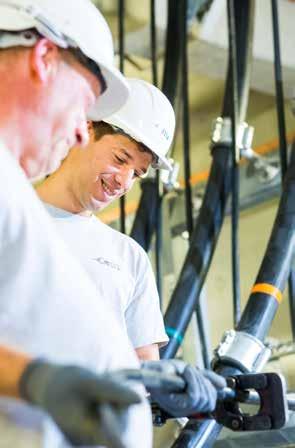



In early 2016, Elia launched Care4Energy, an umbrella programme bringing together all of the company’s initiatives to promote well-being. It aims to work with employees and for employees to create a sustainable, healthy and safe environment based on well-being and respect, so that everyone has the energy and vitality they need to shape the energy landscape of the future together.
Various campaigns and workshops were organised in 2016 to bring this vision to life, including actions designed to encourage employees to get more active and take the stairs more often, or to choose healthy drinks and snacks.
“These two training programmes tie in with the reorganization that has been undertaken within the Infrastructure Division, which aims to enhance the professionalism of our project management activi ties, among other things.” Aline Leys, HR Business Partner Infrastructure & EGI
PERFORMANCE MANAGEMENT SYSTEM REVIEWED
In 2016, Elia conducted a review of its Performance Management System for executives, based on feedback from staff. The aim of the exercise was to improve the link between the performance manage ment process and remuneration, make it more flex ible, and better meet the company’s needs. Since the review indicated that the current system could be improved, Elia will adapt the current performance management process to the new organizational needs and implement it in 2018.
“STRONGER TOGETHER”
This project aims to promote collaboration as a means of strengthening cohesion and improving mutual understanding between employees. With that in mind, a number of employees who normally work in an administrative environment were given the chance to go out in the field and learn about the day-to-day realities of other jobs, while other employees even swapped jobs for a day. All the par ticipants were highly enthusiastic about the experi ence, which will be repeated in 2017.
“It was a fascinating day. I had the chance to ask plenty of questions and learned a lot. For instance, I got a better insight into the impact that certain grid structure and design choices can have on dayto-day maintenance activities.” Marnix Wouters, Project Development & Portfolio Management at Elia (spent a day in the field with the Stalen sub stations’ team in May 2016)
Elia will continue to invest in its staff’s well-being in 2017, focusing on psychosocial health this time round.
MOBILITY AT ELIA
Congestion on the roads and the time wasted as a result, are a strong argument for introducing a dif ferent approach to mobility. In addition to offering staff the option to work remotely, Elia is continuing to apply its sustainable mobility policy, which aims to limit journeys and encourage sustainable mobil ity through a flexible, varied range of solutions for getting to work or travelling for other professional reasons.
Thanks to Elia’s Green Car Policy, increasing numbers of Elia executives are opting for greener alternatives to diesel-powered company cars.
Transferring skills through collaboration
Each
one of our teams is balanced in such a way that older employees can share their knowledge and skills with younger employees, ensuring that Elia does not lose this valuable expertise when they retire.
Robert Buekenhoudt and Kevin Croze are both members of the team that manages all

the high-voltage substations in southern Brussels and part of Wallonia. Robert has been with Elia for 37 years, while Kevin joined the company just one year ago.

Kevin, how do you benefit from working in tandem with Robert?
“37 years with Elia and nine years in the metalworking industry have given Robert an impressive skillset. He immediately knows what to do and how to do it properly. When I am working with him, I really feel supported and guided. have learnt so much from him.”
Robert, how are Elia’s new technicians trained?
“Each new recruit starts by receiving two years of training, with new targets every six months. This enables them to obtain all the certificates and skills they will need for their further career. To help them along the way, they go on training courses and work with older technicians every day.”
Of course, it is not only the technicians who transfer their skills. Each and every new hire, whether their position is technical or administrative, is mentored by a colleague from their very first day at Elia. This approach helps new Elia employees to settle in and easily get to grips with companyspecific subjects and skills.
“At Elia, peer coaching partnerships comprising a senior technician and a junior technician are the linchpin of our approach to training new hires.”
HOURS OF TRAINING PER PERSON
52 53 ANNUAL REPORT 2016
37.20 h AVERAGE
+ excellium 98 FLEXDRIVE HYBRID PLUG-IN HYBRID PETROL CARS 100% ELECTRIC BIKE LEASE OR BIKE PLAN 1 43 3 19 2 15 GREEN CAR POLICY
RUNNING THE ‘20 KM OF BRUSSELS’ RACE FOR A GOOD CAUSE http://bit.ly/EliaValues DISCOVER OUR VIDEO ON ELIA’S VALUES
AS WELL AS FURTHER INTEGRATING INNOVATIVE TECHNOLOGIES, WE STAY ABREAST OF THE LATEST DEVELOPMENTS IN THE ENERGY SECTOR: DOING THIS HELPS US TO STRENGTHEN OUR COMPANY AND MAKE THE ENERGY TRANSITION HAPPEN.
Elia is preparing for the future by keeping its eyes open for new developments in infrastructure management, system operation and integration of the Belgian markets in the European context. Innovation is the catalyst for a swift energy transition.

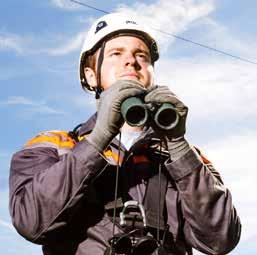
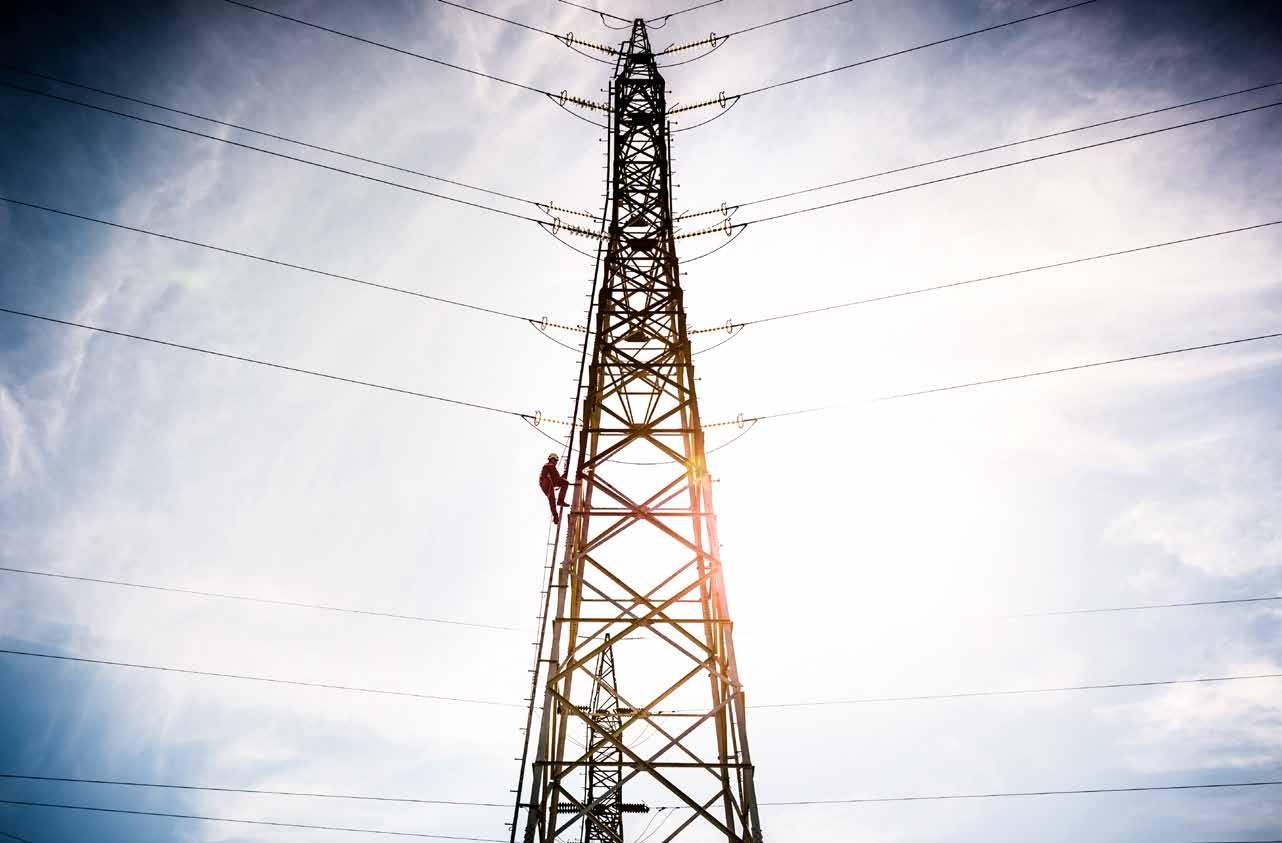
How can we improve our management of unpredic table renewable energy sources? How can we opti mise our use of existing infrastructure and exploit the potential of market coupling to the full? How should we handle the changes in consumer behaviour resulting from the rise of electric cars, heat pumps and batteries?
Elia organises initiatives to foster and reward innova tion within the company to ensure that Elia staff will always be at the forefront of the energy transition.
EEChris PeetersEE EECEO Elia
“Elia’s leadership in innovation will continue to support the European energy transition with new tech nologies and enhanced market mechanisms.”
06 54 55
WE HAVE OUR EYES WIDE OPEN FOR INNOVATION & GROWTH OPPORTUNITIES http://bit.ly/InnovationWindElia http://bit.ly/DronesAtElia DISCOVER OUR VIDEOS
“Being entrepreneurial and innovative is more important than ever before in our sector. The energy transition is not a hollow concept: it is happening right now. To turn this development to our advantage, Elia will lead the energy transition and help to implement it. That said, ideas have little value on their own – an innovative initiative can only really change things when it is put into practice.”
INNOVATION IN ASSET MANAGEMENT
EXCELLING IN MANAGING ASSETS ON THE GRID OF TOMORROW

DRONES FOR INFRASTRUCTURE MAINTENANCE

Using drones for infrastructure maintenance could be a worthwhile avenue for Elia to explore. When fitted with cameras, drones could be an innovative way to inspect, monitor and maintain Elia’s pylons. They offer many advantages because they can inspect pylons safely, more flexibly and more effi ciently without the power supply needing to be cut.
Following the publication of the Royal Decree on drones, Elia obtained a licence for drone operation and trained some of its employees to be certified drone pilots. The first drone-assisted projects were received positively, and we hope to build on these results in 2017.
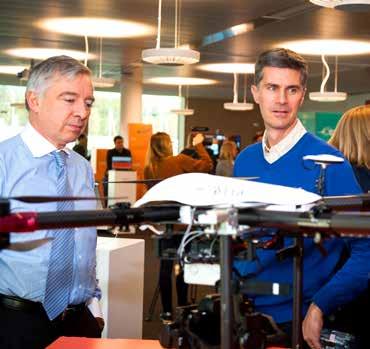
BEST PATHS
The Best Paths project contributes to overcoming the challenges associated with integrating renew able energies into the European energy mix. Best Paths designs new grid technologies intended to boost the capacity of the pan-European transmis sion grid and improve the grid’s flexibility.
Of the five sub-projects making up Best Paths, the Elia Group is in charge of the iRock.eu (Innovative Repowering of Corridors) demonstration focusing on the installation and use of technologies to improve the efficiency of overhead AC lines. Two new tech nologies are to be installed as part of the Stevin project.
Firstly, insulating arms are to be fitted to pylons on an existing 150 kV line, enabling the voltage level to be increased to 380 kV without having to build com pletely new pylons. Secondly, high-temperature lowsag (HTLS) conductors – which reduce the effects of sag when the temperature on the line is high – will also enable an increase in power on 380 kV lines.
INNOVATION IN MARKET FACILITATION
CONTINUING TO PLAY A PIONEERING ROLE IN MARKET FACILITATION

BIDLADDER: A PLATFORM GATHERING DIFFERENT BIDS FOR BALANCING ENERGY
BidLadder is a platform operated by Elia and gath ers different (kinds of) bids for balancing energy. Combined with a transfer of energy (ToE) solution, it enables balancing service providers (BSPs) like independent aggregators or grid users to offer Elia flexibility for balancing purposes, whereas today this option is only open to large generating facilities. Result: it will provide control engineers with an overall ranking for balancing energy, in particular all R3-related products, whether reserved or non-re served. Opening market access to BSPs will give Elia greater liquidity in the balancing energy mar ket, which is also positive for the community and in terms of integrating renewables into the Belgian grid.
FLEXIBILITY THROUGH BUILDINGS
Elia needs to identify new flexibility sources if it is to meet the growing demand for flexibility created by the ever-greater integration of intermittent generation sources. In the future, an increasing – and significant – share of these sources of flexibility will be con nected to the distribution grid. With that in mind, Elia is involved in a number of projects that are exploring various scenarios, including a scenario that would see small residential consumers contribute to the flexibility of the electricity system.
At the same time, Elia is running a study in one of its Brussels buildings (as well as other buildings in its partner’s portfolio) in cooperation with the start-up Enervalis. The study aims to test the feasibility of controlling the building’s energy consumption by changing the operation of certain devices, and to quantify the potential in terms of the volume of flexi bility for each user segment. Advanced control algo rithms are being used to support the operation of the future power supply system. The study launched in January 2016 and its findings are set to be pub lished in February 2017.
INNOVATION IN SYSTEM MANAGEMENT
SYSTEM OPERATION: DEVELOPING AND MANAGING THE ELECTRICITY GRID 2.0
AN ADVANCED MACHINE TO AID DISPATCHING This project set out to develop a model to detect the correlation between the various parameters influen cing grid imbalance and predict any imbalance within a period of 15 minutes to an hour.
Keeping the grid balanced is absolutely essential. The amount of electricity being injected must always be equal to the amount being consumed so as to keep the grid’s frequency at 50 hertz. Integration of renewable energy is making the grid more and more complex; as a result, it is becoming vital to be able to predict grid imbalances within a very short timeframe.
It is much more difficult than before for system operators to understand grid imbalance scenarios. The impact of variable generation (wind and solar energy) is just one factor among many others, such as increased activity on the intraday markets or flex ible generation units. This situation requires system operators to process and interpret vast quantities of data very quickly.
Over 150 employees took part in the Initiative Fair in late 2016. This event, which brought attendees face-to-face with Elia’s latest inno vations and initiatives for improvement, highlights the importance of inventiveness and encourages all of Elia’s staff to make sugges tions for improvement and engage in innovation.
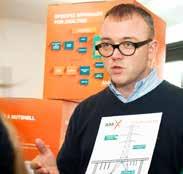 INITIATIVE FAIR: FOSTERING ENTREPRENEURIAL SPIRIT
Menno Janssens
Head of Innovation at Elia
INITIATIVE FAIR: FOSTERING ENTREPRENEURIAL SPIRIT
Menno Janssens
Head of Innovation at Elia
06 56 57 ANNUAL REPORT 2016 WE HAVE OUR EYES WIDE OPEN FOR INNOVATION & GROWTH OPPORTUNITIES
Matthias Masschelin Energy Planning and Balancing Manager at Elia

“Technologies and models developed by data experts will help to condense all this information and enable us to make the right decisions.”
GARPUR/GRASP: NEW METHODS FOR PLANNING AND OPERATING THE GRID
New approaches need to be identified in order to assess the grid’s reliability while taking account of the variability and uncertainty inherent in renewable energy generation systems.
Elia is endeavouring to develop new methods for the various stages involved in planning and operating the Belgian electricity grid through its contribution to the doctorate project GRASP and the European project GARPUR. Although the two projects address the same challenges, they approach them from dif ferent angles and have different aims.
GRASP, a doctorate project undertaken with the Université Libre de Bruxelles, seeks to develop a grid reliability assessment model for the opera tional planning stage. This model would factor in the scope for forecasting errors regarding wind and solar power generation. Moreover, GRASP is rooted in existing practices and suggests new procedures with a view to issuing recommendations based on a prototype that can be tested directly using real-life situations in Belgium.
The European project GARPUR aims to develop new probabilistic criteria and relevant indicators for assessing reliability at various stages (grid develop ment, asset management and grid operation) and evaluate their practical use (compared to the current ‘N-1’ criterion). To that end, GARPUR is examining every facet of the approach applied between the grid development stage (which is decided upon sev eral years in advance) and real-time operation and devising European recommendations to enable a gradual switch to a probabilistic approach.
OPEN INNOVATION: A NEW INITIATIVE FOR 2016
The central idea behind open innovation is that, in a world of widely distributed knowledge, companies like Elia cannot afford to rely entirely on their own ideas and conventional innovation techniques, but should instead engage in technical – and potentially financial – collaboration with other companies, like start-ups.
Elia Innovation Sharing Challenge
The award ceremony for the second Innovation Sharing Challenge took place in November 2016. This internal competition aims to improve day-to-day operations in the field with innovative proposals and solutions.
AUDIENCE AWARD
The prizewinners in this category were colleagues Joris Bauweraerts, Filip Folens and Pascal Vandererven, for their project ‘Mobile worksite electrical box with IT earthing fault detection function’.
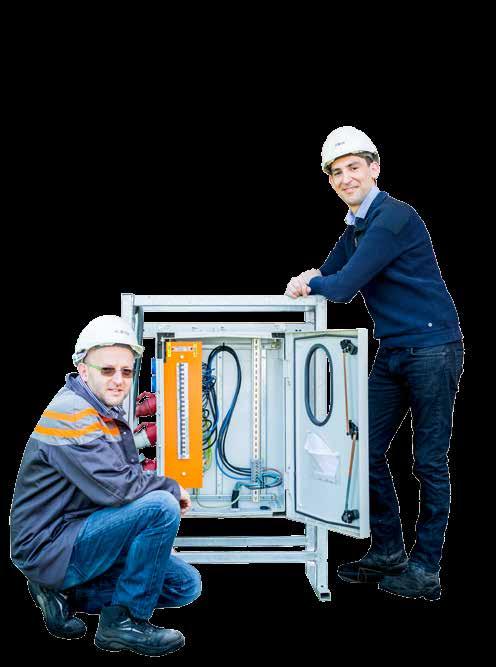
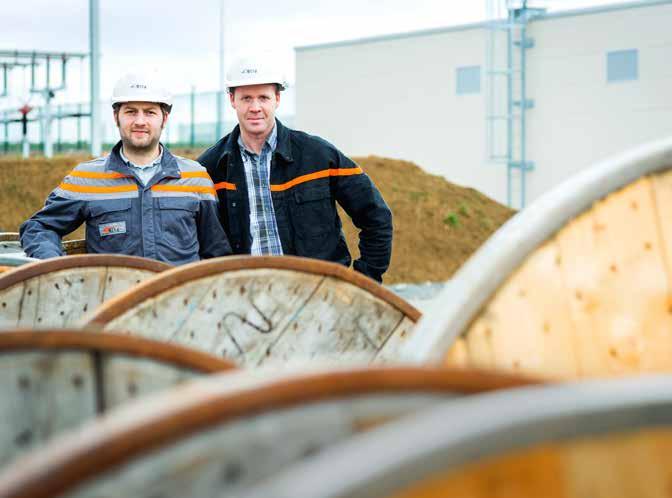
If the electrical box detects an earthing fault, it automatically cuts the contractor’s worksite power supply. If the fault is on the contractor’s side, which is often the case for systems on worksites, the alarm is cancelled and the duty officer does not need to travel to the worksite needlessly.
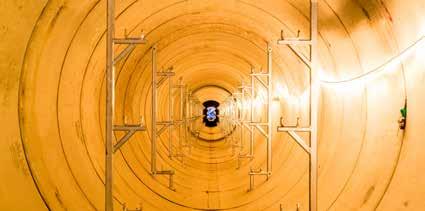
ORIGINALITY AWARD
The judging panel’s selection for the Originality Award was the SPACSI project, a team effort by Wim Bongaers, Rudi Coppieters, Davy Engels, Domenico Leracitano, Laurens Kumpen, Pascal Lavrysen, Piet Paesen, Juan-Marcos Quintans Caamaño, Rafael Schreurs and Michel Vanzeir from Secondary Systems.
This team’s many young members worked together to develop a training cabinet that is a perfect reproduction of one of our operational cabinets. Among other things, their invention will be used to familiarise other newcomers with our facilities.
GO FOR ZERO AWARD
“Elia launched its first-ever Start-up Challenge in the second half of 2016, with open innovation in mind. Through the competition, Elia hoped to identify startups with which it could work to increase public acceptance of the electricity grid. Elia sought start-ups that had come up with an innovative solution to help the public understand that building or renovating electricity infrastructure is necessary for society.” Ilse Tant, Chief Public Acceptance Officer at Elia
Over 30 ideas were submitted from throughout Europe, with five making the shortlist for the final.
The start-up with the best idea will be awarded a contract with Elia worth €20,000 to create a Proof of Concept. The start-ups in second and third place will win a free stay at one of onepoint’s incubators (located in Paris, Brussels, Amsterdam, Luxembourg and Montréal).
Open innovation is a paradigm that assumes that firms can and should use external ideas as well as internal ideas, and internal and external paths to market, as they look to advance their technology.
Projects to promote safety at Elia also got a moment in the spotlight during the award ceremony.
Miguel Leyder and Romain Jacques netted the Go for Zero Award for their TP Life Saver, a system that makes it possible to measure whether secondary voltage is present when a voltage transformer is commissioned for the first time. If no voltage is present, the voltage transformer may explode. In that case, the device triggers the circuit breaker for the field in question, thus eliminating the risk.
The winning projects will be rolled out further in 2017.
ELIA STAGES ITS FIRST START-UP CHALLENGE
Romain Jacques and Miguel Leyder
Filip Folens and Joris Bauweraerts
58 ANNUAL REPORT 2016
Go to www.elia.be TO FIND OUT MORE ABOUT THE WINNER
3 INNOVATION AWARDS FOR OUR COLLEAGUES
CORPORATE GOVERNANCE STATEMENT
ELIA SATISFIES SPECIFIC OBLIGATIONS IN TERMS OF TRANSPARENCY, NEUTRALITY AND NON-DISCRIMINATION TOWARDS ALL STAKEHOLDERS INVOLVED IN ITS ACTIVITIES.
AT ELIA, CORPORATE GOVERNANCE IS BASED ON TWO PILLARS:
– THE 2009 CORPORATE GOVERNANCE CODE 1, WHICH ELIA HAS ADOPTED AS ITS BENCHMARK CODE;
– THE ACT OF 29 APRIL 1999 ON THE ORGANISATION OF THE ELECTRICITY MARKET AND THE ROYAL DECREE OF 3 MAY 1999 ON THE MANAGEMENT OF THE ELECTRICITY TRANSMISSION SYSTEM APPLICABLE TO ELIA AS A TRANSMISSION SYSTEM OPERATOR.
BOARD OF DIRECTORS
COMPOSITION OF THE MANAGEMENT BODIES AS AT 31 DECEMBER 2016
BOARD OF DIRECTORS2
CHAIRPERSON
• Miriam Maes, independent director
VICE-CHAIRMEN
• Claude Grégoire, director Publi-T
• Geert Versnick, director Publi-T
DIRECTORS
• Michel Allé, from 17 May 2016, independent director

• Jacques de Smet, independent director
• Luc De Temmerman, independent director
• Frank Donck, independent director
• Cécile Flandre, director Publi-T
• Philip Heylen, director Publi-T
• Luc Hujoel, director Publi-T
• Jane Murphy, independent director
• Dominique Offergeld, director Publi-T
• Saskia Van Uffelen, independent director
• Peter Vanvelthoven, from 24 March 2016, director Publi-T
REPRESENTATIVE OF THE FEDERAL GOVERNMENT WITH AN ADVISORY ROLE
• Nele Roobrouck
ADVISORY COMMITTEES TO THE BOARD OF DIRECTORS3
CORPORATE GOVERNANCE COMMITTEE
• Luc Hujoel, Chairman


• Frank Donck
• Philip Heylen
• Jane Murphy
• Saskia Van Uffelen
AUDIT COMMITTEE
• Jacques de Smet, Chairman
• Luc De Temmerman
• Frank Donck
• Dominique Offergeld
• Geert Versnick
REMUNERATION COMMITTEE
• Luc De Temmerman, Chairman
• Jacques de Smet
• Claude Grégoire
• Saskia Van Uffelen
AUDITORS
• KPMG Réviseurs d’Entreprises SCCRL, represented by Benoît Van Roost
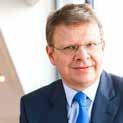
• Ernst & Young Réviseurs d’Entreprises SCCRL, represented by Marnix Van Dooren
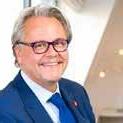


MANAGEMENT COMMITTEE4
• Chris Peeters, Chairman and Chief Executive Officer

• Markus Berger, Chief Infrastructure Officer
• Frédéric Dunon, Chief Assets Officer
• Pascale Fonck, Chief External Relations Officer5
• Ilse Tant, Chief Human Resources and Internal Communication Officer


• Frank Vandenberghe, Chief Customers, Market & System Officer
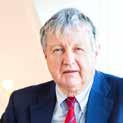
• Catherine Vandenborre, Chief Financial Officer

SECRETARY-GENERAL
• Gregory Pattou
1. The Corporate Governance Code can be found on the website of the Corporate Governance Committee (www. corporategovernancecommittee.be).
2. Composition of the Board of Directors of Elia System Operator and of Elia Asset as at 31 December 2016.
3. Composition of the advisory committees to the Board of Directors of Elia System Operator and of Elia Asset as at 31 December 2016.
4. Composition of the Management Committee of Elia System Operator and of Elia Asset as at 31 December 2016.
5. The Board of Directors appointed Pascale Fonck as a member of the Managment Committee on 23 June 2016.

 Geert Versnick
Cécile Flandre
Saskia Van Uffelen
Michel Allé Jacques de Smet
Jane Murphy Dominique Offergeld
Peter Vanvelthoven
Claude Grégoire
Frank Donck
Philip Heylen
Miriam Maes
Luc De Temmerman
Luc Hujoel
Geert Versnick
Cécile Flandre
Saskia Van Uffelen
Michel Allé Jacques de Smet
Jane Murphy Dominique Offergeld
Peter Vanvelthoven
Claude Grégoire
Frank Donck
Philip Heylen
Miriam Maes
Luc De Temmerman
Luc Hujoel
6160
ANNUAL REPORT 2016 CORPORATE GOVERNANCE STATEMENT
BOARD OF DIRECTORS
The Boards of Directors of Elia System Operator and Elia Asset consists of 14 members, none of whom perform a management role within either of those two companies. The same directors sit on the Boards of both companies. Half of the directors are inde pendent directors, satisfying the conditions set out in Article 526ter of the Belgian Companies Code and in the articles of association, and having received a positive unanimous opinion by CREG on their independence.
In accordance with the provisions stipulated by legislation and the articles of association, these Boards of Directors are supported by three committees – the Corporate Governance Committee, the Audit Committee and the Remuneration Committee – which are the same for Elia System Operator and Elia Asset. The Boards of Directors ensure that these committees operate in an efficient manner.
APPOINTMENT OF DIRECTORS
Peter Vanvelthoven was co-opted by the Board of Directors on 24 March 2016 to replace Steve Stevaert, who died on 2 April 2015. On 17 May 2016, the Ordinary General Meeting definitively appointed Peter Vanvelthoven as a non-independent director (pro posed by the holders of Class C shares) for a period expiring imme diately after the 2017 Ordinary General Meeting for the financial year ending 31 December 2016.
The Ordinary General Meeting of 17 May 2016 also appointed Michel Allé as an independent director for a period expiring imme diately after the 2022 Ordinary General Meeting for the financial year ending 31 December 2021.
The directorships of all of the directors except Michel Allé, Luc De Temmerman, Frank Donck, Luc Hujoel, Saskia Van Uffelen and Geert Versnick are due to expire after the 2017 Ordinary General Meeting of Elia System Operator and of Elia Asset for the finan cial year ending 31 December 2016. Michel Allé’s directorship of Elia System Operator and of Elia Asset will expire after the com panies’ 2022 Ordinary General Meeting for the financial year ending 31 December 2021. Luc De Temmerman, Frank Donck, Saskia Van Uffelen, Luc Hujoel and Geert Versnick’s directorships of Elia System Operator and Elia Asset will expire after the com panies’ 2020 Ordinary General Meeting for the financial year end ing 31 December 2019. The six-year term of these directorships diverges from the term of four years recommended by the Belgian Corporate Governance Code, a fact justified by the technical, finan cial and legal specificities and complexities associated with the tasks of the transmission system operator, which call for greater experience in those areas.
It should be remembered that the appointment of independent and non-independent directors of the Elia System Operator and Elia Asset Boards of Directors, as well as the composition and opera tion of their committees, are subject to specific corporate govern ance rules. These provisions are laid down in the Act of 29 April 1999 on the organisation of the electricity market and in the com panies’ articles of association.
The Act of 29 April 1999 on the organisation of the electricity mar ket gave the Corporate Governance Committee the important task of putting forward candidates for the role of independent director.
The directors are appointed on the basis of the list of candidates drawn up by the Corporate Governance Committee. For each can didate, the Committee takes into account the up-to-date CV and their sworn declaration concerning the independence criteria as stipulated by legislation applying to Elia and the company’s articles of association. The general meeting then appoints the independent directors. These appointments are submitted to the CREG for its assent on the independence of each independent director. A simi lar procedure applies where an independent directorship becomes vacant during the relevant term of office and where the Board co-opts a candidate put forward by the Corporate Governance Committee.
The Corporate Governance Committee therefore acts as a nomi nating committee for independent directors. For the appointment of non-independent directors, there is no nominating committee to make recommendations to the Board. This situation therefore devi ates from that prescribed by the Corporate Governance Code. This divergence can be explained by the fact that the Board of Directors always strives, insofar as possible, for consensus. Moreover, no sig nificant decision can be made without a majority within the groups of independent directors and non-independent directors.
AUDITORS
The Ordinary General Meeting of Elia System Operator and of Elia Asset held on 20 May 2014 reappointed Ernst & Young Réviseurs d’Entreprises SCCRL and KPMG Réviseurs d’Entreprises SCCRL as auditors of these companies for a period of three years. Their term of office will come to an end after the Ordinary General Meeting of Elia System Operator and of Elia Asset of 2017 relat ing to the financial year ending 31 December 2016. Ernst & Young Réviseurs d’Entreprises SCCRL was represented by Marnix Van Dooren for the exercise of this office. KPMG Réviseurs d’Entre prises SCCRL was represented by Benoît Van Roost for the exer cise of this office.
BOARD OF DIRECTORS’ ACTIVITY REPORT
The Board of Directors exercises at least the following powers (non-exhaustive list):
• It defines the general, financial and dividends policy of the com pany, as well as its values and strategy. In transposing the values and strategy into primary guidelines, the Board of Directors takes into account corporate social responsibility, gender diversity and diversity in general;
• It exercises the powers given to it by or pursuant to the Belgian Companies Code, by the Act of 29 April 1999 on the organisation of the electricity market and by the articles of association;
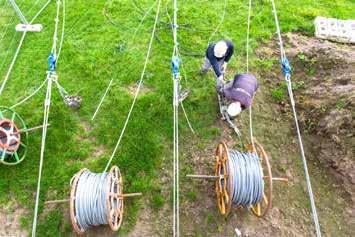
• It takes all action appropriate or necessary to carry out the corpo rate purpose, excluding powers reserved for the General Meeting by law or the articles of association.
• It ensures oversight. Within this context it provides, inter alia, gen eral oversight of the Management Committee in accordance with legal restrictions concerning access to commercial data and other confidential information relating to grid users and the processing of such data; as part of this oversight it also monitors the way in which the business of the company is carried out and developed in order to, among other things, assess whether the company is being properly managed. In addition, it monitors and evaluates the effectiveness of the advisory committees to the Board and the manner in which business is carried out.
The Boards of Directors of Elia System Operator and Elia Asset met 11 times in 2016.
The following people were absent from one or more meetings held in 2016, bearing in mind the date of their appointment: Michel Allé1 (one meeting), Jacques de Smet (one meeting), Frank Donck (two meetings), Cécile Flandre (two meetings), Dominique Offergeld (two meetings), Claude Grégoire (two meetings), Philip Heylen (three meetings), Luc Hujoel (one meeting), Peter Vanvelthoven2 (four meetings), Geert Versnick (one meeting) and Saskia Van Uffelen (two meetings).
Members who are unable to attend usually have a representative. In accordance with Article 19.4 of the Elia System Operator articles of association and Article 18.4 of the Elia Asset articles of association, members who are absent or unable to attend may grant a written proxy to another member of the Board to represent them at a given meeting of the Board of Directors and vote on their behalf at that meeting. However, no representative can represent more than two directors.
SIGNIFICANT EVENTS IN 2016 AMENDMENTS TO THE ARTICLES OF ASSOCIATION FOLLOWING IMPLEMENTATION OF THE CAPITAL INCREASE RESERVED FOR STAFF MEMBERS
The Extraordinary General Meeting of Elia System Operator of 17 May 2016 approved the proposed capital increase reserved for members of staff of the company and its Belgian subsidiaries.
This capital increase took place in two stages, specifically in December 2016 and March 2017, for a maximum total of €6 mil lion (maximum of €5,300,000 in 2016 and maximum of €700,000 in 2017) subject to the issuing of new Class B shares, with cancel lation of the preferential subscription right of existing shareholders in favour of staff members of the company and its Belgian subsid iaries, if necessary below the accounting par value of the existing shares in the same class.
The Extraordinary General Meeting decided to set the issue price at a price equal to the average closing prices 30 calendar days prior to 25 October 2016, for the 2016 capital increase, and prior to 31 January 2017, for the 2017 capital increase, less 16.66%.
The total value of the 2016 capital increase (including share pre mium) was €5,299,963.59. 140,919 Class B shares in Elia System Operator were issued.
Accordingly, Articles 4.1 and 4.2 of the articles of association of Elia System Operator relating to the share capital and the number of shares were amended on 22 December 2016.
The latest version of Elia System Operator’s articles of association is available in full on the company’s website (www.eliagroup.eu, under ‘Investor Relations’ and www.elia.be, under ‘Elia’, ‘Corporate Governance’).
CHANGES WITHIN THE BOARD OF DIRECTORS
Following the death of Steve Stevaert on 2 April 2015, his non-in dependent directorships of Elia System Operator and Elia Asset expired on that same date. The Board of Directors co-opted Peter Vanvelthoven to replace him on 24 March 2016. Peter Vanvelthoven was then definitively appointed as a non-independent director (pro posed by the holders of Class C shares) by the Ordinary General meeting of 17 May 2016, for a period expiring immediately after the 2017 Ordinary General Meeting for the financial year ending 31 December 2016.
The Ordinary General Meeting of 17 May 2016 also appointed Michel Allé as an independent director for a period expiring imme diately after the 2022 Ordinary General Meeting for the financial year ending 31 December 2021.
1
2
62 63 ANNUAL REPORT 2016
CORPORATE GOVERNANCE STATEMENT
Michel Allé has been a director since 17 May 2016.
Peter Vanvelthoven has been a director since 24 March 2016.
CHANGE IN THE COMPOSITION OF THE MANAGEMENT COMMITTEE
On 23 June 2016, the Board of Directors of Elia System Operator and of Elia Asset decided to appoint Pascale Fonck to the Management Committee, with immediate effect.
SIGNIFICANT EVENTS AFTER THE BALANCE SHEET DATE
Following a decision taken by the Board of Directors of Elia System Operator and of Elia Asset, Patrick De Leener was appointed to replace Frank Vandenberghe on the Management Committee from 1 February 2017. Patrick De Leener holds the position of Chief Customers, Market and System Officer. Furthermore, Peter Michiels was appointed to the Management Committee with effect as from 3 January 2017. He holds the position of Chief Human Resources & Internal Communication Officer.
For the other significant events in 2016, see the section Elia in 2016 and pages 8 and 10.
REMUNERATION COMMITTEE
In addition to its usual support role to the Board of Directors, the Remuneration Committee is responsible, pursuant to Article 526quater of the Belgian Companies Code, the Act of 29 April 1999 on the organisation of the electricity market and the articles of association, for making recommendations to the Board of Directors regarding remuneration policy and the individual remuneration of members of the Management Committee and directors. The Remuneration Committee also draws up a remuneration report for presentation at the Ordinary General Meeting.
The Remuneration Committee met six times in 20161
The company evaluates its management staff on a yearly basis in accordance with management performance policy. This policy also applies to members of the Management Committee. Accordingly, the Remuneration Committee evaluates the members of the Management Committee on the basis of a series of collective and individual targets, of a quantitative and qualitative nature.
It is noted that remuneration policy concerning the variable portion of the Management Committee’s remuneration was adapted to take account of the implementation of multi-year tariffs. Consequently, since 2008 the salary scheme for members of the Management Committee has included, among other things, an annual variable remuneration and long-term profit-sharing spread out over the mul ti-year regulation period. The annual variable remuneration has two parts: the attainment of collective quantitative targets and individual performance, including progress on business projects.
The Remuneration Committee also approved the proposed collec tive targets for the Management Committee for 2016. In addition, the Remuneration Committee approved the remuneration report, which is part of the annual report for 2015.
The Remuneration Committee also submitted a proposal for an amendment to the rules on the remuneration of directors to the General Meeting of 17 May 2016. This proposal was approved.
AUDIT COMMITTEE
In addition to its usual support role to the Board of Directors, the Audit Committee is, pursuant to Article 526bis of the Belgian Companies Code, the Act of 29 April 1999 on the organisation of the electricity market and the articles of association, responsible for:
• examining accounts and controlling budgets;
• monitoring financial reporting procedures;
• ensuring the effectiveness of the company’s internal control and risk management systems;
• following up on internal audits and their effectiveness;
• following up on the statutory audit of annual accounts;
• evaluating and verifying the independence of auditors;
• making proposals to the Board of Directors on the appointment and re-election of auditors and on the terms of their appointment;
• investigating, where appropriate, any issues that resulted in the resignation of auditors and making proposals as to what actions, if any, should be taken in this respect;
• verifying the nature and extent of non-audit services provided by auditors;
• verifying the effectiveness of external audit procedures.
Pursuant to Article 96(1)(9) of the Belgian Companies Code and the articles of association, this report must contain justification of the independence and accounting and auditing competence of at least one member of the Audit Committee. The internal rules of proce dure of the Audit Committee require, in this respect, that all mem bers of the Audit Committee have the sufficient experience and expertise required to exercise the role of the Audit Committee, par ticularly in terms of accounting, auditing and finance. On the basis of this rule, the professional experience of at least two members of the Audit Committee must be detailed in this report.
Jacques de Smet, Chairman of the Audit Committee, and Dominique Offergeld, member of the Audit Committee, both have extensive experience and expertise in the accounting and auditing area.
S.A. (1975-1995), BELGO-KATANGA S.A. (1996-2000), IBEL S.A. (1995-2000) and President of the Financial Executives Institute of Belgium (2002-2013). Since 1986, he has been Managing Director of GEFOR S.A. (a consultancy firm specialising in the area of corpo rate finance and, in particular, the negotiation of bank credit). He sits on the Boards of Directors of SABCA (as a permanent represent ative of GEFOR) and Wereldhave Belgium and is Chairman of the Audit Committees of these companies.
Dominique Offergeld (non-independent director of Elia System Operator and of Elia Asset) has a degree in economics and social science (specialisation: public economics) from Université Notre Dame de la Paix in Namur. She has taken various extra-academic programmes, including the General Management Program at Cedep (INSEAD) in Fontainebleau (France). She started her career at Générale de Banque (now BNP Paribas Fortis) in the corporate finance department in 1988, and was subsequently appointed as specialist advisor to the vice-president and minister for economic affairs of the Walloon Region in 1999. In 2001 she became advi sor to the Deputy Prime Minister and Minister for Foreign Affairs. Between 2004 and 2005, she was deputy director of the office of the minister for energy, subsequently becoming general advisor to the SNCB holding company in 2005. She was previously director of (among others) Publigaz and government commissioner at Fluxys. She was also Chairwoman of the Board of Directors and Audit Committee of SNCB. Between 2014 and 2016, she was Director of the Minister for Mobility’s Strategy Unit, with responsibility for Belgocontrol and the SNCB. She is CFO of ORES SCRL, a position she also held between 2008 and 2014.
The Audit Committee may investigate any matter that falls within its remit. For this purpose, it is given the resources it needs to perform this task, has access to all information, with the exception of con fidential commercial data concerning grid users, and can call on internal and external experts for advice.
The Audit Committee met six times in 2016.
The Committee examined the annual accounts for 2016, under both Belgian GAAP and IFRS. It also examined the half-yearly results as at 30 June 2016 and the 2016 quarterly results, in accordance with Belgian GAAP and IFRS rules.
CORPORATE GOVERNANCE COMMITTEE
In addition to its usual support role to the Board of Directors, the Corporate Governance Committee is, pursuant to the Act of 29 April 1999 on the organisation of the electricity market and the arti cles of association, responsible for:
• putting forward candidates to the General Meeting to be appointed as independent directors;
• giving prior approval for the appointment and/or removal (where applicable) of Management Committee members;
• examining, at the request of any independent director, the Chairman of the Management Committee or any competent federal and/or regional regulatory body or bodies for the electric ity market, all cases of conflicts of interests between the system operator, on the one hand, and a dominant shareholder, munici pal shareholder or company associated with or linked to a dom inant shareholder, on the other hand, and to report to the Board of Directors on the matter. This responsibility aims to strengthen the directors’ independence above and beyond the procedure detailed in Article 524 of the Belgian Companies Code, which the company also applies;
• deciding on cases of incompatibility on the part of members of the Management Committee and personnel;
• ensuring the application within the company of the provisions laid down by law, regulations, decrees and other instruments relating to the operation of electricity systems, evaluating their effective ness in view of the objectives for the independent and impar tial operation of those systems, and ensuring compliance with Articles 4.4 and 13.1(2) and (3) of Elia System Operator’s articles of association. A report on this subject is submitted every year to the Board of Directors and the federal and/or regional body or bodies responsible for regulating the electricity market;
• convening, at the request of at least one third of the members, meetings of the Board of Directors in accordance with the formali ties for calling meetings as laid down in the articles of association;
1. Including one meeting held before a notary to formally record the capital increase reserved for staff members with respect to Elia System Operator.
The Remuneration Committee of Elia Asset met five times.
Jacques de Smet (independent director of Elia System Operator and of Elia Asset) has an economics degree from the University of Brussels. He started his career as an auditor with Peat Marwick Mitchell & Co (now KPMG). He joined the Tractionel group (now GDF Suez) in 1979, initially as assistant to the CEO of the holding company. He was subsequently assigned to the financial depart ment of the company of the Frima Viking SA group, later becom ing CFO of Chamebel SA. In 1987, he was a member of the Management Committee of the venture capital investment com pany Prominvest SA. From 1988 to 2002 he was Chief Financial Officer and a member of the Management Committee of D’Ieteren SA and the Boards of Directors of all subsidiaries of the group, including AVIS EUROPE PLC and BELRON. Between 2002 and 2005 he was Chief Financial Officer of the Ziegler group. In 2009, he was appointed as a member of the Board of Directors of SABCA S.A. He has also been a member of the Boards of Directors of UCO S.A. (1977-2001), LA LIEVE S.A. (1978-1996), LYS-LIEVE
The Committee took note of the internal audits carried out and the recommendations made.
The Committee follows an action plan for each audit carried out, in order to improve the efficiency, traceability and awareness of the areas audited and thereby reduce the associated risks and provide assurance that the control environment and risk management are aligned. The Committee followed the various action plans from a number of perspectives (timetable, results, priorities) on the basis, among other things, of an activity report from the internal audit department. The Audit Committee noted the strategic risks and carried out ad hoc risk analyses based on the changing environ ment in which the group operates. The Audit Committee also con tinued to pursue environmental issues.
• examining, after notification by a director, whether a director’s membership of the supervisory board, the Board of Directors or bodies legally representing an undertaking which exercises con trol, directly or indirectly, over an electricity producer and/or sup plier complies with Article 9.1b), c) and d) of Directive 2009/72/ EC of the European Parliament and of the Council of 13 July 2009 concerning common rules for the internal market in electricity and repealing Directive 2003/54/EC, and reporting on this matter to the Board of Directors. As part of this examination, the Committee takes account of the role and influence that the director con cerned has in the undertaking concerned and of the degree of control or influence that the undertaking concerned has over its subsidiary. The Committee also examines whether, in the exercis ing of the director’s role within the company, there is the potential or motive for favouring certain generation or supply interests as regards access to and investment in the grid, to the detriment of other grid users;
64 65 ANNUAL REPORT 2016
CORPORATE GOVERNANCE STATEMENT
• ensuring, prior to any appointment of a director, irrespective of whether such appointment concerns a new director or the re-election of an existing director, whether the candidate direc tor takes account of the incompatibilities set forth in the compa ny’s articles of association. To this end, every candidate director is required to provide the Committee with an overview of (i) any offices he or she holds on the Board of Directors, supervisory board or any other body of other legal entities other than the company and (ii) any other functions or activities, paid or unpaid, which he or she carries out for an undertaking performing any of the following functions: the generation or supply of electricity.
The Committee met seven times in 2016.
The Committee is informed regularly about important files, in com pliance with confidentiality rules, such as amendments to the articles of associations, changes to the Corporate Governance Charter, changes to its internal rules of procedure and the inter nal rules of procedure of the Board of Directors, the succession of members of the Board of Directors, including its Chairman and Vice-Chairmen. In line with its competences pursuant to the law and the articles of association, the Committee examined in 2016 the succession of Jean-Marie Laurent Josi as a director, formu lated a proposition to nominate Michel Allé as independent direc tor, examined and pre-approved the nomination of new members of the Management Committee, as well as analysed compliance with requirements in the area of full ownership unbundling as foreseen by law and by the articles of association.
EVALUATION
In 2016, the Board of Directors of Elia System Operator and of Elia Asset organised a formal procedure for evaluating its own function ing (including an evaluation of the global contribution of the direc tors), that of its committees and the interaction between the Board of Directors and the Management Committee. In 2016, the Board did not organise an individual evaluation in accordance with provi sion 4.13 of the Corporate Governance Code.
The evaluation procedure in 2016 was conducted in accordance with provision 4 of the Corporate Governance Code, which the company has adopted as its benchmark code.

MANAGEMENT COMMITTEE
Pursuant to Article 9(9) of the Act of 29 April 1999 on the organ isation of the electricity market, the Management Committee is responsible for:
• the operational management of the electricity grids, including commercial, technical, financial, regulatory and personnel issues related to such operational management;
• day-to-day management of the system operator;
• the exercise of powers given to it under the articles of association;
• the exercise of powers delegated to it by the Board of Directors, in accordance with the general policy rules and principles and the resolutions adopted by the Board of Directors.
The Management Committee has all powers necessary, including the power of representation, and sufficient margin for manoeuvre to exercise the powers that have been delegated to it and to propose and implement a corporate strategy, it being understood that these powers do not in any way impact the simultaneous ultimate con trol and power of the Board of Directors, without prejudice to the obligation on the part of the Board of Directors to observe the legal restrictions in terms of access to commercial data and other confi dential data relating to grid users and the processing of such data.
The Management Committee generally meets formally at least once a month. Its members also attend informal weekly meetings. Members who are unable to attend usually have a representative. A written proxy, conveyed by any means (of which the authen ticity of its source can be reasonably determined) can be given to another member of the Management Committee, in accord ance with the internal rules of procedure of the Management Committee. However, no representative may represent more than two members.
In 2016, the Management Committee met on 14 occasions for Elia System Operator and on 14 occasions for Elia Asset.
Each quarter, the Management Committee reports to the Board of Directors on the company’s financial situation (in particular on the balance between the budget and the results stated). It also reports on transmission system management at each meeting of the Board of Directors. As part of its reporting on management of the trans mission system in 2016 the Management Committee kept the Board informed of developments in legislation applying to the com pany, the company’s financial situation, the situation of its subsidi aries, the main decisions taken by regulators and administrations, as well as the monitoring and development of major investment projects.
CODE OF CONDUCT
Following the entry into force of European Regulation (EU) No. 596/2014 on market abuse, Elia amended its Code of Conduct that aims to prevent staff and those with leadership responsibilities in the Elia group from potentially breaking any laws on the use of priv ileged information and market manipulation. The Code of Conduct lays down a series of regulations and communication obligations for transactions by those individuals in relation to their Elia System Operator securities, in accordance with the provisions of the Market Abuse Regulation and the Act of 2 August 2002 on monitoring of the financial sector and other financial services. This Code of Conduct is available on the company’s website (www.elia.be, under ‘Elia’, ‘Corporate Governance’).
CORPORATE GOVERNANCE CHARTER AND INTERNAL RULES OF PROCEDURE OF THE BOARD OF DIRECTORS, THE BOARD’S ADVISORY COMMITTEES AND THE MANAGEMENT COMMITTEE


The Corporate Governance Charter and the internal rules of pro cedure of the Board of Directors, the Board’s Advisory Committees and the Management Committee can be found on the company’s website (www.elia.be, under ‘Elia’, ‘Corporate Governance’).




TRANSPARENCY RULES – NOTIFICATIONS
Elia System Operator received no notifications in 2016 within the meaning of the Act of 2 May 2007 on disclosure of major share holdings in issuers whose shares are admitted to trading on a regu lated market and laying down miscellaneous provisions, and within the meaning of the Royal Decree of 14 February 2008 on disclosure of major shareholdings.
In accordance with Article 15 of the Act of 2 May 2007, Elia System Operator gave notice of the capital increase reserved for the staff of Elia System Operator and of its Belgian subsidiaries, which led to the issuing of 140,919 new shares in Elia System Operator and which was formally recorded before a notary on 22 December 2016, through a press release published on its website.
As per the Act of 2 May 2007 and the Royal Decree of 14 February 2008 (on disclosure of major shareholdings in listed compa nies) and following the capital increase reserved for Elia System Operator staff members, on 17 January 2017 Publi-T notified Elia System Operator that its stake in Elia System Operator had fallen below the threshold of 45% of total Elia System Operator shares on 22 December 2016 and that its shareholding in Elia System Operator was now 44.97%. Société Fédérale de Participations et d’Investissement, with which Publi-T acts in conjunction, notified Elia System Operator on 17 January 2017 that its shareholding in Elia System Operator had decreased to 2.02% on 22 December 2016. Their total stake in Elia System Operator is therefore 46.99%. The change in the percentages of their shareholdings is a result of the capital increase reserved for staff in late 2016; the number of shares held by Publi-T and Société Fédérale de Participations et d’Investissement did not change. Elia System Operator has issued a total of 60,891,158 shares.
Chris Peeters
Frédéric Dunon
Frank Vandenberghe Pascale Fonck
Markus Berger Ilse Tant
Catherine Vandenborre
66 67
ANNUAL REPORT 2016
MANAGEMENT COMMITTEE CORPORATE GOVERNANCE STATEMENT
REMUNERATION REPORT
Remuneration of the members of the Board of Directors and the Management Committee
PROCEDURE APPLIED IN 2016 TO DEFINE THE REMUNERATION POLICY AND THE REMUNERATION OF MEMBERS OF THE BOARD OF DIRECTORS AND THE MANAGEMENT COMMITTEE
In accordance with Articles 16.1 and 15.1 of the respective arti cles of association of Elia System Operator and Elia Asset, a draft remuneration policy for members of the Board of Directors and the Management Committee was drawn up by the Remuneration Committee. The Boards of Directors of Elia System Operator and Elia Asset approved this draft remuneration policy for Management Committee members. The draft remuneration policy for direc tors was approved by the General Meeting of Shareholders of Elia System Operator and of Elia Asset.
The Remuneration Committee also made recommendations regarding the remuneration policy and the remuneration of directors and Management Committee members.
The composition and activities of the Remuneration Committee are covered in greater detail in page 64 of the annual report.
REMUNERATION OF MEMBERS OF THE BOARD OF DIRECTORS
Following the decision adopted by the Ordinary General Meeting of Elia System Operator and of Elia Asset on 17 May 2016, the rules on the remuneration of directors were amended. The new rules, effective from 1 January 2016, are described below.
Total gross remuneration of the 14 directors in 2016 was €806,300 (€403,900 for Elia System Operator and €402,400 for Elia Asset).
The table below lists the individual gross sums paid to each director for Elia System Operator and Elia Asset combined.
These amounts were calculated on the basis of 11 meetings of the Board of Directors of Elia System Operator and 11 meetings of the Board of Directors of Elia Asset in 2016. In 2016, the Audit Committee met six times, the Corporate Governance Committee seven times and the Remuneration Committee six times1
Directors’ remuneration consists of a basic remuneration of €25,000 per annum (€12,500 for Elia System Operator and €12,500 for Elia Asset) and an attendance fee of €1,500 (€750 for Elia System Operator and €750 for Elia Asset) per Board meeting, starting with the first Board meeting attended by the director. The basic remuneration and the attendance fee are increased by 100% for the Chairman of the Board of Directors and by 30% for each Vice-Chairman of the Board of Directors.
1. Including
System Operator. The Remuneration Committee
Asset
For each company, the basic remuneration for each member of an advisory committee to the Board of Directors (the Audit Committee, the Remuneration Committee and the Corporate Governance Committee) is set at €3,000 per annum per committee, and the attendance fee for each member of a committee is €750 per com mittee meeting (starting with the first meeting attended by the member). Both the basic remuneration and the attendance fee are increased by 30% for each committee chairman.
The basic annual remuneration and the attendance fees are indexed in January each year on the basis of the consumer price index for January 2016.
The basic annual remuneration and the attendance fees cover all costs, except (a) any costs incurred by a director resident outside Belgium in connection with the exercise of his/her office (such as travel and accommodation costs) providing that the director in question was resident outside Belgium at the time of appoint ment or, if the director changed his/her place of residence after appointment, providing that the Remuneration Committee gave its approval; (b) any costs incurred by a director in the event that a meeting of the Board of Directors is held outside Belgium (e.g. in Germany); and (c) any costs incurred by a director travelling abroad in connection with the exercise of his/her office upon the request of the Chairman or a Vice-Chairman of the Board of Directors. All remuneration and costs are included in the company’s operating costs.
DIRECTOR REMUNERATION
BOARD OF DIRECTORS OF ELIA SYSTEM OPERATOR
BOARD OF DIRECTORS OF ELIA ASSET
Michel ALLE2 24,500.00 € 6/7 6/7
AUDIT COMMITTEE OF ELIA SYSTEM OPERATOR
AUDIT COMMITTEE OF ELIA ASSET
CORPORATE GOVERNANCE COMMITTEE OF ELIA SYSTEM OPERATOR
CORPORATE GOVERNANCE COMMITTEE OF ELIA ASSET
REMUNERATION COMMITTEE OF ELIA SYSTEM OPERATOR
REMUNERATION COMMITTEE OF ELIA ASSET
Jacques DE SMET 73,750.00 € 10/11 10/11 6/6 6/6 6/6 5/5
Luc DE TEMMERMAN3 74,050.00 € 11/11 11/11 6/6 6/6 5/6 5/5
Frank DONCK4 68,500.00 € 9/11 9/11 5/6 5/6 7/7 7/7
Cécile FLANDRE5 38,500.00 € 9/11 9/11
Claude GRÉGOIRE6 63,550.00 € 9/11 9/11 5/6 5/5
Philip HEYLEN 52,000.00 € 8/11 8/11 6/7 6/7
Luc HUJOEL 61,450.00 € 10/11 10/11 7/7 7/7
Miriam MAES 83,000.00 € 11/11 11/11
Jane MURPHY 58,000.00 € 11/11 11/11 7/7 7/7
Dominique OFFERGELD 50,500.00 € 9/11 9/11 4/6 4/6
Saskia VAN UFFELEN8 66,250.00 € 9/11 9/11 5/7 5/7 6/6 5/5
Geert VERSNICK 67,000.00 € 10/11 10/11 6/6 6/6
Peter VANVELTHOVEN9 25,250.00 € 4/8 4/8
2. Michel Allé has been a director since 17 May 2016.
3. Luc De Temmerman’s fees are paid to the company InDeBom Strategies Comm. V.
4. Frank Donck’s fees are paid to the company Ibervest NV.
5. Cécile Flandre’s fees are paid to the company Belfius Insurance SA.
6. Claude Grégoire’s fees are paid to the company Socofe SA.
one meeting held before a notary in order to formally record the capital increase reserved for staff members with respect to Elia 9. Peter Vanvelthoven has been a director since 24 March 2016.
CORPORATE GOVERNANCE STATEMENT 8. Saskia Van Uffelen’s fees are paid to the company Quadrature SPRL.
MANAGEMENT COMMITTEE REMUNERATION POLICY
The Remuneration Committee evaluates the members of the Management Committee once a year. Any change in the basic remuneration is linked to the position of each member of the Management Committee with respect to the general benchmark salary in the market and the assessment of the member’s individual performance.
All remuneration is paid on a pro rata basis according to the dura tion of the director’s term of office.
An advance on annual remuneration is paid to the directors at the end of the 1st, 2nd and 3rd quarter. A detailed account is prepared during the month of December for the current year.
Directors do not receive any other benefits in kind, stock options, special loans or advances. Neither Elia System Operator nor Elia Asset has issued credit to or on behalf of any member of the Board of Directors.
68 69 ANNUAL REPORT 2016 7. Luc Hujoel’s fees are paid to the company Interfin CVBA.
Since 2004, the Hay Group methodology has been used to define the weighting for each management position and to ensure that remuneration is in line with the going market rate.
The remuneration of members of the Management Committee con sists of the following components:
• basic salary;
• short-term variable remuneration;
• long-term variable remuneration;
• pension;
• other benefits.
In accordance with Article 17.9 of the articles of association of Elia System Operator, an exemption from the provisions of Article 520ter(1) and (2) of the Belgian Companies Code is provided for members of the Management Committee.
As regards variable remuneration, the Remuneration Committee evaluates the members of the Management Committee at the end of each year based on a number of qualitative and quantitative tar gets. Since 2008, variable remuneration has comprised two com ponents: a short-term and long-term one.
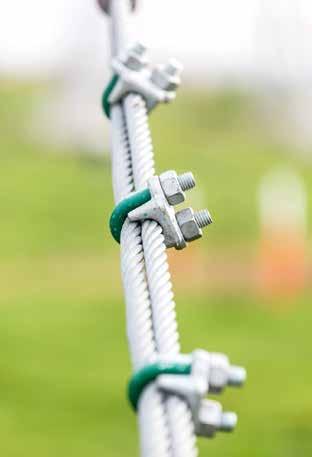
of Elia
met five times.
BASIC REMUNERATION
All the members of the Management Committee of Elia System Operator and of Elia Asset have employee status.
In 2016, the basic remuneration paid to the Chairman of the Management Committee was €405,239. The recurring remuner ation paid to the other members of the Management Committee totalled €1,242,362 (€785,809 for management employed by Elia System Operator and €456,553 for management employed by Elia Asset, respectively).
Total basic remuneration of €1,647,601 was therefore paid to mem bers of the Management Committee in 2016.
SHORT-TERM VARIABLE REMUNERATION
The first component of variable remuneration is based on the attainment of a certain number of targets set by the Remuneration Committee at the start of the year, with a maximum of 25% of vari able remuneration for the individual targets and 75% for the attain ment of the Elia group’s collective targets (‘short-term incentive plan’).
In 2016, the short-term variable remuneration earned by the Chairman of the Management Committee was €268,651.
The variable remuneration earned by other members of the Management Committee in 2016 was €483,141 (€304,501 for management employed by Elia System Operator and €178,640 for management employed by Elia Asset, respectively).
A total of €751,792 in variable remuneration was therefore paid to members of the Management Committee in 2016.
TOTAL ANNUAL REMUNERATION
In 2016, the total remuneration paid to the Chairman of the Management Committee was €673,890.
The total annual remuneration of other members of the Management Committee was €1,725,503 (€1,090,310 for manage ment employed by Elia System Operator and €635,193 for man agement employed by Elia Asset, respectively).
Total annual remuneration for all members of the Management Committee in 2016 was therefore €2,399,393.
LONG-TERM VARIABLE REMUNERATION
The second component of variable remuneration is based on mul ti-annual criteria covering a period of four years (‘long-term incentive plan’). The variable remuneration earned in 2016 can be estimated at €55,628 (maximum amount in the event of full attainment of the multi-annual criteria for the tariff period concerned) for the Chairman of the Management Committee in 2016 and €307,593 for the other members of the Management Committee (€194,559 for manage ment employed by Elia System Operator and €113,034 for man agement employed by Elia Asset, respectively).
These amounts are reviewed at the end of each year based on the achievement of the multi-annual criteria. The first part of the longterm variable remuneration for the 2016-2019 tariff period will be paid in 2018 and the balance will be paid in 2020. No other var iable remuneration was paid in 2016. Remuneration is definitively acquired at the moment of payment.
CONTRIBUTIONS TO THE SUPPLEMENTARY PENSION SCHEME
Since 2007, all pension plans for Management Committee mem bers have been defined contribution plans, where the amount paid, excluding tax, is calculated on the basis of annual remuneration.
In 2016, Elia System Operator paid a total of €104,830 for the Chairman of the Management Committee.
For the other members of the Management Committee, Elia paid a total of €265,476 (€154,862 for management employed by Elia System Operator and €110,614 for management employed by Elia Asset, respectively).
OTHER BENEFITS
Other benefits awarded to members of the Management Committee, such as guaranteed income in the event of long-term illness or an accident, healthcare and hospitalisation insurance, invalidity insurance, life insurance, tariff benefits, other allowances, assistance with public transport costs, provision of a company car, employer-borne costs and other minor benefits are in line with the regulations applying to all company executives.
The cost of these other benefits for 2016 was valued at €43,812 for the Chairman of the Management Committee and at €184,129 for the other members of the Management Committee (€108,937 for management employed by Elia System Operator and €75,192 for management employed by Elia Asset, respectively).
There were no stock options awarded in Elia for the Management Committee in 2016.
PROVISIONS OF EMPLOYMENT CONTRACTS AND SEVERANCE BENEFITS OF MEMBERS OF THE MANAGEMENT COMMITTEE
The employment contracts of Management Committee members concluded after 3 May 2010 were drawn up in accordance with the prevailing legislation on notice periods and dismissal.
The employment contracts of members of the Management Committee hired before 3 May 2010 contain no specific provisions regarding dismissal.
ELIA SYSTEM OPERATOR SHARES HELD BY MEMBERS OF THE MANAGEMENT COMMITTEE
The members of the Management Committee held the following number of shares as at 31 December 2016:
MEMBERS OF THE MANAGEMENT COMMITTEE1
INFORMATION REGARDING STATUTORY LIMITATIONS OR LIMITATIONS UNDER THE ARTICLES OF ASSOCIATION ON THE EXERCISING OF VOTING RIGHTS
AS AT 31/12/2016 AS AT 31/12/2015
In accordance with Article 4.3(3) of the articles of association of Elia System Operator and of Elia Asset, the voting rights associated with shares held directly or indirectly by companies active in the genera tion and/or supply of electricity and/or natural gas are suspended.
Chris PEETERS
Chief Executive Officer - Chairman of the Management Committee 1,805
Markus BERGER Chief Infrastructure Officer 9,156 9,156
Frédéric DUNON Chief Assets Officer 2,833 1,986
Pascale FONCK2 Chief External Relations Officer 661
Ilse TANT Chief Human Resources & Internal Communication Officer 2,450 1,825
Frank VANDENBERGHE Chief Customers, Market & System Officer 3,779 4,774
Catherine VANDENBORRE Chief Financial Officer 1,355 1,370
1. Functions on 31.12.2016
2. The Board appointed Pascale Fonck as Chief External Relations Officer on 23 June 2016.
No stock options were awarded at of Elia System Operator for the members of the Management Committee in 2016. Members of the Management Committee may purchase shares via existing cap ital increases reserved for members of personnel or on the stock exchange.
OTHER INFORMATION TO BE COMMUNICATED PURSUANT TO ARTICLE 96 OF THE BELGIAN COMPANIES CODE AND ARTICLE 34 OF THE ROYAL DECREE OF 14 NOVEMBER 2007 ON THE OBLIGATIONS OF ISSUERS OF FINANCIAL INSTRUMENTS ADMITTED TO TRADING ON A REGULATED MARKET
This section contains the information required to be disclosed under the aforementioned legislation and not included in other parts of the annual report.
INFORMATION REGARDING SPECIAL CONTROL RIGHTS OF CERTAIN HOLDERS OF SECURITIES
In accordance with Article 4.3 of the articles of association of Elia System Operator and of Elia Asset, all shares in these two compa nies have the same rights, irrespective of the class to which they belong, unless otherwise stated in the articles of association.
In this context, the articles of association state that specific rights are associated with Class A and Class C shares regarding (i) the appointment of members of the Board of Directors (Article 13.5.2 of the articles of association of Elia System Operator and Article 12.5.2 of the articles of association of Elia Asset) and (ii) the approval of decisions by the General Meeting (Articles 28.2.1 and 28.2.2 of the articles of association of Elia System Operator and Article 27.2 of the articles of association of Elia Asset).
INFORMATION REGARDING THE RULES ON AMENDING THE ARTICLES OF ASSOCIATION
In the event of the articles of association of Elia System Operator and of Elia Asset being amended, Article 29 of the articles of asso ciation of Elia System Operator and Article 28 of the articles of association of Elia Asset are applicable.
INFORMATION REGARDING STATUTORY LIMITATIONS OR LIMITATIONS UNDER THE ARTICLES OF ASSOCIATION ON TRANSFERS OF SECURITIES Transfers of securities within Elia System Operator are governed by Article 9 of the articles of association of Elia System Operator.
INFORMATION REGARDING THE COMPANY’S REPURCHASE OF ITS OWN SHARES
The permission granted to the Board of Directors of Elia System Operator for the repurchase by the company of its own shares in the event of serious and imminent damage, as defined in Article 37 of the articles of association of Elia System Operator, which had been renewed for a period of three years with effect from the date of publication of the decision of the Extraordinary General Meeting of 21 May 2013, was not renewed in 2016.
SHAREHOLDER STRUCTURE ON THE CLOSING DATE
SHARES % SHARES % VOTING RIGHTS
Publi-T (Class B and C shares) 27,383,507 3 44.97 44.97
Publipart (Class A shares) 1,526,756 2.51 2.51
Belfius Insurance (Société Fédérale de Participations et d’Investissement) (Class B shares)
1,231,060 4 2.02 2.02
Katoen Natie Group (Class B shares) 3,157,624 5 5.19 5.19
Interfin (Class B shares) 2,598,143 4.26 4.26
Other Free float (Class B shares) 24,994,068 41.05 41.05
TOTAL 60,891,158 100 100
3. Based on the Publi-T – Société Fédérale de Participations et d’Investissement declaration of transparency of 29 October 2014. For more information declarations of transparency, see ‘Transparency rules –Notifications’ above.
4. Based on the Publi-T – Société Fédérale de Participations et d’Investissement declaration of transparency of 29 October 2014. For more information declarations of transparency, see ‘Transparency rules –Notifications’ above.
70 71 ANNUAL REPORT 2016 5. Based on the Katoen Natie declaration of transparency of 29 October 2014.
CORPORATE GOVERNANCE STATEMENT
FEATURES OF THE INTERNAL CONTROL AND RISK MANAGEMENT SYSTEMS
The reference framework for internal control and risk manage ment, established by the Management Committee and approved by the Elia Board of Directors, is based on the COSO II framework developed by the Committee of Sponsoring Organisations of the Treadway Commission. The framework has five closely linked basic components, providing an integrated procedure for internal control and risk management systems: control environment, risk manage ment, control activities, information and communication, and mon itoring. The use and inclusion of these concepts in Elia’s various procedures and activities enables the company to control its activi ties, improve the effectiveness of its operations, optimally deploy its resources, and ultimately achieve its objectives. The implementation of COSO II at Elia is described below.
1. CONTROL ENVIRONMENT
ORGANISATION OF INTERNAL CONTROL
Pursuant to the Elia articles of association, the Board of Directors has established various committees to help it fulfil its duties: the Management Committee, the Audit Committee, the Remuneration Committee and the Corporate Governance Committee. The Board has charged the Audit Committee with the task of monitoring: (i) the financial reporting procedure; (ii) the effectiveness of internal control and corporate risk management systems; (iii) the internal audit and its effectiveness; (iv) the statutory audit of annual and consolidated accounts, including the follow-up of any issues raised or recom mendations made by external auditors; (v) the independence of external auditors, (vi) examining accounts and controlling budgets1
The Audit Committee generally meets quarterly to discuss the above points.
The Finance Department helps the Management Committee by providing, in a timely manner, correct and reliable financial informa tion to aid not only decision-making with a view to monitoring the profitability of activities, but also effective management of corporate financial services. External financial reporting – one of Elia’s duties – includes (i) statutory financial and tax reporting; (ii) consolidated financial reporting; (iii) specific reporting obligations applicable to public companies; (iv) reporting obligations under the regulatory framework. Financial reporting is organised in such a way as to meet all reporting obligations while ensuring consistency between various reports and avoiding inefficiencies.
The structured approach developed by Elia helps to ensure that financial data is both exhaustive and precise, taking into account the deadlines for activity reviews and the actions of key players so as to ensure adequate control and accounting.
INTEGRITY AND ETHICS
Elia’s integrity and ethics are a crucial aspect of its internal control environment. The Management Committee and management reg ularly discuss these principles, on which the corporate rules estab lished to clarify the mutual rights and obligations of the company and its employees are based. These rules are disseminated to all new employees, and compliance with them is formally included in employment contracts. The Code of Conduct also helps to prevent employees from breaching any Belgian legislation on the use of privileged information or market manipulation and suspicious activi ties. Management consistently ensures that employees comply with internal values and procedures and – where applicable – take any actions deemed necessary, as laid down in the company regula tions and employment contracts. A particular focus is laid on com pliance with confidentiality rules, primarily by means of a specific confidentiality clause in employment contracts, but also through various measures applied in the event of noncompliance. By virtue of its legal status as a power transmission system operator, Elia abides by a large number of statutory and regulatory rules setting out various fundamental principles such as confidentiality, transpar ency and non-discrimination. With a view to meeting these specific obligations, Elia has drawn up an Engagement Programme, which has been approved by the Corporate Governance Committee. The Compliance Officer reports annually to the relevant regulatory bod ies in this regard.
ROLES AND RESPONSIBILITIES
Elia’s internal control system relies on clearly defined roles and responsibilities at all levels of the organisation. The roles and responsibilities of the various committees established within Elia are primarily identified in the legal framework applicable to Elia, the arti cles of association and the Corporate Governance Charter.
Under the supervision of the Chief Financial Officer, the Accounting Department is responsible for statutory financial and tax reporting and the consolidation of the Elia Group’s various subsidiaries. The Controlling Department monitors analytical accounting and report ing and assumes responsibility for all financial reporting in a regu latory context. The Investor Relations Department is responsible for specific reporting applicable to companies listed on the stock exchange.
As regards the financial reporting process, the tasks and respon sibilities of all employees in the Accounting Department have been clearly defined with a view to producing financial results that accu rately and honestly reflect Elia’s financial transactions. A detailed framework of tasks and responsibilities has been drawn up to iden tify the main control duties and the frequency with which tasks and control duties are performed.
An IFRS Accounting Manual is used by all entities within the scope of consolidation as a reference for accounting principles and pro cedures, thus ensuring consistency, comparability and accurate accounting and reporting within the Group.
The Finance Department has the appropriate means (including IT tools) to perform its tasks; all entities within the scope of consolida tion use the same ERP software, which has a range of integrated controls and supports task separation as appropriate. Elia also clarifies the roles and responsibilities of all its employees by provid ing a description of each job in keeping with the Business Process Excellence methodology.
COMPETENCIES
With a view to ensuring its various activities are performed relia bly and effectively, Elia clearly spells out the vital importance of its employees’ competencies and expertise in its recruitment, training and retention procedures. The Human Resources Department has drawn up the appropriate policies and defined all jobs in order to identify the relevant roles and responsibilities as well as the qualifi cations needed to fulfil them.
Elia has drawn up a policy for the management of generic and spe cific competencies in line with the company’s values, and promotes training so as to enable all its employees to effectively perform the tasks allocated to them. Requirements with regard to competency levels are continually analysed by means of formal and informal self-assessments at various stages of an employee’s career.
Training programmes on financial reporting are offered to all employees involved directly or indirectly with that task. The training emphasises the existing regulatory framework, accounting obliga tions and actual activities, with a high level of understanding ena bling participants to address the appropriate issues.
2. RISK MANAGEMENT
Risk management is another internal control system that is crucial in helping Elia to achieve its strategic objectives as defined in its mission. The Board of Directors and the Risk Manager jointly and regularly identify, analyse and assess key strategic and tactical risks. The risks are assessed qualitatively and/or quantitatively depend ing on their nature and potential effect. The Risk Manager then makes recommendations on how best to manage each risk con sidering the close interaction of Elia’s entire risk universe. Based on this assessment, preventive, remedial and/or corrective actions are implemented, including the strengthening of existing internal control activities where applicable.
The objectives set for the entire Group feed through to each level of the organisation. Assessments are performed annually to deter mine how well those objectives have been achieved. As part of its responsibilities, Elia’s management establishes an effective internal control system to ensure, among other objectives, accurate finan cial reporting. It emphasises the importance of risk management in financial reporting by taking into account, with the Audit Committee, a whole range of associated activities and risks. It ensures that risks are truly reflected in financial results and reports. In addition, Risk Management goes beyond those risks known to Elia and tries to anticipate the nature and characteristics of emerging risks, which may impact Elia’s objectives.
Financial risk assessments primarily involve the identification of:
1. significant financial reporting data and its purpose;
2. major risks involved in the attainment of objectives;
3. risk control mechanisms, where possible.
Financial reporting objectives include (i) ensuring financial state ments comply with widely accepted accounting principles; (ii) ensuring that the information presented in financial results is both transparent and accurate; (iii) using accounting principles appropri ate to the sector and the company’s transactions; (iv) ensuring the accuracy and reliability of financial results.
The activities undertaken by Elia, as an electricity transmission sys tem operator in relation to its physical installations, contribute sig nificantly to its financial results. Therefore, appropriate procedures and control systems have been established to ensure an exhaustive and realistic inventory of physical installations. Elia has established an enterprise risk management (ERM) culture to ensure the correct identification, analysis, assessment and actions towards risks in the achievement of Elia’s strategy. This approach incorporates the key policies and procedures set out in the risk management recommen dations and Risk Management Policy.
Risk management is a company-wide activity, actively supported by the delegation of relevant responsibilities to all employees as part of their specific activities, as defined in the Policy.
CONTINUOUS ASSESSMENT
Employing a simultaneously top-down and bottom-up approach enables Elia to identify and, where possible, anticipate forthcoming events and react to any incidents occurring inside or outside the organisation which might affect the attainment of objectives.
TOP-DOWN APPROACH BASED ON STRATEGIC RISKS
Elia’s strategic risk assessments are reviewed on a quarterly basis in the Audit Committee. Action plans or specific, theme-based risk assessments are carried out whenever there is a perception of potential threats or opportunities.
BOTTOM-UP APPROACH WITH REGARD TO BUSINESS
With a view to identifying new risks or evaluating changes in exist ing risks, the Risk Manager and management remain in contact and look out for any changes that may call for the relevant risk assess ment and associated action plans to be amended. Various criteria are used to determine the need to re-evaluate financial reporting procedures and associated risks. Emphasis is put on risks associ ated with changes in the financial and regulatory context, industrial practices, accounting standards and corporate developments such as mergers and acquisitions.
Operational management assesses the relevant risks and puts for ward action plans. Any significant changes to assessment rules must be approved by the Board of Directors. Risk Management is instrumental for Elia to maintain its value for stakeholders and the community, it works with all departments with a view to optimising Elia’s ability to achieve its strategic objectives, and advises the com pany regarding the nature and potential effects of future risks.
72 73 ANNUAL REPORT 2016
1. For more information, see ‘Corporate governance statement – Audit Committee’ CORPORATE GOVERNANCE STATEMENT
3. CONTROL ACTIVITIES
MAIN CONTROL ACTIVITIES
Elia has established control activities at its various structural levels so as to ensure compliance with standards and internal procedures geared to the proper management of identified risks. These include:
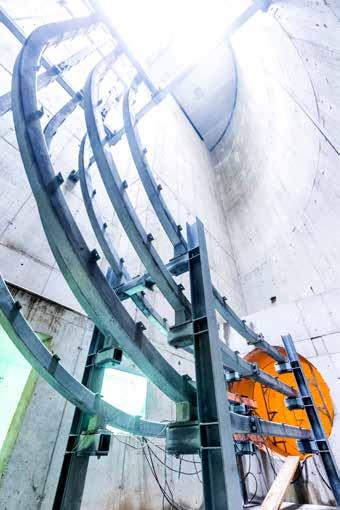
(i) clear task separation as part of procedures, preventing the same person from initiating, authorising and recording a trans action – policies have been drawn up regarding access to infor mation systems and the delegation of powers;
(ii) integrated audit approach as part of internal procedures so as to link end results with the transactions supporting them;
(iii) data security and integrity through the appropriate allocation of rights ;
(iv) appropriate documentation of procedures through the use of the Business Process Excellence Intranet, which centralises pol icies and procedures.
Departmental managers are responsible for establishing activities to control the risks inherent to their department. Elia takes all neces sary measures to adapt its control activities where internal or exter nal events are liable to affect existing processes.
FINANCIAL REPORTING PROCEDURE
For all significant financial reporting risks, Elia sets out appropriate control mechanisms to minimise the probability of error. Roles and responsibilities have been defined in connection with the closing procedure for financial results. Measures have been established for the continuous follow-up of each stage, with a detailed agenda of all activities undertaken by Group subsidiaries; control activities are performed to ensure quality and compliance with internal and exter nal requirements and recommendations. During the financial closing period, a specific test is performed to ensure control over signifi cantly unusual transactions, accounting checks and adjustments at the end of the relevant financial period, company transactions and critical estimates. The combination of all these controls ensures the reliability of financial results. Regular internal and external audits also contribute to financial reporting quality.
In identifying those risks that may affect the achievement of finan cial reporting objectives, the management takes into account the possibility of misreporting associated with fraud and takes appro priate action where internal control needs to be strengthened. Internal Audit performs specific audits based on the risk assess ment for potential fraud, with a view to avoiding and preventing any instances of fraud.
4. INFORMATION AND COMMUNICATION
Elia communicates relevant information to its employees to ena ble them to fulfil their responsibilities and achieve their objectives.
Financial information is needed for budgeting, forecasts and ensur ing compliance with the regulatory framework. Operational infor mation is also vital for the production of various reports, essen tial for the well-functioning of the company. As such, Elia records recent and historical data needed for corporate risk assessments. Multiple communication channels are used: manuals, memos, emails, bulletin boards and intranet applications. Established infor mation systems are used to structure information from a range of different sources so as to ensure: (i) transactions are recorded and monitored in real time; (ii) data is entered within a time-frame and at a level of detail that meets risk management requirements; (iii) the quality of information through discussions at different levels: the information owner validates the relevant data before publication, the management checks its accuracy and reliability, and IT risks (such as the quality of IT developments or the stability of data transmis sion) are followed up by action plans. Financial results are reported internally and validated at different levels. The management respon sible for financial reporting regularly meets other internal depart ments (operational and control departments) to identify financial reporting data. It validates and documents the critical assumptions underpinning booked reserves and the company’s accounts.
At Group level, consolidated results are broken down into segments and validated by means of a comparison with historical figures and a comparative analysis between forecasts and actual data. This financial information is reported monthly to the Management Committee and is discussed quarterly with the Audit Committee. The Chairman of the Audit Committee then reports to the Board of Directors.
5. MONITORING
Elia continually re-evaluates the adequacy of its risk management approach. Monitoring procedures include a combination of moni toring activities carried out as part of normal business operations, in addition to specific ad hoc assessments on selected topics. Monitoring activities include (i) monthly reporting of strategic indi cators to the Management Committee and the management; (ii) follow-up on key operational indicators at departmental level; (iii) a monthly financial report including an assessment of variations as compared with the budget, comparisons with preceding periods and events liable to affect cost controlling. Consideration is also given to third-party feedback from a range of sources, such as (i) stock market indices and reports by ratings agencies; (ii) share value; (iii) reports by federal and regional regulators on compliance with the legal and regulatory framework; (iv) reports by security and insurance companies. Comparing information from external sources with internally generated data and ensuing analyses allows Elia to keep on making improvements.
Internal Audit also plays a key role in monitoring activities by con ducting independent reviews of key financial and operational pro cedures in view of the various regulations applicable to Elia. The findings of those reviews are reported to the Audit Committee to help it monitor internal control and risk management systems and corporate financial reporting procedures.
The Group’s legal entities are also subject to external audits, which generally entail an evaluation of internal control and remarks on (annual and quarterly) statutory and consolidated financial results. External auditors make recommendations for improving internal control systems. In entities that have an Audit Committee, the rec ommendations, action plans and their implementation are reported annually to that Committee, which in turn reports to the Board of Directors on the independence of the auditor or statutory audit firm and drafts a motion for a resolution on the appointment of external auditors.
74 75 ANNUAL REPORT 2016
CORPORATE GOVERNANCE STATEMENT
RISKS AND UNCERTAINTIES FACING THE COMPANY
1. REGULATORY AND INCOME RISKS
INTERNATIONAL
The two transmission system operators in the Elia Group strive to proactively anticipate European legislation, new directives and regulations being prepared at EU level or awaiting transposition into Belgian and German law in order to minimise uncertainties.
Elia and 50Hertz are paying particularly close attention to ongoing discussions at European level – formalised by measures including the ‘winter package’ – that could have a significant influence on the duties and responsibilities of transmission system operators in future.
Elia and 50Hertz are European leaders when it comes to the com ponents of the European Commission’s third package of directives aimed at developing a single electricity and gas market, as regards both the independence and impartiality of the management.
The provisions of the third package were transposed into Belgian and German law. Under these provisions, Elia System Operator and 50Hertz are subject to new procedures, such as certification as fullowned unbundled TSOs. The application of these new procedures may entail regulatory risks for both companies.
Both Elia and 50Hertz have received certification as ownership unbundled transmission system operators but need to constantly stay in line with the obligations of such a certification. In addition, both Elia and 50Hertz continue to actively participate in projects designed to arrive to the Single European Energy Market, as envis aged by the European Commission.
While this authorisation is not limited in time, it can be revoked if Elia or 50Hertz do not have, inter alia, the personnel, technical and/or financial means to guarantee the continuous and reliable operation of the network in accordance with the applicable legislation, as well as the unbundling obligations as described in Article 9 of the EU Electricity Directive.
Such a revocation would have an adverse material impact on Elia and/or 50Hertz.
Elia and 50Hertz are also founding members of the European Network of Transmission System Operators for Electricity (ENTSO-E), which was set up in December 2008 and brings together 41 transmission system operators from 34 countries, including the EU Member States. Amongst other things, ENTSO-E performs the role of the European Network of Transmission System Operators provided for in the third package.
NATIONAL
The Belgian legal framework was established when the first EU Directive on the internal electricity market was transposed by the Electricity Act of 29 April 1999. The amendment of 8 January 2012 adapted the Electricity Act to comply with the third package of European directives.
In accordance with Article 258 of the Treaty on the Functioning of the European Union, the European Commission monitors the trans posal of European directives into national legislation. In this connec tion, it sent a reasoned opinion to Belgium on 25 February 2016 in which it found – if the press release is to be believed – that Belgium had not correctly transposed certain rules on interconnections, the powers of the regulator, and consumers. The Belgian authorities are to talk to the Commission about the measures that have been taken or should be taken to remedy the situation.
The company’s net profit is largely determined by a fair return mechanism and by a tariff incentive mechanism. For the period 2016-2019, various incentives distributed over four years were introduced.
Elia’s financial result is influenced annually by changes to Belgian lin ear bonds (10-year OLOs) and by a special mechanism that took effect in 2016. This mechanism includes an incentive linked to the progress of construction work for major projects mainly linked to interconnection capabilities, and a corrective term which reflects the gap between the real value of the OLO during the year and a benchmark value. Elia’s financial result is also influenced by its abil ity to realise and/or exceed the factors for improving efficiency, and by the analyses of the various budget items implemented by the federal regulator.
On 3 December 2015, the tariffs and mechanisms determining Elia’s profitability as Belgium’s transmission system operator were approved by the CREG for a new four-year tariff period, effective 1 January 2016.
Elia’s turnover also depends on the energy transported via its grid, and therefore on the level of business activity of its customers and the society it serves at large, including the rapid increase in decen tralised electricity generation being directly injected to the distribu tion networks. The actual level of residential and industrial electricity consumption may result in differences between the electricity vol umes actually transmitted and those estimates built into the 20162019 tariffs as approved by the regulator. Any deficit and/or extra costs incurred as a result, such as additional financing require ments, must be offset by the tariffs for the following regulatory peri ods, under prevailing legislation. The impact on the electricity con sumption and injection of Elia’s various customer segments and the uncertainty surrounding the outlook for levels of business activity amongst industrial clients pose a risk to Elia’s cash flow.
Discussions are currently underway with CREG concerning a spe cific regulatory framework for an underwater grid that may be built, fully or partly, by the system operator in the next few years. This specific extension of the current regulatory framework must, in par ticular, take account of the risks associated with such an activity, including regulatory, contractual and technical risks.
Elia’s income is influenced by the dividends received from compa nies in which it has shareholdings, in particular those of 50Hertz, via Eurogrid International.
The tariffs charged by 50Hertz are subject to regulation by the German federal regulatory agency, Bundesnetzagentur (BNetzA). Decisions made and actions taken by the BNetzA under the current regulatory framework may have a substantial impact on 50Hertz.
Furthermore, the German regulatory framework governing the activities of 50Hertz is subject to extensive European, national and regional legislation and regulation. Even though 50Hertz tries to anticipate European legislation, new directives and regulations in preparation at the European level or existing regulations and direc tives awaiting transposition into national law (such as those included in the Third Energy Package) may always cause uncertainties.
Legislation and directives regarding renewable energy sources may also have a great impact on 50Hertz’s liquidity. Changes in the leg islation may lead to significant variations in the current regulatory and/or liquidity risk.
REGIONAL
The regulatory framework entails risks at regional level in Belgium. For instance, contradictions between the various regulations, including the grid codes, can hinder the exercise of the company’s activities. The further development of and changes to these regula tions may also impact the company’s liability in the event of a power outage on the grid or – in the context of a reform of the State – the division of powers between federal and regional authorities, includ ing the power to approve transmission tariffs.
With regard to tariff surcharges, in 2016 the resale of Walloon green certificates to an operator responsible for reserving them was final ised in the first half of the year, which temporarily reduced the risk on liquidity requirements. However, the situation deteriorated again during the second half of 2016, necessitating a significant increase in the surcharge for lack of other remedial measures. The Walloon Government notified Elia of its intention to amend the Walloon regulations with a view to introducing a new mechanism to delay the arrival onto the market of excess green certificates; according to the target announced by the Minister, the mechanism should come into force in 2017. These amendments should complement those introduced in 2015, which provide for an explicit framework for potentially awarding new certificates and quarterly reporting by the CWaPE (Walloon Energy Commission) on the market situation.
Vigilant oversight of the change in the green certificates market remains applicable. To a lesser extent, the ongoing saturation of the Flemish market for cogeneration certificates has led to greater numbers of sales to Elia at the guaranteed minimum price. A tariff adjustment to cover Elia’s increased expenditure was planned for 2017 and approved by CREG.
2. OPERATIONAL RISKS ENERGY BALANCE
Every year, Elia and 50Hertz Transmission seek to contract, at the lowest possible cost, the reserves needed to ensure continual balance between production and consumption in their respective zones. To that end, they analyse, both at national and European level, how the growing proportion of intermittent renewable energy generation units can be safely integrated without compromising the energy balance. The growth across Europe in the number of cogeneration and renewable energy units connected to distribution systems and the connection of large offshore wind farms also cre ate new challenges for operational grid management and require the further development of their infrastructure.
A new and important development since 2014 has been the nega tive trend in Belgium’s national electricity production, as a result of closures and mothballing of production units, resulting in an overall decrease in the production capacity available to Belgian consum ers and a growing dependency on electricity imports from foreign markets. A consequence of these supply conditions has been the creation of strategic electricity reserves for the winter period. These reserves consist of earmarked and reserved electricity generation capacity sitting outside the electricity market, to be called upon by the TSO in the event of electricity shortages. The many events that occurred in 2015 and 2016 regarding Belgian nuclear generating facilities illustrate the uncertainties impacting supply conditions. The actual availability and location of nuclear generation also interact with maintenance and/or investment programmes on the 400 kV networks, as well as the conditions governing access to resources capable of providing the auxiliary services needed for system operation.
It cannot be ruled out that other electricity production units may be closed or mothballed in the future, which will keep the supply sit uation under pressure. In a similar vein, uncertainty regarding the dwindling availability of France’s nuclear generation facilities may lead to a decrease in the quantities of energy imported from France. The need to continue resorting to strategic reserves and/or other mechanisms therefore remains a major concern for future years.
In addition, changing trends in offtake and injection and the enhancement of interconnection capacity between EU Member States are dependent on securing permits and approvals from local, regional, national and international authorities. The need to obtain such approvals and permits within certain timeframes repre sents a critical challenge to timely implementation. Moreover, these approvals and permits can be contested in the relevant courts.
Finally, while volumes of decentralised intermittent electricity gener ation are rising and while centralised generation capacity continues to decrease, Elia is also facing an ageing asset base. All three fac tors complicate the task of maintaining balance on the network.
76 77 ANNUAL REPORT 2016
CORPORATE GOVERNANCE STATEMENT
POWER OUTAGES
The reliability of the transmission systems operated by Elia and 50Hertz is among the best in Europe. Nonetheless, unforeseen events, such as unfavourable weather conditions, may occur to a degree which interrupts the smooth operation of one or more infra structure components. In most cases, these incidents have no impact on consumers’ power supply because the meshed structure of the grids operated by Elia and 50Hertz means that consumers can be reached via a number of different connections. However, in extreme cases an incident in the electricity system may lead to a local or widespread outage (known as a blackout). Such outages may be caused by natural phenomena, unforeseen incidents or operational problems, either in Belgium or abroad. The Elia Group regularly holds crisis management drills so that it is ready to deal with the most unexpected and extreme situations. In the event of an error attributable to Elia, the general terms and conditions of its contracts limit the liability of Elia and 50Hertz to a reasonable level, while its insurance policy is designed to limit some of the financial repercussions of these risks.
RISKS ASSOCIATED WITH ELECTRONIC, IT AND TELECOMMUNICATION EQUIPMENT
The incorporation and embedding of electronic, IT and telecommu nication technologies in electricity transmission systems for the pur poses of operational management, communication and surveillance (such as smart grids) modifies the nature of electricity systems and infrastructure used by TSOs such as Elia and 50Hertz.
Failures in the telecommunications network or IT systems used to operate the electricity system may harm the latter’s performance. Elia takes appropriate measures to back up the IT network and associated systems to the maximum extent allowed by technical and financial considerations. It has drawn up and regularly tests recovery plans for the most critical IT systems. However, compo nent failures in the telecommunication network and IT systems are impossible to rule out. Where systems do fail, Elia strives to mini mise the impact on customers.
ENVIRONMENTAL RISK
Elia’s results may be affected by outgoings needed to keep up with environmental legislation, including costs associated with imple menting preventive or corrective measures or settling third-party claims. The company’s environmental policy is developed and monitored in such a way as to manage these risks. Where Elia or 50Hertz might in any way be liable for decontamination, the appro priate provisions are set aside.
PERMITTING RISK
Both Elia and 50Hertz have a duty to build an electricity grid con sistent with the energy needs of their respective client bases and the move by the energy industry into decentralised electricity gener ation, which necessitates a reinforced electrical grid.
Consequently, electrical installations need to be upgraded or built new, which means obtaining building permits. Occasionally, per mits are obtained after lengthy dialogue with local populations and authorities, which may delay the building of such installations.
RISKS ASSOCIATED WITH SUPPLIERS FOR INFRASTRUCTURE WORKS
In 2016, Elia’s infrastructure objectives were exposed to the grow ing risk of capacity problems among some major suppliers due to the ever-increasing demand for stable, reliable supply on the European market. In response, Elia will conduct regular predictive capacity analyses at market level with a view to limiting the risk.
Moreover, the difficult economic conditions on the European market (see also the ‘Macroeconomic risks’ section) may threaten suppli ers’ financial health and prevent them from being able to fulfil their obligations. The construction of infrastructure may be delayed as a result.
RISK OF LEGAL DISPUTES
Although the company operates in such a way as to minimise the risk of legal disputes, it may nonetheless become involved in such disputes. Where necessary, the appropriate provisions are set aside for this.
SAFETY AND WELFARE
The Elia Group operates facilities where accidents or external attacks may cause bodily harm to persons. Persons working in or near electricity transmission facilities may be exposed, in the event of an accident, error or negligence, to the risk of electrocu tion. The safety and welfare of individuals (both Elia personnel and third parties) is a daily preoccupation for the Elia Group’s manage ment, supervisory staff and personnel. Elia has in place a health and safety policy, undertakes safety analyses and promotes a safety culture.
RISKS ASSOCIATED WITH INEFFICIENT INTERNAL CONTROL MECHANISMS
All internal processes may have an impact on the company’s results in some way. The multi-year tariff mechanism increases the need for year-on-year improvements in the company’s overall efficiency. To this end, the efficiency of internal processes is monitored regularly, using performance indicators and/or audits, to ensure they are kept under proper control. This is overseen by the Audit Committee, which controls and monitors the work of the Internal Audit & Enterprise Risk Management Department.
3. FINANCIAL RISKS
The Group is exposed to various financial risks in the exercise of its activities: market risk (namely interest rate risk, inflation risk, tax risk and limited exchange risk), liquidity risk and credit risk. The risks the company faces are identified and analysed in order to establish appropriate limits and controls and monitor risks and compliance with such limits. To this end, the Group has defined responsibili ties and procedures specifically for the financial instruments to be used and the operating limits for managing them. These proce dures and related systems are revised on a regular basis to reflect any changes in market conditions and the activities of the Group.
The financial impact of these risks is limited, as Elia and 50Hertz are operating under the Belgian or German regulatory framework. See the ‘Regulatory framework’ section for further details.
To finance their investments and achieve their short- and longterm strategic goals, Elia and 50Hertz turn to the capital markets, which are heavily influenced by macroeconomic trends. In 2017, these will mainly be coloured by the elections taking place in vari ous major European countries (namely the Netherlands, France and Germany), the economic policy that will be adopted by the US fol lowing Donald Trump’s inauguration as president, and greater clarity regarding the ECB’s future monetary policy.
All of these macroeconomic factors are reflected at market level by major volatility, which could have a negative impact on the growth of Elia and 50Hertz and on the pursuit of their objectives. However, both Elia and Eurogrid GmbH (50Hertz’s parent company) have credit facilities in place to mitigate the risk of short-term financing difficulties.
Elia and Eurogrid GmbH are rated by S&P and Moody’s. Specific measures in connection with these evaluations are not foreseeable and could have an impact on financing. In application of Belgian laws and regulations governing the decentralised generation of renewable energy, notably via photovoltaic solar panels and wind turbines, the federal and regional governments have authorised the issuance of so-called ‘green certificates’, which are used as a financial support instrument for the renewable energy. Elia’s obliga tion to buy these certificates at a guaranteed minimum price poses a cash flow risk, as ‘green certificates’ are effectively used as ‘call’ options and hence their execution is uncertain. Consequently, Elia is subject to unforeseeable influxes of large numbers of ‘green certifi cates’, which it is obliged to purchase, representing a risk to Elia’s cash flow. In so far as there are regulations requiring the cancella tion of certain certificates, the compensation for costs incurred by Elia requires the application of an appropriate surcharge. However, Elia has the option of asking CREG to adapt the tariffs so as to recover any gaps between expenses due to public service obli gations and the cash flow generated by the approved surcharges meant to cover such expenses. In addition, to try to avoid a major tariff increase, the Walloon government established a mechanism whereby Elia can ask to have green certificates placed in reserve with an approved external party in order to temporarily limit the number of surplus green certificates present on the market.
Elia has established regulatory and cash planning mechanisms allowing it to partially reduce the cash impact that this risk may pose. The unforeseeable nature of the execution of the ‘call’ options prevents Elia from guaranteeing total protection in the event of sig
nificant variations in either the guaranteed minimum price or the vol ume of ‘green certificates’, the market prices for ‘green certificates’, or the evolution in the legal and regulatory environments at Federal and Regional levels. Similarly, 50Hertz is exposed to a cash flow risk as it is obliged to buy the electricity generated by renewable sources for a fixed price, but to sell it at variable prices dictated by the market.
4. FACTORS LINKED TO THE OPERATING ENVIRONMENT
MACROECONOMIC RISKS
European economies are still facing high levels of uncertainty and volatility. Even though the weak economic recovery seemed reliable and sustainable in 2016, various factors mean that the European economies are vulnerable.
The European economy experienced moderate growth as the Brexit referendum increased uncertainty within the EU. The impact of this will depend on a variety of factors, both economic and polit ical. There is also uncertainty regarding the economic policy of the US now that Donald Trump is president. The moderate growth seems mostly linked to increased private consumption, which is driven by the expectation that employment will continue to grow. Other European developments that could potentially constitute risks are connected to migration and the ongoing lack of clarity about its actual impact.
In theory, low interest rates no doubt encourage investment owing to favourable financing conditions, but investment decisions remain difficult due to broad uncertainties about the future.
Lastly, the recent stock market instability and developments in the geopolitical context in Europe and the Middle East confirm the cur rent uncertainty and volatility.
HUMAN RESOURCES RISK
Elia pursues an active image and recruitment policy in order to maintain an appropriate level of expertise and know-how in a tight labour market. This is an ongoing risk, bearing in mind the highly specialised and complex nature of its business.
IMAGE RISK
Generally speaking, circumstances may arise that have a negative impact on the company’s image. Elia has an internal control mech anism to guarantee the confidentiality of data. Despite this, external parties may pass on information in their possession that could have an impact on the company’s share price.
MISCELLANEOUS
Elia realises that there might be other risks of which the company is not yet aware. Some risks may seem limited today but could increase in the future. The subdivisions used give no indication of the potential consequences of the listed risks.
78 79 ANNUAL REPORT 2016
CORPORATE GOVERNANCE STATEMENT
THE ELIA SHARE IN 2016
THE ELIA SHARE HIT A NEW HIGH IN 2016 FOLLOWING THE BREXIT VOTE AND THE RESULTING FLIGHT TO LESS RISKY STOCKS. IT ENDED THE YEAR AT A PRICE OF €49.69, SOME 16% HIGHER THAN IN 2015.
“In 2016, the Elia Group experienced both sound progress in several key invest ments as well as solid results.”
ELIA ON THE STOCK EXCHANGE
EVOLUTION IN PRICE AND TRADED VOLUMES
900,000
EVOLUTION OF THE ELIA SHARE AGAINST THE BEL20 INDEX
EVOLUTION OF THE ELIA SHARE AGAINST ITS EUROPEAN COUNTERPARTS
The Elia share’s closing price at the end of 2016 was €49.685, up 16.0% from €42.831 at the end of 2015.
The lowest price in 2016 was €40.88 on 14 January, while the highest price was €50.54 on 1 July.
The liquidity of the share fell by 15.9% (from 49,197 shares per day on average in 2015 to 41,197 in 2016).
With 60,891,158 shares outstanding, the company’s market capitalisation stood at €3,025,377,185 at the end of December.
In 2016, 10,661,191 Elia shares were traded on the Euronext Brussels market.
On Wednesday 31 December 2016, the Elia share was included in the BEL20 index. On that date, the Elia share accounted for 1.10%, ranking it 17th in the index.
APPOINTMENT OF THREE LIQUIDITY PROVIDERS FOR THE ELIA SHARE

In late 2009 Elia concluded a liquidity provider contract with KBC Securities and Bank Degroof, both of which are officially rec ognised by NYSE Euronext. In 2014, a third contract was con cluded with Belfius Bank. These three financial institutions have been continually are present in the order book for the Elia share and are involved in both sales and purchases.
DIVIDEND
On 23 February 2017, the Elia Board of Directors decided to pro pose a nominal dividend of €96.21 million, or €1.58 per share (gross) to the general meeting of shareholders of 16 May 2017, in accordance with the dividend policy and subject to approval of the profit appropriation by the annual general meeting of shareholders.
This gives a net dividend of €1.106 per share.
The following paying agents will pay out dividends to sharehold ers: BNP Paribas Fortis, ING Belgium, KBC and Belfius. Dividend payouts for shares held in a stock account will be settled auto matically by the bank or stockbroker. Elia will pay out dividends on registered shares directly to shareholders.
DIVIDEND POLICY
Elia is obliged by its articles of association to pay out at least 85% of profits earned in Belgium, after retaining 5% for the legal reserve, unless otherwise decided by the general meeting of shareholders.
The proposed dividend represents a payout ratio of 53.5% of the IFRS profit stated in the report.
FINANCIAL CALENDAR
Early April 2017 2016 annual report available on the website
16 May 2017 General meeting of shareholders
17 May 2017 Interim statement for Q1 2017
Early June 2017 Payment of 2016 dividend
28 July 2017 Publication of half-yearly results for 2017
30 November 2017 Interim statement for Q3 2017
SHAREHOLDER STRUCTURE
44.97 % Publi-T 5.19 % Katoen Natie Group 2.51 % Publipart 2.02 % Belfius Insurance 3.90 % Interfin 41.41 % Free float
INVESTORS
For any questions regarding Elia and its shares, please contact:
Elia
Investor Relations Department, Boulevard de l’Empereur 20 1000 Brussels, Belgium
Tel.: +32 2 546 75 79
Fax: +32 2 546 71 80
E-mail: investor.relations@elia.be
Information about the Group (press releases, annual reports, share prices, disclosures, etc.) can be found on the Elia Group website www.eliagroup.eu.
THE CONTRIBUTION OF GERMANY TO THE NORMALISED NET PROFIT OF ELIA GROUP
Catherine Vandenborre Chief Financial Officer at Elia
80 81 ANNUAL REPORT 2016 THE ELIA SHARE IN 2016
800,000 700,000 600,000 500,000 400,000 300,000 200,000 100,000 0 Elia System Operator (ELI-BT) Volume 55 53 51 49 47 45 43 41 39 37 35 120 115 110 105 100 95 90 85 80 130 125 120 115 110 105 100 95 90 85 80 31/12/15 31/01/16 29/02/16 31/03/16 30/04/16 31/05/16 30/06/16 31/07/16 31/08/16 30/09/16 31/10/16 30/11/16 31/12/15 31/01/16 29/02/16 31/03/16 30/04/16 31/05/16 30/06/16 31/07/16 31/08/16 30/09/16 31/10/16 30/11/16 31/12/15 31/01/16 29/02/16 31/03/16 30/04/16 31/05/16 30/06/16 31/07/16 31/08/16 30/09/16 31/10/16 30/11/16 Elia BEL20 Elia Terna National Grid Red Electrica
41% €1.58
GROSS DIVIDEND PER SHARE
MANAGEMENT DISCUSSION AND ANALYSIS OF THE 2016 RESULTS
• THE ELIA GROUP REALISED GRID INVESTMENTS OF €440 MILLION IN BELGIUM AND €737 MILLION IN GERMANY TO FURTHER SECURE THE UNINTERRUPTED SUPPLY OF ELECTRICITY AND TO ACCOMMODATE INCREASING RENEWABLE ENERGY FLOWS.
• NORMALISED NET PROFIT DOWN 4.4% TO €168.0 MILLION FOLLOWING INCREASED MAINTENANCE EXPENSES IN GERMANY (RESULT DOWN BY 22.2%) PARTLY COMPENSATED BY A STRONG OPERATIONAL YEAR IN BELGIUM (UP BY 13.4%)
• ELIA WILL PROPOSE A DIVIDEND AT €1.58 AT THE GENERAL ASSEMBLY OF 16 MAY 2017
• ELIA AND 50HERTZ CONTINUE TO PROVIDE VERY HIGH SYSTEM RELIABILITY (99.999%), BENEFITTING 30 MILLION END-USERS IN BELGIUM AND GERMANY
GROUP
(in millions EUR) 2015 2016
Total revenues 851.4 868.1
EBITDA 442.8 425.0
EBIT 336.4 295.0
Non-recurring items 33.5 12.0
Normalised EBIT 302.9 283.0
Net financial costs (92.8) (82.9)
Net profit 210.6 179.8
Non-recurring items 34.8 11.8
Normalised net profit 175.8 168.0
Normalised earnings per share (EUR) 2.89 2.76
Net financial debt 2,583.4 2,557.3
CAPEX2 1,254.8 1,177.5
EBIT (Earnings Before Interest and Taxes) = Results from operating activities +
Share of profit of equity-accounted investees (net of income tax)
EBITDA (Earnings Before Interest and Taxes, Depreciations and Amortisations)
= EBIT + depreciation/amortisation + changes in provisions
Normalised EBIT = EBIT – non-recurring items (see page 1 for the definition and page 13 for the reconciliation table)
1 The term “normalised” refers to performance measures (EBIT, Net Profit, EPS) before non-recurring items. Non-recurring items are either income or expenses which do not occur regularly as part of the normal activities of the company. They are presented separately because they are important for the understanding of the underlying sustainable performance of the company due to their size or nature. We refer to page 85, point 8 for a detailed reconciliation of the non-recurring items.
2 CAPEX amounts include 100% of the investments realised in Germany.
RESULTS
The Elia Group’s normalised net profit was down 4.4% at €168.0 million. This is a combined result from a decreasing net profit in Germany (down by 22.2%) partly compensated by increased net profit in Belgium (up 13.4%).
In Germany maintenance costs temporarily increased. They were impacted by substantial damage to electrical installations resulting from major storms back in 2015, among other things. These increased maintenance activities and caused productivity pressure in 2016. Furthermore, following the substantial invest ment programme, the personnel base grew, leading to higher personnel costs (up by €11.5 million). Finally, Eurogrid locked in substantial financing through debt capital market transactions back in November 2015 and in April 2016 resulting in increased net finance costs (up by €36.5 million). These effects were only partly covered by the increased investment cost coverage fol lowing the investments made in 2016. The normalised net profit came in at €113.8 million, of which €68.3 million (60%) is included in the Elia Group’s results.
In Belgium solid results were achieved on the back of a strong operational year. The new tariff methodology came into force in 2016, linking the regulated net profit more closely to the oper ational performance of the company. Despite the decrease in the yearly average OLO, from 0.86% in 2015 to 0.49% in 2016, the regulated net profit increased by €8.5 million thanks to the full realisation of the mark-up investments plan and high efficiencies, which the consumers are also benefitting from. Furthermore, there was a significant increase in the customer contributions received (up €8.1 million). Finally, the normalised net profit was also negatively impacted by increased damage to electrical installations (down €3.1 million) and the movement in the pension provision (down €4.5 million). This all resulted in a normalised net profit of €99.8 million for the Belgian activities.
Taking into account the non-recurring items, which were considera bly higher in 2015, the reported Elia Group net profit decreased by 14.6% to €179.8 million.
In 2016, the Elia Group once again succeeded in delivering the investments needed for a gradual energy transition. Geared to society’s needs and choices, its extensive CAPEX programme pri marily includes – in addition to replacements of existing installations – investments for integrating renewable energy and enabling the further integration of the European energy market via interconnec tions. In May, for example, Elia commissioned the first section of the Stevin line, namely the 380-kV connection between the Horta and Eeklo Noord high-voltage substations. September saw the start of construction work on the Herdersbrug converter station near Bruges for Nemo Link, the interconnector with Great Britain. On 29 September, the German transmission system operator Amprion and Elia signed the contract to deliver the cable system for the first interconnector between Germany and Belgium as part of the ALEGrO project. Two months later, the contracts for the two HVDC (high-voltage direct-current) converter stations were awarded. In June, 50Hertz together with Polish system operator PSE com missioned four phase-shifting transformers on the German-Polish border at Mikulowa. The transformer platform for the Wikinger off shore wind farm was equipped and installed in the Baltic Sea. The platform was a joint project between the Spanish energy group Iberdrola and 50Hertz. Onshore, the connection works for the Ostwind offshore grid continue unabated.
NET DEBT & CREDIT METRICS
(in millions EUR) 2015 2016
Net debt 2,583.4 2,557.3
Leverage (D/D+E) 0.57x 0.52x
Net debt / EBITDA 5.8 6.0
EBITDA / Gross interest 4.3 4.7
Average cost of debt 3.49% 3.06%
% fixed of gross debt 90.6% 89.0%
The net financial debt decreased to €2,557.3 million (down 1.0%). Elia’s sizeable CAPEX programme, almost 25% bigger than in 2015, could be fully financed through internal resources, partly thanks to the final settlement of a fiscal claim which resulted in a cash inflow of €146.5 million.
NORMALISED NET PROFIT
CAPITAL EXPENDITURES
ELIA 50HERTZ
82 83 ANNUAL REPORT 2016 MANAGEMENT DISCUSSION AND ANALYSIS OF THE 2016 RESULTS
41 % 50HERTZ 59 % ELIA
ELIA
44 % 15 % 27 % 4 % 10 % 72 % 14 % 14 % Mark-up investments Nemo Reliability of supply Renewables Development Funct. & tech. conformity and Customers & DSO European Markets and security of supply € 440 M +25 % yoy € 737 M (18 %) yoy 2016 NET DEBT EVOLUTION 2.583 2.557 (351) 453 (116) (57) 94 (49) Net debt Net debtOperating CF Gross CAPEX WC Dividends received Dividends paid Other
ELIA TRANSMISSION IN BELGIUM
(in millions EUR) 2015 2016
Total revenues 851.4 868.1
EBIT 218.0 219.6
Normalised EBIT 215.1 214.7
Finance result (92.8) (82.9)
Net profit 92.2 104.5
Normalised net profit 88.0 99.8
Total assets 5,669.7 5,463.6
Total equity 1,920.5 1,999.1
Net financial debt 2,583.4 2,557.3
Free cash flow 50.7 98.8
Elia Transmission’s revenue increased by 2.0% compared with the same period the previous year, to €868.1 million. The increase in revenues is a result of the higher allowed regulated net profit, higher revenues generated by EGI and the recovery of the pre-FID devel opment costs for the interconnection between the UK and Belgium from Nemo Link. These increases were largely compensated by lower costs, mainly for ancillary services, financing and taxes, which are all being passed through into revenues.
The reported EBITDA (up 7.8%) and EBIT (up 0.7%) are mainly impacted by increased regulated net profit, higher depreciations, lower financing costs and lower current taxes to be passed on in the tariffs. However, excluding the non-recurrent items the nor malised EBIT decreases by 0.2%. These were mainly consisting of an important positive regulatory settlement of prior years linked to the good management and positive outcome of the tax claim (€ 5.9 million) and a tax efficiency realised for 2015 through a R&D tax credit (€ 2.4 million). Finally a one-off negative impact of €3.1 million was recorded following the reversal of a prior year adjustment on inventories not covered via tariffs.
In addition to this, net finance costs (down 10.7%) fell by €9.9 mil lion compared with 2015, mainly as a result of the pre-refinancing transaction in late 2015 for a € 500 million bond reaching maturity in April 2016. Owing to strong investor interest and lower market interest rates, the coupon of 1.375% was lower than the matured Eurobond, leading to a lower interest charge on a yearly basis.
This resulted in an increased reported net profit of €104.5 million (up 13.3%), excluding the non-recurrent items, and a normalised net profit of €99.8 million (up 13.4%).
Total assets reduced by 3.6% to €5,463.6 million as a result of the payback of a Eurobond which came to maturity in April 2016 and which was pre-refinanced at the end of 2015, partly compensated by the CAPEX realised. The equity increased mainly as a result of the reservation of the 2016 profit and payment of dividends for 2015.
The free cash flow increased significantly as the CAPEX programme could be fully financed through internal resources, partly thanks to the final settlement of the fiscal claim resulting in a cash inflow of €146.5 million.
50HERTZ TRANSMISSION IN GERMANY
(in millions EUR) 2015 2016
Total revenues 1,495.6 1,291.2
EBIT 305.4 237.2
Normalised EBIT 233.2 220.5
Net finance costs (18.9) (55.4)
Net profit 197.3 126.6
Normalised net profit 146.3 113.8
Total assets 4,958.4 5,663.6
Total equity 1,276.3 1,296.4
Net financial debt 915.6 1.623,5
Free cash flow (832.3) (593.3)
50Hertz Transmission’s revenue was down 13.7% compared with the same period last year. This decrease is a result of lower costs to be recovered primarily following a large drop in the energy costs, mainly linked to redispatch measures, which was partly compen sated by higher costs for investments.
The important decrease in the reported EBITDA (down 4.3%) and EBIT (down 22.3%) is mainly a result of substantial one-off effects in 2015. Excluding the non-recurring elements, the normalised EBIT decreased by 5.4% to €220 million. This is a result of the main tenance works that were carried out in 2016, due amongst other things to the substantial damage to electrical installations caused by major storms back in 2015. These increased maintenance activ ities and caused productivity pressure in 2016. Furthermore, fol lowing the substantial investment programme, the personnel base grew, leading to higher personnel costs (up by €11.5 million). Finally, following the commissioning of the offshore Baltic 2 cable in late 2016, the normalised EBIT was impacted by increased depreciation (up €44.4 million)
Following the debt capital market transactions concluded in November 2015 and April 2016, for a total amount of €1,640 mil lion, the net finance costs increased in 2016 by €36.4 million to €55.4 million.
Total assets rose by 14.2% to €5,663.6 million following the invest ments made. Those investments also resulted in a negative free cash flow of €593.3 million. Consequently, the net financial debt – a result of the investment volume realised – increased to €1,623.5 million at the end of 2016. The net debt includes an EEG cash posi tion of €591.2 million.
The equity of 50Hertz Transmission increased by 1.6%, mainly as a result of the reservation of the current year’s result and the dividend distribution of €99.3 million over 2015.
NON-RECURRING ITEMS - RECONCILIATION TABLE
(in million EUR) - Period ended 31 December 2016
EBIT – Non-recurring items
Elia Transmission 50Hertz Transmission Consolidation entries Elia Group
Regulatory settlements prior year 8.1 9.1 (9.1) 8.1
Reversal adjustment prior year not covered via tariffs (3.1) 0.0 0.0 (3.1)
Equity consolidation 50Hertz (60% net profit) 0.0 0.0 7.1 7.1
Energy bonuses 0.0 7.6 (7.6) 0.0
Total EBIT non-recurring items 4.9 16.7 (9.6) 12.0
Tax impact (0.2) (4.9) 4.9 (0.2)
Net profit – non-recurring items 4.7 11.8 (4.7) 11.8
EBIT – Non-recurring items
HGRT transactions
3.1 0.0 0.0 3.1
Regulatory settlements prior year (0.2) 0.0 0.0 (0.2)
Equity consolidation 50Hertz (60% net profit) 0.0 0.0 30.6 30.6
Commissioning Baltic 2 0.0 45.6 (45.6) 0.0
Energy bonuses 0.0 11.3 (11.3) 0.0
Non-recurrent customer contributions 0.0 9.9 (9.9) 0.0
Non-recurrent provisions 0.0 5.4 (5.4) 0.0
Total EBIT non-recurring items 2.9 72.2 (41.6) 33.5
Net finance costs - APX transaction 1.2 0.0 0.0 1.2
Tax impact 0.1 (21.2) 21.2 0.1
Net profit – non-recurring items 4.2 51.0 (20.4) 34.8
At Elia Transmission, the non-recurring items were mainly con sisting of an important positive regulatory settlement of prior years linked to the good management and positive outcome of the tax claim (€ 5.9 million) and a tax efficiency realised for 2015 through a R&D tax credit (€ 2.4 million). Finally a one-off negative impact of €3.1 million was recorded following the reversal of a prior year adjustment on inventories not covered via tariffs.
At 50Hertz Transmission these items are mainly linked to the energy bonus related to the management of energy cost compliant to the Korridor model and a regulatory settlement mainly as a result of the positive outcome in a court case against the BnetzA.
(in million EUR) - Period ended 31 December 2015
Elia Transmission 50Hertz Transmission Consolidation entries Elia Group
84 85 ANNUAL REPORT 2016 MANAGEMENT DISCUSSION AND ANALYSIS OF THE 2016 RESULTS
CONSOLIDATED FINANCIAL STATEMENTS
CONSOLIDATED STATEMENT OF PROFIT OR LOSS
(in million EUR) - Year ended 31 December Notes 2016 2015
Continuing operations
Revenue (6.1) 800.1 780.1
Raw materials, consumables and goods for resale (6.3) (18.8) (15.5)
Other income (6.2) 68.0 71.3
Services and other goods (6.3) (336.6) (346.5)
Personnel expenses (6.3) (143.9) (137.6)
Depreciation, amortisation and impairment (6.3) (124.8) (114.2)
Changes in provisions (6.3) (5.3) 7.8
Other expenses (6.3) (22.1) (32.2)
Results from operating activities 216.6 213.2
Share of profit of equity-accounted investees (net of tax) (5.1- 5.2) 78.4 123.2
EBIT 1 295.0 336.4
Net finance costs (6.4) (82.8) (92.8)
Finance income 7.0 10.6
Finance costs (89.9) (103.4)
Profit before income tax 212.2 243.5
Income tax expense (6.5) (32.0) (32.9)
Profit from continuing operations 180.2 210.6
Profit for the period 180.2 210.6
Profit attributable to:
Owners of the Company 179.9 210.6 Non-controlling interest 0.3 0.0
Profit for the period 180.2 210.6
Earnings per share (EUR)
Basic earnings per share (6.6) 2.95 3.47
Diluted earnings per share (6.6) 2.95 3.47
of these consolidated financial statements.
CONSOLIDATED STATEMENT OF PROFIT OR LOSS AND COMPREHENSIVE INCOME
(in million EUR) - Year ended 31 December Notes 2016 2015
Profit for the period 180.2 210.6
Other comprehensive income (OCI)
Items that may be reclassified subsequently to profit or loss:
Effective portion of changes in fair value of cash flow hedges (6.7) 8.7 7.4
Equity-accounted investees - share of OCI (6.7) 0.0 0.7
Related tax (2.9) (2.5)
Items that will not be reclassified to profit or loss:
Remeasurements of post-employment benefit obligations (7.12) 1.2 8.5
Equity-accounted investees - share of OCI (0.6) (0.4)
Related tax (7.12) (0.4) (2.7)
Other comprehensive income for the period, net of tax 6.0 10.9
Total comprehensive income for the period 186.2 221.5
Total comprehensive income attributable to:
Owners of the Company 185.9 221.5
Non-controlling interest 0.3 0.0
Total comprehensive income for the period 186.2 221.5
The accompanying notes are an integral part of these consolidated financial statements.
86 87 ANNUAL REPORT 2016 CONSOLIDATED FINANCIAL STATEMENTS
1. EBIT (Earnings Before Interest and Taxes) = Results from operating activities and share of profit of equity-accounted investees, net of income tax
The accompanying notes are an integral part
CONSOLIDATED STATEMENT OF FINANCIAL POSITION
(in million EUR)
ASSETS
NON CURRENT ASSETS 5,653.9 5,306.6
Property, plant and equipment (7.1) 2,956.5 2,687.2
Intangible assets and goodwill (7.2) 1,735.8 1,734.6
Trade and other receivables (7.4) 63.0 16.4
Equity-accounted investees (5.1+5.2) 832.4 793.4
Other financial assets (including derivatives) (7.3) 65.4 73.3
Deferred tax assets (7.5) 0.8 1.7
CURRENT ASSETS 587.7 1,128.9
Inventories (7.6) 22.6 24.2
Trade and other receivables (7.7) 379.6 326.1
Current tax assets (7.8) 2.8 148.0
Cash and cash equivalents (7.9) 176.6 626.4
Deferred charges and accrued revenues (7.7) 6.1 4.2
TOTAL ASSETS 6,241.6 6,435.5
(in million EUR)
EQUITY AND LIABILITIES
EQUITY
Notes 31 December 2016 31 December 2015
(in million EUR)
Notes Share capital Share premium Hedging reserve Foreign currency translation
Reserves Retained earnings Total Non controlling interests
Total equity
BALANCE AT 1 JANUARY 2015 1,512.4 9.9 (16.8) (0.6) 116.5 663.7 2,285.1 0.8 2,285.9
Profit for the period 210.6 210.6 210.6
Other comprehensive income net of tax (6.7) 4.9 0.7 5.3 10.9 10.9
Total comprehensive income for the period 4.9 0.7 215.9 221.5 221.5
Transactions with owners, recorded directly in equity
Contributions by and distributions to Owners
Shares issued (7.10) 0.3 0.1 0.4 0.4
Share-based payment (6.3) 0.1 0.1 0.1
Transfer to legal reserve (7.10) 22.3 (22.3)
Dividends (7.10) (93.5) (93.5) (93.5)
Total contributions and distributions 0.4 0.1 22.3 (115.8) (93.0) (93.0)
Total transactions with Owners 0.4 0.1 22.3 (115.8) (93.0) (93.0)
Notes 31 December 2016 31 December 2015
2,512.6 2,414.4
Equity attributable to owners of the Company (7.10) 2,511.4 2,413.6
Share capital 1,517.2 1,512.8
Share premium 11.8 10.0
Reserves 173.0 138.7
Hedging reserve (6.2) (11.9)
Retained earnings 815.6 764.0
Non-controlling interest 1.2 0.8
NON CURRENT LIABILITIES
Loans and borrowings (7.11) 2,586.4 2,605.4
Employee benefits (7.12) 75.1 80.1
Derivatives (8.2) 9.4 18.0
Provisions (7.13) 23.3 17.5
Deferred tax liabilities (7.5) 28.7 6.9
Other liabilities (7.14) 5.1 2.4
CURRENT LIABILITIES
2,728.0 2,730.3
Balance at 31 December 2015 1,512.8 10.0 (11.9) 0.1 138.8 763.8 2,413.6 0.8 2,414.4
BALANCE AT 1 JANUARY 2016 1,512.8 10.0 (11.9) 0.1 138.8 763.8 2,413.6 0.8 2,414.4
Profit for the period 179.8 179.8 0.3 180.2
Other comprehensive income net of tax (6.7) 5.8 0.2 6.0 6.0
Total comprehensive income for the period 5.8 180.0 185.8 0.3 186.2
Transactions with owners, recorded directly in equity
Contributions by and distributions to Owners
Shares issued (7.10) 3.5 1.8 5.3 5.3
Share-based payment (6.3) 0.9 0.9 0.9
Transfer to legal reserve (7.10) 34.3 (34.3)
Dividends (7.10) (94.1) (94.1) (94.1)
Total contributions and distributions 4.4 1.8 34.3 (128.4) (88.0) (88.0)
Total transactions with Owners 4.4 1.8 34.3 (128.4) (88.0) (88.0)
Loans and borrowings (7.11) 147.5 604.3
Provisions (7.13) 2.4 3.0
Trade and other payables (7.15) 390.8 310.3
Current tax liabilities 0.5 2.0
Accruals and deferred income (7.16) 459.8 371.2
TOTAL EQUITY AND LIABILITIES 6,241.6 6,435.5
The accompanying notes are an integral part of these consolidated financial statements.
1,001.0 1,290.8
Balance at 31 December 2016 1,517.2 11.8 (6.1) 0.0 173.0 815.5 2,511.4 1.2 2,512.6
The accompanying notes are
88 89 ANNUAL REPORT 2016 CONSOLIDATED FINANCIAL STATEMENTS CONSOLIDATED STATEMENT OF CHANGES IN EQUITY
an integral part of these consolidated financial statements.
CONSOLIDATED STATEMENT OF CASH FLOWS
(in million EUR)
Cash flows from operating activities
Notes
Profit for the period 179.9 210.6
Adjustments for:
Net finance costs (6.4) 82.9 92.8
Other non-cash items 1.0 0.1
Income tax expense (6.5) 12.5 17.3
Profit or loss of equity accounted investees, net of tax (5.1 – 5.2) (78.5) (123.2)
Depreciation of PP&E and amortisation of intangible assets (7.1 - 7.2) 124.4 113.8
Gain on sale of property, plant and equipment and intangible assets (7.1 - 7.2) 8.8 15.2
Impairment losses of current assets (6.3) 0.6 0.6
Change in provisions (6.3) (1.2) (19.8)
Change in fair value of derivatives (8.3) 1.0 1.0
Change in deferred taxes (7.5) 19.4 15.5
Cash flow from operating activities 350.9 323.9
Change in inventories (7.6) 1.3 (9.8)
Change in trade and other receivables (7.7) (61.4) (21.1)
Change in other current assets (7.7) 3.9 7.3
Change in trade and other payables (7.15) 80.5 9.2
Change in other current liabilities (7.14 - 7.16) 91.2 148.5
Changes in working capital 115.5 134.1
Interest paid (6.4) (115.6) (111.1)
Interest received (6.4) 56.5 1.4
Income tax paid (6.5) 80.3 (14.4)
Net cash from operating activities 487.6 333.9
Cash flows from investing activities
Acquisition intangible assets (7.2) (9.6) (7.0)
Acquisition of property, plant and equipment (7.1) (388.6) (327.5)
Acquisition of equity-accounted investees (5.1) (25.8) (10.2)
Proceeds from sale of property, plant and equipment 3.2 6.0
Proceeds from sales of investments (7.3 - 8.1) 6.3 11.5
Proceeds from capital decrease from equity-accounted investees (5.1) 7.2 6.0
Dividend received from equity-accounted investees (5.1 – 5.2) 57.3 54.4
Loans to joint ventures (7.4) (38.7) (16.4)
Net cash used in investing activities (388.7) (283.2)
Cash flow from financing activities
Proceeds from issue share capital (7.10) 5.3 0.4
Expenses related to issue share capital (0.1) 0.0
Dividends paid (-) (7.10) (94.2) (93.7)
Repayment of borrowings (-) (6.4) (540.0) 0.0
Proceeds from withdrawal borrowings (+) (7.11) 80.0 497.9
Non-controlling interests 0.3 0.0
Net cash flow from (used in) financing activities (548.7) 404.6
Net increase (decrease) in cash and cash equivalents (449.8) 455.3
Cash & Cash equivalents at 1 January 626.4 171.1
Cash & Cash equivalents at 31 December 176.6 626.4
Net variations in cash & cash equivalents (449.8) 455.3
The accompanying notes are an integral part of these consolidated financial statements.
REPORTING PARAMETERS
REGISTERED OFFICE
This report is limited to Elia System Operator and Elia Asset, which operate as a single economic entity under the names Elia and 50Hertz Transmission.
The registered office of Elia System Operator and Elia Asset is located at Boulevard de l’Empereur 20 1000 Brussels, Belgium
The registered office of 50Hertz GmbH is established at Heidestraße 2 D-10557 Berlin
The registered office of Eurogrid International is located at Rue Joseph Stevens, 7 1000 Bruxelles, Belgique
REPORTING PERIOD
This annual report covers the period from 1 January 2016 to 31 December 2016.
CONTACT
Corporate Communication Boulevard de l’Empereur 20 1000 Brussels Info@elia.be T +32 2 546 72 41
THIS REPORT WAS PRODUCED WITH THE SUPPORT OF MANY MEMBERS OF THE ELIA GROUP. WE WOULD LIKE TO THANK THEM ALL, AND HOPE THAT WE HAVE NOT MISSED ANYONE OUT: Cindy Bastiaensen, Joris Bauweraerts, Bianca Berger, Henrik Beuster, Patrik Buijs, Antonio Caliaro, Filip Carton, Christian da Cruz, Valérie Daloze, Sophie De Baets, Bart De Jong, Patrick De Leener, Yannick Dekoninck, Frederic Dunon, Rafael Feito-Kiczak, Manon Fischer, Filip Folens, Katharina Fröhlich, Manuel Galvez, Walter Geelen, Julien Girs, Bart Goethals, Tomas Gunst, Patricia Haemers, Stéphanie Hammer, Viviane Illegems, Romain Jacques, Dorien Jannis, Philip Janssen, Menno Janssens, Maarten Konings, Jean-Jacques Lambin, Adeline Larue, Victor le Maire, Miguel Leyder, Matthias Masschelin, Louis Matagne, James Matthys-Donnadieu, Didier Meerts, Arianne Mertens, Adrien Meyers, Wim Michiels, Lise Mulpas, Stephan Natis, Thomas Naveau, Giovanni Ninite, Stéphane Otto, Jonas Pappens, Cécile Pellegrin, Valerie Pricken, Caroline Rinchard, Sam Roels, Mélodie Rollin, Tom Schockaert, Kristof Sleurs, Emeline Spire, Ilse Tant, Claire Tomasina, Alexandre Torreele, Guillaume Trimbach, Dominique Van Craenendonck, Harald Van Outryve d’Ydewalle, Stefaan Vanden Berghe, Fien Vanden Hoof, Frank Vandenberghe, Pascal Vandererven, Danny Vanderhaeghen, Rob Vangeneugden, Marleen Vanhecke, Jan Voet, Dirk Wellens, Frank Wellens, Marnix Wouters, David Zenner.
Editing and coordination : Yannick Dekoninck, Aude Gaudy, Patricia Haemers, Lieve Kerckhof, Adeline Larue, Mélodie Rollin, Tom Schockaert, Marleen Vanhecke.
HEAD OFFICE ELIA
Boulevard de l’Empereur 20, B-1000 Bruxelles T +32 2 546 70 11 - F +32 2 546 70 10 - info@elia.be
CONCEPT AND EDITORIAL STAFF
Elia, département Corporate Communication
GRAPHIC DESIGN www.chriscom.be
PHOTOS ELIA
Antonio Caliaro - Elia, Mélodie Rollin – Elia, Eric Herchaft - Reporters, Thomas Léonard - Reporters, Frédéric Raevens - I Love Light, Olivier Anbergen - Love Light, Blueclic, Phototèque Elia.
PHOTOS 50HERTZ
Jan Pauls, Luca Abbiento, Andreas Teich, 50Hertz archive
EDITOR
Pascale Fonck
Ce document est également disponible en français. Dit document is ook beschikbaar in het Nederlands. April 2017
DISCOVER
http://annualreport.elia.be/2016
90 91 ANNUAL REPORT 2016 REPORTING PARAMETERS
OUR ONLINE REPORT
- Year ended 31 December
2016 2015
KEY FIGURES
(in millions EUR)
Consolidated results
2016 2015 2014(1,2) 2013 2012
Total revenues and other income 868.1 851.4 836.3 1.389.5 1.306.6
EBITDA* 425.0 442.8 402.6 486.9 455.5
Operating profit (EBIT*) 295.0 336.4 289.7 345.4 305.4
Net finance costs (82.9) (92.8) (100.6) (108.5) (134.8)
Income tax expenses (32.0) (32.9) (21.4) (61.5) (16.2)
Profit attributable to the Owners of the Company 179.8 210.6 167.9 175.8 155.0
Basic earnings per share (EUR) 2.95 3.47 2.77 2.90 2.57
Dividend per share (EUR) 1.58 1.55 1.54 1.54 1.47
(in millions EUR) 31.12.2016 31.12.2015 31.12.2014 31.12.2013 31.12.2012
Consolidated statement of financial position
Total assets 6,241.6 6435.6 5,697.0 6,532.2 6,187.0
Equity, attributable to the Owners of the Company 2,511.2 2413.6 2,285.1 2,209.1 2,108.5
Net financial debt 2,557.3 2583.4 2,539.2 2,733.8 2,910.8
Equity per share (EUR) 41.2 39.7 37.6 36.5 34.9
Number of shares (end of period) 60,891,158 60,750,239 60,738,264 60,568,229 60,555,809
* EBIT= Results from operating activities + Share of profit of equity-accounted investees, net of tax
* EBITDA = EBIT + depreciation / amortisation + changes in provisions
1. As of 2014, the companies previously consolidated proportionately are now accounted for using the equity method.
2. The figures of 2014 have been restated for the recognition of the reimbursement rights.
92 ANNUAL REPORT 2016

CONSOLIDATED FINANCIAL STATEMENTS 2016 MAKING THE ENERGY TRANSITION HAPPEN
CONTENTS
CONSOLIDATED FINANCIAL STATEMENTS 2016

Declaration by responsible persons 1
Consolidated financial statements IFRS* 2
Notes to the consolidated financial statements* 7
Regulatory framework and tariffs* 51

Joint auditors’ report on the consolidated financial statements 56
Information about the parent company* 58
* These chapters form the annual report cf. article 119 of the Belgian company code.




DECLARATION BY RESPONSIBLE PERSONS
The undersigned Chairman of the Management Committee and Chief Executive Officer Chris Peeters and Chief Financial Officer Catherine Vandenborre declare that to the best of their knowledge:
a. the consolidated financial statements for the year ended 31 December 201 6 have been prepared in accordance with the International Financial Reporting Standards (IFRS) as adopted by the European Union, and gi ve a true and fair view of the consolidated financial position and results of the Elia Group and of its subsidiaries included in the consolidation;
b. the annual report for the year ended 31 December 2016 gives, in all material aspects, a true and fair view of the evolution of the business, the results and the situation of the Elia Group and of its entities included in the consolidation, as well as a description of the most significant risks and uncertainties with which the Elia Group is confronted.
Brussels, 23 March 2017
Catherine Vandenborre Chris Peeters Chief Financial Officer Chief Executive Officer
1
CONSOLIDATED FINANCIAL STATEMENTS
Consolidated statement of profit or loss
(in million EUR) Year ended 31 December Notes 2016 2015
Continuing operations
Revenue (6.1) 800.1 780.1
Raw materials, consumables and goods for resale (6.3) (18.8) (15.5)
Other income (6.2) 68.0 71.3
Services and other goods (6.3) (336.6) (346.5)
Personnel expenses (6.3) (143.9) (137.6) Depreciation, amortization and impairment (6.3) (124.8) (114.2)
Changes in provisions (6.3) (5.3) 7.8
Other expenses (6.3) (22.1) (32.2)
Results from operating activities 216.6 213.2 Share of profit of equity accounted investees (net of tax) (5.1 5.2) 78.4 123.2
EBIT * 295.0 336.4
Net finance costs (6.4) (82.8) (92.8)
Finance income 7.0 10.6
Finance costs (89.9) (103.4)
Profit before income tax 212.2 243.5 Income tax expense (6.5) (32.0) (32.9)
Profit from continuing operations 180.2 210.6
Profit for the period 180.2 210.6 Profit attributable to: Owners of the Company 179.9 210.6 Non controlling interest 0.3 0.0
Profit for the period 180.2 210.6
Earnings per share (EUR)
Basic earnings per share (6.6) 2.95 3.47 Diluted earnings per share (6.6) 2.95 3.47
* EBIT (Earnings Before Interest and Taxes) = Results from operating activities and share of profit of equity accounted investees, net of income tax
The accompanying notes are an integral part of these consolidated financial statements.
2
Consolidated statement of profit or loss and comprehensive income
(in million EUR) - Year ended 31 December Notes 2016 2015
Profit for the period 180.2 210.6
Other comprehensive income (OCI)
Items that may be reclassified subsequently to profit or loss: Effective portion of changes in fair value of cash flow hedges (6.7) 8.7 7.4
Equity accounted investees share of OCI (6.7) 0.0 0.7
Related tax (2.9) (2.5)
Items that will not be reclassified to profit or loss: Remeasurements of post employment benefit obligations (7.12) 1.2 8.5
Equity accounted investees share of OCI (0.6) (0.4)
Related tax (7.12) (0.4) (2.7)
Other comprehensive income for the period, net of tax 6.0 10.9
Total comprehensive income for the period 186.2 221.5
Total comprehensive income attributable to: Owners of the Company 185.9 221.5 Non controlling interest 0.3 0.0
Total comprehensive income for the period 186.2 221.5
The accompanying notes are an integral part of these consolidated financial statements.
3
Consolidated statement of financial position
(in million EUR)
ASSETS
Notes
NON CURRENT ASSETS 5,653.9 5,306.6
Property, plant and equipment (7.1) 2,956.5 2,687.2
Intangible assets and goodwill (7.2) 1,735.8 1,734.6
Trade and other receivables (7.4) 63.0 16.4
Equity accounted investees (5.1+5.2) 832.4 793.4
Other financial assets (including derivatives) (7.3) 65.4 73.3
Deferred tax assets (7.5) 0.8 1.7
CURRENT ASSETS 587.7 1,128.9
Inventories (7.6) 22.6 24.2
Trade and other receivables (7.7) 379.6 326.1
Current tax assets (7.8) 2.8 148.0
Cash and cash equivalents (7.9) 176.6 626.4
Deferred charges and accrued revenues (7.7) 6.1 4.2
Total assets 6,241.6 6,435.5
EQUITY AND LIABILITIES
EQUITY 2,512.6 2,414.4
Equity attributable to owners of the Company (7.10) 2,511.4 2,413.6
Share capital 1,517.2 1,512.8
Share premium 11.8 10.0
Reserves 173.0 138.7
Hedging reserve (6.2) (11.9)
Retained earnings 815.6 764.0
Non controlling interest 1.2 0.8
NON CURRENT LIABILITIES
2,728.0 2,730.3
Loans and borrowings (7.11) 2,586.4 2,605.4
Employee benefits (7.12) 75.1 80.1
Derivatives (8.2) 9.4 18.0
Provisions (7.13) 23.3 17.5
Deferred tax liabilities (7.5) 28.7 6.9
Other liabilities (7.14) 5.1 2.4
CURRENT LIABILITIES
1,001.0 1,290.8
Loans and borrowings (7.11) 147.5 604.3
Provisions (7.13) 2.4 3.0
Trade and other payables (7.15) 390.8 310.3
Current tax liabilities 0.5 2.0
Accruals and deferred income (7.16) 459.8 371.2
Total equity and liabilities 6,241.6 6,435.5
The accompanying notes are an integral part of these consolidated financial statements.
31 December 2016 31 December 2015
4
Consolidated statement of changes in equity
(in million EUR)
Total equity
Balance at 1 January 2015
1,512.4 9.9 (16.8) (0.6) 116.5 663.7 2,285.1 0.8 2,285.9
Profit for the period 210.6 210.6 210.6
Other comprehensive income net of tax (6.7) 4.9 0.7 5.3 10.9 10.9
Total comprehensive income for the period 4.9 0.7 215.9 221.5 221.5
Transactions with owners, recorded directly in equity
Contributions by and distributions to Owners
Shares issued (7.10) 0.3 0.1 0.4 0.4
Share based payment (6.3) 0.1 0.1 0.1
Transfer to legal reserve (7.10) 22.3 (22.3)
Dividends (7.10) (93.5) (93.5) (93.5)
Total contributions and distributions 0.4 0.1 22.3 (115.8) (93.0) (93.0)
Total transactions with Owners 0.4 0.1 22.3 (115.8) (93.0) (93.0)
Balance at 31 December 2015 1,512.8 10.0 (11.9) 0.1 138.8 763.8 2,413.6 0.8 2,414.4
Balance at 1 January 2016 1,512.8 10.0 (11.9) 0.1 138.8 763.8 2,413.6 0.8 2,414.4
Profit for the period 179.8 179.8 0.3 180.2
Other comprehensive income net of tax (6.7) 5.8 0.2 6.0 6.0
Total comprehensive income for the period 5.8 180.0 185.8 0.3 186.2
Transactions with owners, recorded directly in equity
Contributions by and distributions to Owners
Shares issued (7.10) 3.5 1.8 5.3 5.3
Share based payment (6.3) 0.9 0.9 0.9
Transfer to legal reserve (7.10) 34.3 (34.3)
Dividends (7.10) (94.1) (94.1) (94.1)
Total contributions and distributions 4.4 1.8 34.3 (128.4) (88.0) (88.0)
Total transactions with Owners 4.4 1.8 34.3 (128.4) (88.0) (88.0)
Balance at 31 December 2016 1,517.2 11.8 (6.1) 0.0 173.0 815.5 2,511.4 1.2 2,512.6
The accompanying notes are an integral part of these consolidated financial statements.
Notes Share capital Share premium Hedging reserve Foreign currency translation Reserves Retained earnings Total Non controlling interest s
5
Consolidated statement of cash flows
(in million EUR) Year ended 31 December Notes 2016 2015
Cash flows from operating activities
Profit for the period 179.9 210.6
Adjustments for:
Net finance costs (6.4) 82.9 92.8
Other non cash items 1.0 0.1
Income tax expense (6.5) 12.5 17.3
Profit or loss of equity accounted investees, net of tax (5.1 5.2) (78.5) (123.2)
Depreciation of PP&E and amortisation of intangible assets (7.1 7.2) 124.4 113.8
Gain on sale of property, plant and equipment and intangible assets (7.1 7.2) 8.8 15.2
Impairment losses of current assets (6.3) 0.6 0.6
Change in provisions (6.3) (1.2) (19.8)
Change in fair value of derivatives (8.3) 1.0 1.0
Change in deferred taxes (7.5) 19.4 15.5
Cash flow from operating activities 350.9 323.9
Change in inventories (7.6) 1.3 (9.8)
Change in trade and other receivables (7.7) (61.4) (21.1)
Change in other current assets (7.7) 3.9 7.3
Change in trade and other payables (7.15) 80.5 9.2
Change in other current liabilities (7.14 7.16) 91.2 148.5
Changes in working capital 115.5 134.1
Interest paid (6.4) (115.6) (111.1)
Interest received (6.4) 56.5 1.4
Income tax paid (6.5) 80.3 (14.4)
Net cash from operating activities 487.6 333.9
Cash flows from investing activities
Acquisition intangible assets (7.2) (9.6) (7.0)
Acquisition of property, plant and equipment (7.1) (388.6) (327.5)
Acquisition of equity accounted investees (5.1) (25.8) (10.2)
Proceeds from sale of property, plant and equipment 3.2 6.0
Proceeds from sales of investments (7.3 8.1) 6.3 11.5
Proceeds from capital decrease from equity accounted investees (5.1) 7.2 6.0
Dividend received from equity accounted investees (5.1 5.2) 57.3 54.4
Loans to joint ventures (7.4) (38.7) (16.4)
Net cash used in investing activities (388.7) (283.2)
Cash flow from financing activities
Proceeds from issue share capital (7.10) 5.3 0.4
Expenses related to issue share capital (0.1) 0.0
Dividends paid ( ) (7.10) (94.2) (93.7)
Repayment of borrowings ( ) (6.4) (540.0) 0.0
Proceeds from withdrawal borrowings (+) (7.11) 80.0 497.9
Non controlling interests 0.3 0.0
Net cash flow from (used in) financing activities (548.7) 404.6
Net increase (decrease) in cash and cash equivalents (449.8) 455.3
Cash & Cash equivalents at 1 January 626.4 171.1
Cash & Cash equivalents at 31 December 176.6 626.4
Net variations in cash & cash equivalents (449.8) 455.3
The accompanying notes are an integral part of these consolidated financial statements.
6
NOTES TO THE CONSOLIDATED FINANCIAL STATEMENTS
1. Reporting entity 8
2. Basis of preparation 8
2.1. Statement of compliance 8
2.2. Functional and presentation currency 9
2.3. Basis of measurement 10
2.4. Use of estimates and judgements 10
2.5. Approval by the Board of Directors 10
3. Significant accounting policies 11
3.1. Basis of consolidation 11
3.2. Foreign currency translation 12
3.3. Financial instruments 12
3.4. Balance sheet items 12
3.5. Income statement items 16
3.6. Statement of comprehensive income and statement of changes in equity 17
4. Segment reporting 18
4.1. Basis for segmentation 18
4.2. Elia Transmission (Belgium) 18
4.3. 50Hertz Transmission (Germany) 20
4.4. Reconciliation of information on reportable segments to IFRS amounts 22
5. Equity accounted investees 23
5.1. Joint ventures 23 5.2. Associates 24
6. Items of the consolidated statement of profit or loss and other comprehensive income 25
6.1. Revenue 25
6.2. Other income 25
6.3. Operating expenses 25
6.4. Net finance costs 26
6.5. Income taxes 26
6.6. Earnings per share (EPS) 27 6.7. Other comprehensive income 27
7.
Items of the consolidated statement of financial position 28
7.1. Property, plant and equipment 28 7.2. Intangible assets and goodwill 29
7.3. Other financial assets 30
7.4. Non current trade and other receivables 30 7.5. Deferred tax assets and liabilities 31
7.6. Inventories 32
7.7. Current trade and other receivables, deferred charges and accrued revenues 32
7.8. Current tax assets 32
7.9. Cash and cash equivalents 33
7.10. Shareholders’ equity 33
7.11. Interest bearing loans and borrowings 34
7.12. Employee benefits 34
7.13. Provisions 40
7.14. Other non current liabilities 40 7.15. Trade and other payables 41 7.16. Accruals and deferred income 41 7.17. Financial instruments fair values 42
8. Miscellaneous 44
8.1. Effect of new acquisitions/sales of shares 44
8.2. Financial risk and derivative management 45
8.3. Commitment and contingencies 47
8.4. Related parties 48
8.5. Subsidiaries, joint ventures and associates 49
8.6. Subsequent events 50
8.7. Miscellaneous 50
8.8. Services provided by the auditors 50
9.
9.1
Regulatory framework and tariffs 51
Regulatory framework in Belgium 51
9.1.1 Federal legislation 51
9.1.2 Regional legislation 51
9.1.3 Regulatory agencies 51
9.1.4 Tariff setting 51
9.2 Regulatory framework in Germany 54
9.2.1 Relevant legislation 54
9.2.2 Regulatory agencies in Germany 54
9.2.3 Tariff setting in Germany 54
Joint auditors’ report on the consolidated financial statements 56
Information about the parent com pany 58
Statement of financial position after distribution of profits 59
Income statement 60
7
NOTES TO THE CONSOLIDATED FINANCIAL STATE MENTS
1. Reporting entity
Established in Belgium, Elia System Operator SA (the ‘Company’ or ‘Elia’) has its registered office at Boulevard de l’Empereu r 20, B 1000 Brussels. The Company’s consolidated financial statements for the 2016 financial year include those of the Company and its subsidiaries (together referred to as the ‘Group’ or ‘Elia Group’) and the Group’s interest in joint ventures and associates.
The Company is a limited liability company, with its shares listed on Euronext Brussels, under the symbol ELI.
The Elia Group is organised around two electricity transmission system operators: Elia Transmission in Belgium and (in cooperation with Industry Funds Management) 50Hertz Transmission, one of the four German transmission s ystem operators, active in the north and east of Germany. With more than 2,100 employees and a transmission grid comprising some 18.300 km of high voltage connections serving 30 million consumers, the Elia Group is one of Europe’s top five TSOs. It efficie ntly, reliably and securely transmits electricity from generators to distribution system operators and major industrial consumers, while also importing a nd exporting electricity from and to neighbouring countries. The Group is a driving force behind the de velopment of the European electricity market and the integration of energy generated from renewable sources. In addition to its system operator activit ies in Belgium and Germany, the Elia Group offers businesses a range of consultancy and engineering. The Group operates under the legal entity Elia System Operator, a listed company whose reference shareholder is municipal holding company Publi T.
2. Basis of preparation
2.1. Statement of compliance
The consolidated financial statements have been prepared in accordan ce with International Financial Reporting Standards (IFRS), as adopted by the European Union. The Group has applied all new and revised standards and interpretations published by IASB and applicable to the Group’s activities which are effective for financial years starting on 1 January 2016
New and amended standards and interpretations
If a standard or amendment affects the Group, it is described, together with the impact hereunder.
• Amendments to IAS 1 Disclosure Initiative. These amendments clarify
o Materiality requirements in IAS 1;
o Specific line items in statements of profit or loss and other comprehensive income and statement of financial position may be disaggregated;
o Entities have flexibility to choose the order of presenting Notes to financial s tatements;
o Share of other comprehensive income of associates and joint ventures accounted for using the equity method must be presented in aggregate as a single line item, and classified between the items that may or will not be reclassified subsequently to profit or loss.
• Amendments to IFRS 11 Accounting for Acquisitions of Interests in Joint Operations. The amendments to IFRS 11 require that a joint operator accounting for the acquisition of an interest in a joint operation, in which the activity of the j oint operation constitutes a business must apply the relevant IFRS 3 principles for business combinations accounting. The amendments also clarify that a previously held interest in a joint operation is not remeasured on the acquisition of an additional int erest in the same joint operation while joint control is retained. In addition, a scope exclusion has been added to IFRS 11 to specify that the amendments do not apply when the parties sharing joint control, including the reporting entity, are under common control of the same ultimate controlling party. The amendments apply to both the acquisition of the initial interest in a joint operation an d the acquisition of any additional interests in the same joint operation;
• Amendments to IAS 16 and IAS 38 Clarification of Acceptable Methods of Depreciation and Amortisation. The amendments clarify the principle in IAS 16 and IAS 38 that revenue reflects a pattern of economic benefits that are generated from opera ting a business (of which the asset is part) rather t han the economic benefits that are consumed through use of the asset. As a result, a revenue based method cannot be used to depreciate property, plant and equipment and may only be used in very limited circumstances to amortise intangible assets;
• Amendments to IAS 16 and IAS 41 Agriculture: Bearer Plants. These amendments require a bearer plant, defined as a living plant, to be accounted for as property, plant and equipment and included in the scope of IAS 16 Property, Plant and Equipment instead of IAS 41 Agriculture;
• Amendments to IAS 27 Equity Method in separate financial statements , allows entities to use the equity method to account for investments in subsidiaries, joint ventures and associates in their separate financial statements;
• Amendments to IFRS 10, IFRS 12 and IAS 28 Investment entities: applying the consolidation exception. These amendments clarify that the exemption from presenting consolidated financial statements applies to a parent entity that is a subsidiary of an investment entity, when the investment entity measures all of its subsidiaries at fair value.
• Annual Improvements to IFRS 2012-2014 cycle is a collection of minor improvements to 4 existing standards.
The above mentioned standards or amendments did not have a material impact on the Group’s consolidated financial statements as at 31 December 2016.
8
Standards, amendments and interpretations that are not yet effective in 2016
The standards, interpretations or amendments listed hereafter are published on the date of approval of these consolidated financial statements but are not yet effective, and the Group did not opt for early adoption:
• IFRS 9 Financial instruments (effective 1 January 2018) reflects all phases of the fi nancial instruments project and replaces IAS 39 Financial Instruments: Recognition and Measurement and all previous versions of IFRS 9. The standard introduces new requirements for classification and measurement, impairment, and hedge accounting. The Group is reviewing the potential impact of all three aspects of IFRS 9 on its financial statements resulting from the application of IFRS 9. The preliminary assessment is based on currently available information and might evolve based on further detailed analys is still to be performed in the course of H1 2017. The Group expects no significant impact on its balance sheet and equity;
• IFRS 15 Revenue from Contracts with Customers (effective 1 January 2018) establishes a new comprehensive framework for determining whether, how much and when revenue is recognised. It replaces existing revenue recognition guidance, including IAS 18 Revenue, IAS 11 Construction Contracts, IFRIC 18 Transfers of Assets from Customers and IFRIC 13 Customer Loyalty Programmes. The Group did not yet elect the transition method (either full retrospective, either modified retrospective application), and is currently reviewing the potential impact on its financial statements resulting from the application of I FRS 15. At this stage the Group anticipates the biggest impact to come from the application of IFRIC 18, however the impact can at this stage not be reliably calculated. The group expects to be able to prov ide a quantitative analysis mid 2017;
• IFRS 16 Leases (effective 1 January 2019 not yet endorsed) sets out the principles for the recognition, measurement, presentation and disclosure of leases and requires lessees to account for all leases under a single on balance sheet model. It replaces IAS 17 Leases, IFRIC 4 Determining whether an Arrangement contains a Lease, SIC 15 Operating Leases incentives and SIC 27 Evaluating Substance of Transactions involving the Legal Form of a Lease. A lessee recognises a right of use asset representing its right to use the underlying asset and a lease liabi lity representing its obligation to make lease payments. There are optional exemptions for short term leases and leases of low value items. Lessor accounting remains similar to the current standard. The Group has started an initial assessment of the potential impact on its consolidated financial statements. The Group plans to assess the potential effect of IFRS 16 on its consolidated financial stat ements by the end of 2017;
• Disclosure Initiative (Amendments to IAS 7 effective 1 January 2017 not yet endorsed by the EU) requires disclosures that enable users of financial statements to evaluate changes in liabilities arising from financing activities, including both changes arising from cash flow and non cash changes. The Group intends to provide a movement schedule for liabilities clearly presenting changes arising from financing activities;
• Amendments to IFRS 10 and IAS 28 Sale or Contribution of Assets between an Investor and its Associate or Joint Venture (endorsement process has been delayed) The amendments clarify that gain or loss resulting from the sale or contribution of assets, which forms a business following IFRS 3, between an investor and its associate or joint venture, is recognised in ful l. If these assets do not form a business, following IFRS 3, any gain or loss is only recognised to the extent of unrelated investor’s interests in the associate or joint venture;
• Recognition of Deferred Tax Assets for Unrealised Losses (amendments to IAS 12 effective 1 January 2017 not yet endorsed) the amendments clarify the accounting for deferred tax assets for unrealised losses on debt instruments measured at fair value. The Group does not expect any significant impact. Further, the amendments provide guidance on estimating probable future taxable profits when assessing the recognition of deferred tax assets when there are insufficient taxable temporary differences relating to the same taxation authority and the same taxable en tity;
• Amendments to IFRS 4 Applying IFRS 9 Financial instruments with IFRS 4 Insurance Contracts (effective 1 January 2018 ) not applicable to the Group;
• IFRS 14 Regulatory Deferral Accounts (endorsement process has been delayed) is an optional standard that allows an entity, whose activities are subject to rate regulation, to continue applying most of its existing accounting policies for regulatory deferral account balances upon its first time adoption of IFRS. Entities that adopt IFRS 14 must present the regulatory deferral accounts as separate line items on the statement of financial position and present movements in these account balances as separate lin e items in the statement of profit or loss and other comprehensive income. The standard requires dis closures on the nature of, and risks associated with, the entity’s rate regulation and the effects of that rate regulation on its financial statements. Since the Group is an existing IFRS preparer, this standard does not apply
• IFRS 2 Classification and Measurement of Share based Payment Transactions
Amendments to IFRS 2 (effective 1 January 2018 not yet endorsed) not applicable to the Group;
• Annual Improvements to IFRS Standards 2014-2016 Cycle (effective 1 January 2018 not yet endorsed) the improvements have been brought to 3 standards, IFRS 1 First time adoption, IAS 28 Investments in Associates and Joint Venture and IFRS 12 Disclosure of Interests in Other Entities. The Group will assess the impact on her consolidated financial statements in 2017.
2.2. Functional and presentation currency
The consolidated financial statements are presented in million euro (the functional currency of the Company), rounded to the nearest hundred thousand, unless stated otherwise.
9
2.3. Basis of measurement
The consolidated financial statements have been prepared on a historical cost basis, except for the financial instruments, which are measured at fair value. Non current assets and disposal groups held for sale are valued at the lowest of the carrying amount and the fair value less cost to sell, and employee benefits are valued at the present value of the defined benefit obligations, less plan assets. Changes in fair value of financial assets are recorded through profit or loss.
2.4. Use of estimates and judgements
The preparation of the consolidated financial statements in accordance with IFRS requires management to make judgements, estimates and assumptions that could affect the reported amounts of assets and liabilities and revenue and expenses. The estimates and underlying assumptions are based on historical experience and various other factors that are believed to be reasonable under the circumstances, the results of which form the basis for making judgements regarding the carrying amounts of assets and liabilities. Actual results could differ from these estimates. The estimates and underlying assumptions are reviewed on an ongoing basis. Revisions to accounting estimates are recognised in the period in which the estimate is revised if the revi sion only affects this period, or in the period in which the estimate is revised and future periods if the revision affects both current and future periods.
Information about significant areas of estimation uncertainty and critical judgements in applying accounting policies th at have the most significant effect on the amounts recognised in the consolidated financial statements is included in the following notes :
• Consolidation of entities in which the Group holds less than 20% of the voting rights, but has significant influence: under IFRS 10, the Group assesses whether it has significant influence over its associates, and therefore needs to consolidate them, and reassesses this at each reporting period (see also note 5);
• Deferred tax assets are recognized for the carry forward of unused tax losses and unused tax credits to the extent that it is probable that future taxable profit will be available against which the unused tax losses and unused tax credits can be utili zed. In making its judgment, management takes into account elements such as long term business strategy and tax planning opportunities (see Note 6.5);
• Credit risk related to customers: management closely reviews the outstanding trade receivables, also considering ageing, payment history and credit risk coverage (cf. Note 8.2);
• Employee benefits including reimbursement rights: the Group has defined benefit plans and defined contribution plans whi ch are disclosed in Note 7.12. The calculation of the liabilities or assets related to these plans is based on actuarial and statistical assumptions. This is for example the case for the present value of future pension liabilities. The present value is amongst others impacted by changes in discount rates, and financial assumptions such as future increases in salary. Next to tha t demographic assumptions, such as average assumed retirement age, also impact the present value of future pension liabilities. In determining the appropriate discount rate, management considers the interest rates of corporate bonds in currencies consistent with currencies of the post employment benefit obligation, i.e. euro, with at least an AA rating or above, as set by minimum one dominant rating agency, and extrapolated along the yield curve to correspond with the expected term of the defined benefit obligation. Higher and lower yielding bonds are excluded in developing the appropriate yield curve. Each plan’s projected cash flow are matched to the spot rates of the yield curve to calculate an associated present value. A single equivalent discount rate is then determined that produces that same present value. Hence, the resulting discount rate is reflective of both the current interest rate environment and the plan’s dis tinct liability characteristics;
• Provisions for environmental remediation costs: at each year end an estimate is made of future expenses in respect of soil remediation, based on the advice of an external expert. The extent of remediation costs is dependent on a limited number of uncertainties, amongst others, the identification of new soil contaminations (cf. Note 7.13);
• Other provisions are based on the value of the claims filed or on the estimated amount of the risk exposure. The expected timing of the related cash outflow depends on the progress and the duration of the associated process /procedures (cf. Note 7.13);
• Goodwill impairment testing: the Group performs impairment tests on goodwill and on cash generating units (CGU) at the reporting date, and whenever there are indicators that the carrying amount might be higher than the recoverable amount. This analysis is based upon assumptions such as m arket evolution, market share, margin evolution and discount rates (see Note 7.2);
• Fair value measurement of financial instruments: when the fair values of financial assets and financial liabilities recorded in the statement of financial position cannot be measured based on quoted prices in active markets, their fair value is measured using valuation techniques. The inputs to these valuation techniques are taken from observable markets where possible. Where this i s not feasible, a degree of judgement is required in establishing fair values. Changes in the fair value of the derivative hedging instrument designated as a cash flow hedge are recognised directly in other comprehensive income (OCI) to the extent that the hedge is effective. To the extent that the hedge is ineffective, changes in fair value are recognised in profit or loss (see Note 8.2).
2.5. Approval by the Board of Directors
These consolidated financial statements were authorised for issue by the Board of Directors on 23 March 2017
10
3. Significant acco unting policies
3.1. Basis of consolidation
SUBSID IARIES
A subsidiary is an entity that is controlled by the Company. The Group controls an entity when it is exposed, or has rights, to variable returns from its involvement with the entity and has the ability to affect those returns through its power over the entity. The financial statements of subsidiaries are included in the consolidated financial statements from the date that control commenc es until the date that control ceases. The accounting policies of subs idiaries are changed when necessary to align them with the policies adopted by the Group. Losses applicable to the non controlling interests in a subsidiary are allocated to the non controlling interests even if doing so causes the non controlling interests to have a deficit balance.
ASSOCIATED COMPANIES
Associated companies are those companies in which the Company has significant influence, but not control, over the financial and operating policies. The consolidated financial statements include the Group’s share of th e total recognised profits and losses of associated companies on the basis of the equity method, from the date that significant influence commences until the date tha t significant influence ceases. When the Group’s share of the losses exceeds its interest in an associated company, the Group’s carrying amount is reduced to nil and further losses are not recognised except to the extent that the Group has incurred lega l or constructive obligations or has made payments on behalf of an associated company.
INTERESTS IN JOINT VENTURES
A joint venture is an arrangement in which the Group has joint control, whereby the Group has rights to the net assets of the arrangement, as opposed to joint operations whereby the Group has rights to its assets and obligations for its liabilities. Interests in joint ventures are accounted for using the equity method. They are recognised initially at cost. Subsequent to initial recogn ition, the consolidated financial statements include the Group’s share of the total recognised profit s and losses of joint ventures on the basis of the ‘equity method’, from the date that joint control commences until the date that joint control ceases. When the Group’s share of the losses exceeds its interest in joint ventures, the Group’s carrying amoun t is reduced to nil and further losses are not recognised except to the extent that the Group has incurred legal or constructive obligations or has made payments on behalf of a joint venture.
NON CONTROLLING INTERESTS
Non controlling interests are measured at their proportionate share of the acquiree’s identifiable net assets at the acquisition date. Changes in the Group’s interest in a subsidiary not wholly owned that do not result in a loss of control are accounted for as equity transactions.
LOSS OF CONTROL
Upon the loss of control, the Group derecognizes the assets and liabilities of the subsidiary, any non controlling interests and the other components of other comprehensive income related to the subsidiary. Any surplus or deficit arising on the loss o f control is recognized in profit or loss. If the Group retains any interest in the previous subsidiary, then such interest is measured at fair value at the date that control is lost. Subsequently it is accounted for as an equity accounted investee or as an available for sale financial asset depending on the level of influence retained.
ELIMINATION OF INTRA GROUP TRANSACTIONS
Intra Group balances and any unrealised gains or losses or revenue and expenses arising from intra Group transactions are eliminated when preparing the consolidated financial statements.
Unrealised gains from transactions with associated companies are eliminated to the extent of the Group’s interest in the enti ty. Unrealised losses are eliminated in the same way as unrealised gains, but only to the extent that there is no evidence for impairment.
BUSINESS COMBINATIONS AND GOODWILL
Goodwill arises on the acquisition of subsidiaries, joint ventures and associates and represents the excess of the considerat ion transferred over the Group’s interest in the net fair value of the net identifiable assets, liabilities and contingent liabilities of the acquiree.
The Group measures goodwill at the acquisition date as:
• the fair value of the consideration transferred; plus
• the recognised amount of any non controlling interest in the acquiree; plus
• if the business combination is achieved in stages, the fair value of the pre existing equity interest in the acquiree; less
• the fair value of the identifiable assets acquired and liabilities at acquisition date.
When the excess is negative, a bargain purchase gain is recognised immediately in profit or loss.
The consideration transferred does not include amounts related to the settlement of pre existing relationships. Such amounts are generally recognised in profit or loss.
Transactions costs, other than those associated with the issue of debt or equity securities, that the Group incurs in connect ion with a business combination are expensed as incurred.
Any contingent consideration payable is measured at fair value at the acquisition date. If the contingent consideration is classified as equity, then it is not re measured and settlement is accounted for within equity. Otherwise, subsequent changes in the fair value of the contingent consideration are recognis ed in profit or loss.
11
3.2. Foreign currency translation
FOREIGN CURRENCY TRANSACTIONS AND BALANCES
Transactions in foreign currencies are converted into the functional currency of the Company, at the foreign exchange rate on the date of the transaction. Monetary assets and liabilities denominated in foreign currencies on the balance sheet date are converted at the foreign exchange rate on that date. Foreign exchange differences arising on conversion are recognised in profit or loss.
Non monetary assets and liabilities denominated in foreign currencies that are valued in terms of historical cost are converted at the exchange rate on the date of the transaction.
FOREIGN OPERATIONS
A foreign operation is an entity that is a subsidiary, associate, an interest in a joint venture or branch of the reporting entity, the activities of which are based or conducted in a country or currency other than those of the reporting entity.
The financial statements of all Group entities that have a functional currency different from the Group’s presentation currency are translated into the presentation currency as follows:
• Assets and liabilities are translated at the exchange rate at reporting date,
• Income and expenses are translated at the average exchange rate of the year,
Exchange differences arising from the translation of the net investment in foreign subsidiaries, interests in joint ventures and associates at closing exchange rates are included in shareholder’s equity under “OCI: translation differences” as part of OCI. At (partial) disposal of foreign subsidiaries, joint ventures and associates, (part of) cumulative translation adjustments are recognized in the profit or loss as part of the gain/loss of the sale.
3.3. Financial instruments
DERIVATIVE FINANCIAL INSTRUMENTS
The Group sometimes uses derivative financial instruments to hedge its exposure to foreign exchange and interest rate risks ar ising from operating, financing and investment activities. In accordance with its treasury policy, the Group neither holds nor issu es derivative financial instruments for trading purposes. However, derivatives that do not qualify for hedge accounting are acco unted for as instruments held for trading purposes.
Derivative financial instruments are recognised initially at fair value. Any gain or loss resulting from changes in the fair value is immediately booked in the income statement. Where derivative financial instruments qualify for hedge accounting, the reflecti on of any resultant gain or loss depends on the nature of the item being hedged.
The fair value of interest rate swaps is the estimated amount that the Group would receive or pay to terminate the swap at th e end of the reporting period, taking into account the current interest rates and the current creditworthiness of the swap counterparties and the Group. The fair value of forward exchange contracts is their quoted market price at the end of the reporting period, i.e. the present value of the quoted forward price.
DERIVATIVES USED AS HEDGING INSTRUMENTS
Cash flow hedges
Changes in the fair value of the derivative hedging instrument designated as a cash flow hedge are recognised directly in other comprehensive income (“OCI”) to the extent that the hedge is effective. To the extent that the hedge is ineffective, changes in fair value are recognised in profit or loss.
If the hedging instrument no longer meets the criteria for hedge accounting, expires or is sold, terminated or exercised, hed ge accounting is discontinued prospectively. The cumulative gain or loss previously recognise d in OCI remains there until the forecast transaction occurs. When the hedged item is a non financial asset, the amount recognised in OCI is transferred, where justified, to the carrying amount of the asset. In other cases the amount recognised in OCI is t ransferred to profit or loss in the same period that the hedged item affects profit or loss.
When a derivative or hedge relationship terminates, cumulative gains or losses still remain in OCI provided that the hedged transaction is still expected to occur. If the hedged transaction is no longer expected to take place, the cumulative unrealised gain or loss is removed from OCI and is immediately recognised in profit or loss.
Hed gi ng of mon et a r y ass ets an d liab ilit i es
Hedge accounting is not applied to derivative instruments that economically hedge monetary assets and liabilities denominated in foreign currencies. Changes in the fair value of such derivatives are recognised in profit or loss of foreign currency gains and losses.
3.4. Balance sheet items
PROPERTY, PLANT AND EQUIPMENT
Owned asset s
Items of property, plant and equipment are stated at cost (including the directly allocated costs such as finance costs) less accumulated depreciation and impairment losses (see chapter “Impairment”). The cost of self produced assets comprises the cost of materials, of direct labour and, where relevant, of the initial estimate of the costs of dismantling and removing the asse ts and restoring the site where the assets were located. If parts of an item of property, plant and equipment have different useful lives, they are accounted for as separate items of property, plant and equipment.
12
Subsequent cost s
The Group recognises in the carrying amount of an item of property, plant and equipment the subsequent costs of replaci ng part of such an item when that cost is incurred, only when it is probable that the future economic benefits embodied in the item will flow to the Group and the cost of the item can be measured reliably. All other costs, such as repair and maintenance co sts, are recognised in profit or loss as and when they are incurred.
Depreciat ion
Depreciation is recognised in profit or loss on a straight line basis over the estimated useful life of each component of an item of property, plant and equipment. Land is not depreciated. The applied depreciation percentages can be found in the table hereafter.
Depreciation methods, remaining useful lives and residual values of the property, plant and equipment are reassessed annually and are prospectively adjusted as the occasion arises.
• Administrative buildings 2.00%
• Industrial buildings 2.00 4.00%
• Overhead lines 2.00 4.00%
• Underground cables 2.00 5.00%
• Substations (facilities and machines) 2.50 6.67%
• Remote control 3.00 12.50%
• Dispatching 4.00 10.00%
• Other PPE (fitting out rented buildings) contractual period
• Vehicles 6.67 20.00%
• Tools and office furniture 6.67 20.00%
• Hardware 25.00 33.00%
Dismant ling obligat ion
Provision is made for decommissioning and environmental cos ts, based on future estimated expenditures, discounted to present values. An initial estimate of decommissioning and environmental costs attributable to property, plant and equipment is recor ded as part of the original cost of the related property, plant and equipment.
Changes in the provision arising from revised estimates or discount rates or changes in the expected timing of expenditures t hat relate to property, plant or equipment are recorded as adjustments to their carrying value and depreciated prospe ctively over their remaining estimated economic useful lives; otherwise such changes are recognised in the profit or loss
The unwinding of the discount is recorded in the profit or loss as a financing charge.
De rec ognit ion
An asset is no longer recognised when the asset is subject to disposal or when no future economic benefits are expected from its use or disposal. Gains or losses arising from the de recognition of the asset (which is determined as the difference between the net disposal proceeds and the carrying amount of the asset) are included in profit or loss, under other income / other expenses, during the year in which the asset was derecognised.
INTANGIBLE ASSETS
Goodwill
Goodwill is stated at cost less accumulated impairment losses. Goodwill is allocated to cash generating units and is not amortised but tested annually for impairment (see chapter “Impairment”). In the case of associated companies, the carrying amount of go odwill is included in the carrying amount of the investment in the associated company.
Compu te r sof t ware
Software licences acquired by the Group are stated at cost less accumulated amortisation (see hereafter) and impairment losse s (see chapter “Impairment”).
Expenditure for research activities undertaken with the prospect of developing software within the Group is recognised in profit or loss as expenditure as incurred. Expenditure for the development phase of software developed within the Group is capitalised if:
• the costs of development can be m easured reliably;
• the software is technically and commercially feasible and futu re economic benefits are likely;
• the Group plans and has sufficient resources to complete development;
• the Group plans to use the software.
The capitalised expenditure includes cost of material, direct labour costs and overhead costs that are directly attributable to preparing the software for its use. Other costs are recognised in profit or loss as incurred.
Licens es , pa te nt s an d s im ila r r ig ht s
Expenditure on acquired licences, patents, trademarks and similar rights are capitalised and amortised on a straight line basis over the contractual period, if any, or the estimated useful life.
Subsequent expenditure
Subsequent expenditure on capitalised intangible assets is capitalised only when it i ncreases the future economic benefits embodied in the specific asset to which it relates. All other expenditure is recognised in profit or loss as expenditure as i ncurred.
13
Amortisation
Amortisation is recognised in profit or loss on a straight line basis over the estimated useful life of intangible assets, unless the useful life is indefinite. Goodwill and intangible assets with indefinite useful lives are tested systematically for impairme nt on each end of the reporting period. Software is amortised from the date it is available for use. The estimated useful lives are as follows:
• Licences 20.00%
• Concessions contractual period
• Computer software 20.00 25.00%
Depreciation methods, remaining useful lives, and residual values of intangible assets are reassessed annually and are prospectively adjusted as the occasion arises.
INVESTMENTS
Each type of investment is recognised on the date of the transaction.
Invest ment s in equit y securi t ies
Investments in equity securities are undertakings in which the Gro up does not have significant influence or control. This is the case in undertakings where the Group owns less than 20% of the voting rights. Such investments are designated as available for sale financial assets and are measured at fair value. Any resulting changes in fair value, except those related to impairment losses, are recognised directly in other comprehensive income (“OCI”). On disposal of an investment, the cumulative gain or loss previous ly recognised directly in OCI is recognised in profit or loss.
The equity investees are measured at cost if there is no quoted price in an active market and the fair value cannot be measur ed reliably.
Invest ment s in debt inst rumen t s
Investments in debt securities classified as held for trading purposes or as being available for sale are carried at fair value, with any resulting gain or loss respectively recognised in profit or loss or directly in equity. The fair value of these investments i s determined as the quoted bid price at the end of the reporting period. Im pairment charges and foreign exchange gains and losses are recognised in profit or loss. Investments in debt securities classified as held to maturity are measured at amortised cost.
Ot her invest ment s
Other investments held by the Group are classified as available for sale and are measured at fair value, with any resulting gain or loss recognised directly in equity. Impairment charges are recognised in OCI (see chapter “Impairment”).
TRADE AND OTHER RECEIVABLES
Construction contracts in progress
Construction contracts in progress are stated at cost price plus profit based on progress made to date, less a provision for foreseeable losses and less progress billing. The cost price comprises all expenditure directly related to specific projects, plus an allocation of fixed and variable overheads incurred during the Group’s contract activities based on normal operating capacity
Trade and ot her receivables
Trade receivables and other receivables are measured at amortized cost, less the appropriate allowance for amounts regarded as unrecoverable.
INVENTORIES
Inventories (spare parts) are stated at the lower of cost and net realisable value. Net realisable value is the estimated sel ling price less the estimated costs of completion and selling expenses. The cost of inventories is based on the weighted average cost price method. The cost includes the expenditure incurred in acquiring the inventories, and the direct costs of bringing them to the ir location and making them operational.
Write downs of inventories to net realisable value are recognised in the period in which the write offs occurred.
CASH AND CASH EQUIVALENTS
Cash and cash equivalents comprise cash balances, bank balances , commercial paper and deposits that can be withdrawn on demand. Overdrafts that are repayable on demand and form an integral part of the Group’s cash management are included as a component of cash and cash equivalents for the purpose of the statement of cash flows.
IMPAIRMENT NON FINANCIAL ASSETS
The carrying amount of the Group’s assets, excluding inventories and deferred taxes, are reviewed at the end of the reporting period for each asset to determine whether there is any indication of impairment. If any such indicatio n exists, the recoverable amount of the asset is estimated.
The recoverable amount of goodwill and intangible assets with an indefinite useful life and intangible assets that are not ye t available for use is estimated at the end of each reporting period.
An impairment loss is recognised whenever the carrying amount of an asset or its cash generating unit exceeds its recoverable amount. Impairment losses are recognised in profit or loss. Recognised impairment losses relating to cash generating units are allocated first to reduce the carrying amount of any goodwill allocated to cash generating units and then to reduce the carrying amount of the other assets in the units on a pro rata basis.
After recognition of impairment losses, the depreciation costs for the asset will be adjusted for the future.
14
Calcula t ion of t he recoverable amount
The recoverable amount of intangible assets and property, plant and equipment is determined as the higher of their fair value less costs to sell or value in use. In assessing value in use, the expected future cash flows are discounted to their present valu e using a pre tax discount rate that reflects both the current market assessment of the time value of money and the risks specific to the asset.
The Group’s assets do not generate cash flow that is independent from other assets and the recoverable amount is therefore determined for the cash generating unit (i.e. the entire high voltage network) to which the asset belongs. This is also the level at which the Group administers its goodwill and reaps the economic benefits of acquired goodwill.
Reversals of impairment
An impairment loss in respect of goodwill is not reversed. Impairment loss on other assets is reversed if there have been changes in the estimates used to determine the recoverable amount.
An impairment loss is reversed only to the extent that the asset’s carrying amoun t does not exceed the carrying amount that would have been determined, net of depreciation or amortisation, if no impairment loss had been recognised.
IMPAIRMENT FINANCIAL ASSETS
An impairment loss in respect of a financial asset measured at amortised co st is calculated as the difference between its carrying amount and the present value of the estimated future cash flows discounted at the asset’s original effective interest rate. L osses are recognised in profit or loss and reflected in an allowance account against loans and receivables or held to maturity investments securities. Interest on the impaired asset continues to be recognised. When an event occurring after the impairment was recog nised causes the amount of impairment loss to decrease, the decreas e in impairment loss is reversed through profit or loss.
Impairment losses on available for sale financial assets are recognized by reclassifying the losses accumulated in the fair value reserve in equity to profit or loss. The cumulative loss that is recl assified from equity to profit or loss is the difference between the acquisition cost, net of any principal repayment and amortisation, and the current value, less any impairment loss recognized previously in profit or loss. Changes in cumulative impairment losses attributable to application of the effective interest method are reflected as a component of interest income. If, in a subsequent period, the fair value of an impaired available for sale debt security increases and the increase can be related objectively to an event occurring after the impairment loss was recognised, then the impairment loss is reversed, with the amount of the reversal recognised in profit or loss. However, any subsequent recovery i n the fair value of an impaired available for sale equity security is recognised in other comprehensive income.
SHARE CAPITAL
Transac t ion cost s
Transaction costs in respect of the issuing of capital are deducted from the capital received.
Dividends
Dividends are recognised as a liability in the period in which they are declared.
INTEREST-BEARING LOANS
Interest bearing loans are recognised initially at fair value less related transaction costs. Subsequent to initial recognition, inter est bearing loans are stated at amortised cost price with any difference b etween cost price and redemption value being recognised in profit or loss over the period of the loans on an effective interest basis.
EMPLOYEE BENEFITS
Defined cont ribut ion plans
All Belgian contribution based promises, which are called defined contribution pension plans under the Belgian pension legislation, are classified as defined benefit plan for accounting purposes due to the legal minimum return to be guaranteed by the employer.
As the Belgian contribution based promises are not back loaded, the DBO was determined following the Projected Unit Credit method (PUC) without projection of future contributions. The fair value of assets equals for each plan the sum of the accrued individual reserves (if any) and the value of the collective fund(s) (if any). We also refer to the following section “Defined benefit plans”.
Defined benefit plans
For defined benefit plans, the pension expenses are assessed on an annual basis by accredited actuaries separately for each plan by using the projected unit credit method. The estimated future benefit that employees have earned in return for their service in the current and prior periods is discounted to determine its present value, and the fair value of any plan assets is deducted. Th e discount rate is the interest rate as at the end of the reporting period on high quality bonds which have maturity dates that approximate the terms of the Group’s obligations and that are denominated in the currency in which the benefits are expected to be paid.
When the benefits of a plan are improved, the portion of the increased benefit relating to past service by employees is recognised as an expense in profit or loss at the earlier of the following dates:
• When the plan amendment or curtailment occurs; or
• When the entity recognizes related restructuring costs under IAS 37 or termination benefits.
Where the calculation results in a benefit to the Group, the recognised asset is limited to the present value of any future r efunds from the plan or reductions in future contributions to the plan.
Remeasurements, comprising of actuarial gains and losses, the effect of the asset ceiling, excluding amounts included in net interest on the net defined benefit liability and the return on plan assets (excluding amounts included in net interest on th e net defined benefit liability), are recognised immediately in the statement of financial position with a corresponding debit or credit to retained earnings through OCI in the period in which they occur. Remeasurements are not reclassified to profit or loss in subsequent periods’.
15
Reimbursement rights
Reimbursement rights are recognised as a separate asset when, and only when, it is virtually certain that another party will reimburse some or all of the expenditure required to settle the corresponding benefit obligation. The reimbursements rights are presented as non current asset, under other financial assets and are measured at expected value. The reimbursement rights follow the same treatment as the corresponding defined benefit obligation. When changes of the period result from changes in financial assumptions; changes from experience adjustments or changes in demographic assumptions the asset is adjusted through OCI The components of defined benefit cost are recognised net of amounts relating to changes in the carrying am ount of the rights to reimbursement.
Other long term employee benefits
The Group’s net obligation in respect of long term service benefits, other than pension plans, is assessed on an annual basis by accredited actuaries. The net obligation is calculated using the projected unit credit method and is the amount of future benefit that employees have earned in return for their service in the current and previous periods. The obligation is discounted to its pr esent value and the fair value of any related assets is deducted. The discount rate is the yield as at the end of the reporting period on high quality bonds having maturity dates that approximate to the terms of the Group’s obligations and that are denominated in the currency in which the benefits are expected to be paid.
S ho r t ter m emp loye e b e n efit s
Short term employee benefits are measured on an undiscounted basis and are expensed as the related service is provided. A liability is recognised as for the amount expected to be paid out under a short term cash bonus or profit sharing plans if the Group has a legal or constructive obligation to pay this amount as a result of the past service provided by the employee and the ob ligation can be estimated reliably.
PROVISIONS
A provision is recognised in the balance sheet when the Group has a current legal or constructive obligation as a result of a past event and it is likely that an outflow of economic benefits of which a reliable estimate can be made will be required to settle the obligation. If the effect is material, provisions are determined by discounting the expected future cash flows at a pre tax rate that reflects the current market assessment of the time value of money and, where appropriate, of the risks specific to the liabil ity.
If the Group expects to recover some or all of the provisions from a third party, the compensation is only included as a separate asset if it is virtually certain that said compensation will be awarded. The cost connected to a provision is included in pro fit or loss net of any compensation.
The total estimated cost of dismantling and disposal of an asset are, if applicable, recognised as property, plant and equipm ent and depreciated over the asset’s entire useful life. The total estimated cost of dismantling and of disposal of the asset, is posted as provisions for the discounted current value. If the amount is discounted, the increase of the provision due to the lapse of t ime is classified as finance expenses.
TRADE AND OTHER PAYABLES
Trade and other payables are stated at amortised cost.
GOVERNMENT GRANTS
Government grants are recognised when it is reasonably certain that the Group will receive the grant and that all underlying conditions will be met. Grants related to an asset are presented under other liabilities and will be recognised in the income statement on a systematic basis over the expected useful life of the related asset. Grants related to expense items are recognised in t he income statement in the same period as the expenses, for which the grant was received. Govern ment grants are presented as other operating income in the income statement.
3.5. Income statement items
REVENUE
Revenue is recognised when it is probable that future economic benefits associated with the transaction will flow to the enti ty and that these benefits can be measured reliably and recovery of the compensation due is likely.
Revenues include the changes in the settlement mechanism (see Note 7.16).
Revenue represents the fair value of the consideration received in the ordinary course of the Group’s activities.
Goods sold and se r vices rendered Revenue from services and the sale of goods is recognised in profit or loss when the significant risks and rewards of ownersh ip have been transferred to the buyer.
16
Const ruct ion contracts in progress
As soon as the outcome of a construction contract can be estimated reliably, contract revenue and expenses are recognised in profit or loss in proportion to the stage of completion of the contract. An expected loss on a contract is immediately recognised in profit or loss.
Transfer of assets from customers
The revenue from customers (financial contribution) for the construction of connections and related grid enhancement to the h igh voltage grid is recognised in profit or loss on the basis of the stage reached in recovery of the underlying property, plant and equipment.
Other income
Other income is recognized when it is earned or when the related service is performed.
EXPENSES
Operat ing lease pa yment s
Payments made under operating leases are recognised in profit or loss on a straight line basis over the term of the lease. Lease incentives received to conclude the leasing agreement are recognised in profit or loss as an integral part of the total lease expenses.
Other expenses
Property taxes chargeable to Elia Transmission (Belgium) are directly recognized at 100% as of the moment the ownership is certain (generally as of the 1st of January of each year). These costs, qualified as non controllable costs in the regulatory framework, are however recorded as revenue through the settlement mechanism for the same amount, resulting in a zero profit or loss impact.
FINANCE INCOME AND E XPENSES
Finance expenses comprise interest payable on borrowings, calculated using the effective interest rate method, foreign exchan ge losses, gains on currency hedging instruments offsetting currency losses, results on interest rate hedging instruments, losses on hedging instruments that are not part of a hedge accounting relationship, losses on financial assets classified as for tradin g purposes and impairment losses on available for sale financial assets as well as any losses from hedge ineffectiveness. Net finance expenses comprise interest on loans, calculated using the effective interest rate method and foreign exchange gains and losse s.
Finance income includes amongst others interest receivables on bank deposits, recognised in profit or loss as it accrues using the effective interest rate method.
Borrowing costs that are not directly attributable to the acquisition, construction or product ion of a qualifying asset are recognised in profit or loss using the effective interest method.
INCOME TAXES
Income taxes comprise current and deferred tax. Income tax expense is recognised in profit or loss, except to the extent that it relates to items recognised directly in equity.
Current tax is the expected tax payable on taxable income of the year, using tax rates enacted or substantively enacted at th e end of the reporting period, and any adjustments to tax payable in respect of previous years.
Deferred tax is recognised using the balance sheet method, on temporary differences arising between the carrying amounts of assets and liabilities for financial reporting purposes and the amounts used for taxation purposes. Deferred tax is not recog nised for the following temporary differences: the initial recognition of assets or liabilities in a transaction that is not a business c ombination and that affects neither accounting nor taxable profit, and differences relating to investments in subsidiaries and join t ventures to the extent that it is probable that they will not reverse in the foreseeable future. In addition, deferred tax is not recognised for taxable temporary differences arising from initial recognition of goodwill. Deferred tax is measured at the t ax rates that are expected to be applied to the temporary differences when they are reversed, based on the laws that have been enacted or substantively enacte d by the reporting date. Deferred tax assets and liabilities are offset if there is a legally enfo rceable right to offset current tax liabilities and assets, and they relate to income taxes levied by the same tax authority on the same taxable entity, or on different tax enti ties, but they intend to settle current tax liabilities and assets on a net bas is or their tax assets and liabilities will be realised simultaneously.
A deferred tax asset is recognised only to the extent that it is likely that future taxable profits will be available against which the asset can be utilised. Deferred tax assets are reduced to the extent that it is no longer likely that the related tax benefit will be realised.
Additional income taxes that arise from the distribution of dividends are recognised at the same time as the liability to pay the related dividend.
3.6. Statement of comprehensive income and statement of changes in equity
The statement of comprehensive income presents an overview of all revenues and expenses recognized in the consolidated statement of profit or loss and in the consolidated statement of changes in equity. The Group has elected to present comprehensive income using the two statement approach, i.e. the statement of profit or loss immediately followed by the statement of other comprehensive income. As a result of this presentation the content of the st atement of changes in equity is restricted to owner related changes.
17
4. Segment reporting
4.1. Basis for segmentation
The Group has opted for a geographical segmentation since this segmentation forms the basis of the Company’s internal management reporting and enables the Chief Operating Decision Maker (CODM) to evaluate and assess the type and financial profile of its activities in a transparent way.
Pursuant to IFRS 8, the Group has identified the following operating segments based on the aforementioned criteria :
• Elia Transmission (Belgium), which comprises Elia System Operator NV/SA and the companies of which activities are directly linked to the role of Belgian transmission system operator (Elia Asset NV/SA, Elia Engineering NV/SA, Elia Re SA, HGRT SAS, Coreso NV/SA and Ampacimon NV/SA);
• 50Hertz Transmission (Germany), which comprises Eurogrid International CVBA/SCRL and companies of which activities are directly linked to the role of transmission system operator in Germany (Eurogrid GmbH, 50Hertz Transmission GmbH, 50Hertz Offshore GmbH and Gridlab GmbH);
• Atlantic Grid, comprising E Offshore A LLC and Atlantic Grid Investment A Inc who are connected to the Atlantic Wind Connection project which aims to develop the first high voltage direct current offshore grid off the East Coast of the United States;
• EGI (Elia Grid International NV/SA and Elia Grid International GmbH): both companies supply specialists in consulting, services, engineering, and procurement, creating value by delivering solutions based on internat ional best practice, while fully complying with regulated business environments;
• Nemo (Nemo Link Ltd), is linked to the Nemo project; this will connect the UK and Belgium through high voltage electricity cables, enabling the exchange of power between the t wo countries.
As prescribed by IFRS 8 the Group is required to report segment information about each operating segment that exceeds certain quantitative thresholds. Since the operational activities of Atlantic Grid, EGI and Nemo do not exceed the threshold, the ope rations of Atlantic Grid have been aggregated in the reporting segment 50Hertz Transmission (Germany) and the operations of EGI and Nemo in the reporting segment of Elia Transmission (Belgium), because their activities are regularly evaluated by the respect ive CODM’s of those segments.
The two operating segments also have been identified as the cash generating units of the group, as the group of assets managed by the segments independently generates cash flows.
The Chief Operating Decision Maker (CODM) has been identified by the Group as being the Boards of Directors, the CEO’s and the Management Committees of each segment. The Chief Operating Decision Maker periodically reviews the Group’s segments performance against a certain number of indicators such as revenue, EBITDA and operating profit.
The Company’s geographical segments are mainly characterized by common revenue and cost drivers and the same public service mission in their respective geographical area, but they distinguish themselves mainly at the level of th e specific country related regulatory frameworks. For more details around this topic we refer to Note 9 “Regulatory framework and tariffs”.
The information presented to the CODM follows the IFRS accounting policies of the Group, therefore no reconciling it ems have to be disclosed.
4.2. Elia Transmission (Belgium)
The table hereafter shows the 2016 consolidated results of Elia Transmission (Belgium)
Elia Transmission key figures
million EUR) Year ended 31 December
2016 2015 Difference (%)
Total revenues and other income 868.1 851.4 2.0%
Depreciation, amortization, impairment and changes in provisions (130.0) (106.4) 22.2%
Results from operating activities 216.6 213.2 1.6%
Share of profit of equity accounted investees, net of tax 3.1 4.8 (35.4%)
EBIT 219.6 218.0 0.7%
EBITDA 349.6 324.4 7.8%
Finance income 7.0 10.6 (34.0%)
Finance costs (89.9) (103.4) (13.1%)
Income tax expense (32.0) (32.9) (2.7%)
Profit attributable to the Owners of the Company 104.5 92.2 13.3%
Consolidated statement of financial position (in million EUR) 31 December 2016 31 December 2015 Difference (%)
Total assets 5,463.6 5,669.7 (3.6%)
Capital expenditures 406.9 343.0 18.6%
Net financial debt 2,557.3 2,583.4 (1.0%)
EBITDA (Earnings Before Interest and Taxes, Depreciations and Amortisations) = EBIT + depreciation/amortisation + changes in provisions
(in
18
Since the beginning of 2016, the new tariff methodology that was approved by the regulator CREG on 26 November 2015 came into force. The methodology is again applicable for a period of 4 years and introduces some new elements compared to the previous methodology which was applicable from 2012 until 2015. The most important changes are 1) the way the allowed net profit is built up, which is now more linked to the operational performance, 2) the structure of the tariffs, which are still covering a cost plus methodology, and 3) the definition of the cost categories: reservation costs of ancillary services (except black start) are qu alified as “influenceable costs” (and no longer non controllable costs) and are eligible for an incentive within predefined limits. Finally, tariffs are no longer fixed for a period of 4 years, yearly tariffs are agreed within the four year time frame. For more information about the new regulated framework we refer to note 9.1
Financial
Elia Transmission's revenue increased by 2.0% compared with the same period the previous year to €868.1 million. The increase in revenues is a result of the higher allowed regulated net profit, higher revenues realized by EGI and the recovery of the pre FID development costs for the interconnection between UK and Belgium from Nemo Link. These increases were largely compensated by lower costs, mainly for ancillary services, financing and taxes, which are all being passed through in to revenues. As noted above, the tariff structure applicable since 2016 has changed compared to last year and is now more “service driven”.
(in million EUR)
2016 2015 Difference (%)
Revenues according to old tariff mechanism (1.3) 792.6 n/a
Grid connection 40.8 42.1 (2.9%)
Management and development of grid infrastructure 476.8 0.0 n/a
Management of the electrical system 118.1 0.0 n/a
Compensation for imbalances 146.4 0.0 n/a
Market integration 23.5 0.0 n/a
International revenue 38.9 67.6 (42.4%)
Other income (including EGI revenues) 105.8 85.3 24.0% Subtotal revenues & other income 949.1 987.6 (3.9%)
Settlement mechanism: deviations from approved budget (81.0) (136.2) n/a Total revenues and other income 868.1 851.4 2.0%
In 2016 there was still a final invoicing of the 2015 revenues (according to the old tariff structure), amounting to a reduction of €1.3 million.
Grid connection revenues have not materially changed compared to the previous tariff structure. The revenues slightly decreased as a result of lower revenues from new grid connections with direct custom ers.
Costs incurred for planning, maintenance and the further development of the transmission grid in order to maintain the long term capacity and to cope with reasonable demand for electricity transmission are paid within the management and development of the grid infrastructure revenues. Part of the regulated allowed net profit is also paid within these revenues.
The management of the electrical system revenues covers primarily the costs made for enabling a permanent balance between supply and demand of electricity, which includes the costs of congestion management, compensation for losses of energy and the management of the flows of electricity. Within these revenues, there is also a contribution to the regulated allowed net prof it.
Services rendered in the context of energy management (incl. black start) and individual balancing of balancing groups are paid within the revenues for compensation of imbalances.
Finally, the last section of the tariff revenues encompasses the services Elia Transmission provides within the context of market integration. Besides the associated costs with performing this task, a final contribution to the regulated allowed net profit is included
International revenue decreased by €28.7 million (down 42.4%), mainly due to reduced congestions on the borders resulting from the increased availability of Doel 3 and Tihange 2 compared to 2015.
Other income increased by 24.0% compared to the same period last year to €105.8 million. This came principally from EGI revenues, which have increased from €12.7 million to €19.7 million, and from the recovery of the pre FID development costs for the interconnection between UK and Belgium from Nemo Link (€8.8 million).
The settlement mechanism (€81 million) encompasses both deviations in the current year from the budget approved by CREG (€66.0 million) and the settlement of old deficits and surpluses realised before 2016 (€15.0 million).The 2016 operational su rplus compared to the budget is primarily a result of the higher tariff sales (€1.8 million ), increased cross border revenues (€3.9 million), lower costs for ancillary services (€39.1 million), lower financial charges (€16.0 million) and lower tax charges resulting from tax credit on R&D investments (€13.6 million). This was partly offset by a higher regulated net profit compared to budget (€8.9 million).
The EBITDA (up 7.8%) and EBIT (up 0.7%) are mainly impacted by increased regulated net profit, higher depreciations, lower financing costs and lower current taxes to be passed on in the tariffs. The higher regulated net profit can mainly be explained by important positive regulatory settlement of prior years linked to the good management and positive outcome of the tax claim (€5.9 million) and a tax efficiency realized for 2015 through a R&D tax credit (€2.4 million). Finally a one off negative impact of €3.1 million was recorded following the reversal of a prior year adjustment on inventories not covered via tariffs.
Net finance costs (down 10.7%) fell by €9.9 million compared with 2015, mainly as a result of the pre refinancing transaction in late 2015 for a € 500 million bond reaching maturity in April 2016. Following the strong interest of investors and the lower marke t interest rates, the coupon of 1.375% was lower than the matured Eurobond, leading to a lower interest charge on a yearly basis. The lower lending costs are entirely at the benefit of the consumers in accordance with the regulatory framework.
19
The net profit increased by 13.3% from €92.2 million in 2015 to €104.5 million in 2016 mainly due to the following items:
1. Increase in the fair remuneration(up €11.4 million): The decrease in the OLO was more than compensated by the increased beta and the newly applied i lliquidity premium resulting in a fair remuneration of €36.1 million;
2. Decrease in the incentives realised (down €24.5 million): Comparing the old incentives (€47.8 million), including the offsetting in tariffs of the decommissioning of obsolete fixed as sets, to the new incentives (€23.3 million) there is a decrease of €24.5 million;
3. Newly introduced mark up for strategic investments, which was fully realized in 2016, accounts for €21.6 million;
4. Increase in the customer contributions for specific investments (up €8.1 million);
5. Greater damage to electrical installations (down € 3.1 million);
6. Movement in pension provision (down €4.5 million);
7. Increase in the net profit of EGI (up €1.4 million);
Total assets reduced by 3.6% to €5,463.6 million as a result of the payback of a Eurobond which came to maturity in April 2016 and which was pre refinanced at the end of 2015, partly compensated by the CAPEX realised.
The net financial debt decreased slightly to €2,557.3 million (down 1.0%). The sizeable CAPEX program could be fully financed through internal resources, partly thanks to the final settlement of the fiscal claim resulting in a cash inflow of €146.5 mi llion (we refer to note 7.8)
The equity increased mainly as a result of the reservation of the 2016 profit and payment of dividends for 2015.
4.3. 50Hertz Transmission (Germany)
The table hereafter shows the 2016 consolidated results of 50Hertz Transmission’s transmission system operator activities in Germany:
50Hertz Transmission key figures (in millions EUR) - Year ended 31 December *
2016 2015 Difference (%)
Total revenues and other income 1,291.2 1,495.6 (13.7%)
Depreciation, amortization, impairment and changes in provisions (139.1) (87.9) 58.2%
EBIT 237.2 305.4 (22.3%)
EBITDA 376.3 393.3 (4.3%)
Finance income 1.8 2.2 (18.2%)
Finance costs (57.1) (21.1) 170.6%
Income tax expense (56.3) (89.3) (37.0%)
Profit attributable to the Owners of the Company 125.6 197.3 (36.3%)
Consolidated statement of financial position (in million EUR) 31 December 2016 31 December 2015 Difference (%)
Total assets 5,663.6 4,958.4 14.2%
Capital expenditures 737.3 902.0 (18 3%)
Net financial debt 1,623.5 915.6 n.r. * 60% of the profit attributable to the owners of the Company is included in the Share of profit of equity accounted investees (net of income tax ) of the Group.
50Hertz Transmission’s revenue was down with 13.7% compared with the same period last year. This decrease is a result of lower costs to be recovered primarily following a large drop in the energy costs, mainly linked to redispatch measures, which was partly compensated by higher costs for investments Total revenues are detailed in the table below.
Total revenues and other income (in million EUR) 2016 2015 Difference (%)
Vertical grid revenues 944.3 769.7 22.7%
Horizontal grid revenues 167.2 123.3 35.6%
Ancillary services revenues 99.5 190.2 (47.7%)
Other revenues 64.9 61.9 4.8%
Subtotal revenue and other income 1,275.9 1,145.1 11.4%
Settlement mechanism: deviations from approved budget 15.3 350.5 n.r.
Total revenues and other income 1,291.2 1,495.6 13.7%
Vertical grid revenue (tariffs end customers) increased by €174.6 million (up 22.7%) primarily as a result of the increase in the total allowed revenues by the regulator. The allowed non controllable costs to be passed on in the tariffs, which are updated each year, were impacted by higher cost covering of energy costs and lower settlement of old tariff surpluses. Furthermore, following the ongoing investment programme, there is an increased allowed cost recovery for investments.
Horizontal grid revenue (tariffs to TSOs) increas ed (up 35.6%) compared to 2015 due to higher offshore investments. In Germany all offshore connection investment costs are shared across the four German transmission system operators. This means that 50Hertz bears around 20% of these costs and passes on 80% of its own connection costs to the other three TSOs. Due to the increasing offshore investments, which in 2016 related mainly to the offshore grid connection of Ostwind 1 and Kriegers Flak Combined Grid Solution, the cost recovery charged horizontally to the other TSOs is rising and thus impacting the horizontal revenues.
20
Ancillary services revenues decreased by 47.7% following a decrease in redispatch measures taken and lower balancing group revenues compared to 2015
The settlement mechanism includes on the one hand the annual offsetting of deficits and surpluses arising accounted for before 2016 (€95.8 million) and on the other the net surplus realized in 2016 between the costs allowed to be passed on in the tarif fs and the actual costs ( €80.5 million). The operational surplus in 2016 results principally from the lower real energy costs as a result of favourable weather conditions and preventative grid measures.
The important decrease in the EBITDA (down 4.3%) and EBIT (down 22.3%) is mainly a result of substantial one off effects in 2015. These one off effects are the result of the important maintenance works that were carried out in 2016, due amongst others things to the substantial damage to the electrical installations caused by major storms back in 2015. These increased maintenance activities caused productivity pressure in 2016. Furthermore, following the substantial investment programme, the personnel base grew, leading to higher personnel costs (up by €11.5 million). Finally, following the commissioning of the offshore Baltic 2 cable in late 2016, the EBIT was impacted by increased depreciation (up €44.4 million).
Following the important debt capital market transactions that were closed in November 2015 and April 2016 for a total amount of €1,640 million, the net finance costs increased in 2016 by €36.4 million to €55.4 million.
Given the change in the profit before taxes, the income tax expense has decreased by 37.0% to €56.3 million.
The decrease in the net profit (down 36.3%) is mainly a result of:
• increased cost recovery for onshore investments (up €15.5 million);
• increased cost recovery for offshore investments (up €79.1 million);
• increased OPEX (down €60.3 million);
• increased depreciation (down €44.4 million);
• increased net finance costs (down €36.4 million);
• decreased taxes (up €16.5 million)
Total assets rose by 14.2% to €5,663.6 million following the investments made. Those investments also resulted in a negative free cash flow, amounting to the €593.3 million.
Consequently the net financial debt a result of the realisation of the investment volume realized increased to €1,623.5 million at the end of 2016. The net debt includes an EEG cash position of €591.2 million.
The equity of 50Hertz Transmission increased by 1.6% mainly as a result of the reservation of current year’s result and the dividend distribution of €99.3 million over 2015.
21
Reconciliation of information on reportable segments to IFRS amounts
Consolidated results (in millions EUR) Year ended per 31 December 2016 2016 2016 2016
Elia Transmission (Belgium)
50Hertz Transmission (Germany)
Consolidation entries & intersegment transactions
Elia Group ( a ) ( b ) ( c ) ( a ) + ( b ) + ( c )
Total revenues and other income 868.1 1,291.2 (1,291.2) 868.1
Depreciation, amortization, impairment and changes in provisions (130.0) (139.1) 139.1 (130.0)
Results from operating activities 216.6 237.2 (237.2) 216.6
Share of profit of equity accounted investees, net of tax 3.1 0.0 75.3 78.4
EBIT 219.6 237.2 (161.8) 295.0
EBITDA 349.6 376.3 (300.9) 425.0
Finance income 7.0 1.8 (1.8) 7.0
Finance costs (89.9) (57.1) 57.1 (89.9)
Income tax expense (32.0) (56.3) 56.3 (32.0)
Profit attributable to the Owners of the Company 104.5 125.6 (50.2) 179.9
Consolidated statement of financial position (in million EUR)
31.12.2016 31.12.2016 31.12.2016 31.12.2016
Total assets 5,463.6 5,663.6 (4,885.6) 6,241.6
Capital expenditures 406.9 737.3 (737 3) 406.9
Net financial debt 2,557.3 1,623.5 (1,623.5) 2,557.3
Consolidated results (in millions EUR)Year ended per 31 December
2015 2015 2015 2015 Elia Transmission (Belgium)
50Hertz Transmission (Germany)
Consolidation entries & intersegment transactions
Elia Group (a) (b) (c) (a)+(b)+(c)
Total revenues and other income 851.4 1,495.6 (1,495.6) 851.4
Depreciation, amortization, impairment and changes in provisions (106.4) (87.9) 87.9 (106.4)
Results from operating activities 213.2 305.4 (305.4) 213.2
Share of profit of equity accounted investees, net of tax 4.8 0.0 118.4 123.2
EBIT 218.0 305.4 (187.0) 336.4
EBITDA 324.4 393.3 (274.9) 442.8
Finance income 10.6 2.2 (2.2) 10.6
Finance costs (103.4) (21.1) 21.1 (103.4)
Income tax expense (32.9) (89.3) 89.3 (32.9)
Profit attributable to the Owners of the Company 92.2 197.3 (78.9) 210.6
Consolidated statement of financial position (in million EUR)
31.12.2015 31.12.2015 31.12.2015 31.12.2015
Total assets 5,669.7 4,958.4 (4,192.5) 6,435.6
4.4. Capital expenditures 343.0 902.0 (902.0) 343.0
Net financial debt 2,583.4 915.6 (915.6) 2,583.4
There are no significant intersegment transactions.
The Group has no concentration of customers in neither of the operating segments.
22
5. Equity-accounted investees
5.1. Joint ventures
Eurogrid International CVBA is a joint venture of the Group. The Company has been established by the Group together with IFM Investors (UK) Ltd to acquire 50Hertz Transmission GmbH, one of the four German transmission system operators. The Group has a stake of 60% in the joint venture. Eurogrid International is a private entity that is not listed on any public exchange.
Eurogrid International and its subsidiaries (see Note 8.5) form together the segment 50Hertz Transmission (Germany), see Note 4.3.)
A capital decrease by € 12 million took place in Eurogrid International in 2016, resulting in proceeds for the Elia Group of €7.2 million.
The following table summarizes the financial information of the joint venture, based on its IFRS financial statements, and reconciliation with the carrying amount of the Group’s interest in the consolidated financial statements.
(in million EUR) 2016 2015
Percentage ownership interest 60.00% 60.00%
Non current assets 4,238.6 3,630.5
Current assets 1,425.1 1,327.9
Non current liabilities 3,188.7 2,284.9
Current liabilities 1,178.6 1,397.1
Equity 1,296.4 1,276.3
Group's carrying amount of the interest 777.8 765.8
Revenues and other income 1,291.2 1,495.6
Depreciation and amortisation (138.3) (93.9)
Net finance result (55.4) (18.9)
Profit before income tax 181.9 286.7
Income tax expense (56.3) (89.3)
Profit of the year 125.6 197.4
Total comprehensive income for the year 125.6 197.4
Group's share of profit of the year 75.4 118.4
Dividends received by the Group 55.6 53.7
Since February 2015, Elia and National Grid have a joint venture, Nemo Link Limited, in place for the construction of an interconnector between Belgium and the UK. This project will consist of subsea and underground cables connected to a converter station and an electricity substation in each country, which will allow electricity to flow in either direction between the two countries and will give UK and Belgium improved reliability and access to electricity and sustainable generation. Both companies have an equal ownership percentage. The figures of this joint venture are incorporated in the Belgian segment (see Note 4.2). In 2016 Elia injected €25.8 million in capital of Nemo Link Limited.
The following table summarizes the financial information of the joint venture, based on its IFRS financial statements, and reconciliation with the carrying amount of the Group’s interest in the consolidated financial statements.
(in million EUR)
2016 2015
Percentage ownership interest 50.0% 50.0%
Non current assets 242.4 95.6
Current assets 29.2 29.2
Non current liabilities 111.6 31.3
Current liabilities 85.0 72.9
Equity 74.9 20.6
Group's carrying amount of the interest 37.5 10.3
Revenues and other income 0.0 0.0
Depreciation and amortisation 0.0 0.0
Net finance result (0.2) 0.2
Profit before income tax (0.3) 0.1
Income tax 3.0 0.0
Profit of the year 2.7 0.1
Total comprehensive income for the year 2.7 0.1 Group's share of profit of the year 1.4 0.1
Dividends received by the Group 0.0 0.0
23
Associates
The Group has 3 associates, all of which are equity accounted investees.
The Group has an interest of 19.6% in Ampacimon NV/SA, which is a Belgian company active in developing innovative monitoring systems which are put at the disposal of TSO’s and DSO’s (Distribution System Operators), in order for them to be able to anticipate more quickly on changes in energy demands and offer. The Board of Directors of Ampacimon consists of 4 members, 1 of which is a representative of the Group. Therefore the Group continues to have a significant influence and Ampacimon is accounted for using the equity method.
The Group has an interest of 21 7% in Coreso NV/SA, a company which provides coordination services for facilitating the secure operations of the high voltage electricity system in 7 countries.
HGRT SAS is a French company which has a stake of 49 0% in Epex Spot, the exchange for power spot trading in Germany, France, Austria, Switzerland, Luxembourg and (through its 100% associate APX) the UK, Netherlands and Belgium. The Group itself has a stake of 17 0% of HGRT. As one of the founding partners of HGRT, the Group has a Golden Share, which enables the Group to have a minimum number of representatives in the Board of Directors This constitutes a significant influence and therefore HGRT is accounted for using the equity method.
In 2016 the Group received a dividend of € 1.7 million from HGRT (€0.7 million in 2015).
None of these companies are listed on any public exchange.
The following table illustrates the summarized financial information of the Group’s investment in these companies, based on their respective financial statements prepared in accordance with IFRS.
(in million EUR)
Percentage ownership interest
Non current assets
Ampacimon
Coreso HGRT 2016 2015 2016 2015 2016 2015
19.6% 19.6% 21.7% 26.0% 17.0% 17.0%
0.0 0.0 2.3 1.5 93.4 94.4
Current assets 4.8 1.4 2.3 2.2 1.5 3.7
Non current liabilities 0.1 0.1 0.0 0.0 0.0 0.0
Current liabilities 1.9 0.4 2.5 1.7 0.0 0.7
Equity 2.8 0.9 2.2 2.0 94.9 97.5
Group's carrying amount of the interest 0.5 0.2 0.5 0.5 16.1 16.6
Revenues and other income 1.2 1.1 9.2 8.4 0.0 0.0
Profit before income tax 2.1 0.2 0.4 0.4 8.1 29.8
Income tax expense (0.1) (0.0) (0.2) (0.2) (0.5) (0.5)
Profit of the year 1.9 0.2 0.2 0.2 7.6 29.3
Total comprehensive income for the year 1.9 0.2 0.2 0.2 7.6 29.3 Group's share of profit of the year 0.4 0.0 0.0 0.1 1.3 4.8
5.2.
24
6. Items of the consolidated statement of profit or loss and other comprehensive income
6.1. Revenue
(in million EUR) 2016 2015
Revenue 785.1 773.3
Transfers of assets from customers 15.1 6.8
Total revenue 800.1 780.1
We refer to the segment reporting for a breakdown of the significant categories within the revenue of the Belgian segment (Note 4.2).
6.2. Other income
(in million EUR) 2016 2015
Services and technical expertise 5.7 2.8
Own production 19.2 18.8
Optimal use of assets 14.4 14.7
Other 28.5 34.0
Gain on sale PPE 0.2 1.0
Other operating income 68.0 71.3
The Group’s own production represents the valuation of time worked on investment projects.
The optimal use of assets represents mainly income generated from contracts with Telecom operators for making available high voltage towers and dark fibres to several telecom operators as supporting structure for their mobile network .
The section ‘Other’ mainly consists of recoverable amounts of claims paid by insurance companies and services to associated companies accounted for using the equity method
6.3. Operating expenses
COST OF MATERIALS, SERVICES AND OTHER GO ODS
(in million EUR) 2016 2015
Raw materials, consumables and goods for resale 18.8 15.5
Purchase of ancillary services 133.2 145.3
Services and other goods (excl. purchase of ancillary services) 203.5 201.2
Total 355.4 361.9
The increase in raw materials, consumables and goods for resale is primarily attributable to the incurred costs from the major ongoing construction work and the fulfilment of planned milestones within EGI GmbH main projects.
Purchase of ancillary services includes the costs for services which enable the Group to balance generation with demand, to maintain voltage levels and to manage congestions on its grids. The decrease in the purchase of ancillary services is mainly a result of very favorable market conditions (price of gaz was historically low in 2016).
Services and other goods are related to maintenance of the grid, services provided by third parties, insurance, consultancy, etc.
PERSONNEL EXPENSES
(in million EUR)
2016 2015
Salaries and wages 94.2 92.3
Social security contributions 25.1 26.0
Pension costs 12.7 6.0
Other personnel expenses 7.9 12.2
Share based payment 1.0 0.1
Employee benefits (excl. pensions) 3.0 1.1
Total 143.9 137.6
In December 2016 Elia Group gave its employees in Belgium the opportunity to subscribe to an Elia Syst em Operator SA capital increase. The capital increase resulted in the creation of 140,919 additional shares without nominal value The employees are granted a 16.66% reduction on the quoted share price, for a total amount of €1 million.
Elia Group counts 1.268,5 FTE’s as at 31 December 2016 versus 1,241.2 FTE’s per end of 2015, which represents an increase by 2.2%.
For more information regarding pension costs and employee benefits, see Note 7.12 Employee Benefits.
25
DEPRECIATION, AMORTISATION, IMPAIRMENT AND CHANGES IN PROVISIONS
(in million EUR)
2016 2015
Amortisation of intangible assets 8.5 7.6
Depreciation of property, plant and equipment 115.9 106.3
Total depreciation & amortisation 124.4 113.8
Impairment of inventories and trade receivables 0.3 0.4
Total impairment 0.3 0.4
Other provisions 2.9 (4.6)
Environmental provisions 2.4 (3.2)
Changes in provisions 5.3 (7.8)
Total 130.0 106.4
The amount of impairment on trade receivables is explained in Note 8.2 “Financial risk and derivative management”.
A detailed description is provided in other sections for Intangible assets (see Note 7.2), Property plant and equipment (see Note 7.1) and Provisions (see Note 7.13).
OTHER EXPENSES
(in million EUR)
2016 2015
Taxes other than income tax 12.9 15.8
Loss on disposal/sale of property, plant and equipment 9.1 16.2
Impairment on receivables 0.2 0.2
Other operating expenses 22.2 32.2
Taxes other than income tax mainly consist of property taxes In 2015 an amount of €2.6 million was included for taxes on pylons. Due to a change in regulations, taxes on pylons are considered as levies instead of taxes as of 2016. As a consequence, the amount of €3.6 million in 2016 is booked as levies and will be recovered accordingly.
6.4. Net finance costs
(in million EUR)
2016 2015
Finance income 7.0 10.6
Interest income on investment trust, bank deposits, cash and cash equivalents 1.6 0.6
Other financial income 5.4 9.9
Finance costs (89.9) (103.4)
Interest expense on eurobonds and other bank borrowings * (76.4) (90.6)
Interest expense on derivatives (9.2) (8.7)
Other financial costs* (4.2) (4.0)
Exchange losses (0.1) (0.1)
Net finance costs (82.8) (92.8)
*The amount of interests allocated to fixed assets as borrowing cost (€8.8 million in 2016, and €8.5 million in 2015) are presented in the section “Interest expense on eurobonds and other bank borrowings”, previously presented under “Other financial cost”.
Interest income on investment trust, bank deposits, cash and cash equivalents contains €1.5 million relating to a loan agreement between Elia System Operator and Nemo Link Ltd. See note 7.4.
Other financial income mainly consists of the additional moratorium interests related to the tax claim for the period 1 January 2016 until the date of the settlement advice received from the fiscal authorities (i.e. end of February 2016) (we refer to Note 7.8 below).
The interest expenses on Eurobonds and other bank borrowings decreased as a result of the reimbursement of a Eurobond of €500.0 million which expired in April 2016 and the reimbursement of the loan provided by the European Investment bank which matured in June 2016 amounting to €40 million We refer to Notes 4.2 and 8.2
For more details on net debt and loans, see Note 7.11
6.5. Income taxes
RECOGNISED IN PROFIT OR LOSS
The consolidated income statement includes the following taxes: (in million EUR)
2016 2015
Current year 15.4 17.3
Adjustments for prior years (2.9) 0.0
Total current income tax expenses 12.5 17.3
Origination & reversal of temporary differences 19.4 15.5
Total deferred taxes 19.4 15.5
Total income taxes recognised in profit and loss 32.0 32.9
The current income tax expenses decreased in 2016 compared to 2015 as a result of the application of the tax credit for research and development for a total amount of €5.6 million for 2016 and €2.9 million for 2015 for which the approval from the Belgian tax authority was obtained in 2016 (presented under “Adjustments for prior years”).
26
RECONCILIATION OF THE EFFECTIVE TAX RATE
The tax on the Company’s profit (loss) before tax differs from the theoretical amount that would arise using the Belgian statutory tax rate applicable to profits (losses) of the consolidated companies as follows:
(in million EUR)
2016 2015
Profit before income tax 212.2 243.5
Income tax expense 32.0 32.9
Income tax using the domestic corporation tax rate 72.1 82.8 Domestic corporate income tax 33.99% 33.99%
Effect of the foreign tax rate (0.1) (0.2)
Share of profit of equity accounted investees, net of tax (26.7) (41.9)
Non deductible expenses 2.4 3.2
Gain on disposal of shares 0.0 (1.6)
Adjustments prior years (2.9) 0.0
Tax incentives (NID) (18.0) (17.0)
Tax credit R&D (5.6) 0.0
Utilization of DTA on NID carried forward 8.2 5.0
Fairness tax 0.6 0.8
Other 1.9 1.8
Total income tax expense in profit or loss 32.0 32.9
1 DTA = Deferred tax asset ; NID = Notional Interest Deduction
Deferred income taxes are further discussed in Note 7.6
6.6. Earnings per share (EPS)
BASIC EPS
Basic earnings per share are calculated by dividing the net profit attributable to the shareholders of the Company (€179.9 million) by the weighted average number of ordinary shares outstanding during the year
Weighted average number of ordinary shares 2016 2015
Issued ordinary shares on 1st of January 60,750,239 60,738,264
Impact of the shares issued in March 2015 9,285
Impact of the shares issued in December 2016 3,475
Weighted average number of shares on 31st of December 60,753,714 60,747,549
DILUTED EPS
Diluted earnings per share are determined by adjusting the profit or loss attributable to ordinary shareholders and the weigh ted average number of ordinary shares outstanding for the effects of all dilutive potential ordinary shares, which comprise share options and convertible bonds.
Diluted earnings per share are equal to basic earnings per share, since there are no share options, nor convertible bonds.
S hare capit al and rese r ves per share
Share capital and reserves per share totalled €41.4 per share on 31 December 2016, compared with a value of €39.7 per share at the end of 2015
6.7. Other comprehensive income
Total comprehensive income includes both the result of the period recognised in the statement of profit or loss and the other comprehensive income recognised in equity. Other comprehensive income includes all changes in equity other than owner related changes, which are reported in the statement of changes in equity.
Changes in fair value
(in million EUR)
2016 2015
Net changes in fair value of interest rate swaps 5.7 4.9
Recognised in:
Hedging reserve 5.7 4.9
The decrease in market value of the Group’s IRS (currently still 2 running) by € 8.7 million net of tax can mainly be explained by the decreasing period until maturity date.
The hedging reserve is discussed in detail in Note 8. 2
Remeasurements
The OCI amounts to € 3.0 million and comprises of the defined benefit plan actuarial gains and losses (including impact of reimbursement rights) (see also note 7.12). The lower OCI as compared to 2015 can mainly be explained by the lower discount rate.
27
7. Items of the consolidated statement of financial position
7.1. Property, plant and equipment (in million EUR)
Land and buildings Machinery and equipment
Furniture and vehicles
ACQUISITION VALUE
Other tangible assets
Assets under construction
Total
Balance at 1 January 2015 183.5 4,475.8 141.4 13.8 306.2 5,120.7
Additions 10.8 31.5 16.1 2.3 275.1 335.8
Disposals (12.3) (55.6) (3.7) (1.7) (8.4) (81.7)
Transfers from one heading to another 11.7 214.5 0.0 0.7 (226.8) 0.0
Balance at 31 December 2015 193.6 4,666.2 153.8 15.0 346.2 5,374.8
Balance at 1 January 2016 193.6 4,666.2 153.8 15.0 346.2 5,374.8
Additions 2.4 43.3 11.2 0.1 340.1 397.2
Disposals (0.5) (35.7) (2.8) (0.3) (2.8) (42.1)
Transfers from one heading to another 4.2 230.3 0.0 0.0 (234.6) 0.0
Balance at 31 December 2016 199.8 4,904.2 162.2 14.8 448.9 5,729.9
DEPRECIATION AND IMPAIRMENT
Balance at 1 January 2015 (26.8) (2,485.7) (117.4) (11.9) (2,641.8)
Depreciation (1.9) (97.5) (6.5) (0.4) (106.3)
Disposals 7.8 47.2 3.7 1.7 60.4
Transfers from one heading to another 0.0 0.6 0.0 (0.6) 0.0
Balance at 31 December 2015 (20.8) (2,535.5) (120.2) (11.1) (2,687.7)
Balance at 1 January 2016 (20.8) (2,535.5) (120.2) (11.1) (2,687.7)
Depreciation (2.0) (105.1) (8.3) (0.5) (115.9)
Disposals 0.0 27.0 2.8 0.3 30.1
Balance at 31 December 2016 (22.8) (2,613.7) (125.7) (11.3) (2,773.4)
CARRYING AMOUNT
Balance at 1 January 2015 156.7 1,990.1 24.0 1.9 306.2 2,478.9
Balance at 31 December 2015 172.8 2,130.6 33.6 3.9 346.2 2,687.2
Balance at 1 January 2016 172.8 2,130.6 33.6 3.9 346.2 2,687.2
Balance at 31 December 2016 177.0 2,290.5 36.5 3.5 448.9 2,956.5
A net amount of €397.2 million was invested in 2016 by Elia Transmission, mainly on upgrading the high voltage stations and laying high voltage cables. The largest investment in 2016 was for the Stevin project, where €133 million was invested, mainly in substations and power lines. Investments in Alegro (€26.5 million) and Brabo (€16.4 million) were also made in 2016.
During 2016, an amount of €8.5 million (€ 7.9 million in 2015) of borrowing costs have been capitalised on the 2016 acquisition of the assets using an average interest rate of 4.0% (4.044% in 2015)
Other liabilities relating to new investments are described in Note 8.3
28
7.2. Intangible assets and goodwill (in million EUR)
ACQUISITION VALUE
Balance at 1 January 2015
Total
1,707.8 74.5 2.1 1,784.4
Acquired, own construction capitalised 0.0 6.9 0.3 7.2
Balance at 31 December 2015 1,707.8 81.4 2.4 1,791.6
Balance at 1 January 2016 1,707.8 81.4 2.4 1,791.6 Acquired, own construction capitalised 0.0 8.8 0.9 9.7
Balance at 31 December 2016 1,707.8 90.2 3.4 1,801.3
DEPRECIATION AND IMPAIRMENT
Balance at 1 January 2015 (0.0) (47.7) (1.7) (49.4)
Amortisation 0.0 (7.4) (0.2) (7.6)
Balance at 31 December 2015 (0.0) (55.0) (1.9) (57.0)
Balance at 1 January 2016 (0.0) (55.0) (1.9) (57.0)
Amortisation 0.0 (8.2) (0.3) (8.5)
Balance at 31 December 2016 (0.0) (63.3) (2.2) (65.5)
CARRYING AMOUNT
Balance at 1 January 2015 1,707.8 26.8 0.4 1,735.0
Balance at 31 December 2015 1,707.8 26.4 0.5 1,734.6
Balance at 1 January 2016 1,707.8 26.4 0.5 1,734.6
Balance at 31 December 2016 1,707.8 26.9 1.1 1,735.8
Software comprises both IT applications developed by the Company for operating the grid and software for the Group’s normal business operations.
During 2016, an amount of €0.1 million (€ 0.2 million in 2015) of borrowing costs have been capitalised on the 2016 acquisition of the assets using an average interest rate of 4.0% (4.044% in 2015).
The goodwill, which is allocated to the CGU Elia Transmission (Belgium), relates to the following business combinations:
(in million EUR)
2016 2015
Acquisition Elia Asset 2002 1,700.1 1,700.1
Acquisition Elia Engineering 2004 7.7 7.7
Total 1,707.8 1,707.8
IMPAIRMENT TEST FOR CASH-GENERATING UNIT ELIA TRANSMISSION (BELGIUM) CONTAINING GOODWILL
In 2002, the acquisition of Elia Asset by the Company for an amount of EUR 3,304.1 million resulted in a positive consolidation difference of €1,700.1 million. This positive consolidation difference was the result of the difference between the acquisition value of this entity and the carrying amount of its assets. This difference consists of different elements such as the fact that (i) Elia was appointed as a TSO for a period of 20 years, (ii) Elia had unique resources in Belgi um as Elia is the owner of the whole very high voltage network and is the owner (or has the right to use) of 94% of the high voltage network, and hence only Elia is entitled to propose a development plan, and (iii) Elia had the TSO know how.
At the date of acquisition, the qualification or the quantification in euro of these elements could not be performed on an objective, transparent and reliable basis and therefore, the difference could not be allocated to specific assets and was considered unallocated. Therefore, this difference was recognised as goodwill since the first adoption of IFRS in 2005. The regulatory framework, in particular the offsetting in the tariffs of the decommissioning of fixed assets, applicable as from 2008 onward s, did not have an impact on this accounting treatment. The goodwill, as described above and the goodwill resulting from the acquisition of Elia Engineering in 2004 were allocated to the single cash generating unit for the impairment test determined, since the income and expenses were generated by one activity, specifically the ’regulated activity in Belgium’, which will also be considered as one c ash generating unit.
As a result, the Company assigned the carrying amount of the goodwill to one unit, the regulated activity in Belgium. Since 2004, annual impairment tests have been conducted and did not result in recognition of any impairment losses. Cash generating units to which goodwill has been allocated are tested for impairment at least annually as the higher of their fair value less cost to sell or value in use, applying the assumptions hereafter and using the following valuation methods.
Goodwill Development costs software
Licences / Concessions
29
The impairment test was conducted by an independent expert and is based on the following valuation methods and applying the following assumptions (according to the fair value less cost to sell methodology):
• discounting of future cash flows and using the “Regulated Asset Base” or “RAB” as the basis for the estimation of the termina l value;
• discounting of future dividends;
• comparison between the previously mentioned impairment methods and those used by some comparable West European listed companies, such as Red Electrica España, Enagas, Terna, Snam Rete Gas, National Grid and Fluxys;
• market valuation based on the Company’s share price.
The future cash flows and future dividend methods are based on the business plan for the period 20 17 2026
The key assumptions used for this valuation are
• tax rate of 34%;
• unlevered beta of 0.5
• market risk premium of 4.8%;
• perpetual growth rate of 1.0%.
In addition 3 different discounted cash flow (DCF) approaches were used:
1/ DCF based on a fixed WACC:
• Risk free rate: 2.9%, based on the 10 year average of the Belgian 10Y government bonds;
• Levered beta is calculated based on the target debt ratio of 67% ;
• Cost of equity: 8.5%;
• Cost of debt pre tax: 3.15%;
• WACC: 4.2%
2/ DCF based on a variable WACC:
• Variable cost of equity due to a variable levered beta (based on unlevered beta of 0.5 and the forecasted debt ratios) and a variable risk free rate (0.6% in 2017, 0.8% in 2018 , 1.4% in 2019 and 1.7% for 2020 and the years thereafter);
• Variable cost of debt based on the yearly interest cost forecasts in the business plan (ranges between 2.4% and 3.3% in the period 2017 2026);
• WACC varies from 3.3% to 4.3%.
3/ Adjusted present value (APV) method:
• Based on an unlevered cost of equity of 5.3%
The independent analysis did not result in the identification of an impairment of goodwill in 201 6
With regard to the assessment of the recoverable amount, management beli eves, based on the analysis of the external expert, and on the current knowledge, that no reasonably possible change in any of the above key assumptions would cause material impairment losses.
7.3. Other financial assets
(in million EUR)
2016 2015
Immediately claimable deposits 7.1 13.3 Available for sale assets 0.2 0.2
Reimbursement rights 58 1 59.9 Total 65.4 73.4
Immediately claimable deposits are measured at fair value. The risk profile of these investments is discussed in Note 8.2
The reimbursement rights are linked to the obligations for the retired employees falling under the interest scheme (Regime B unfunded plan) on the one hand and medical plan liabilities and tariff benefits (for the entire retired population) on the ot her hand (see also Note 7.12 Employee benefits). The reimbursement rights are recoverable through the regulated tariffs. The following principle applies: all incurred pension costs for “Regime B” retired employees and the costs linked to healthcare and tariff benefits of the retired Elia staff members are defined by the regulator (CREG) as non controllable expenses that are recoverable through the regulatory tariffs. The decrease of the carrying value of this asset is disclosed in Note 7.12 Employee benefits.
7.4. Non-current trade and other receivables
(in million EUR)
2016 2015
Loans to joint ventures 63.0 15.4
Other 0.0 1.0
Total 63.0 16.4
As mentioned in Note 5.1, the Group has a 50% stake in the shares of Nemo Link Ltd. This company is financed by both shareholders through equity and loan. As a result, at 31 December a non current receivable is outstanding on Nemo Link Ltd. amounting to €63.0 million. Of this €63.0 million, €54.1 million is accounted for as an unsecured loan instrument with a fixed inter est rate of 4% and a maturity of 25 years after the commercial operations date of the interconnector (see note 6.4). The other part, €8.9 million, is a trade receivable on which both parties have agreed to extend the payment term to the moment Nemo Link becomes operational (not before 2019). As a consequence, the trade receivable classifies as a non current receivable, and carries a fixed interest rate.
30
Deferred tax assets and liabilities
RECOGNISED DEFERRED TAX ASSETS AND LIABILITIES (in million EUR)
Property, plant and equipment
2016 2015 Assets Liabilities Assets Liabilities
1.6 (32.9) 1.3 (25.7)
Intangible assets 0.1 (9.3) 0.0 (8.9)
Inventories 0.0 0.0 0.0 (1.0)
Interest bearing loans and other non current financial liabilities 1.7 0.0 4.5 0.0
Employee benefits 5.6 0.0 6.7 0.0
Other items 0.5 (6.9) 0.5 (7.0)
Notional interest deduction carried forward previous accounting years 11.9 24.3
Tax asset / liability before set off 21.3 (49.2) 37.3 (42.5)
Offsetting of tax (20.4) 20.4 (35.5) 35.5
Net tax asset / (liability) 0.8 (28.7) 1.7 (6.9)
CHANGES IN DEFERRED TAX ASSETS AND LIABILITIES RESULTING FROM MOVEMENTS IN TEMPORARY DIFFERENCES DURING T HE FINANCIAL YEAR (in million EUR)
Opening balance Recognised in profit or loss
Recognised in OCI Closing Balance
2015
Property, plant and equipment (20.0) (4.3) (24.4)
Intangible assets (9.0) 0.1 (8.9)
Inventories (1.0) 0.1 (1.0)
Interest bearing loans and other non current financial liabilities 7.2 (0.3) (2.5) 4.5
Employee benefits 11.9 (2.4) (2.8) 6.7
Provisions 0.1 (0.0) 0.0
Other items (5.3) (1.2) 0.0 (6.5)
Notional interest deduction carried forward previous accounting years 31.9 (7.6) 24.3
Total 15.7 (15.5) (5.3) (5.1)
2016
Property, plant and equipment (24.4) (7.1) (31.3)
Intangible assets (8.9) (0.3) (9.2)
Inventories (1.0) 1.0 0.0
Interest bearing loans and other non current financial liabilities
4.5 0.2 (2.9) 1.7
Employee benefits 6.7 (0.8) (0.4) 5.6
Other items (6.5) (0.0) (6.5)
Notional interest deduction carried forward previous accounting years 24.3 (12.4) 11.9
Total (5.1) (19.4) (3.3) (27.9)
As of 2012 a deferred tax asset was recognized on the notional interest deduction reserve, as a result of the changes brought in the mechanism of the recuperation and changes to the regulatory framework.
The deferred tax asset on the notional interest deduction reserve further decreased by €12.4 million to €11.9 million. This significant reduction can be explained by the further decline in the notional interest deduction rate which results in the higher use of the reserve.
The pace at which the notional interest deduction reserve is used confirms management’s initial judgement to recognize the deferred tax asset in 2012 and it is expected that the remaining reserve will be completely utilized by the end of 2017 early 2018.
UNRECOGNISED DEFERRE D TAX ASSETS OR LIABILITIES
As at 31 December 2016 there are no unrecognized deferred tax assets.
Within the Elia Group there is no formal policy in respect of dividend distributions by subsidiaries. The Elia Group joint ventures will not distribute its profits until it obtains the consent of all venture partners, in other words the Group controls the timing of reversal of the related taxable temporary differences and management is confident that they will not reverse in the foreseeable future.
7.5. Therefore a deferred tax liability relating to the Group investments in subsidiaries and joint ventures amounting to €3.3 million as at 31 December 2016 (€ 3.0 million in 2015) has not been recognised.
31
7.6. Inventories
(in million EUR)
2016 2015
Raw materials and consumables 37.0 38.2
Write downs (14.3) (14.0)
Total 22.6 24.2
The warehouse primarily stores replacement and spare parts for maintenance and repair work on the Group’s high voltage substations, overhead lines and underground cables. The level of inventories remained relatively stable compared to 2015
Write downs are recorded following the non utilization of stock items based on their underlying rotation. In 2016 the total amount of write downs recognized in the profit or loss statement amounts to €0.3 million, compared to €0.4 million in 2015 (see Note 6.3).
7.7. Current trade and other receivables, deferred charges and accrued revenues
(in million EUR)
2016 2015
Construction contracts in progress 4.2 2.5
Trade and other receivables and advance payments 221.7 205.6
Levies 139.9 102.1
VAT and other taxes 6.8 9.4
Other 7.0 6.5
Deferred charges and accrued revenues 6.1 4.2
Other 385.7 330.3
Trade receivables are non interest bearing and are generally on terms of 15 to 30 days.
Construction contracts in progress increased with €1.7 million to €4.2 million, which is a result of the increase of business in EGI.
The increase in levies is mainly due to:
• higher outstanding balance of green certificates of the Walloon region (increase from € 40.7 million to € 91.7 million) This increase is due to the a rise of green certificates purchased by the Elia Group in the last year, compared to a stable “Walloon green certificates” levy which Elia applies to recover these purchases ;
• partially compensated by a lower outstanding amount of levy to cover the costs for the Strategic Reserve (decrease from € 21.4 million to € 2.4 million);
The Group’s exposure to credit and currency risks, and impairment losses related to trade and other r eceivables are shown in Note 8.2
At 31 December, the ageing analysis of trade and other receivables and advance payments is as follows:
(in million EUR)
2016 2015
Not past due 200.4 203.1
Past due 0 30 days 10.0 (3.1)
Past due 31 60 days 3.8 0.7
Past due 61 one year 5.7 3.3
More than one year 1.6 1.2
Total (excl. impairment) 221.5 205.3
Doubtful amounts 1.3 1.6
Amounts write offs (1.1) (1.3)
Total 221.7 205.6
7.8. Current tax assets
(in million EUR)
2016 2015
Tax receivables 2.8 148.0
Total 2.8 148.0
The tax receivables decreased significantly in 2016 compared to 2015 as a result of the final settlement and reimbursement of the outstanding fiscal claim (€93.8 million) and moratorium interests (€52 7 million) by the tax authorities.
In the tax assessment dated from 2008, the tax administration considered the tariff surpluses at year end 2004 as taxable revenues. Elia could not agree with this position and filed a judicial claim against this tax assessment. In December 2011, the Brussel s Court of First Instance ruled in favour of Elia, but the tax administration lodged an appeal in February 2012, suspending the effects of the Court of First Instance’s judgment. The appeal decision was published on 12 November 2015, confirming the decision of the Court of First Instance. As the Belgian Tax authorities did not file within the required time frame an appeal before the Belgian Supreme Court, the decision of the Court of Appeal is final. As a consequence of this judgement, the tax authorities reimburse d in 2016 the amount of €93.8 million, increased with moratorium interests of €54.8 million.
32
7.9. Cash and cash equivalents
(in million EUR)
2016 2015
Call deposits 22.5 226.3
Balance at bank 154.1 400.1
Total 176.6 626.4
The decrease of cash and cash equivalents is mainly due to the reimbursement of the Eurobond in April 2016 for an amount of €500 million.
Short term deposits are invested for periods that vary from a few days and a few weeks to several months ( generally not exceeding 3 months), depending on immediate cash requirements, and earn interest in accordance with the interest rates for the short term deposits. The interest rate of interest bearing investments at the end of the reporting period varies from 0. 00% to 0.26%.
Bank account balances earn or pay interest in line with the variable rates of interest on the basis of daily bank deposit interest. The Group’s interest rate risk and the sensitivity analysis for financial assets and liabilities are discussed in Note 8.2
7.10. Shareholders’ equity
SHARE CAPITAL AND SHARE PREMIUM
Number of shares 2016 2015 Outstanding on 1 January 60,750,239 60,738,264
Issued against cash payment 140,919 11,975
Number of shares (end of period) 60,891,158 60,750,239
The extraordinary shareholder meeting of May 17 2016 decided to execute a capital increase (in two steps/periods: one in 201 6 for maximum €5.3 million and one in 2017 for maximum €0.7 million) for a total maximum amount of €6.0 million for its Belgian employees
In December 2016 the Elia Group gave its employees in Belgium the opportunity to subscribe to an Elia System Operator SA capital increase (tax and non tax tranches) which resulted in a €4 4 million increase (including the cost for the capital increase amounting to €0.9 million) in the share capital and simultaneously in a €1.8 million increase of share premium; the number of shares outstanding rose by 140,919 shares without nominal value.
The second tranche of this capital increase (tax tranche) for her Belgian employees took place in March 2017 for an amount of €0.4 million
RESERVES
In accordance with Belgian legislation, 5% of the Company’s statutory net profit must be transferred to the legal reserve each year until the legal reserve represents 10% of the capital.
Within the previous tariff mechanism for period 2012 2015, Elia had to reserve in shareholders’ equity the realised surplus passed on the tariffs as a result of decommissioning fixed assets (decrease in Regulated Asset Base). For the year 2015, this amount ed to €34.2 million. The General Meeting of 17 May 2016 decided to include that amount in the legal reserve.
As at 31 December 2016 the Group’s legal reserve amounts to €173 0 million.
The Board of Directors can propose the payment of a dividend to shareholders up to a maximum of th e available reserves and the profit carried forward from previous financial years of the Company, including the profit of the financial year ended 31 December 2016. Shareholders must approve the dividend payment at the Annual General Meeting of Shareholder s.
HEDGING RESERVE
The hedging reserve comprises the effective portion of the cumulative net change in fair value of cash flow hedging instruments in respect of hedged transactions that have not yet occurred.
DIVIDEND
After the reporting date, the Board of Directors put forward the dividend proposal indicated hereafter.
Dividend
2016 2015
Per ordinary share entitled to dividend 1.58 1.55
At the General Meeting of Shareholders on 17 May 2016, the Board of Directors proposed paym ent of a gross dividend of €1.55 per share, which yields a net dividend of €1.1315 per share, yielding a total amount of €94 2 million.
The Board of Directors’ meeting of 23 February 2017 proposed a gross dividend of €1.58 per share. This dividend is subject to approval by shareholders at the Annual General Meeting on 16 May 2017 and is not included as a liability in the consolidated financial statements of the Group.
The total dividend, calculated on the number of shares outstanding on 23 February 2017, corresponds to a total of €96.2 million.
33
Interest-bearing loans and borrowings
(in million EUR)
2016 2015
Non current borrowings 2,586.4 2,605.4
Subtotal non current borrowings 2,586.4 2,605.4
Current borrowings 100.0 539.9
Accrued interests 47.5 64.4
Subtotal current loans and borrowings 147.5 604.3
Total 2,733.9 3,209.7
See note 6.4 for an explanation of the decrease in current borrowings.
Information concerning the terms and conditions of the outstanding interest bearing loans and borrowings is given below:
(in million EUR)
Maturity Amount Interest rate before hedging
Interest rate after hedging
Current proportion fixed
Current proportion variable
Shareholders loan 2022 495.8 1.07% 2.91% 40.34% 59.66%
Eurobond issues 2004 / 15 years 2019 499.6 5.25% 5.25% 100.00% 0.00%
Eurobond issues 2013 / 15 years 2028 547.1 3.25% 3.25% 100.00% 0.00%
Eurobond issues 2013 / 20 years 2033 199.3 3.50% 3.50% 100.00% 0.00%
Eurobond issues 2014 / 15 years 2029 346.3 3.00% 3.00% 100.00% 0.00%
Eurobond issues 2015 / 8.5 years 2024 498.2 1.38% 1.38% 100.00% 0.00%
European Investment Bank 2017 20.0 4.79% 4.79% 100.00% 0.00%
Dematerialised treasury notes 2017 78.0 (0.12%) (0.12%) 100.00% 0.00%
Straight loan EGI 2017 2.0 0.75% 0.75% 100.00% 0.00%
Total 2,686.3 88.99% 11.01%
Information concerning the contractual maturities of the Group’s interest bearing loans and borrowings (current and non current) is given hereafter.
(in million EUR)
Face value Less than 1 year 1 - 2 years 3 - 5 years More than 5 years
Shareholders Loan 495.8 495.8
Eurobond issues 2,100.0 500.0 1,600.0
European Investment Bank 20.0 20.0
Commercial Paper 78.0 78.0
Straight Loan EGI 2.0 2.0
Total 2,695.8 100.0 0.0 500.0 2,095.8
The following covenants are required for the Eurobonds issued under the €3 billion EMTN programme and the back up facilities:
(i) The company will not grant any security interest (a security interest means any mortgage, charge, pledge, lien or other form of encumbrance or security interest. A personal guarantee or suretyship does not constitute a “ security interest”) to secure any relevant debt of any person or to secure any guarantee of or indemnity in respect of any relevant debt of any person.
(ii) The Company shall procure that none of its material subsidiaries will grant any security interest to secure any relevant debt of any person or to secure any guarantee of or indemnity in respect of any relevant debt of any person.
(iii) The Company will and shall procure that its material subsidiaries will procure that no other person grants any security interest to secure any of the company’s or any of its material subsidiaries relevant debt or to secure any guarantee of or indemnity in respect of any of the Issuer’s or any of its material subsidiaries’ relevant debt.
(iv) The Company keeps at least a participation of 75% in Elia Asset SA/NV.
(v) The Company keeps her license as transmission grid operator.
7.12. Employee benefits
DEFINED CONTRIBUTION PLANS
Employees remunerated based on a ‘salary scale’ recruited after 1 June 2002 and management staff recruited after 1 May 1999 are covered by two defined contribution pension plans (Powerbel and Enerbel).
Below we briefly describe both defined contribution plans:
• Enerbel
This scheme is intended for salaried employees hired after 1 June 2002.
7.11. The employer contribution is equal to 3 times the employee contribution.
The employee contribution is a step rate formula equal to 0.875% of the portion of the salary below a ceiling plus 2.625% of the portion of the salary above this ceiling. This contribution is deducted monthly f rom the salary of the affiliates.
34
Powerbel
This scheme is intended for managers hired as of 1 May 1999, and for those who asked to be transferred to this scheme when given the opportunity in 2007.
The employee contribution is a step rate formula equal to 0.6% of the portion of the salary below a ceiling plus 4.6% of the portion of the salary above this ceiling. This contribution is deducted monthly from the salary of the affilia tes.
The employer contribution is equal to 4 times the employee contribution.
The new law on occupational pension plans, published end of 2015, made some changes on the return to be guaranteed on defined contribution plans. For payments made after 1 January 2016, the law requires the employers to guarantee an average annual return over the career of at least 1.75%, with a cap at 3.75% [the yield is determined on an annual basis based on 65% of the 10 year OLO yield averaged on the 1st of June over the preceding 24 months with a minimum of 1.75% and a maximum of 3.75%].
For insured plans the minimum guaranteed return until 31 December 2015 still needs to equal to at least 3.25% for the employe r’s contributions and 3.75% for employees’ contributions, with any deficit being covered by the employer.
As a result of the above change and as mentioned in the accounting policies all defined contribution pension plans under the Belgian pension legislation, are classified as defined benefit plan for accounting purposes due to the legal minimum return to be guaranteed by the employer, which represent a plan amendment.
As the Belgian contribution based promises are not back loaded, the DBO was determined following the Projected Unit Credit method (PUC) without projection of future contributions. Until end of 2015 the intrinsic value method was used. The fair value of assets equals for each plan the sum of the accrued individual reserves (if any) and the value of the collective fund(s) (if a ny).
The guaranteed return for 2016 amounts to 1.75% and is applied in accordance with the vertical method to all paid contributions to the pension funds and to the insurers (branch 21 products).
In 2016 it was decided to offer the possibility to the affiliates of the DC plans to transfer the acquired reserves guaranteed by the insurers to the pension funds under the form of a “cash balance best off” plan with a minimum guaranteed return of 3.25%. The reserves of all salary scale employees have been transferred to the pension fu nds, following a collective labour agreement and a vast majority of the reserves of the management staff have individually opted to transfer their reserves as well. We further refer to the below chapter “Defined Benefit plans”.
Both employee and employer contributions are paid on a monthly basis. The employee contributions are deducted from the salary and paid to the insurer by the employer. The amount of future cash flows depends on the wage growth.
The expenses related to these plans were €4 8 million in 2016 and €4.06 million in 2015
DEFINED BENEFIT PLANS
In Belgium collective agreements regulate the rights of company employees in the electricity and gas industries. These agreements provides so called “pension supplements” based on the annual salary and the career within the company of the employee. If the employee deceases, the supplements are partially revertible to the heritor (wife/orphan). The benefits grant ed are linked to Elia’s operating result. There is neither an external pension fund nor group insurance for these liabilities, which means that no reserves are constituted with third parties. The obligations are qualified as a defined benefit.
The collective agreement determines that active staff hired from 1 January 1993 to 31 December 2001 and al l managerial/executive staff hired prior to 1 May 1999 is granted the same guarantees via a defined benefit pension scheme (Elgabel and Pensiobel closed plans). Obligations under these defined benefit pension plans are funded through a number of pension funds for the electricity and gas industries and through insurance companies.
As mentioned above the Group has transferred the acquired reserves guaranteed by the insurers to “Cash balance best off” plans since 2016. The main objective of these plans is to guarantee towards every affiliate a minimum guaranteed return of 3.25% on the acquired reserves until the pension age. As this guarantee is an obligation of the employer these plans represent defined benefit plans.
Elia Transmission Belgium also has early retirement schemes and other post employment benefits such as reimbursement of medical expenses and price subsidies, as well as other long term benefits (seniority payments). Not all of these benefits are funded and in accordance with IAS 19 these post employment benefits are classified as defined benefit plans.
The total net liability for employee benefits obligations are as follows:
(in million EUR)
2016 2015
Defined benefit plans 12.1 21.0
Post employment benefits other than pensions 63.0 59.1
Total provisions for employee benefits 75.1 80.0
In the following tables details are shown of the outstanding provision for employee benefits, with the split between pension cost (“Pensions”) and non pension costs (“Other”), which exists of healthcare costs, tariff benefits, jubilee benefits.
•
35
(in million EUR)
Pensions Other
2016 2015 2016 2015
Present value of funded defined benefit obligation (192.1) (160.6) (63.6) (59.7)
Fair value of plan assets 179.9 139.7 0.6 0.7
Net employee benefit liability (12.1) (21.0) (63.0) (59.1)
Movement in the present value of the defined benefit obligation
Pensions Other (in million EUR)
2016 2015 2016 2015
At the beginning of the period (160.6) (176.3) (59,7) (63.5)
Current service cost (10.2) (3.5) (1,7) (1.8)
Interest cost/income (3.3) (2.6) (1,3) (1.2)
Contributions from plan participants 0.7 (0.5) 0,0 0.0
Cost of early retirement (0.3) (0.9) 0,0 0.0
Includes remeasurement gains/(losses) in OCI and in Statement of profit or loss, arising from
• Changes in demographic assumptions 0.0 2.1 0,0 (0.5)
• Changes in financial assumptions (14.6) 4.0 (3,3) 1.8
• Changes from experience adjustments 8.1 4.8 (0,3) 2.7
Past service cost (2.6) (0.6) 0,0 0.0
Payments from the plan 16.4 12.8 2,8 2.7
Settlements 0.0 0.0 (0.1) 0.0
Transfers (25.8) 0.0 0.0 0.0
At the end of the period (192.1) (160.6) (63.6) (59.7)
Movements in the fair value of the plan assets
Pensions Other (in million EUR) 2016 2015 2016 2015
At the beginning of the period 139.7 129.9 0.7 0.7
Interest income 2.9 2.1 0.0 0.0
Remeasurement gains/ losses in OCI arising from
Return of plan assets (excluding amounts included interest) 8.7 4.1 (0.0) (0.1)
Contributions from employer 17.5 15.9 2.8 2.7
Contributions from plan participants 1.8 0.5 0.0 0.0
Benefit payments (16.4) (12.8) (2.8) (2.7)
Transfers 25.8 0.0 0.0 0.0
At the end of the period 179.9 139.7 0.6 0.7
Actual return on plan assets 11.6 6.2 (0.0) (0.0)
Amounts recognized in comprehensive income
Pensions Other (in million EUR) 2016 2015 2016 2015
Service cost
Current service cost (9.5) (4.1) (1.7) (1.8)
Cost of early retirement (0.3) (0.9) 0.0 0.0
Past service cost (2.6) (0.6) 0.0 0.0
Settlements 0.0 (0.1)
Actuarial gains/(losses) on defined benefit obligation 0.0 0.0 0.0 1.8
Net interest on the net defined benefit liability/(asset)
Interest cost on defined benefit obligation (3.3) (2.6) (1.3) (1.2)
Interest income on plan assets 2.9 2.1 0.0 0.0
Other 0.0 0.0
Defined benefit costs recognized in profit or loss (12.7) (6.0) (3.0) (1.1)
Actuarial gains(losses) on defined obligation arising from
1/ Changes in demographic assumptions 0.0 2.1 0.0 (0.1)
2/ Changes in financial assumptions (14.6) 4.0 (2.8) 1.3
3/ Changes from experience adjustments 8.1 4.8 (0.8) 1.0
Return on plan assets (excluding interest income on plan assets) 8.7 4.1 0.0 0.0
Remeasurements of net defined benefit(liability)/asset recognized in Other Comprehensive Income (OCI) 2.2 15.1 (3.6) 2.2
Total (10.5) 9.0 (6.7) 1.0
36
(in million EUR)
2016 2015
Breakdown of defined benefit obligation by type of plan participants (255.7) (220.4)
Active plan participants (177.7) (148.8)
Terminated plan participants with def. benefit entitlements (5.6) (5.3)
Retired plan participants and beneficiaries (72.4) (66.3)
Breakdown of defined benefit obligation by type of benefits (255.7) (220.4)
Retirement and death benefits (192.1) (160.6)
Other post employment benefits (medical and tariff reductions) (44.1) (40.7)
Seniority payments (19.5) (19.0)
In determining the appropriate discount rate, the Group considers the interest rates of corporate bonds in currencies consist ent with the currencies of the post employment benefit obligation with at least an ‘AA’ rating or above, as set by an internationally acknowledged rating agency, and extrapolated as needed along the yield curve to correspond with the expected term of the defi ned benefit obligation.
A stress test is performed annually. This test verifies that the minimum funding requirements are covered to “shocks” with probabilities of occurrence of 0.5%.
The members (mostly) contribute to the financing of the retirement benefits by paying a personal contribution of type 'defi ned contribution' (step rate formula a%t1 + b%t2) deducted monthly from their salaries. The annual balance of the defined benefit lump sum is financed by the employer by a recurrent allocation expressed as a percentage of the total payroll of the affiliates. This percentage is defined by the aggregate cost method and is reviewed annually. This method of financing consists to smooth future costs over the remaining period of the plan. The costs are estimated on projected bases (salary growth and inflation taken into account). The assumptions related to salary increase, inflation, employee turnover and age term are defined on basis of historical statistics of the Company. The mortality tables used are the ones corresponding to the observed experience within the financing vehicle and take into consideration expected changes in mortality The Group calculates the net interest on the net defined benefit liability (asset) using the same high quality bond discount rate (cfr above) used to measure the defined benefit obligation (the net interest approach). These assumptions are challenged on a regular basis.
Exceptional events (such as modification of the plan, change of assumptions, too short degree of coverage...) can eventually lead to outstanding payments from the sponsor.
The defined benefit plans expose the Company to actuarial risks such as: investment risk, interest rate risk, longevity risk and salary risk.
Investment risk
The present value of the defined benefit plan liability is calculated using a discount rate determined to high quality corporate bonds. The difference between the actual return on assets and the interest income on plan assets is included in the remeasurements component (OCI). Currently the plan has a relatively balanced investment presented as follows:
Fair value of the plan assets per major category 2016 2015
Investments quoted in an active market 88.10% 78.29%
Shares Eurozone 20.49% 16.24%
Shares outside Eurozone 25.23% 13.19%
Government bonds Eurozone 1.48% 5.51%
Other bonds Eurozone 21.83% 34.41%
Other bonds outside Eurozone 19.07% 8.94%
Unquoted investments 11.90% 21.71%
Qualifying insurance contracts 0.62% 2.32%
Property 4.70% 3.94%
Cash and cash equivalents 0.12% 2.42%
Other 6.45% 13.03%
Total (in %) 100.00% 100.00%
Due to the long term nature of the plan liabilities, the board of the pension fund, of which Elia Transmission (Belgium) is a member, considers it appropriate that a reasonable portion of the plan assets should be invested in equity securities to leverage the return generated by the fund.
As previously stated, during 2016 the group insurance reserve of the personal contracts in Contassur related to Elgabel (all the reserves except the AG insurance part) and Pensiobel (based on individual option) were transferred to the corresponding pension fund (OFP).
Interest risk
A decrease in the bond interest rate will increase the plan liability. However, this will be partially offset by an increase in the return on the plan’s debt investments, which is now invested for approximately 95% in pension funds with an expected return of 3.6%
37
Longevity risk
The present value of the defined benefit plan liability is calculated by reference to the best estimate of the mortality of p lan participants both during and after their employment. An increase in the life expectancy of the plan participants will increase the plan’s liability. New prospective mortality tables performed by the IA/BE have been used for the first time in 2015.
Salary risk
The present value of the defined benefit plan liability is calculated by reference to the future salaries of plan particip ants. As such, an increase in the salary of the plan participants will increase the plan’s liability.
This impact is now null for Pensiobel, as the vested rights were stopped in October 2015 for the participants who chose to go to the Powerbel plan.
ACTUARIAL ASSUMPTIONS
(in % and years)
Discount rate
2016 2015
Pensions defined benefit plans and cash balance best off plans between 1.36% and 1.50% 1.88%
Pensions defined contribution plans between 1.82% and 2.05% n.a. Other 1.69% 2.08%
Expected average salary increase (excluded inflation) 2.00% 2.00%
Expected inflation 1.75% 1.75%
Expected increase of health benefits (included inflation) 2.75% 2.75%
Expected increase of tariff advantages 1.75% 1.75%
Average assumed retirement age
Employee 63 63 Manager 65 65
Mortality table used Active personnel IABE IABE Inactive personnel IABE IABE
Life expectancy in years of a pensioner retiring at age 65:
For a Person aged 65 at closing date:
Male 19.9 19.9 Female 24.0 24.0
For a person aged 65 in 20 years :
Male 22.3 22.3 Female 26.0 26.0
(in years)
2016 2015
Weighted average duration of the defined benefit obligation 9.15 9.15
Weighted average duration of the defined contribution plans 18.96 n.a.
Weighted average duration of the post employment benefits other than pensions 13.45 13.45
The actual return on plan assets in % for 2016 was in the range of 3.0% to 5.6% (compared to a range of 1.95% to 2.06% in 2015).
The Group expects to contribute €7.7 million to its Belgian defined benefit pension plans and €3. 2 million to its Belgian defined contribution plans in 201 7
Below we also provide an overview of the expected cash outflows for the DB plans over the coming 5 years:
Future expected cash outflows
2017 2018 2019 2020 2021 Pensions (9.8) (8.0) (4.1) (8.0) (9.8) Other (2.9) (2.8) (2.8) (2.8) (2.9)
Total (in million EUR) (12.7) (10.8) (6.9) (10.9) (12.7)
There is a certain degree of uncertainty linked to the above mentioned expected cash outflows which can be explained by the following:
• differences between the assumptions taken and actuals can occur: e.g; retirement age, future salary increase...
• the above expected cash outflows are based on a closed population and therefore do not incorporate future new hires;
• the future premiums are calculated based on the last known aggregate cost rate, which is reviewed on an annual basis and varies in accordance with the return on plan assets, the real salary increase versus the assumptions and unexpected movements in population.
38
SENSITIVITY ANALYSIS (in million EUR)
Increase (+) / Decrease (-)
Impact of the net defined benefit obligation of an increase in: Discount rate (0.5% movement) 14.0
Average salary increase excl. inflation (0.5% movement) (13.6)
Inflation (0.25% movement) (7.3)
Increase of healthcare care benefits (1.0% movement) (6.5)
Increase of tariff advantages (0.5% movement) (1.9)
Life expectancy of pensions (1 year) (1.9)
REMEASUREMENTS OF POST EMPLOYMENT BENEFIT OBLIGATIONS (in million EUR)
2016 2015
Cumulative amount at 1 January (11.9) (17.3)
Recognised in the period 0.2 5.4
Cumulative amount at 31 December (11.8) (11.9)
The remeasurements of post employment benefits include the portion of 50Hertz Transmission (Germany) (Joint Venture) amounting to €0.6 million, net of tax (in 2015: €0.3 million)
Below table represents the actuarial gains and losses recognized in other comprehensive inco me per nature of Elia Transmission (Belgium):
Remeasurements of defined benefit obligation arising from
Pensions
Other (in million EUR) 2016 2015 2016 2015
1/ Changes in demographic assumptions 0.0 2.1 0.0 (0.1)
2/ Changes in financial assumptions (14.6) 4.0 (3.3) 1.3
3/ Changes from experience adjustments 8.1 4.8 (0.3) 1.0
Return on plan assets (excluding interest income on plan assets) 8.7 4.1 0.0 0.0
Remeasurements of net defined benefit (liability)/asset recognised in Other Comprehensive Income (OCI) 2.2 15.1 (3.6) 2.2
REIMBURSEMENT RIGHTS
As described in Note 7.4 a non current asset (within other financial assets) is recognized as reimbursement rights linked to the defined benefit obligation for the population benefitting from the interest scheme and medical plan liabilities and tariff be nefits for the retired Elia population. Each change in these liabilities equally affects the corresponding reimbursement rights under non current other financial assets
The decrease in reimbursement right linked to pensions is a result of the change in financial assumptions on the one hand (di scount rate) and changes from experience adjustments on the other hand.
Movement in the present value of the reimbursement rights
Pensions
Other (in million EUR) 2016 2015 2016 2015
At the beginning of the period (36.4) (47.0) (23.5) (26.6)
Current service cost Interest cost/income (0.6) (0.6) (0.5) (0.5)
Actuarial gains(losses) on defined obligation arising from:
1/ Changes in demographic assumptions 0.0 1.1 0.0 (0.0)
2/ Changes in financial assumptions (1.6) 1.2 (1.7) 0.7
3/ Changes from experience adjustments 3.0 4.6 (2.4) 1.2
Payments from the plan 3.8 4.3 1.7 1.7
At the end of the period (31.8) (36.4) (26.3) (23.5)
39
Provisions
(in million EUR)
Environment Others Total
Balance at 1 January 2015 17.0 11.3 28.3
Increase in provisions 0.7 0.1 0.8 Reversals of provisions (2.4) (4.6) (7.1) Utilization of provisions (1.4) (0.0) (1.5)
Balance at 31 December 2015 13.8 6.7 20.5
Long term portion 10.8 6.7 17.5 Short term portion 3.0 0.0 3.0
Balance at 1 January 2016 13.8 6.7 20.5
Increase in provisions 3.3 3.8 7.1
Reversals of provisions (0.4) (0.3) (0.7)
Utilization of provisions (0.5) (0.6) (1.1)
Balance at 31 December 2016 16.2 9.6 25.8
Long term portion 13.8 9.6 23.4 Short term portion 2.4 0.0 2.4
Elia has conducted soil surveys on over 200 sites in Flanders in accordance with contractual agreements and Flemish legislation. Significant soil contamination was found on some sites, and the contamination is mainly attributable to historical pollution arising from earlier or nearby industrial activities (gas plants, incinerators, chemicals, etc.).
Elia carried out analyses and studies in a number of substations and on a number of plots on which pylons for overhead power lines were built in the Region of Brussels Capital and the Walloon Region, in order to detect any possible contamination. On the basis of the analyses and studies, Elia has made provisions for possible future soil remediation costs in line with the respective leg islation.
Environmental provisions are recognized and measured based on the appraisal of an external expert bearing in mind the BATNEEC (Best Available Techniques Not Entailing Excessive Costs) as well as on the circumstances known at the end of the reporting period. Timing of settlement is uncertain but for the premises where utilizations occur, the underlying provision is qualified as short term provision.
The utilization of provisions for environment is mainly related to further soil research and remediation on certain sites in Brussels, Wallonia and Flanders for a total amount of €0.5 million. On the one hand, a reversal for an amount of €0.4 million was recorded for sites in Wallonia and Flanders; and on the other hand an increase for an amount of €3.3 million, mainly for sites in Wallonia, following on new estimates.
The section other consists mainly of provisions for litigation has been established to cover likely payment as a result of cases in which legal proceedings have been instituted against the Group by a third party or in which the Group is involved in a lega l dispute.
An amount of €7.1 million is included at year end for Elia Re, a captive reinsurance company, of which €2.8 million is linked to claims for aerial installations, €3.0 million to electrical ins tallations and €1.3 million to liability cases (in 2015: €0.0 million for aerial installations, €3.3 million for electrical installations and €1.4 million for liability cases)
These estimates are based on the value of claims filed or on the estimat ed amount of the risk exposure. The expected timing of the related cash outflow depends on the progress and duration of the associated procedures.
The changes in provisions are presented in Note 6.3.
7.14. Other non-current liabilities
(in million EUR)
2016 2015
Investment grants 5.1 2.4
Total 5.1 2.4
The investment grants consist of deferred income for capital subsidies received from the European Union and the Brussels region. In 2016 new grants were awarded for the financing of the Stevin project, for a total amount of €2.7 million.
7.13.
40
7.15. Trade and other payables
(in million EUR)
2016 2015
Trade debts 288.0 199.9
VAT, other taxes 8.4 5.6
Remuneration & social security 26.5 27.7
Dividend 1.2 1.3
Levies 54.0 63.0
Other 12.5 12.7
Accrued liabilities 0.3 0.1
Total 390.8 310.3
The increase in trade debts can be explained by the timing of payment of the outstanding payables.
The outstanding payable position for levies consists mainly of federal levies (€ 54.0 million, compared to € 62 7 million end of 2015) The section “Other” consists mainly of cash guarantees received from customers and advance payments for projects.
7.16. Accruals and deferred income
(in million EUR)
2016 2015
Accruals and deferred income 26.2 18.8
Settlement mechanism 433.6 352.4
Total 459.8 371.2
The settlement mechanism is described in Note 9.1. The change in the settlement mechanism in Belgium is described in Note 4. 2
The settlement mechanism at 31 December 2016 is set out in the table here below:
(in million EUR)
Belgium
To be refunded to the tariffs of the current period 157.6
To be refunded to the tariffs of the following period 276.0
Settlement mechanism 433.6
The Group operates in a regulated context which states that tariffs must make it possible to realise total revenue consisting of:
1. a reasonable return on invested capital,
2. all reasonable costs which are incurred by the Group.
Since the tariffs are based on estimations, there is always a difference between the tariffs that are actually charged and the tari ffs that should have been charged to cover all reasonable costs of the system operator and to provide shareholders with a reasona ble profit margin on their investment.
If the applied tariffs result in a surplus or a deficit at the end of the year, this mea ns that the tariffs charged to consumers/the general public could have been respectively lower or higher (and vice versa). A surplus or deficit arising from the settlement mechanism is therefore not reported in profit or loss, or as an item under equity.
On a cumulative basis, it could be argued that the public has made an advance payment (=surplus) for its future use of the net work. As such, the surplus (deficit) is not a commission for a future loss (recovery) of income but instead a deferred/accrued reve nue to (with regard to) consumers. On the basis of the regulatory framework, the Group believes that the surplus (deficit) does not represent an item of revenue (cost). Consequently, these amounts are netted and reported under ‘Accruals and deferred income’. These surpluses or deficits are verified and approved by the regulator in the following accounting year.
We refer to note 9.1. for more detailed information.
41
Financial instruments fair values
The following table shows the carrying amounts and fair values of financial assets and liabilities, including their levels in the fair value hierarchy.
Fair value (in million EUR)
Designated at fair value
31 December 2015
Carrying amount
Fair value hedging instruments Loans and receivables
Other financial liabilities
Total Level 1 Level 2 Level 3
Total
Other financial assets 13.5 13.5 13.3
0.2 13.5
Trade and other receivables 342.5 342.5 0.0
Cash and cash equivalents 626.4 626.4 0.0
Interest rate swaps used for hedging (18.0) (18.0) (18.0) (18.0)
Unsecured financial bank loans and other loans (620.2) (620.2) (620.2) (620.2)
Unsecured bond issues (2,589.6) (2,589.6) (2,847.1) (2,847.1)
Trade and other payables (310.3) (310.3) 0.0
Total 13.5 (18.0) 968.9 (3,520.0) (2,555.7) 13.3 (3,485.4) 0.2 (3,471.9)
31 December 2016
Other financial assets
7.3 7.3 7.1 0.2 7.3 Trade and other receivables 442.6 442.6 0.0
Cash and cash equivalents 176.6 176.6 0.0
Interest rate swaps used for hedging (9.4) (9.4) (9.4) (9.4)
Unsecured financial bank loans and other loans (643.3) (643.3) (643.3) (643.3)
Unsecured bond issues (2,090.6) (2,090.6) (2,449.8) (2,449.8)
Trade and other payables (390.8) (390.8) 0.0
Total 7.3 (9.4) 619.2 (3,124.6) (2,507.6) 7.1 (3,102.5) 0.2 (3,095.2)
Above tables do not include fair value information for financial assets and liabilities not measured at fair value, such as cash and cash equivalents, major portion of trade and other receivables, trade and other payables as their carrying amount is a reason able approximation of fair value.
Fair value is the amount for which an asset could be exchanged or a liability settled in an arm’s length transaction. IFRS 7 requires, for financial instruments that are measured in the balance sheet at fair value, the disclosure of fair value measurements by level of the following fair value measurement hierarchy:
• Level 1: The fair value of a financial instrument that is traded in an active market is measured based on quoted (unadjusted) prices for identical assets or liabilities. A market is considered as active if quoted prices are readily and regularly avail able from an exchange, dealer, broker, industry group, pricing service, or regulatory agency, and those prices represent actual and regularly occurring market transactions on an arm’s length basis;
• Level 2: The fair value of financial instruments that are not traded in an active market is determined by using valuation techniques. These valuation techniques maximize the use of observable market data where it is available and rely as little as possible on entity specific estimates. If all significant inputs required to fair value an instrument are observable, either directly (i.e., as prices) or indirectly (i.e., derived from prices), the in strument is included in level 2;
• Level 3: If one or more of the significant inputs used in applying the valuation technique is not based on observable market data, the financial instrument is included in level 3.
FAI R VALU E
As the loan has a variable interest rate, the carrying amount of the loan is equal to the fair value.
The fair value of the financial assets and liabilities, other than those presented in the above table, approximates their carrying amounts largely due to the short term maturities of these instruments.
7.17.
42
FAIR VALUE HIERARCH Y
The fair value of ‘sicavs’ belongs to level 1, i.e. valuation is based on the (unadjusted) listed market price on an active market for identical instruments.
The fair value of interest rate swaps belongs to level 2, which entails that valuation is based on input from other prices th an the stated prices, where these other prices can be observed for assets or liabilities. This category includes instruments valued on the basis of listed market prices on active markets for such instruments; listed prices for identical or similar instruments on m arkets that are deemed less than active; or other valuation techniques arising directly or indirectly from observable market data.
EST IMAT E OF F AIR VALUE Derivatives
Brokers’ statements are used for interest rate swaps. The statements are controlled using valuation models or techniques based on discounted cash flows.
The models incorporate various inputs including the credit quality of counterparties and interest rate curves at the end of t he reporting period. As at 31 December 2016 the counterparty risk is zero as a result of the negative market value of the IRS. The Group’s own non performance risk has been estimated to be close to zero as well.
Interest-bearing loans
The fair value is calculated on the basis of the discounted future redemptions and interest payments.
43
Miscellaneous
8.1. Effect of new acquisitions/sales of shares
CHANGES IN SEGMENT ELIA TRANSMISSION (BELGIUM)
Funding in JV Nemo Link
On 27 February 2015 Elia System Operator together with National Grid signed a joint venture agreement to build the Nemo Link Interconnector; each shareholder holds 50% in Nemo Link Limited, a UK company.
Both shareholders provided funding to Nemo Link Limited during 2016 via equity contribution s and loans (with an annual interest rate of 4% and a maturity of 25 years as of starting date of the commercial operations of the Interconnector) in a 5 0/50 repartition. In 2016 Elia funded €64.5 million, bringing the total amount of funding by Elia at € 90.1 million, of which 40% via equity c ontributions and 60% via loans. This joint venture is included in the Belgian segment using the equity method.
In 2015:
Sale of HGRT and APX shares
In the 2nd quarter of 2015, the power exchanges EPEX SPOT and the APX group, including Belpex, integrated their businesses in order to form a power exchange for Central Western Europe (CWE) and the UK. Both companies have signed respective agreements, including the sale of the Clearing activities of APX to ECC Clearing. As a result of this restructuring AXP group is now directly held by EPEX SPOT. APX is therefore no longer a direct associate of the Elia Group. In the 3 rd quarter the current shareholders sold part of their shares to 3 new shareholders.
The stake of Elia in HGRT decreased from 24.5% to 17% as a result of 3 distinct transactions:
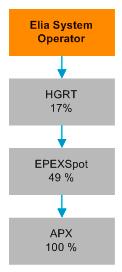
1. Exchange of Elia’s APX share for EPEX SPOT shares, which were then contributed to HGRT
2. Sale of 6.2% stake in HGRT to RTE, resulting in decrease of the stake to 20%.
3. Sale of 3.0% stake in HGRT to APG, Amprion and Swissgrid (1% to each new shareholder).
Following these transactions Elia (17%), RTE, TenneT, APG, Amprion and Swissgrid together own 49% of the new EPEX SPOT capital through HGRT. HGRT is still accounted for using the equity method as the Group continues to have significant influence over the company.
The current structure of HGRT and its associates is a follows:
8.
44
8.2. Financial risk and derivative management
PRINCIPLES OF FINANCIAL RISK MANAGEMENT
The Group aims to identify each risk and set out strategies to control the economic impact on the Group’s results. The Risk Management Department defines the risk management strategy, monitors the risk analysis and reports to the management and the Audit Committee. The financial risk policy is implemented by determining appropriate policies and setting up effective control and reporting procedures. Selected derivative hedging instruments are used depending on the assessment of r isk involved. Derivatives are used exclusively as hedging instruments. The regulatory framework in which the Group operates considerably restricts their effects on profit or loss (see the ‘Regulatory framework and tariffs’ chapter). The major impact of increased interest rates, credit risk, etc. can be settled in the tariffs, in accordance with the applicable legislation.
CREDIT RISK
Credit risk encompasses all forms of counterparty exposure, i.e. where counterparties may default on their obligations to the Company in relation to lending, hedging, settlement and other financial activities. The Company is exposed to credit risk from its operating activities and treasury activities. In respect of its operating activities, the Group has a credit policy in place, which takes into account the risk profiles of the customers. The exposure to credit risk is monitored on an ongoing basis, resulting in a request to deliver bank guaranties from the counter party for some major contracts.
At the end of the reporting period there were no significant concentrations of credit risks. The maximum credit risk is the carrying amount of each financial asset, including derivative financial instruments.
(in million EUR)
2016 2015
Loans and receivables 63.0 16.4
Cash and cash equivalents 176.6 626.4
Immediately claimable deposits 7.1 13.3
Interest rate swaps used for hedging:
Liabilities (9.4) (18.0)
Total 237.3 638.0
The movement in the allowance for impairment in respect of loans and receivables during the year was as follows:
(in million EUR) Bad debtors Impairment losses Remaining balance
Opening balance 1.5 (1.2) 0.3
Changes during the year 0.1 (0.1) 0.0
Balance at 31 December 2015 1.6 (1.3) 0.3
Opening balance 1.6 (1.3) 0.3
Changes during the year (0.3) 0.2 (0.1)
Balance at 31 December 2016 1.3 (1.1) 0.2
The Group believes that the unimpaired amounts overdue by more than 30 days are still collectible, based on historic payment behaviour and extensive analysis of customer credit risk, including underlying customers’ credit ratings, when available. The credit quality of trade and other receivables is assessed based on a credit policy.
CURRENCY RISK
The Group is not exposed to any significant currency risk, either from transactions or from exchanging foreign currencies into euro, since it has no foreign investments or activities and less than 1% of its costs are expressed in currencies other than the eu ro.
LIQUIDITY RISK
Liquidity risk is the risk that the Group may not be able to meet its financial obligations. The Group limits this risk by constantly monitoring cash flows and ensuring that there are always sufficient credit line facilities available.
The Group’s objective is to maintain a balance between continuity of funding and flexibility through the use o f bank loans, confirmed and unconfirmed credit facilities, commercial paper program, etc. For medium to long term funding, the Group uses bonds. The maturity profile of the debt portfolio is spread over several years. The Group Treasury frequently assesses its funding resources taking into account its own credit rating and general market conditions.
Referring to the bond issues in 2009, 2010, 2013, 2014 and 2015, access to sources of funding should sufficiently be available.
45
(in million EUR)
Non derivative financial liabilities
Closing Balance Expected cash outflows
6 months or less 6 12 months 1 2 years 2 5 years
5 years
3,520.0 (4,147.4) (884.7) (3.4) (96.3) (699.6) (2,463.4)
Unsecured bond issues 2.589,6 (3,234.0) (530.2) 0.0 (68.5) (679.3) (1,956.0)
Unsecured financial bank loans and other loans 620,2 (603.1) (44.2) (3.4) (27.8) (20.4) (507.4)
Trade and other payables 310.3 (310.3) (310.3)
Derivative financial liabilities 18.0 (17.2) (4.4) (4.3) (8.5) 0.0 0.0
Interest rate swaps used for hedging 18.0 (17.2) (4.4) (4.3) (8.5)
Total at 31 December 2015
3,538.1 (4,164.6) (889.1) (7.7) (104.8) (699.6) (2,463.4)
Non derivative financial liabilities 3,124.6 (3,722.0) (562.6) (2.1) (73.3) (670.4) (2,413.7)
Unsecured bond issues 2,090.6 (2,703.8) (68.5) 0.0 (68.5) (653.0) (1,913.8)
Unsecured financial bank loans and other loans 643.3 (627.5) (103.3) (2.1) (4.8) (17.4) (499.9)
Trade and other payables 390 8 (390 8) (390 8)
Derivative financial liabilities 9.4 (9.5) (4.7) (4.8) 0.0 0.0 0.0
Interest rate swaps used for hedging 9.4 (9.5) (4.7) (4.8)
Total at 31 December 2016
3,134 0 (3,731 5) (567 3) (6.9) (73.3) (670.4) (2,413.7)
In April 2016, Elia Transmission reimbursed a €500 million 9 year Eurobond that came to its maturity date
Details of the used and unused back up credit facilities are set out here below: (in million EUR)
Maturity Available amount
Confirmed credit line 08/07/2021 110.0
Confirmed credit line 08/07/2021 110.0
Confirmed credit line 08/07/2021 110.0
Confirmed credit line 08/07/2021 110.0
Average basic interest Amount used Amount not used
Euribor + 0.30% 0,0 110.0
Euribor + 0.30% 0,0 110.0
Euribor + 0.30% 0,0 110.0
Euribor + 0.30% 0,0 110.0
Confirmed credit line 08/07/2021 110.0 Euribor + 0.30% 0,0 110.0
Confirmed credit line 08/07/2021 100.0 Euribor + 0.30% 0,0 100.0
Uncommitted credit line facility unlimited 100.0 Euribor + margin when concluding deal 0.0 100.0 Belgian dematerialised treasury notes unlimited 250.0 Euribor + margin when concluding deal 78.0 172.0 Straight Loan EGI unlimited 2.5
Euribor + 0.75% 2.0 0.5 Total 1,002.5 80.0 922.5
As at 31 December 2016 the German segment have unused facilities amounting to in total €900 million (€150 million overdraft facility and €750 million revolving facilities).
INTEREST RATE RISK
Interest rate risk is the risk that the fair value or future cash flows of a financial instrument will fluctuate because of changes in market interest rates. The Group’s exposure to the risk of changes in market interest rates relates primarily to the Group’s long term debt obligations with floating interest rates.
The Group manages its interest rate risk by having a balanced portfolio of fixed and variable rate loans and borrowings. To manage this, the Group enters into interest rate swaps, in which the Group agrees to exchange, at specified intervals, the differenc e between fixed and variable rate interest amounts calculated by reference to an agreed upon notional principal amount. These swaps are designated to hedge underlying debt obligations.
The table (see Note 7.11) shows the average interest rate at the balance sheet date.
SENSITIVITY ANALYSIS
Changes in the interest rates will not affect the consolidated result in the short and long term as the Group operates within a regulatory framework where the consequences of fluctuations in financial expenses are mainly recovered in tariffs, exc ept for the items which are directly recognized through OCI.
FAIR VALUE SENSITIVITY ANALYSIS FOR INTEREST RATE SWAPS
A change of 100 basis points in interest rates would have increased (decreased) other comprehensive income by the amounts shown below:
(in million EUR)
100 bp increase 100 bp decrease
Interest rate swaps Impact in equity (1.1) 1.1
HEDGING
All financial derivatives the Group enters into relate to an underlying transaction or forecasted exposure, depending on the expected impact on the income statement, and if the stringent IAS 39 criteria are met, the Group decides on a case by case basis whether hedge accounting will be applied. The following paragraphs describe the transactions whereby hedge accounting is applied. At 31 December 2016 the Group has no transactions which do not qualify for hedge accounting.
>
46
In accordance with the hedge accounting rules, all derivative financial instruments are designated as cash flow hedges and valued at fair value. Consequently, the portion of the gain or loss on the derivative financial instrument that can be considered an effective hedge is reflected directly in equity (hedging reserves net of tax).
Interest rate swaps have an interest rate varying from 4.4% to 4.41%. At 31 December 2016, the Group held hedging instruments with a contracted reference value of €200.0 million. The net fair value of the swaps at 31 December 2016 totalled €9.4 million and was entirely composed of liabilities. The amounts are included as derivatives at fair value.
At 31 December 2016, no significant financial expenses resulting from ineffective cash flow hedges are included in profit or loss.
CAPITAL RISK MANAGEMENT
The purpose of the Group’s capital structure management is to maintain the debt and equity ratios related to the regulated ac tivities in line with the requirement of the regulatory framework (one third equity and two thirds debt capital). This approach allows the Group to manage the security of the liquidity at all times via flexible access to capital markets, so as to be able to financ e strategic projects and to offer an attractive remuneration to shareholders.
The Company’s dividend policy involves optimising dividend payments while still bearing in mind that the company has sufficient self financing capacity to carry out its legal mission.
The Company offers the employees the opportunity to subscribe to capital inc reases that are exclusively reserved for them.
8.3. Commitment and contingencies
OPERATING LEASE COMMITMENTS GROUP AS A LESSEE
The Group entered into commercial leases on motor vehicles, IT equipment and office buildings. The leases related to cars and IT equipment have an average life of three years; the contracts regarding the buildings have a normal term of nine years, with the possibility of renewing the lease after that. Renewals are at the option of the specific entity that holds the lease. Normal conditions for renewal of lease contracts are applicable.
Future minimum rentals payable under non cancellable operating leases are as following:
(in million EUR) <1 year 1 5 years >5 years
Buildings 2.4 1.2 0.0
Cars, it equipment and others 6.3 10.9 0.0
Balance at 31 December 2015 8.7 12.1 0.0
Buildings 2.4 2.4 0.0
Cars, it equipment and others 6.2 10.8 0.0
Balance at 31 December 2016 8.6 13.2 0.0
The following expenses related to these lease contracts were recognised in the profit or loss:
(in million EUR)
2016 2015
Buildings 2.4 2.5
Cars, it equipment and others 6.2 6.2
Total 8.6 8.7
OPERATING LEASE COMMITMENTS GROUP AS A LESSOR
The Group has entered into commercial property leases on certain elements of property, plant and equipment, mainly consisting of optimising use of sites and high voltage pylons. These leases have remaining terms of a minimum of nine years.
Future minimum rental receivables are as follows:
(in million EUR) <1 year 1 5 years >5 years
Telecom 14.7 9.6 13.4
Land & Buildings 0.6 0.6 0.0
Balance at 31 December 2015 15.3 10.2 13.4
Telecom 13.1 9.8 13.1
Land & Buildings 0.6 0.5 0.0
Balance at 31 December 2016 13.6 10.3 13.1
The following revenue related to these lease contracts was recognised in the income statement:
(in million EUR)
2016 2015
Telecom 13.0 14.6
Land & Buildings 0.6 0.2
Total 13.6 14.8
CONTINGENT RENTS PURCHASE OPTION
The Group has no contracts which include contingent rental payments and no purchase options were agreed in the significant lease contracts.
CAPITAL EXPENDITURE COMMITMENT
As at 31 December 2016, the Group has a commitment of €872.7 million relating to the purchase contracts for the installation of property, plant and equipment for further grid extensions. These capital expenditure commitments include the commitments of the German segment for an amount of €361.7 million (at 60% stake of Elia).
47
OTHER CONTINGENCIES AND COMMITMENTS
As at 31 December 2016, the Group has a commitment of €155.1 million relating to purchase contracts for general expenses, maintenance and repair costs. The amount includes the commitments of the German segment for an amount of €17.6 million (at 60% stake of Elia).
Elia System Operator also provided a parent company guarantee to her joint venture Nemo Link Limited amounting to €176.0 million in relation to the EPC contracts in order for Nemo link Ltd to be able to build the interconnector
After having received an approval from the Walloon Government and from the CREG, on 22 June 2015, Elia entered into an agreement with Solar Chest for the sale of Walloon green certificates for a total amount of €275 million of which an amount of € 221 million was settled in 2015 and a total amount of 48 million was settled in 2016. The mission of Solar Chest is to buy, hold and sell Walloon green certificates for a period of respectively 5, 6 and 7 years. At the end of each period (30th June 2020, 30th June 2021 and 30th June 2022) potential unsold certificates will be bought back by Elia. The CREG confirmed and guaranteed to Elia that at the end of each reservation period, the cost and any expense for repurchase of nonmarketable certificates wil l be authorized to recover fully through the tariffs for “levies”, as consequence the impact of the potential repurchase by Elia will have no impact on financial performance of the Company.
8.4. Related parties
TRANSACTIONS WITH KEY MANAGEMENT PERSONNEL
The key management includes members of the Board of Directors and Elia’s Management Committee, which comprises of the Chief Executive Officer, Chief Financial Officer, Chief Officer Infrastructure Development, Chief Officer Operations, Maintenance & Methods, Chief Corporate Affairs Officer and Chief Officer Customers, Market & System
The members of the Board of Directors are no employees of the Group. The remu neration of their mandate is detailed in the Corporate Governance Statement of this annual report
The members of Elia’s Management Committee are hired as employees and the components of their remuneration are set out below. Members of the Management Committee do not receive stock options, special loans or other advances from the Group.
(in million EUR) 2016 2015
Short term employee benefits 2.4 2.2
Basic remuneration 1.6 1.6
Variable remuneration 0.8 0.5
Post employment benefits 0.4 0.3
Other variable remuneration 0.6 0.5
Total gross remuneration 3.4 3.0
Number of persons (in units) 7 7
Average gross remuneration per person 0.5 0.4 Number of shares (in units) 22,039 19,111
Some members of the Management Committee also hold shares in Elia System Operator for an overview we also refer to the Corporate Governance Statement of this annual report.
In addition Elia’s Management Committee also assessed whether transactions occurred with entities in which they or members of the Board of Directors exercise a significant influence (e.g. positions as CEO, CFO, vice presidents of the Management Committee, etc.). Significant transactions occurred in 2016, with some distribution system operators. The total amount of realized sales equals to €53.8 million. The total amount of expenses equals to €3.7 million. As per 31 December 2016 there was an outstanding trade receivable position of €0.2 million and an outstanding trade debt position of €1.1 million
TRANSACTIONS WITH JOINT VENTURES AND ASSOCIATED COMPANIES
Transactions between the Company and its subsidiaries which are related parties were eliminated during consolidation and therefore are not recognised in this note.
In the 2016 and 2015 financial years, there were no transactions with 50Hertz Offshore, E Offshore and Atlantic Grid Investment.
Transactions with joint ventures and associated companies are not eliminated; details of transactions with other related parties are shown below:
(in million EUR) 2016 2015
Transactions with joint ventures and associated companies 27.8 0.7
Sales of goods 34.6 4.4
Purchases of goods (8.4) (4.7)
Interest and similar revenue 1.6 1.0
Outstanding balances with joint ventures and associated companies (28.8) (6.6)
Long term debtors 54.1 15.2
Trade debtors 2.8 5.6
Trade debts (29.7) (27.5)
Accruals and deferred income (0.1) 0.0
Deferred charges and accrued revenues 1.6 0.3
48
The increase on sales of goods can mainly be explained by the turnover realized by Elia Grid International GmbH on 50Hertz Transmission for the construction of the Substation Gransee and Substation Heinersdorf (€17.1 million) The remaining increase is mainly a result of the recharge of pre FID development costs to Nemo Link (€8.9 million) (see note 7.4 for more details).
The significant increase in long term debtors can entirely be explained by the outstanding position on Nemo Link, we further refer to note 7.4.
We also refer to Note 8.3 in which we disclosed the guarantees Elia System Operator issued in favo ur of its joint venture Nemo Link Limited.
8.5. Subsidiaries, joint ventures and associates
GROUP STRUCTURE OVER VIEW
SUBSIDIARIES
Elia System Operator SA has direct and indirect control of the subsidiaries listed hereafter.
All the entities keep their accounts in euro (except E Offshore A LLC, Atlantic Grid Investment A Inc and Atlantic Grid A LLC, whose accounts are held in USD) and have the same reporting date as Elia System Operator SA (except Eurogrid International SCRL).

49
Name
Country of establishment
Headquarters Stake %
2016 2015
Elia Asset SA Belgium Bd de l’Empereur 20, 1000 Bussels 99.99 99.99
Elia Engineering SA Belgium Bd de l’Empereur 20, 1000 Bussels 100.00 100.00
Elia Re Luxembourg Rue de Merl 65, 2146 Luxembourg 100.00 100.00
Elia Grid International SA Belgium Bd de l’Empereur 20, 1000 Bussels 80.00 80.00
Elia Grid International GmbH Germany Heidestraße 2, 10557 Berlin 80.00 80.00 Joint ventures
Eurogrid International CVBA Belgium
Bd de l’Empereur 20, 1000 Bussels 60.00 60.00
Eurogrid GMBH Germany Heidestraße 2, 10557 Berlin 60.00 60.00
50Hertz Transmission GmbH Germany Heidestraße 2, 10557 Berlin 60.00 60.00
50Hertz Offshore GmbH Germany Heidestraße 2, 10557 Berlin 60.00 60.00
Gridlab GmbH Germany Mittelstraße 7, 12529 Schönefeld 60.00 60.00
E Offshore A LLC
U.S. 874, Walker Road, Suite C, 19904 Dover, Delaware 60.00 60.00
Atlantic Grid Investment A Inc U.S. 1209 Orange Street, 19801 Wilmington, Delaware 60.00 60.00 Nemo Link Ltd. United Kingdom Strand 1 3, London WC2N 5EH UK 50.00 50.00 Associated companies accounted for using the equity method
H.G.R.T S.A.S. France 1 Terrasse Bellini, 92919 La Défense Cedex 17.00 17.00 Coreso SA Belgium Avenue de Cortenbergh 71, 1000 Brussels 21.66 26.00
Ampacimon SA Belgium Rue des Chasseurs Ardennais 3, 4031 Angleur 19.64 19.64 Other participations
EMCC European Market Coupling Company GmbH Germany Hopfenmarkt 31, 20457 Hamburg 0.00 12.00
JAO SA Luxembourg 2, Rue de Bitbourg, 1273 Luxembourg Hamm 8.00 8.00
Atlantic Grid A LLC
U.S. 4445, Willard Av, Suite 1050, 20815 Chevy Chase, Maryland 6.00 6.00
European Energy Exchange (EEX) Germany Augustusplatz 9, 04109 Leipzig 5.20 5.20
TSCNET Services GmbH Germany Dingolfinger Strasse 3, 81673 Munich 4.62 4.62
8.6. Subsequent events
There are no important events to report after 31 December 2016.
8.7. Miscellaneous
Impact of the result of the United Kingdom referendum
The Group has started an analysis of the potential impact resulting from the Brexit on the consolidated financial statements. At this stage a full impact analysis is not possible given the lack of position taken both by the UK government and Europe. The Group expects to be able to provide a preliminary feedback as of the end of 2017
At this stage the Group does not expect any impact on the construction of the Nemo Link interconnector.
8.8. Services provided by the auditors
The General Meeting of Shareholders appointed as joint auditors KPMG Bedrijfsrevisoren Burg. CVBA (represented by Benoit Van Roost) and Ernst & Young Bedrijfsrevisoren BCVBA (represented by Marnix Van Dooren) for the audit of the consolidated financial statements of Elia System Operator SA and the audit of the statutory financial statements of Elia System Operator SA, Elia As set SA and Elia Engineering SA.
The following table sets forth the fees of the joint auditors and its associated companies related to the delivered services with respect to accounting year 2016:
in EUR Belgium Other offices in the network Total
Statutory Audit 175,336 339,380 514,716
Audit related 135,905 221,150 357,055
Income tax 105,496 61,377 166,873
Indirect tax 67,261 1,000 68,261
Other advisory 0.000 82,701 82,701
Total 483,998 705,608 1,189,606
50
REGULATORY FRAMEWORK AND TARIFFS
9.1 Regulatory framework in Belgium
9.1.1 Federal legislation
The Electricity Act forms the overall basis and lays down the core principles of the regulatory framework governing Elia’s activities as a transmission system operator in Belgium.
This Act was heavily amended on 8 January 2012 by the trans position at federal level of the 3rd package of European directives. The new Electricity Act:
• strengthens the unbundling of transmission activities;
• sets out in greater detail the rules for operating and accessing the transmission system;
• redefines the transmission system operator’s legal mission, m ainly by expanding it to the offshore areas over which Belgium has jurisdiction; and
• strengthens the role of the regulatory authority, particularly as regards establishing methods for determining transmission t ariffs.
A number of royal decrees implement the regulatory framework in more detail, particularly the Royal Decree on the Federal Grid Code. Similarly, the decisions passed by the regulatory authorities supplement this framework to create the regulatory framework
9.1.2 Regional legislation
The three Belgian Regions are primarily responsible for the local transmission of electricity through grids with a voltage equal to or lower than 70 kV in their respective territories. The Regions are not responsible for setting electricity transmission tariff s, which falls under federal jurisdiction. The Flemish Region, the Brussels Capital Region and the Walloon Region have also transposed into their legislative framework the provisions of the 3rd European package that apply to them. The regional decrees have been complemented by several other rules on matters such as public services, renewable energy and authorisation procedures for suppliers.
9.1.3 Regulatory agencies
As required by European Union law, the Belgian electricity market is monitored and controlled by independent regulators.
FEDERAL REGULATOR
The Commission for Electricity and Gas Regulation (CREG) is the federal regulator and its powers with regard to Elia include:
• approving the standard terms of the three main contracts used by the Company at the federal level: the connection contract, the access contract and the ARP contract;
• approving the capacity allocation system at the borders between Belgium and neighbouring countries;
• approving the appointment of the independent members of the Board of Directors;
• determining the tariff methodologies to be observed by the system operator for the computation of the different tariffs applicable to the grid users;
• certifying that the system operator actually owns the infra structure that it operates and meets the regulatory requirements for independence from generators and suppliers.
REGIONAL REGULATORS
Operation of electricity grids with voltages of 70 kV and less falls within the jurisdiction of the respective regional regul ators. Each of them may require any operator (including Elia if it operates such grids) to abide by any specific provision of the regional electricity rules under the threat of administrative fines or other sanctions. The regional regulators are not empowered to set tariffs f or grids that perform the function of transmitting electricity, as tariff setting falls under the sole jurisdiction of CREG for these grids.
9.1.4 Tariff setting
TARIFF REGULATIONS
On 18 December 2014, CREG adopted a decree setting out calculation methods and establishing tarif f conditions for the electricity grid users performing a transmission function. The CREG introduced her tariff proposal 2016 2019 on 30 June 2015 based on the aforementioned methodology. This tariff proposal, adapted in accordance with the discussion held between Elia and the CREG in the course of the 2nd half of 2015 was approved on December 3, 2015.
TARIFF REGULATIONS APPLYING IN BELGIUM
As the operator of grids performing a transmission function (covering the transmission grid and the local and regional transmission grids in Belgium), Elia makes most of its income from the regulated tariffs charged for use of these grids (tariff income), w hich are approved in advance by CREG. As of 1 January 2008, the prevailing tariff regulation mechanisms provide for th e setting of approved tariffs for four year periods, barring specific circumstances. The tariff methodology established by CREG at the end of 2014 did not change this system. 2016 was therefore the first year of the third four year regulatory period.
The tariff mechanism is based on accounts stated in accordance with Belgian accounting regulations (Be GAAP). The tariffs are based on budgeted costs, less a number of sources of non tariff income. These costs are then divided based on an estimate of the volumes of electricity taken off the grid and, in the case of some costs, based on estimated volumes of electricity injected into the grid, in accordance with the terms of the tariff methodology drawn up by CREG.
The costs taken into account include the forecast value of the authorised remuneration of the invested capital, an estimate of the amounts allocated to Elia under the form of performance incentives and the predicted values of various cost categories . Those costs are classified in 3 groups: the controllable costs, for which the efficiency gains or losses are equally shared between Elia
9.
51
(increase/decrease of authorised benefit) and the grid users (reduction/increase in future tariffs); the non controllable costs over which Elia has no influence and for which the deviations versus budget are completely allocated to the total revenue of a future regulatory period; the influenceable costs on which an hybrid rule applies.
FAIR REMUNERATION
Fair remuneration is the return on capital invested in the grid. It is based on the average annual value of the regulated asset base (RAB), which is calculated annually, taking into account new investments, depreciations and changes in working capital.
In that context, the following formula, which has been applied since 1 January 2016, is used to calculate the fair remuneration, when consolidated capital and reserves account for more than 33% of the average regulated asset base, as is the case at present:
• A: [33% x average RAB of the year n x [(OLO n)+ (Beta x risk premium)] x illiquidity premium]; plus
• B: [(S 33%) x average RAB x (OLO n + 70 base points)]; where
• OLO n is the interest rate for Belgian 10 year linear bonds for the year in question;
• S = consolidated capital and reserves/RAB, in accordance with Belgian accounting standards (BE GAAP);
• Beta is calculated based on daily Elia share prices, compared with the BEL 20 index, over a three year period. The value of the product of the beta parameter and the risk premium cannot be lower than 0. 53;
• The risk premium is fixed at 3.5%;
• The illiquidity premium is fixed at 1.10.
PART A
The rate of remuneration (in %) as set by CREG for year ‘n’ is equal to the sum of the risk free rate, i.e. the average rate of Belgian 10 year linear bonds and a premium for share market risk, weighted using the applicable beta factor.
The reference ratio of 33% is applied to Elia’s average regulated asset base (RAB) to calculate Elia’s reference equity.
CREG encourages a ratio between equity and regulated asset base that is as close as possible to 33%. As a consequence part B (applicable to the reference equity exceeding 33% of the RAB) is remunerated at a lower rate.
PART B
If Elia’s actual equity is higher than the reference equity, the surplus amount is balanced out with a reduced rate of remuneration calculated using the following formula: [(OLO n + 70 base points)].
The Electricity Act also provides that the regulator may set higher remuneration rates for capital that is invested to finance projects of national or European interest.
Non controllable elements
This category of costs (and revenues) over which Elia has no direct control are not subject to incentive mechanisms by the CREG, and are an integral part of the costs used to determine the tariffs. The tariffs are set based on forecast values for these costs.
The most important costs consist of the following items: depreciation of tangible fixed assets, ancillary services (except fo r the reservation costs of ancillary services excluding black start, which are referred to as “Influenceable costs”), costs related to line relocation imposed by a public authority, and taxes, partially compensated by revenues from non tariff activities (for example cross border congestion revenues). This also includes financial charges/revenues for which the principle of financial embedded debt has been confirmed. As a consequence, all actual and reasonable finance costs related to debt financing are included in the tariffs
Controllable elements
The costs (and revenues) over which Elia has direct control are subject to an i ncentive regulation mechanism, meaning that they are subject to a sharing rule of productivity and efficiency improvement that may occu r during the regulatory period. The sharing factor is 50%. Therefore, Elia is encouraged to control a defined category of its costs. Any saving with repect to the allowed (adju sted) budget positively impacts the net profit of the Issuer by 50% of the amount (bef ore tax); symetrically, any over spending affects its profit negatively.
Influenceable costs
The reservation costs of ancillary services, except for black start, are qualified as ‘influencable costs’ meaning that budge t overruns or efficiency gains form an incentive (in so far as they are not caused by a given list of external factors). 15% of difference in expenses between Y 1 and Y is profit/loss (pre tax) for the Issuer, with a cap and a floor of 2 million euros and 6 million euros
52
Other Incentives
• Incentive on ‘strategic investment projects’ (Mark up on investments)
As the CREG considers that strategic investments (i.e. investments mainly aimed at enhancing EU integration) are of primary importance for the community, it agreed with the Issuer to introduce a mark up on a selected list of projects. This additional remuneration is calculated as a percentage on the cumulative actual amount dispensed ( investment amounts are ca pped per year and per project). The mark up applies at full rate as long as the OLO rate is equal or below 0.5 per cent. If the actual interest rate of OLO is higher than 0.5 per cent., part of the mark up is reduced accordingly (capped at OLO rate 2.16 per cent.). In order to receive the mark up, the Issuer must perform the commissioning of the relevant investment in due time,otherwise 10% of the amount earned for the corresponding project is to be reimbursed. Additionnaly, after commissioning, the Issuer must ensure a sufficient availability of the concerned asset; otherwise, 10% of the amount earned for the correspondi ng project is to be reimbursed;
• Market integration: This incentive consists of the (i) enhancement of import capacity, and (ii) increase of welfare generated by regional market coupling. Both elements can influence only positively the net profit (pre tax) of the Issuer as the mechanism predefines a floor and a cap for each incentive €0 to €6 Mio for the import capacity and €0 to €11 Mio for the welfare. (iii) The profit (dividends and capital gains) resulting from financial participations in other companies which the CREG has accepted a s being part of the RAB, is allocated as follows: 40 % is allocated to future tariff reductions and 60 % (before tax) to the Issuer’s profit;
• ‘Investment programme’: This incentive is related to 2 objectives; (i) optimal ex ante/ex post justification by the Issuer of project CAPEX (€0 to 2.5 Mio), and (ii) the timely realisation of 4 large infrastructure projects (Stevin, Brabo, Alegro and 4th phase shifter) (€0 to 1 Mio per project). Both elements can influence only positively the net profit (pre tax) of the Issuer as the mechanism predefines a floor and a cap for each of the objectives;
• Network availability: If the average interruption time (“AIT”) reaches a target predefined by the CREG, the Issuers net profit (pre tax) is impacted positively with a maxim um of €2 Mio;
• Innovation: operational subsidies and tax exemptions for R&D, are considered controllable income. As an incentive, an amount corresponding to max 50% of the amount of subsidies received is attributable to the net profit of the Issuer with a m inimum of €0 and a maximum of €1 Mio;
• Discretionary: On an annual basis the CREG stipulates the objectives for this section. The incentive could influence positively the Issuers net profit (pre tax) by between €0 and maximum €2 Mio.
Settlement of deviations from budgeted values
The actual volumes of electricity transmitted may differ from the forecast volumes. If the transmitted volumes are higher (or lower) than those forecast, the deviation is booked to an accrual account during the year in which it occu rs and such deviation from budgeted values creates a "regulatory debt" (or a "regulatory receivable"). The same mechanism applies to Non controllable elements.
The regulatory framework provides that the above mentioned deviations, at the end of the regulat ory period, are taken into account by the Issuer as part of the budgeted amounts for setting the tariffs for the next regulatory period.
Cost and revenue allocation between regulated and non regulated activities
The tariff methodology for 2016 through 2019 describes a mechanism with regard to the development of new activities by the Is suer outside the Belgian regulated perimeter and how the Issuer is remunerated for these activities in the future, if applicable. This agreement sets out:
• a mechanism to allocate costs accurately to different activities and to ensure that Belgian tariffs are not adversely affecte d by the Issuer carrying out activities other than Belgian regulated activities; and
• a mechanism to ensure that the impact of financial participations in other companies not considered as part of the RAB by the CREG (such as, participations in regulated or non regulated activities outside of Belgium, including the participation in 50Hertz, EGI ) are neutral for the Belgian tariffs. All costs and all revenues related to these activities should be borne by the Issuer.
53
9.2 Regulatory framework in Germany
9.2.1 Relevant legislation
The German legal framework is laid down in various pieces of legislation. The key law is the German Energy Act (Energiewirtschaftsgesetz EnWG), which defines the overall legal framework for the gas and electricity supply industry in Germany. The EnWG is supported by a number of laws, ordinances and regulatory decisions, which provide detailed rules on the current regime of incentive regulation, accounting methods and network access arrangements, including:
• the Ordinance on Electricity Network Tariffs (Verordnung über die Entgelte für den Zugang zu Elektrizitätsversorgungsnetzen (Stromnetzentgeltverordnung StromNEV)), which establishes, inter alia, principles and methods for the grid tariff calculations and further obligations of system operators;
• the Ordinance on Electricity Network Access (Verordnung über den Zugang zu Elektrizitätsversorgungsnetzen (Stromnetzzugangsverordnung StromNZV), which, inter alia, sets out the further detail on how to grant access to the transmission systems (and other types of grids) by way of establishing the balancing amount system (Bilanzkreissystem), scheduling of electricity deliveries, control energy and further general obligations, e.g. congestion management (Engpassmanagement), publication obligations, metering, minimum requirements for various types of contracts and the duty of certain system operators to manage the ‘Bilanzkreissystem’ for renewable energy;
• the Ordinance on Incentive Regulation (Verordnung über die Anreizregulierung der Energieversor gungsnetze (Anreizregulierungsverordnung ARegV)), which sets out the basic rules for incentive regulation of TSOs and other system operators (as further described below). It also describes in general terms how to benchmark efficiency, which costs enter the efficiency benchmarking, the method of determining inefficiency and how this translates into yearly targets for efficiency growth.
9.2.2
Regulatory agencies in Germany
The regulatory agencies for the energy sector in Germany are the Federal Network Agency (Bundesnetzagentur BNetzA) in Bonn for grids to which over 100,000 grid users are directly or indirectly connected and the specific regulatory authorities in th e respective federal states for grids to which fewer than 100,000 grid users are directly or indirectly connected . The regulatory agencies are, inter alia, in charge of ensuring non discriminatory third party access to grids and monitoring the grid use tariffs levied by the TSOs. 50Hertz Transmission and 50Hertz Offshore are subject to the authority of the Federal Ne twork Agency.
9.2.3
Tariff setting in Germany
The current regulation mechanism is established in Germany by ARegV. According to ARegV, grid tariffs are defined to generate a pre defined ‘revenue cap’ as determined by the Federal Network Agency for each TSO and for each regulatory period. The revenue cap is principally based on the costs of a base year, and is fixed for the entire regulatory period, except when it is adjust ed to account for specific cases provided for in the ARegV. The system operators are not al lowed to retain revenue in excess of their individually determined revenue cap. Each regulatory period lasts five years, the second regulatory period started on 1 Janua ry 2014 and will end on 31 December 2018. Tariffs are public and are not subject to nego tiation with customers. Only certain customers (under certain fixed circumstances that are accounted for in the relevant legislation) are allowed to agree to indi vidual tariffs according to Article 19 of StromNEV (for example, in the case of sole use of a network asset). The Federal Network Agency has to approve such individual tariffs.
For the purposes of the revenue cap, the costs incurred by a system operator are classified into two categories as follows:
• Permanently non influenceable costs (PNIC): these costs are fully integrated into the ‘revenue cap’ and are fully recovered by the grid tariffs, albeit usually with a two year time lag. PNIC includes return on equity, imputed trade tax, cost of debt, depreciation and operational costs (currently at a fixed rate of 0.8 % of the capitalised investment costs of the respective onshore investments) for what are called investment measures. The cost of debt related to investment measures is currently capped at the lower value of the actual cost of debt or cost of debt as calculated in accordance with a published Federal Network Agency guideline. Since 2012, the costs associated with these investment measures have been based on forecast values. The differences between the forecast values and the actual values are reflected in the regulatory account. In addition, PNIC includes costs relating to ancillary services, grid losses and redispatch costs, as well as European initiatives and income from aucti ons. These costs and income are included in the revenue cap based on a procedural regulation mechanism set by the Federal Network Agency in accordance with Article 11(2) ARegV (FSV). The regulation process relating to ancillary services and grid losses costs gives the system operator an incentive to outperform the planned costs through bonus/malus mechanisms Since the revision of the ARegV in 2016, also costs for the curtailment of renewable energy sources in order to relief grid congestions are based on forecast values. Moreover, costs resulting from European projects of common interest (PCI) where a cost contribution of Germany has been decided can be included as PNIC, albeit with a two year time lag;
• Temporary non influenceable costs (TNIC) and influenceable costs (IC): these costs include return on equity depreciation, cost of debt, of imputed trade tax and other operational expenses and are subject to an incentive mechanism as set by the Federal Network Agency, which contains an efficiency factor (only applicable to IC) , a productivity factor improvement and an inflation factor (applicable to both TNIC and IC) over a five year period. In addition, the current incentive mechanism provides for the use of a quality factor, but the criteria and implementation mechanism for s uch a factor for TSOs are yet to be described by the Federal Network Agency. The various defined factors give the TSOs a medium term objective to eliminate what are deemed to be inefficient costs. As regards the cost of debt, the allowed cost of debt relat ed to influence able costs needs to be proven as marketable;
54
•
As for return on equity, the relevant laws and regulations set out the provisions relating to the allowed return on equity, w hich is included in the TNIC/IC for assets belonging to the regulatory asset base and the PNIC for assets approved in investment budgets. For the second regulatory period (2014 2018), the return on equity is set at 7.14 % for investments made before 2006 and 9.05 % for investments made since 2006, based on 40 % of the total asset value regarded as ‘financed by equity’ with the remainder treated as ‘quasi debt’. In 2016, the BNetzA determined the return on equity applicable for the 3rd regulatory period (2019 2023); compared to the 2nd regulatory period, the values were significantly decreased to 5.12% for investments made before 2006 and 6.91% for investments made since 2016. The return on equity is calculated before corporate t ax and after imputed trade tax;
• Separately from the revenue cap, 50Hertz is compensated for costs incurred related to its renewable energy obligations, including EEG and CHP/KWKG obligations, offshore liabilities… For this purpose, several surcharges have been implemented that are subject to specific regulatory mechanisms aimed at a balanced treatment of costs and income.
CHANGES IN TARIFF REGULATIONS
In 2016, a revision of the ARegV entered into force implementing various relevant changes especially regarding the regulatory regime for distribution system operators. However, also TSOs are affec ted as the ARegV revision changes several PNIC aspects such as the methodology for the determination of replacement portions in new investment measures (for already approved and applied for investment measures, the conservation of the status quo is foresee n), the consideration of costs from the curtailment of renewable energy sources based on forecast values and the consideration of PCI costs. Moreover, the ARegV revision substantiates the methodologies that can be applied for the measurement of the individ ual efficiency of the four German TSOs, allowing only an international benchmark or a relative reference grid analysis for this purpose.
As of 31 December 2016, 50Hertz had obtained approval for 77 of the 112 active investment measure requests made since 2008. Based on the total investment budget request volume of 12.3 bn. € the approved investment budget as of the same date accounts for 7.2 bn. €.
TARIFFS
Grid access tariffs were calculated based on the respective revenue cap and published on the 15th of October 2016 for the year 2017 Compared to 2016, they have increased in average by 42%. Main reason for this significant increase is the consideration of forecast costs for the curtailment of renewable energy sources following the AReg V revision which means that in order to convert the old methodology to the revised one, two cost positions (forecast costs 2017 in addition to actual costs 2015) are include d. Moreover, the increasing investment costs especially for offshore expansion in t he Baltic Sea and in the North Sea contribute to the tariff increase.
55

56

57
INFORMATION ABOUT THE PARENT COMPANY
Extracts from the statutory annual accounts of Elia System Operator SA, drawn up in accordance with Belgian accounting standards, are given hereafter in abbreviated form.
Pursuant to Belgian company legislation, the full financial statements, the annual report and the joint auditors’ report are filed with the National Bank of Belgium.
These documents will also be published on the Elia website and can be obtained on request from Elia System Operator SA, Boulevard de l’Empereur 20, 1000 Brussels, Belgium. The joint auditors issued an unqu alified opinion with an explanatory paragraph thereon.
58
Statement of financial position after distribution of profits
ASSETS (in million EUR)
2016 2015
FIXED ASSETS 3,620.7 3,602.1
Financial fixed assets 3,620.7 3,602.1
Affiliated companies 3,572.3 3,579.5
Participating interests 3,572.3 3,579.5
Other enterprises linked by participating interests 48.4 22.7
Participating interests 48.2 22.5
Other participating interests 0.2 0.2
CURRENT ASSETS 1,628.5 1,895.5
Amounts receivable after more than one year 63.0 15.4
Trade receivables 8.8 0.0
Other amounts receivable 54.2 15.4
Inventories and contracts in progress 5.8 4.7
Contracts in progress 5.8 4.7
Amounts receivable within one year 1,428.4 1,271.9
Trade debtors 208.8 198.5
Other amounts receivable 1,219 6 1,073.4
Investments 0.0 217.3
Other term deposits 0.0 217.3
Cash at bank and in hand 126.9 380.7
Deferred charges and accrued income 4.5 5.6
TOTAL ASSETS 5,249.3 5,497.7
EQUITY AND LIABILITIES (in million EUR)
2016 2015
CAPITAL AND RESERVES 1,764.1 1,717.8
Capital 1,518.7 1,515.2
Issued capital 1,518.7 1,515.2
Share premium account 11.8 10.0
Reserves 173.9 173.1
Legal reserve 173.0 173.0 Untaxed reserve 0.9 0.0
Profit carried forward 59.7 19.5
PROVISIONS, DEFERRED TAXES 0.5 0.3
Provisions for risks and charges 0.5 0.3
Other risks and charges 0.5 0.3
LIABILITIES 3,484.7 3,779.6
Amounts payable after one year 2,590.7 2,610.2
Financial debts 2,590.7 2,610.2
Unsubordinated debentures 2,094.9 2,094.5
Credit institutions 0.0 20.0
Other loans 495.8 495.8
Amounts payable within one year 418.1 825.8
Current portion of amounts payable after more than one year 20.0 540.0
Financial debts 82.7 0.0
Credit institutions 78.0 0.0
Other loans 4.7 0.0
Trade debts 204.9 168.7
Suppliers 196.1 161.3
Advances received on contracts in progress 8.8 7.4
Amounts payable regarding taxes, remuneration and social security costs 7.7 8.6
Taxes 0.6 0.2
Remuneration and social security 7.1 8.4
Other amounts payable 102.8 108.6
Accrued charges and deferred income 475.9 343.5
TOTAL EQUITY AND LIABILITIES 5,249.3 5,497.7
59
Income statement (in million EUR)
2016
OPERATING INCOME 732.9 792.6
Turnover 714.7 780.4
Increase/(decrease) in inventories of finished goods, works and contracts in progress 1.0 1.2
Other operating income 17.2 11.0
OPERATING CHARGES (669.8) (661.9) Services and other goods (634.2) (622.4)
Remuneration, social security costs and pensions (35.2) (39.5)
Amounts written off stocks, contracts in progress and trade debtors: appropriations/(write backs) (0.2) 0.0
Provisions for liabilities and charges: appropriations/(uses and write backs) 0.2 0.0
Other operating charges 0.4 0.0
OPERATING PROFIT 63.1 130.8
Financial income 182.6 118.9
Income from financial fixed assets 123.0 113.0
Income from current assets 4 9 4.9
Non recurring financial income 54 7 1.0
Financial charges (97.2) (113.8)
Debt charges (93.9) (109.8)
Other financial charges (3.3) (2.4)
Non recurring financial charges 0.0 (1.6)
PROFIT FOR THE PERIOD BEFORE TAXES 148.5 135.8
Income taxes (11.3) (10.4)
Income taxes (11.3) (10.4)
PROFIT FOR THE PERIOD 137.2 125.4
Transfer to untaxed reserves (0.8) 0.0
PROFIT FOR THE PERIOD AVAILABLE FOR APPROPRIATION 136.4 125.4
2015
60
